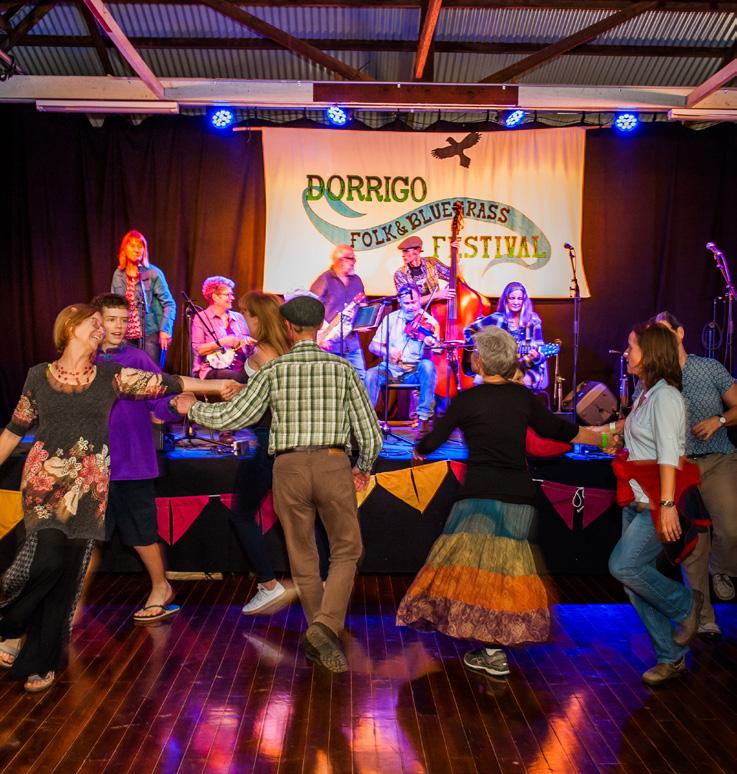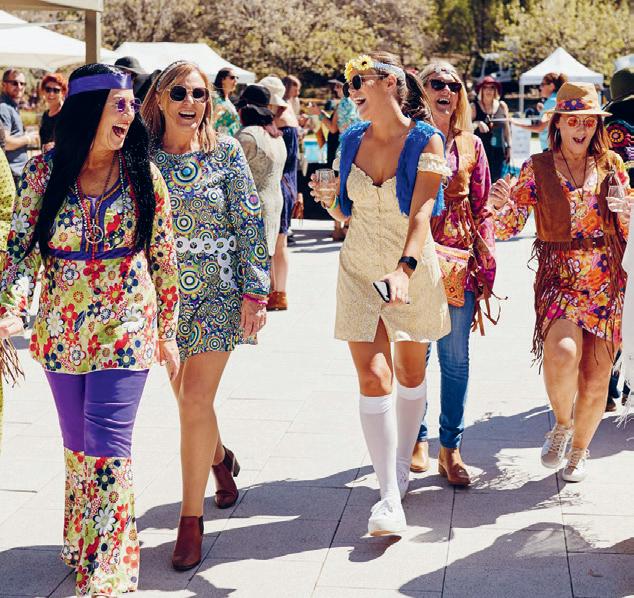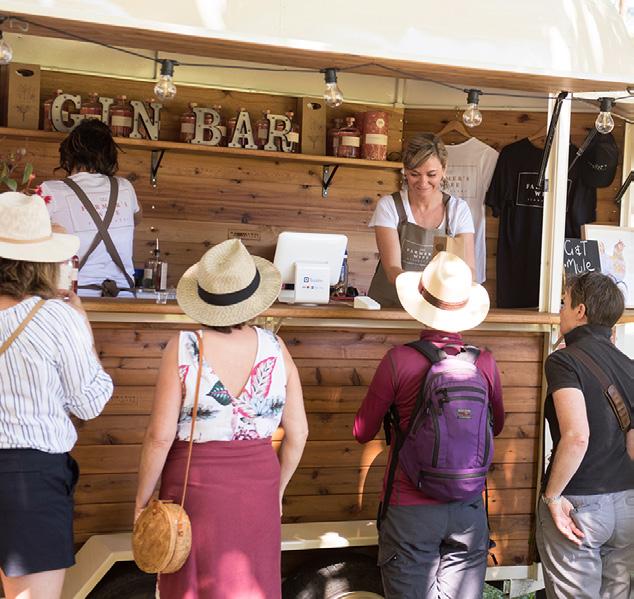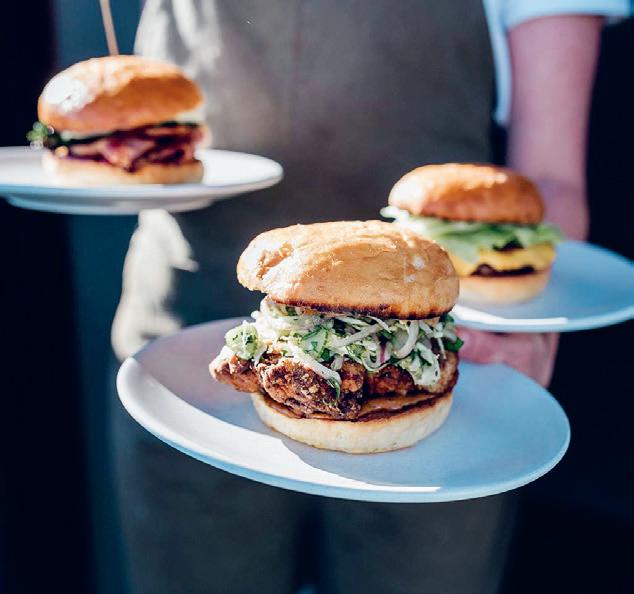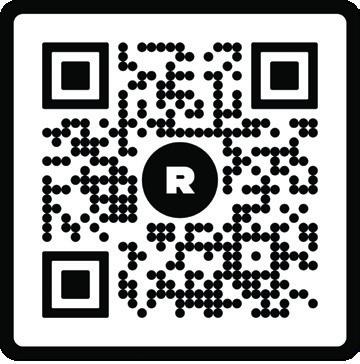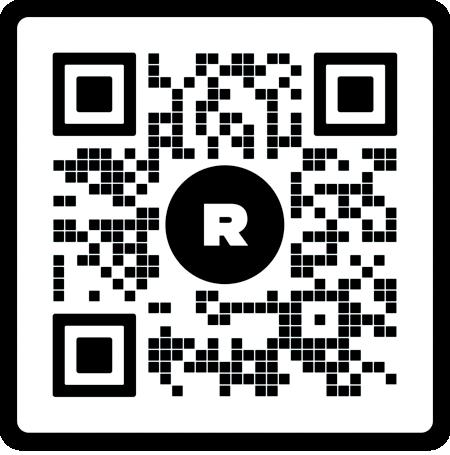












JAMIE-LEE



By Jamie-Lee Garner Glen Innes, NSW
un/conscious is a large-scale artwork that features a mosaic of sixteen brightly coloured Fluffied canvases. The textiles featured are ‘waste’ offcuts that have been donated to Jamie-Lee by Re/lax Remade, a sustainably focused, Sydney-based fashion label that creates wearables out of vintage towels. Each piece of fabric is embedded with the memories of the previous owner, an ode to the generations of families that lived with these towels.
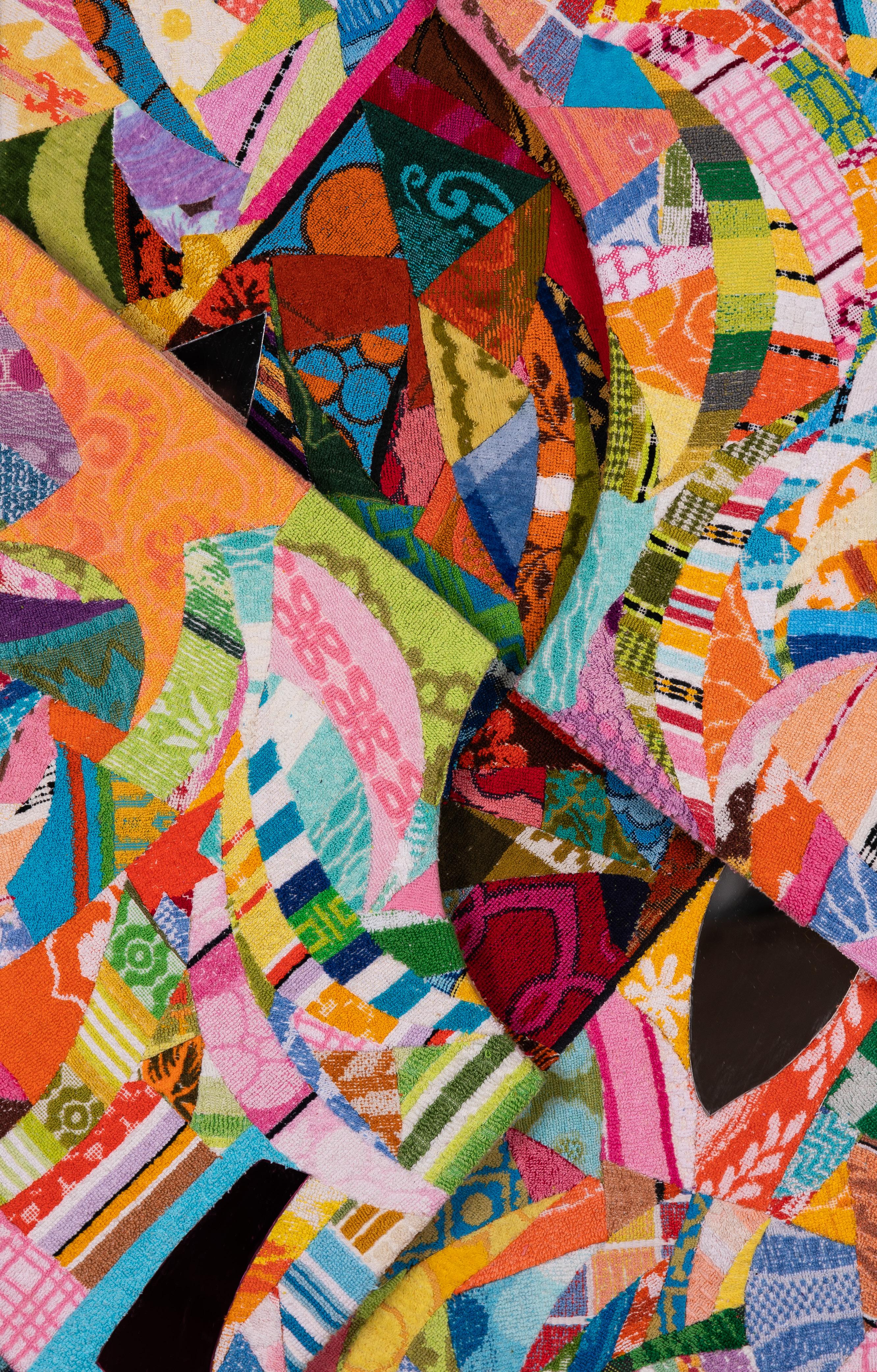
The process of creating un/conscious took Jamie-Lee over nine months and countless pieces of vintage textile offcuts; all while she was pregnant with her first child and coincidentally finding herself doing what has long been considered ‘women’s work’ – working with textiles. The long and rich history of women working with textiles is more than just earning a living; it has always been an accessible way of expressing memories, emotions and experiences.
Jamie-Lee also happens to be our cover feature – head to page 30 to read her story. @jl_gi
FOUND Regional is published by
The Found Media Group PTY LTD
CONTACT US
FOUND Regional
PO Box 2016
Armidale NSW 2350 hello@foundregional.com.au foundregional.com.au
EDITORIAL DIRECTOR
Steph Wanless steph@foundregional.com.au
ART DIRECTOR
Krysten Rhoades-Brown artwork@foundregional.com.au
DIGITAL MARKETING MANAGER
Meg Miller meg@foundregional.com.au
COLUMNIST
Jen Drew hello@jenniferdrew.com.au
PROOFREADERS
Carole Hollebrandse and Elora Wilson
MANAGING DIRECTOR
Martin Wanless martin@foundregional.com.au
PRINTING
Lewis Media Group
COVER PHOTOGRAPHY
Jim A. Barker
© Copyright The Found Media Group PTY LTD 2025 All rights reserved. All material published in FOUND Regional is copyright. No part of this magazine may be used, stored, transmitted or reproduced in any way without the prior written permission of the publisher.
DISCLAIMER: Every effort has been made to ensure that the information in this magazine is correct. The Found Media Group makes no representations regarding the accuracy, timeliness, or completeness of any product or service advertised in this magazine, or any editorial material published in this magazine, and takes no responsibility for any errors or omissions herein.
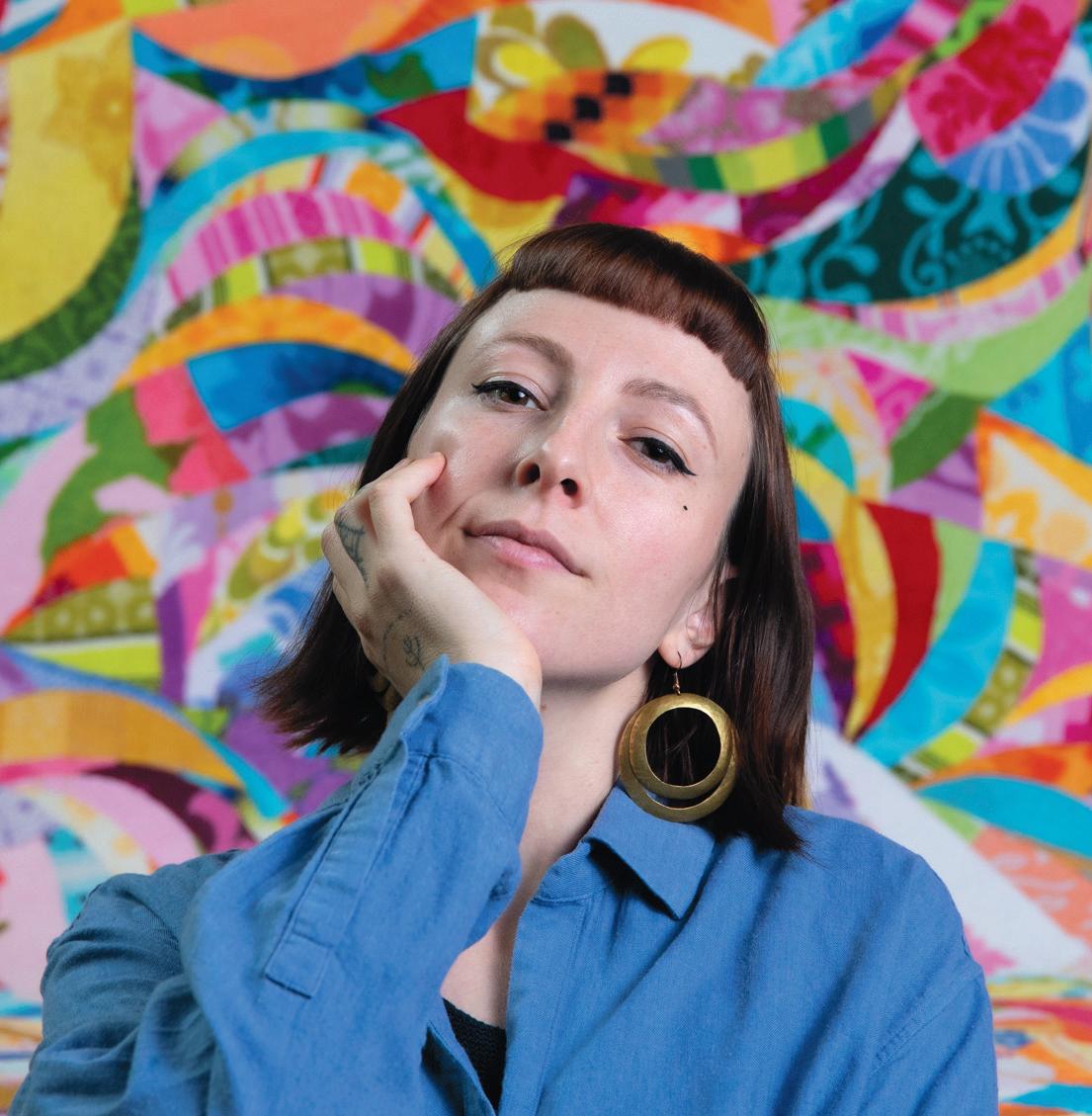
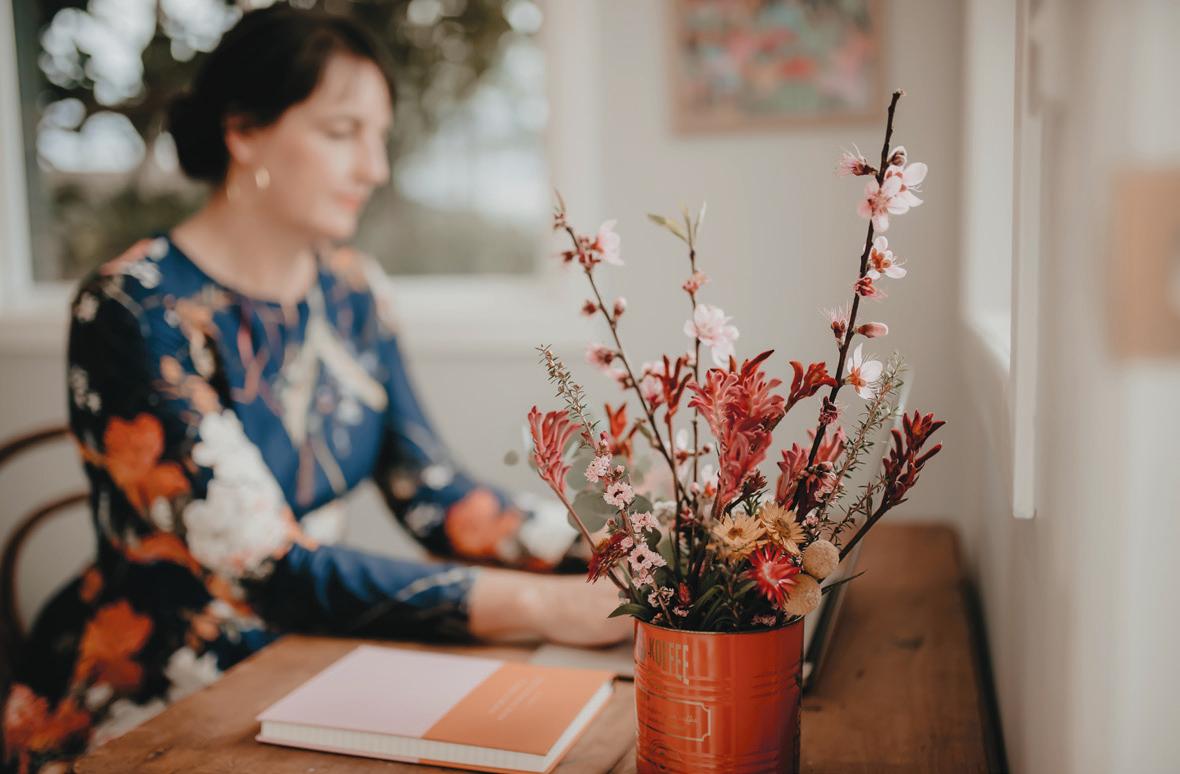


glamorous gremlin – which is both apt and entirely unexpected, much like her story so far.

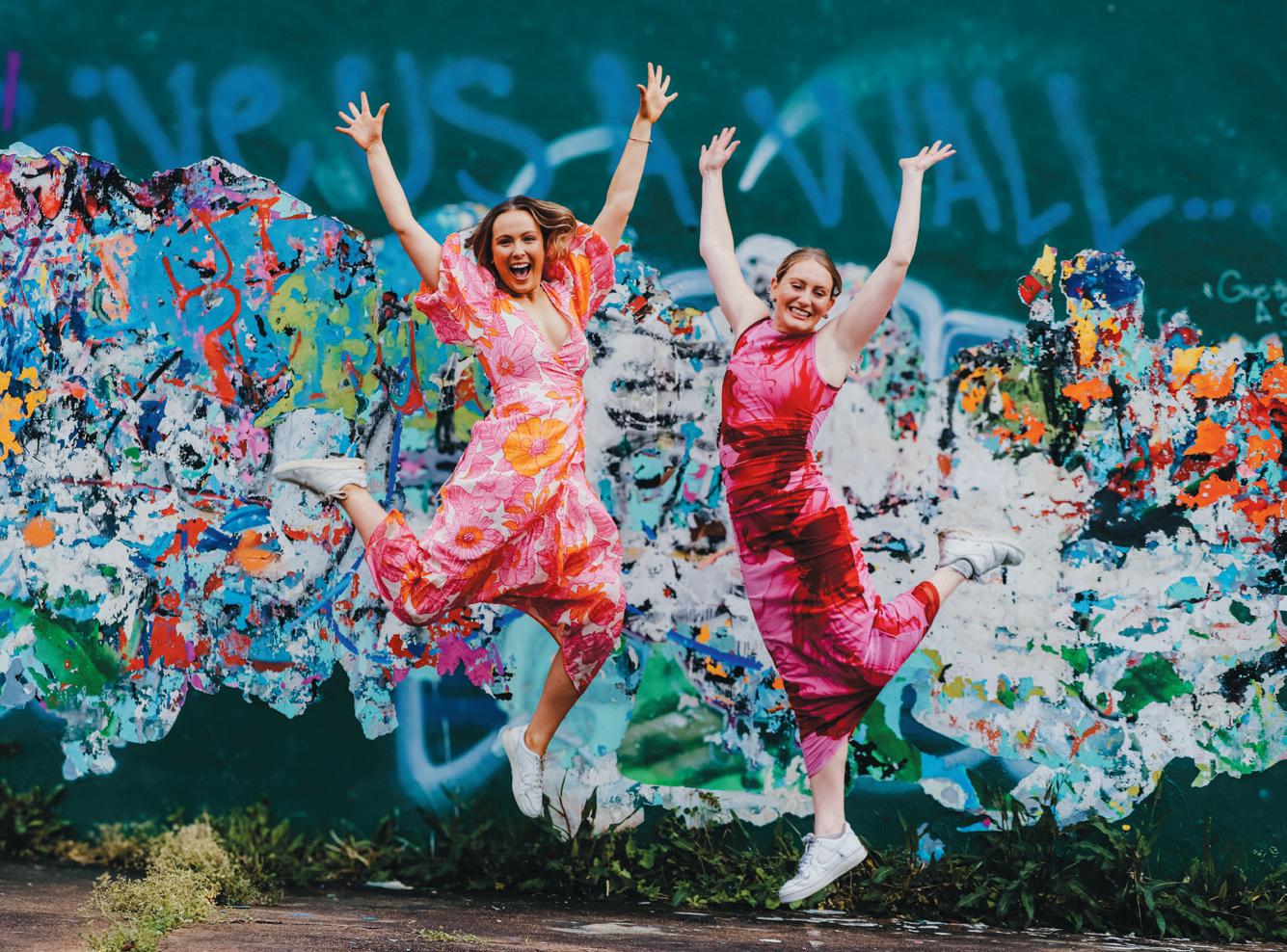

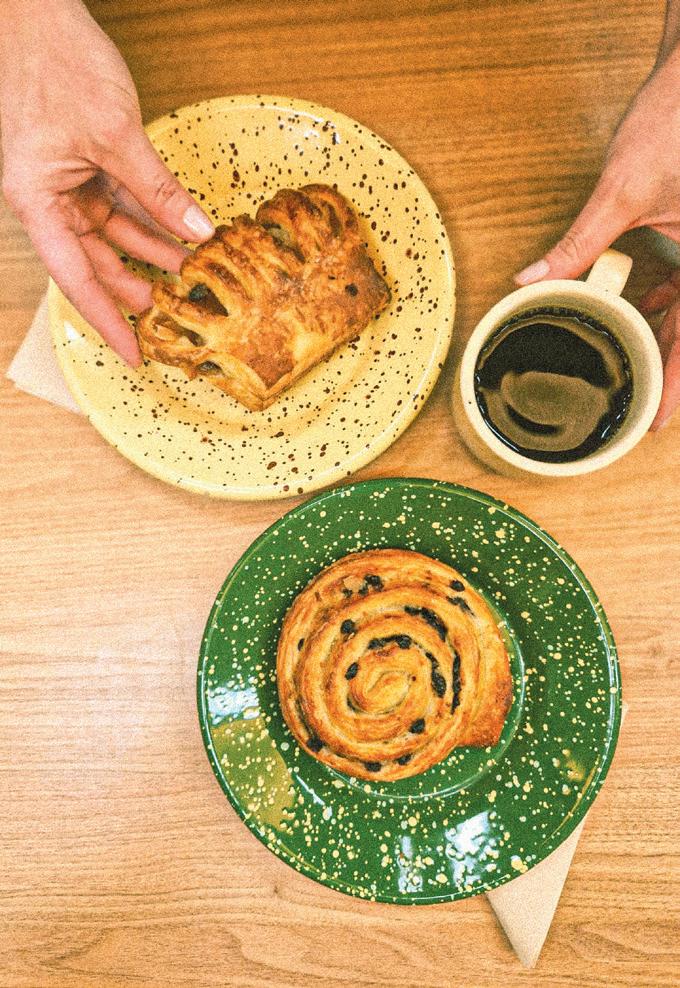
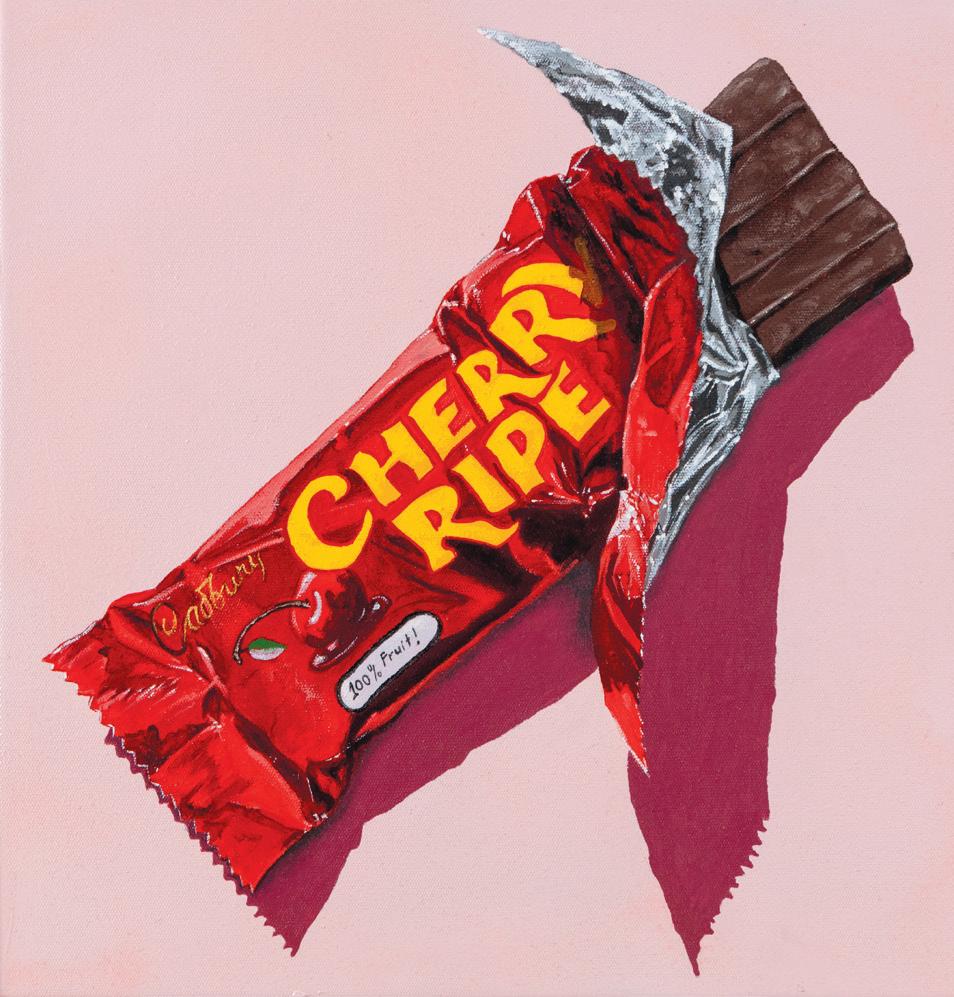

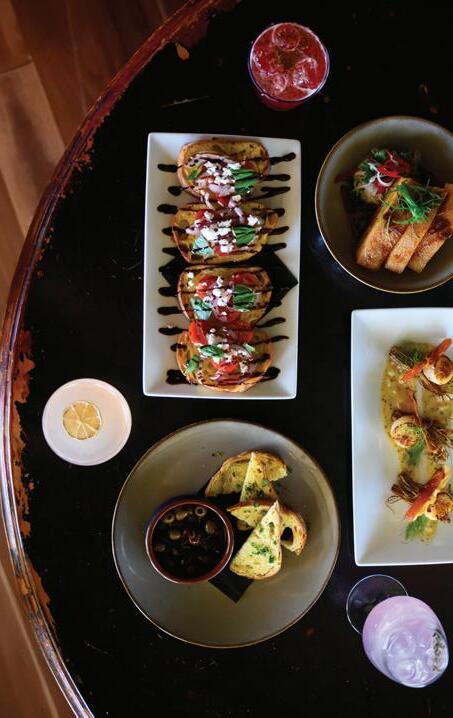
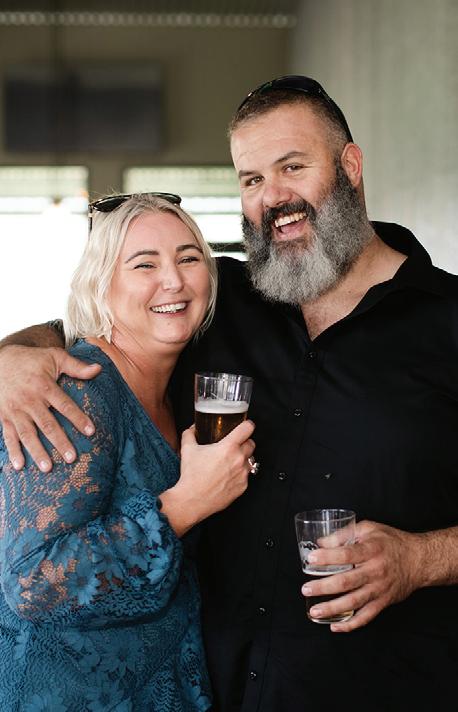
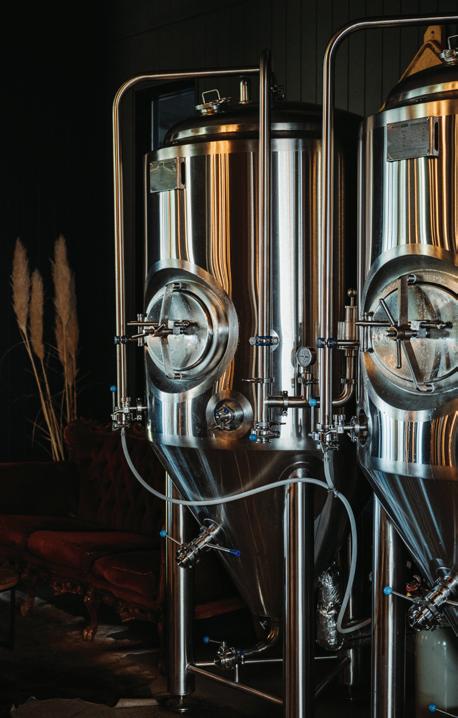
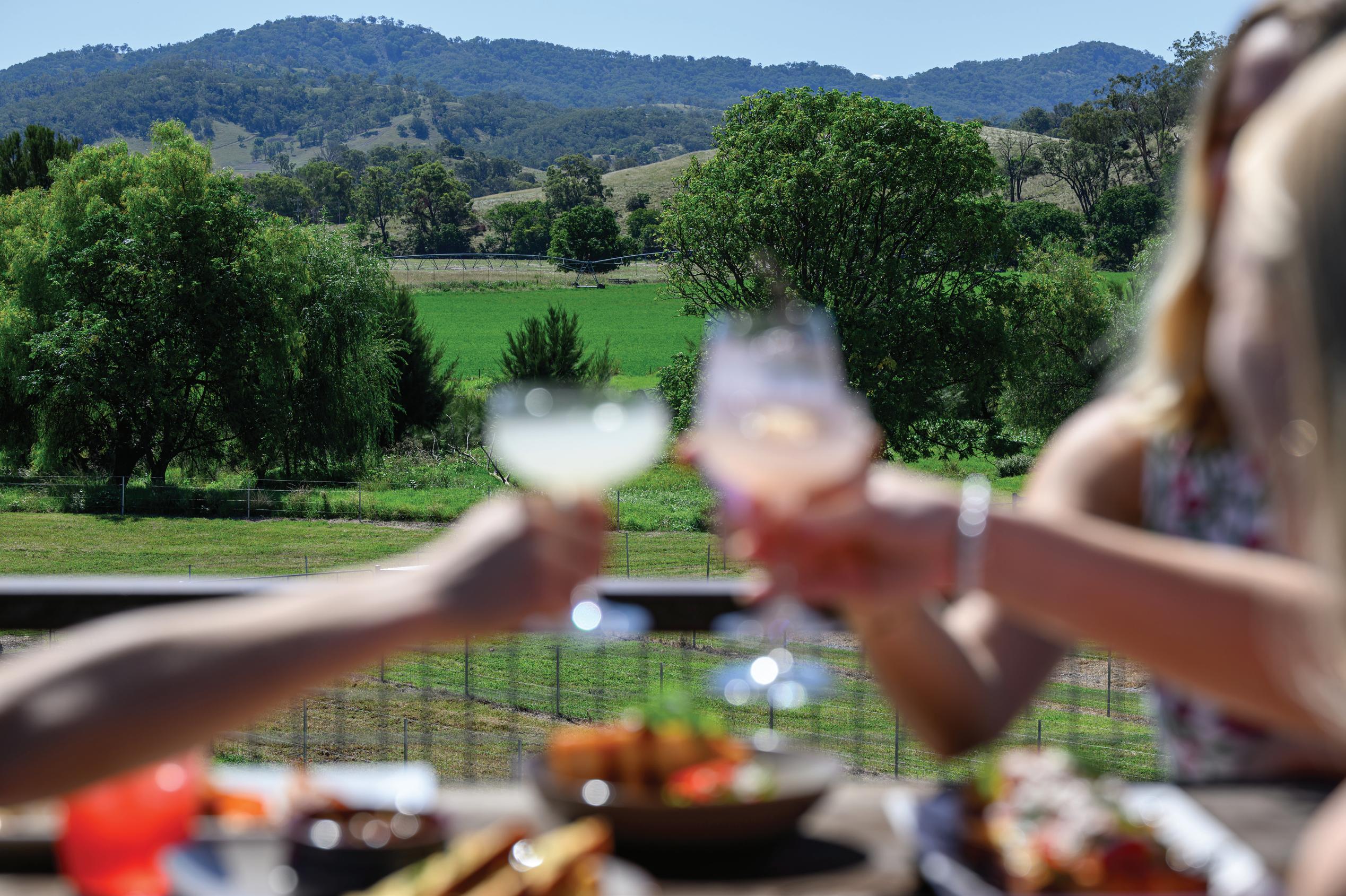
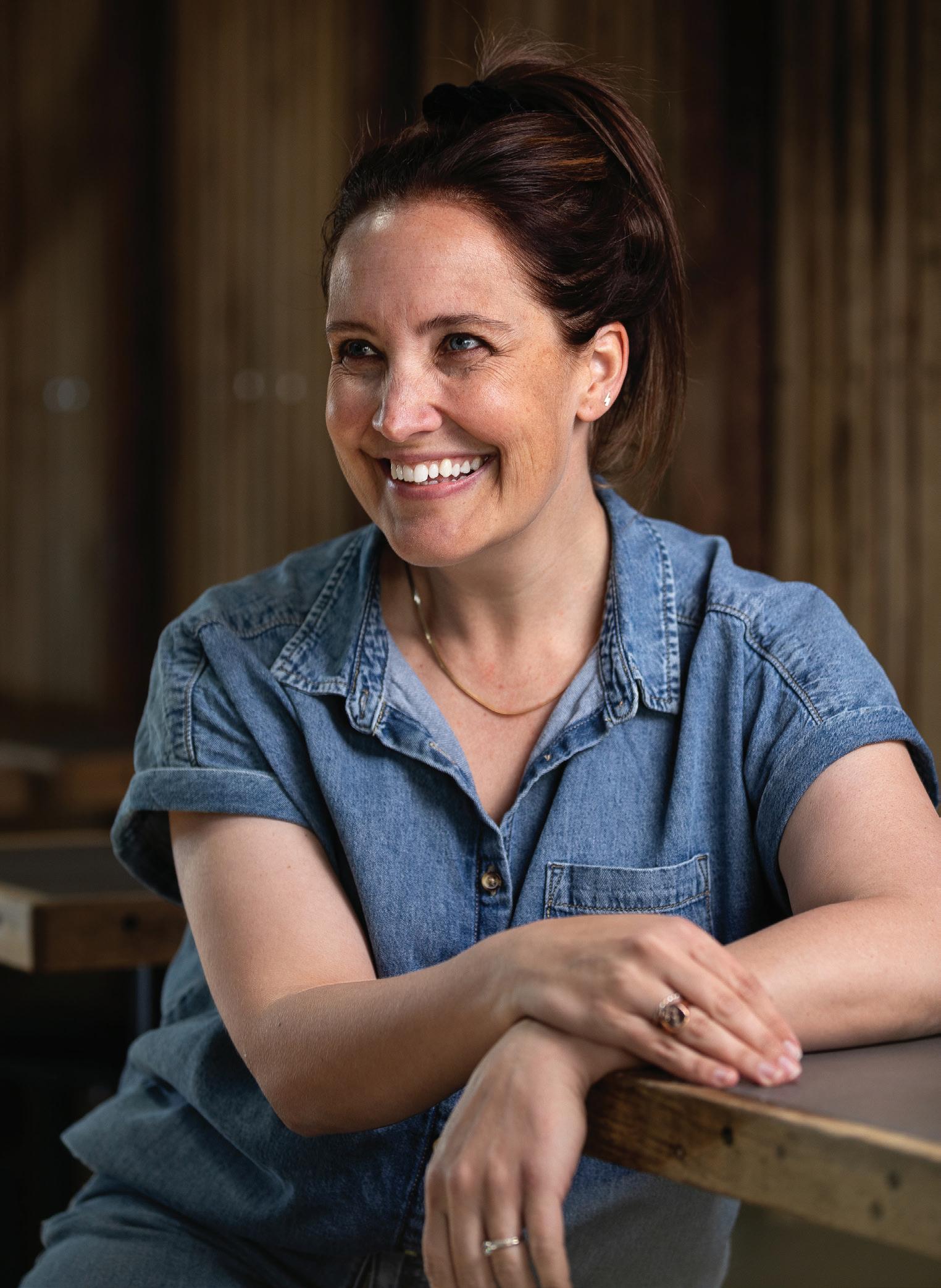
Colour me curious – that’s Jamie-Lee Garner alright. Our issue 10 cover feature is an artist in every sense of the word. Her story so far celebrates her drive and determination, her willingness to experiment, push herself in different mediums and stray from the path of convention. An artist’s life is anything but linear, but it is beautiful, daring and intensely mesmerising. I’m so thrilled to shine a light on Jamie-Lee Garner and everything she’s achieved so far. Head on over to page 30 to discover her tale for yourself.
Other brilliant humans we’re thrilled to shout about in this issue include Coffs Harbour comedian Ben Stevenson, whose midnight radio shifts led to the stand-up stage, Inverell born and bred author Zanni Louise, whose latest work Hazel’s Treehouse has been referred to as a modern-day Winnie the Pooh, and Armidale-based artist Jo White, who has an uncanny ability to capture the nostalgia of life Down Under in her incredible body of work.
Our digital mate REGGIE has also been busy, singing from the rooftops about all the best places to eat, play and stay across our regional home towns.
If you’d like to stay in the loop with that golden wisdom, check out the QR code on the inside back cover and sign up to REGGIE’s weekly enewsletter, DANCE CARD, a curated guide to the best regional events delivered straight to your inbox every Friday morning. Side note, here’s a story. A DANCE CARD was once something women in 18th century ballrooms wore around their wrist so potential suitors could jot down their name for a free dance slot on the night (wowser, how times have changed). These days, our DANCE CARD invites folks to fill their weekends with events, road trips, local foodie finds, boutiques and stays… and to hit the dance floor, because some things never change.
Thanks for being our dance partners, you rock.
STEPH WANLESS EDITORIAL DIRECTOR youfoundreggie.com.au
| ACKNOWLEDGEMENT OF COUNTRY
We acknowledge the Traditional Owners of the land on which we live, learn and work, the Anaiwan people, and pay our respects to Elders past and present. We extend our respect to the Yaegl people to the north and the Gumbaynggirr people to the south, and all the Aboriginal people of this beautiful land we’re lucky enough to call home.
JOSIE ROSE josieroseart.com.au Facebook @josephinerosejr Instagram @josieroseatkinsonflanders
With thanks to Josie Rose, a proud Gumbaynggirr artist, for sharing this stunning artwork, Figure 8 Pool. Josie creates a rich tapestry of Indigenous knowledge and connection to Country featuring vibrant colours with intricate and abstract designs inspired by contemporary expression of wajaarr (Country) and guunuwaygam (life). She regularly facilitates creative workshops at Yarrawarra Aboriginal Cultural Centre and recently successfully showcased her inaugural solo exhibition, ‘Bower Bird’, at the Wadjar Regional Indigenous Gallery.
“This special creation depicts one of the iconic figure 8 pools in Dharawal National Park. The piece captures the bright colours, shapes, contours and symbolism of the feminine nature of gaagal (ocean), the Gumbaynggirr totem. This represents the sun illuminating a plethora of underwater sea creatures in all their intricate and beautiful splendour in the circle of life.”
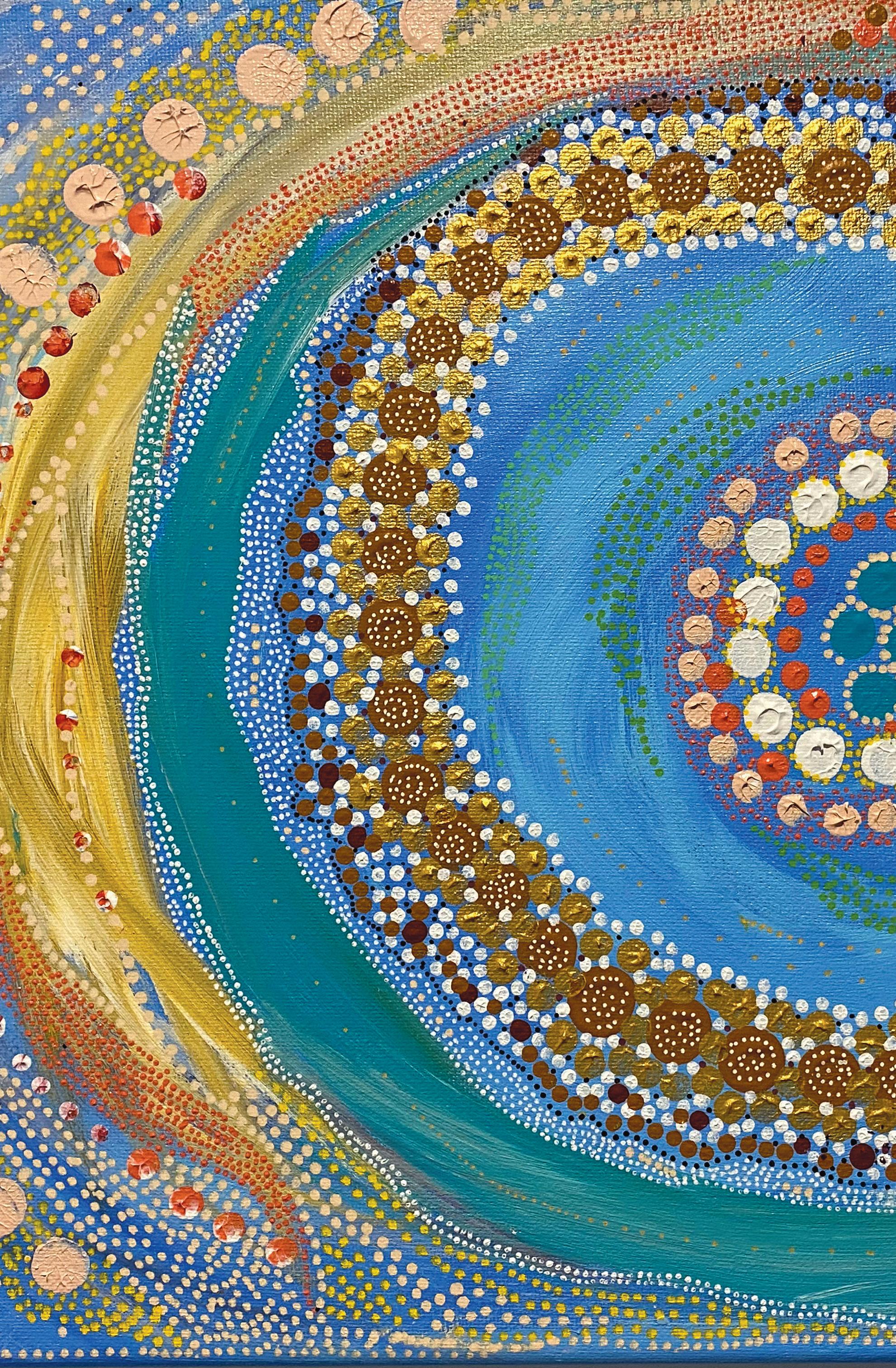
Look for the good, the helpers, the folks who are here to make the world that little bit better.
Like 14-year-old surfer Teo Martin who didn’t hesitate for a second when he saw a mate and a second man caught in a rip at a northern NSW beach, saving both their lives before paramedics even arrived. Same goes for Asda delivery driver Leandro Pinto Dantas who took the time to double-check on a customer after she failed to answer the door, ultimately guiding paramedics to her lounge room where the diabetic woman was found passed out on the floor. Luckily, some glucose did the trick.
Look to a daredevil cat named Thoth who goes on parachute-skiing adventures with his own tiny helmet, or to Rocco the parrot whose owner had to remove an Alexa speaker from her home after she caught Rocco secretly ordering snacks from Amazon (#spiritanimal).
Look to 96-year-old Brian Heydon, who just hosted his first solo art exhibition in Castlemaine, Victoria, since taking up painting again after spending decades as a lawyer, or to Hilda Jackson, who recently celebrated her 105th birthday with a rave. She swapped her walker for glowsticks, welcomed rapper Bru-C to entertain her guests and served Jägermeister.
Look to the Polish police who foiled the kidnapping of two dogs by tracking down the location shown in the ‘proof of life’ photograph sent to the owner (along with a ransom demand of one million Swiss francs!), and to Dana Glowacka, a Canadian woman who can hold an abdominal plank position for four hours, 19 minutes and 55 seconds.
And finally, look to Denika Wyngaarden, who was fed up with pub life being the main way for women in regional Australian towns to socialise. Instead, she laced up her boots and founded an all-female hiking group called Bitches Who Hike. Turns out not all heroes wear capes…. Some wear hiking boots.
That’s a whole lot of good. Cheers to that.
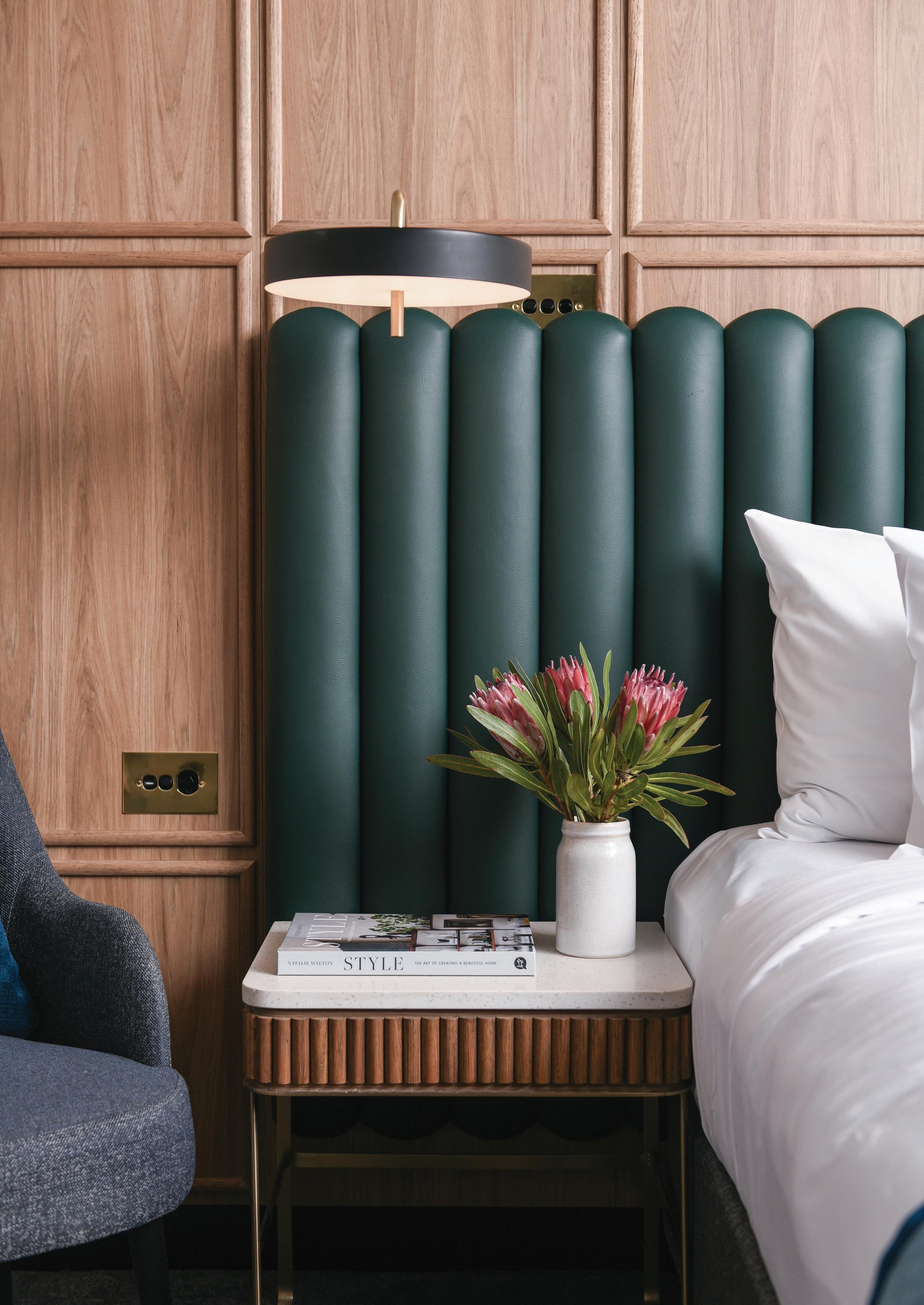
Armidale, NSW
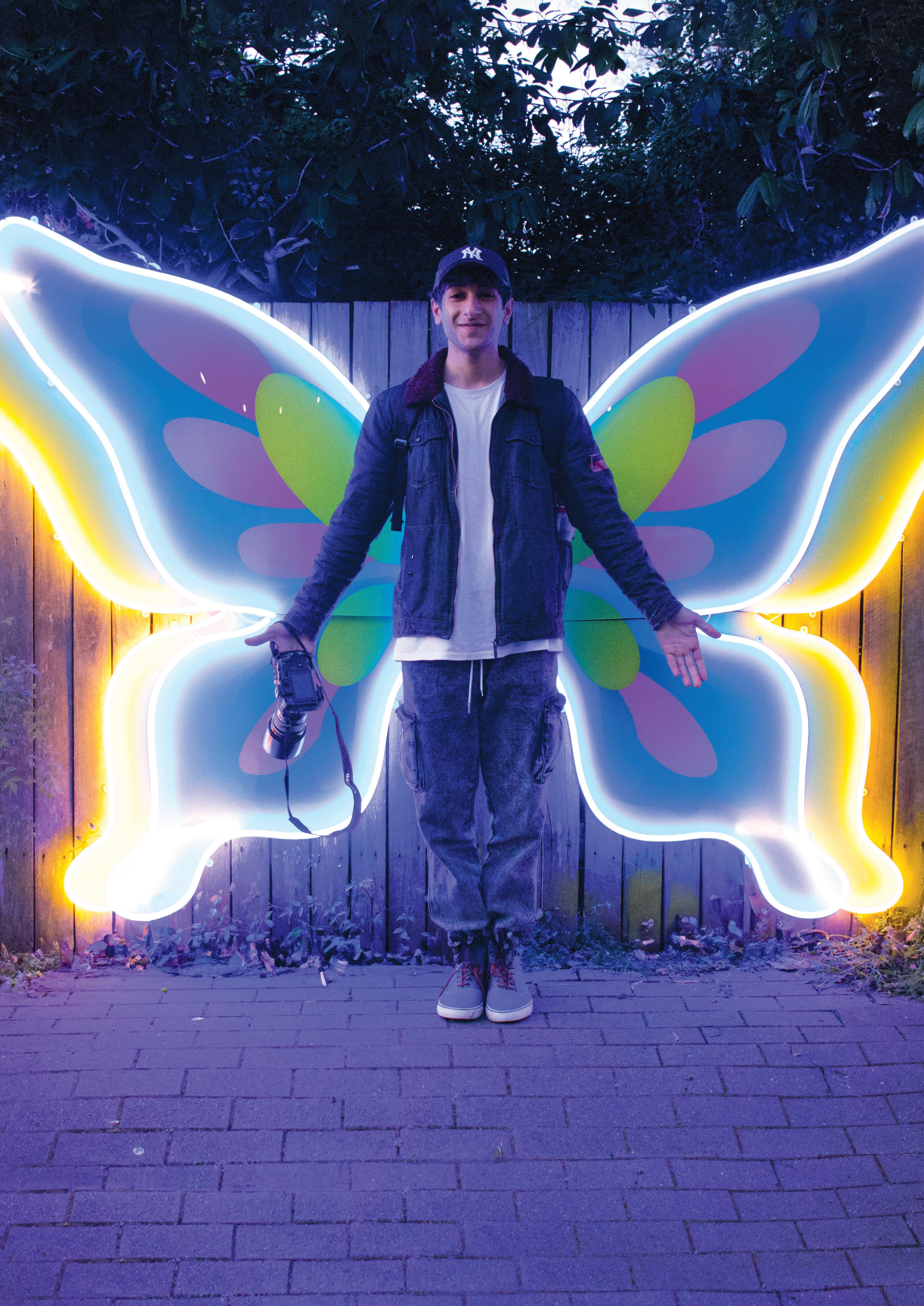
My name is Rami and I am a 23-year-old Ezidi man. I was born and raised in Sinjar in northern Iraq. When ISIS attacked the city in 2014, we had to leave our home and were displaced in Duhok for nine years before we arrived in Armidale in late August 2023. I am currently studying English at TAFE and working hard to improve my language skills and find a job to support my family and provide for our life here. I love the beautiful landscapes, cleanliness and educational opportunities in Armidale.
I’ve been interested in photography since childhood – it allows me to express my creativity and show the world my own perspective. Photography can be a way to interact with others and share stories, while helping us pay attention to the small details in the world that we might otherwise miss. It allows us to see our environment in a new and different way and enjoy the beauty that surrounds us every day. RAMI AL-ALI
@ramialaliphotography
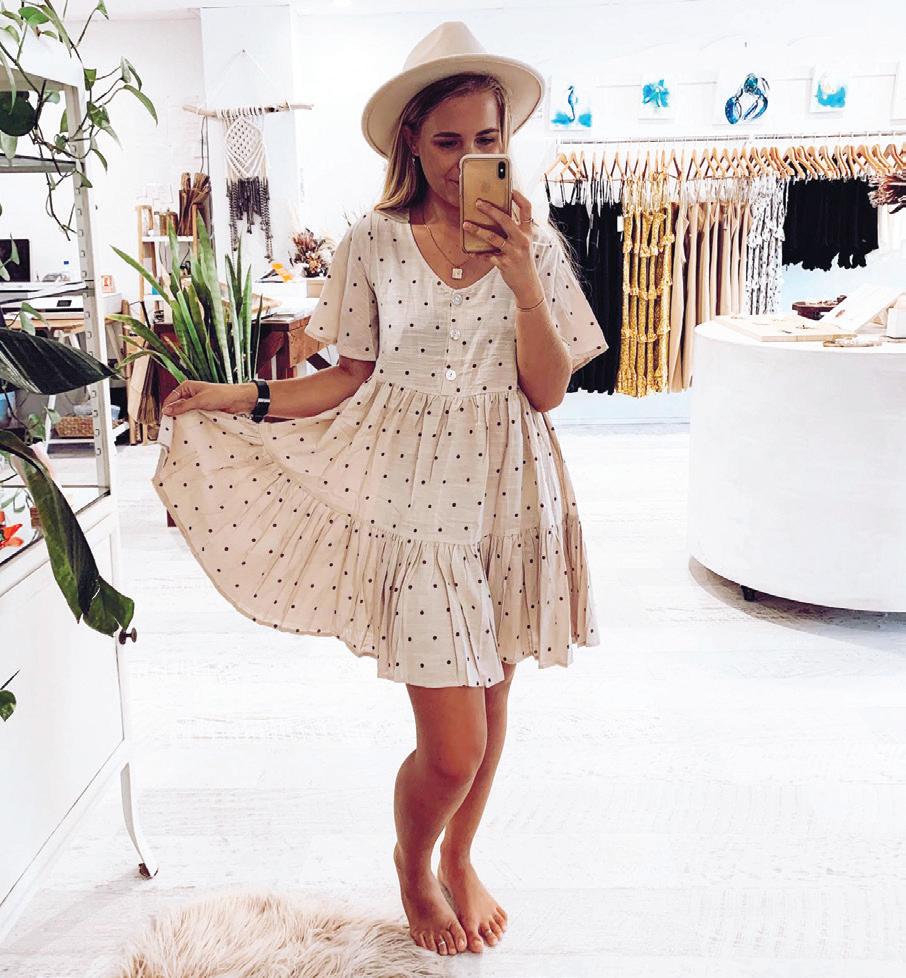

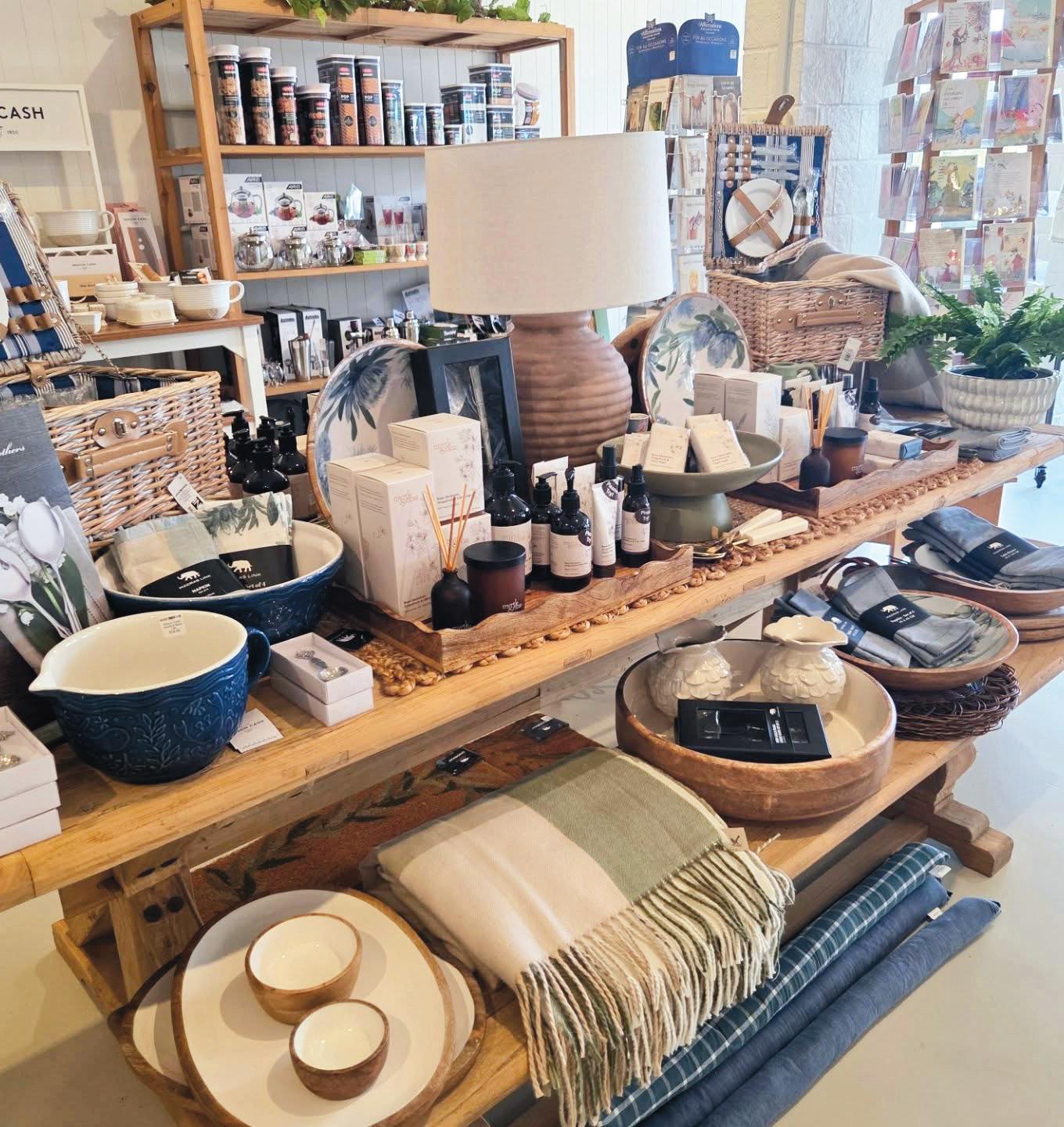
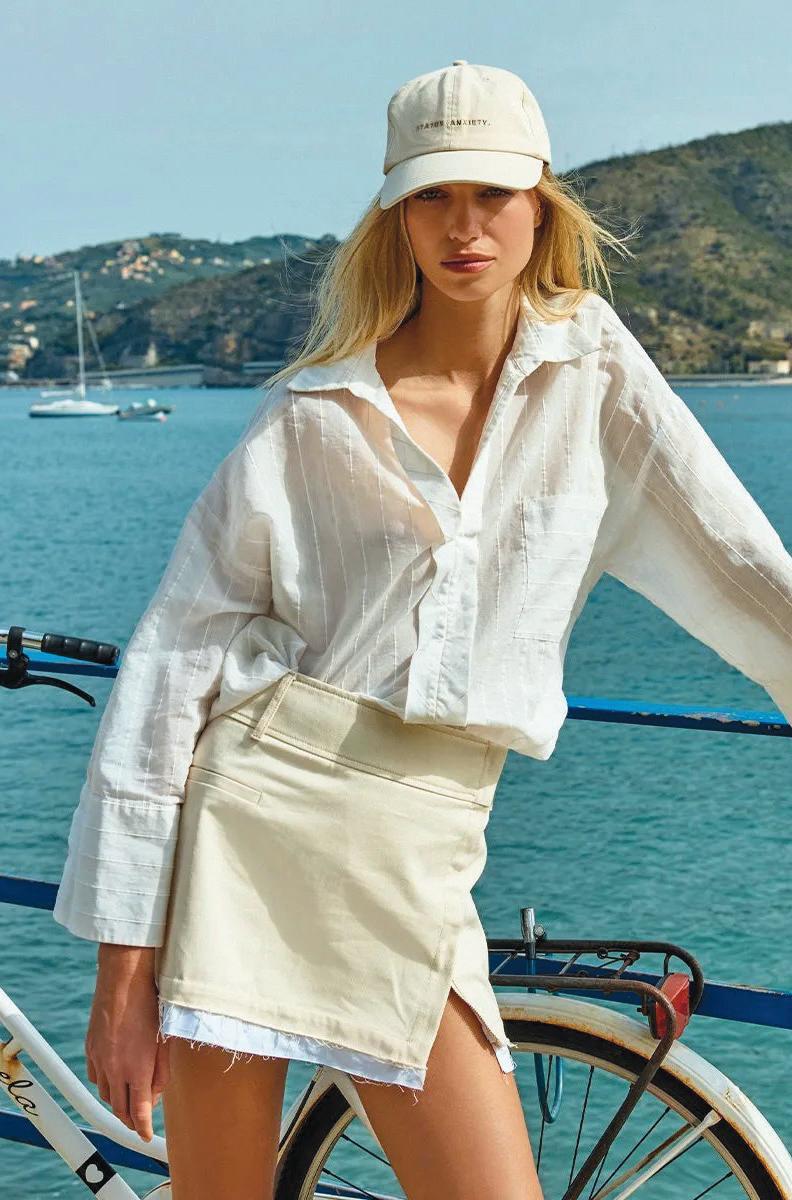
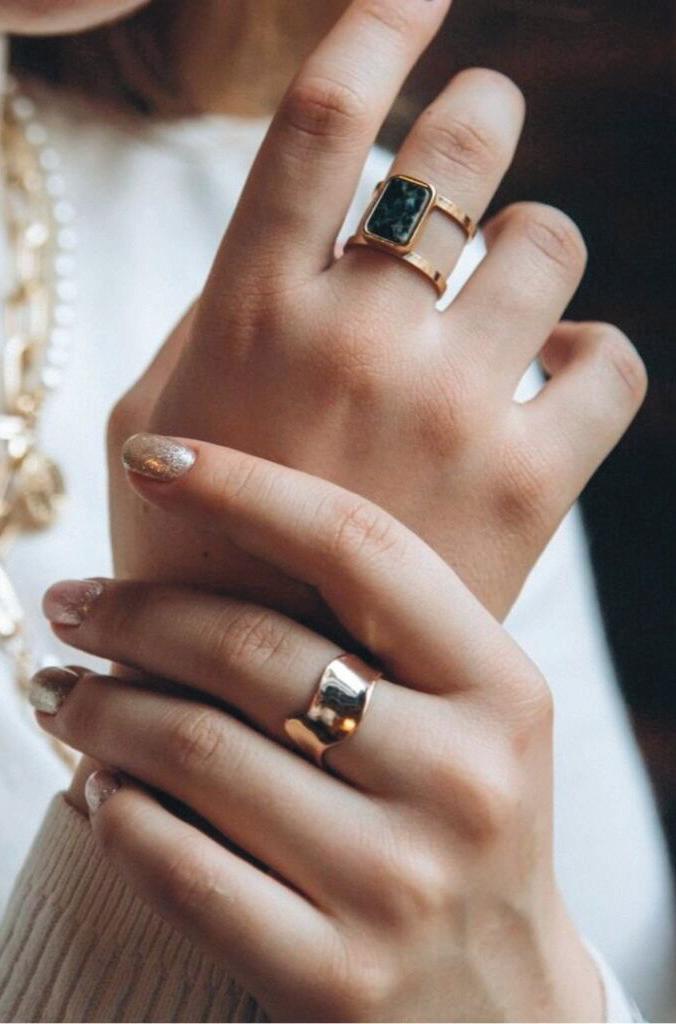
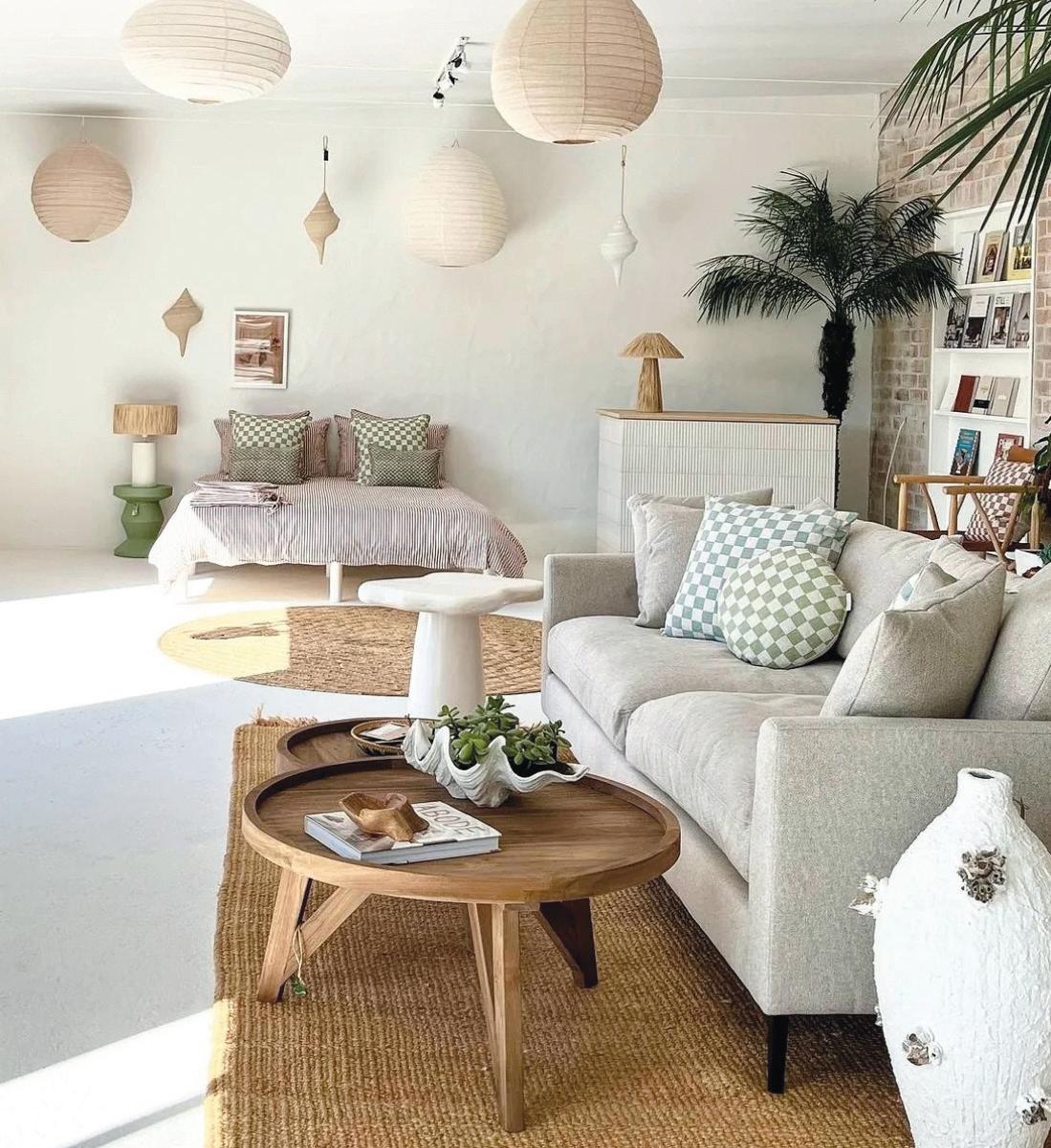
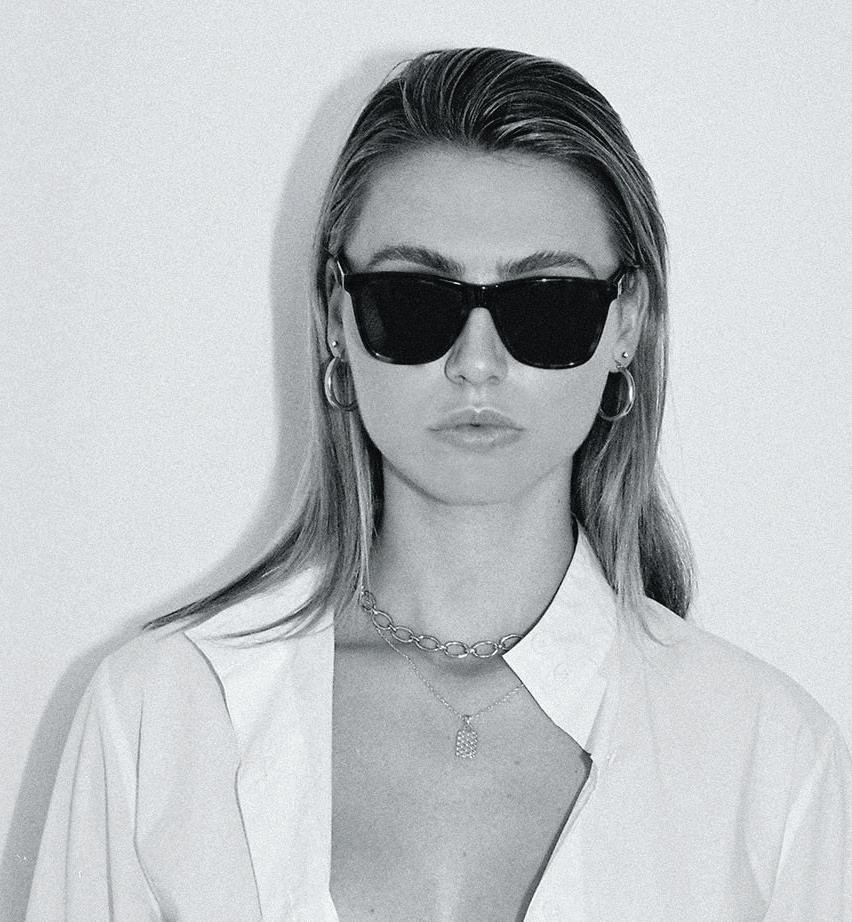

1. FIRST AVENUE BOUTIQUE – SAWTELL
From beautiful dresses for your next special occasion to laidback beach fashion perfect for a weekend by the seaside, First Avenue Boutique stocks a range of clothing and jewellery pieces that are sure to bring a burst of colour and comfort to your wardrobe.
@firstavenueboutiquesawtell
2. FEATHER & NEST – WOOLGOOLGA
Welcome to Feather & Nest Woolgoolga, a carefully curated selection of divine gifts, homewares, fashion and so much more. Steal time to discover the latest beautiful pieces from the likes of Jones & Co, O.B. Designs, Status Anxiety and Halcyon Nights. featherandnest.com.au @featherandnest_boutique
3. ISLAND COLLECTIVE – YAMBA
Browse through Island Collective’s exclusive range of artisan homewares and accessories, including much-loved brands like Aloha, Jones & Co and Blacklist Studio. With a background in interior design and fine art behind the brand, Island Collective also offers an interior styling service for renovations, new builds or refreshing an existing space. islandcollective.com.au @islandcollective
4. WHAT DO YOU THINK MISS WINK – DORRIGO
Found in the beautiful countryside town of Dorrigo, NSW, What Do You Think Miss Wink offers a carefully curated selection of unique gifts, homewares, jewellery and more thanks to owner Tracey. Be sure to stop by and say hello next time you’re in town! @miss_wink
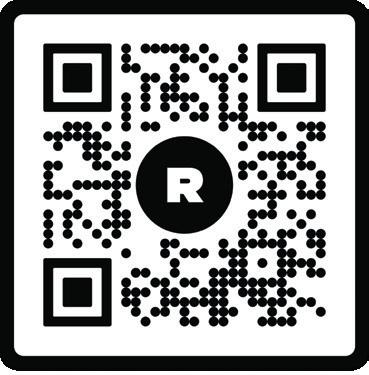
Discover more places to shop on REGGIE.
5. THE OTHER SHOP – SOUTH WEST ROCKS
Established in 2013, T•O•S (The Other Shop) is a luxe boutique showcasing a carefully curated collection of Australian and international clothing and lifestyle brands. Need a bit of a helping hand when it comes to choosing your next outfit? Stress not. T•O•S have in-house stylists ready and raring to assist you in elevating your unique style. theothershop.com.au @theothershop_xx
6. WILLY WAGTAIL HOMEWARES – COFFS HARBOUR
This rustic-style store is a great place to find bits and pieces that will add character and warmth to your home and garden. Take a moment and browse through the store’s collection where you’ll find stunning ceramics, candles, soaps, soft pyjamas, pillows, bags, linens and more. @willywagtailhomewares
7. REGARDE JEWELLERS – ARMIDALE
Regarde Jewellers provides a warm and welcoming environment where you can look through beautiful pieces without constraint. Jermaine and Richard cater to various budgets with a down-to-earth and considerate approach. From custom-made jewellery to expert watch repairs, Regarde Jewellers supplies a refreshing balance between elegance and affordability. regardejewellers.com.au @regardejewellers
8. WOOD WE CREATE – WALCHA
Wood We Create is home to the incredible works of artist David Barden, who has taken his skill at woodturning and created an art form. Drawing on the beauty of nature, David creates fine turned homewares, sourcing stimulation from the wood itself along with the landscape the wood grew in. woodwecreate.com.au
@woodwecreate

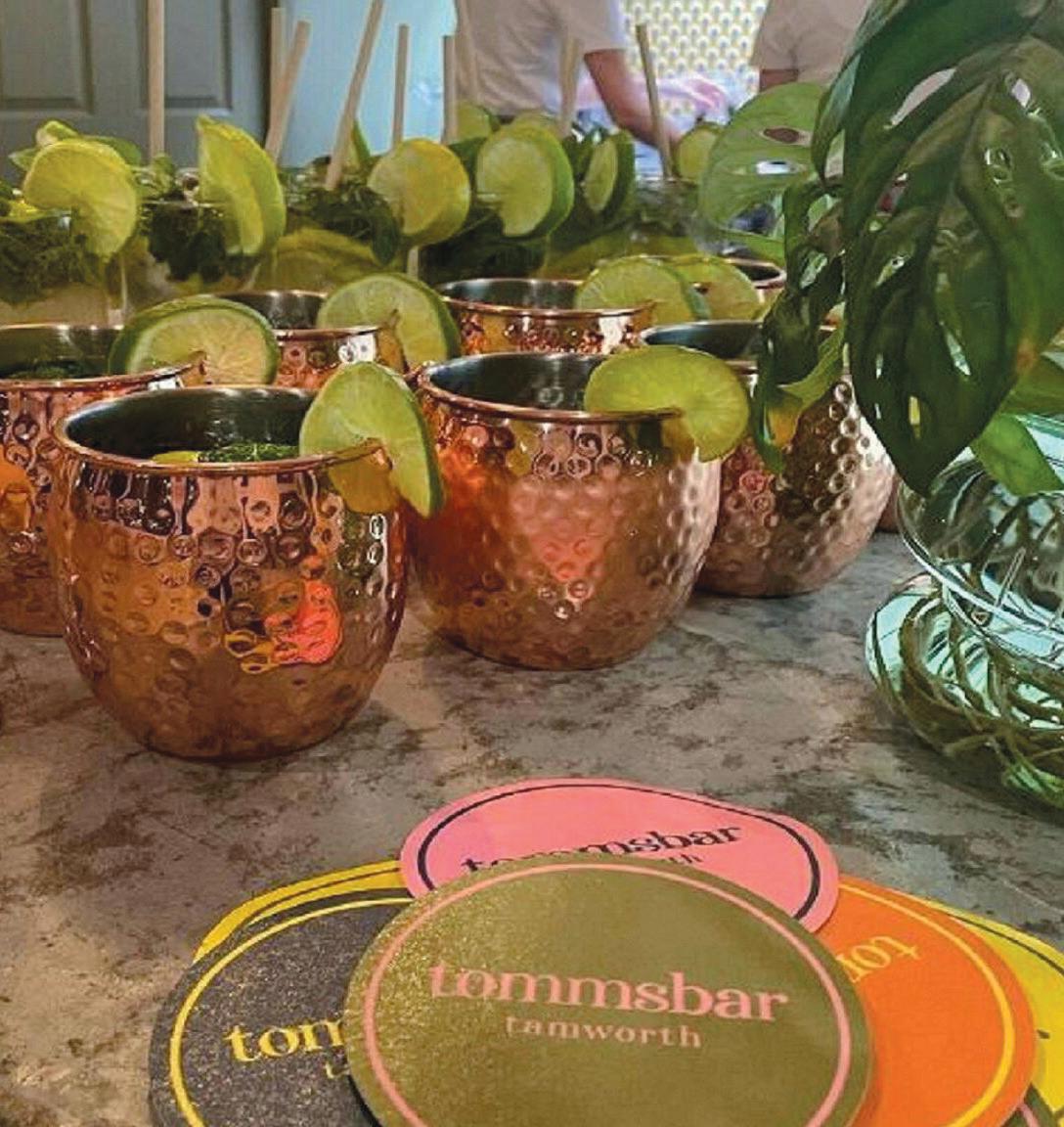
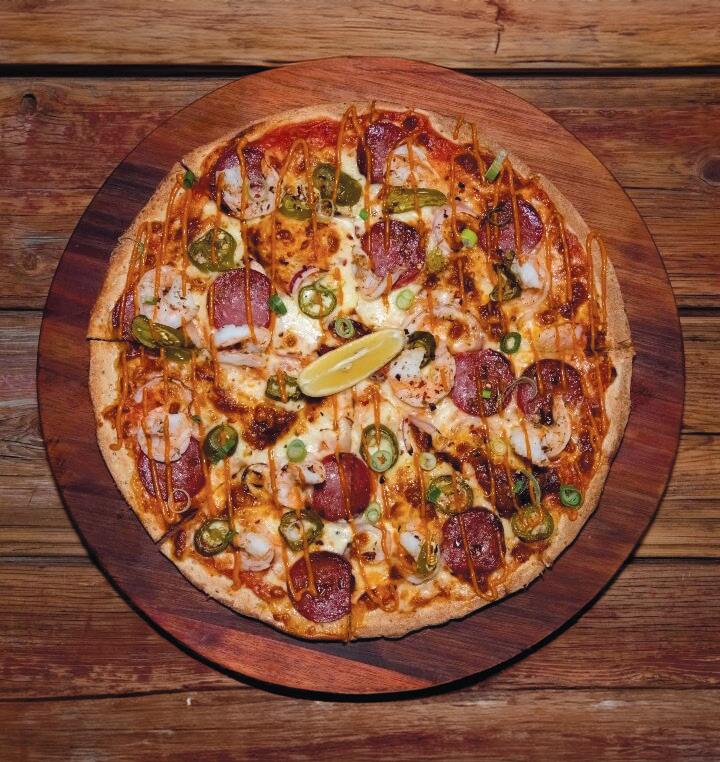
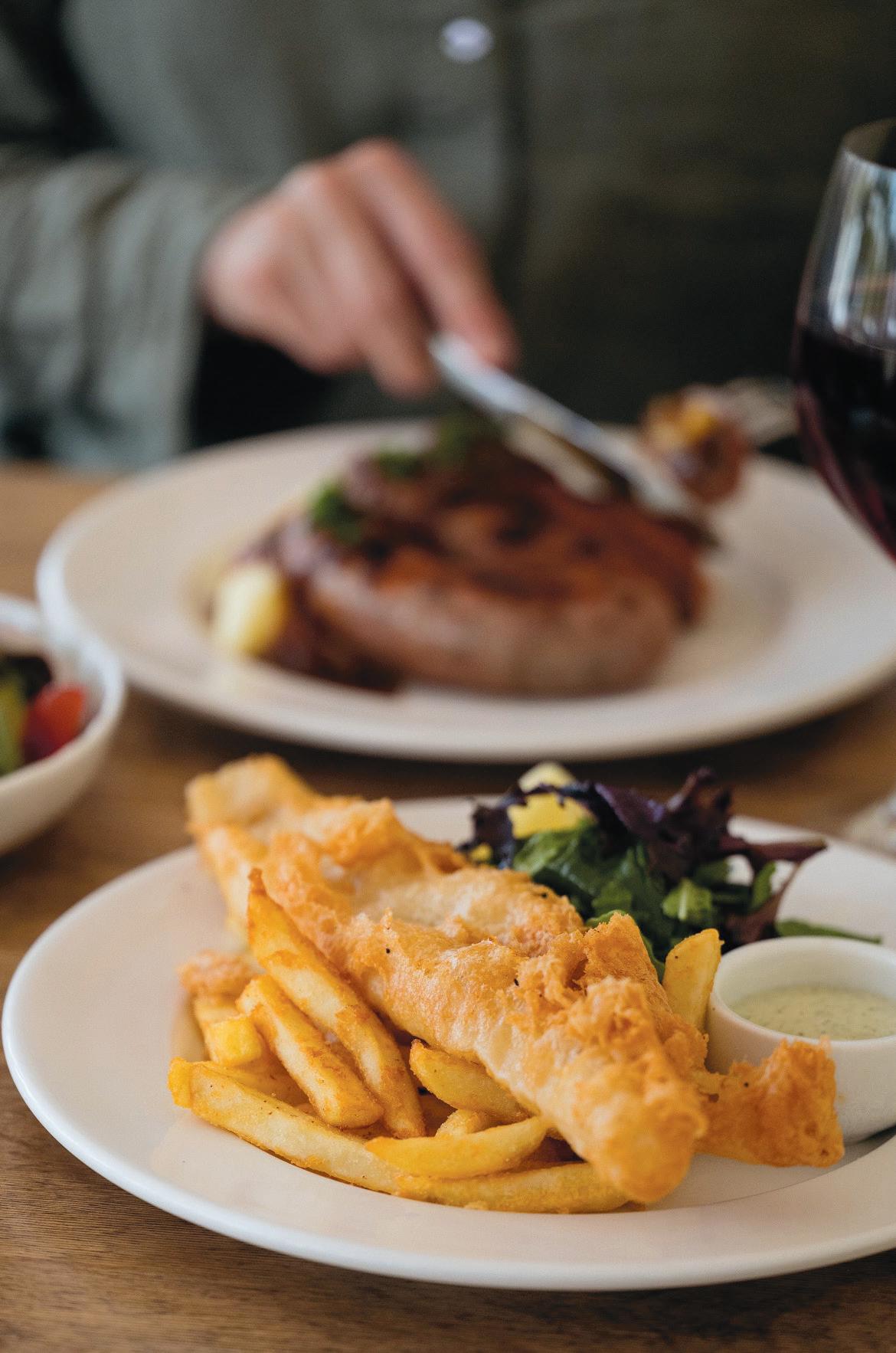
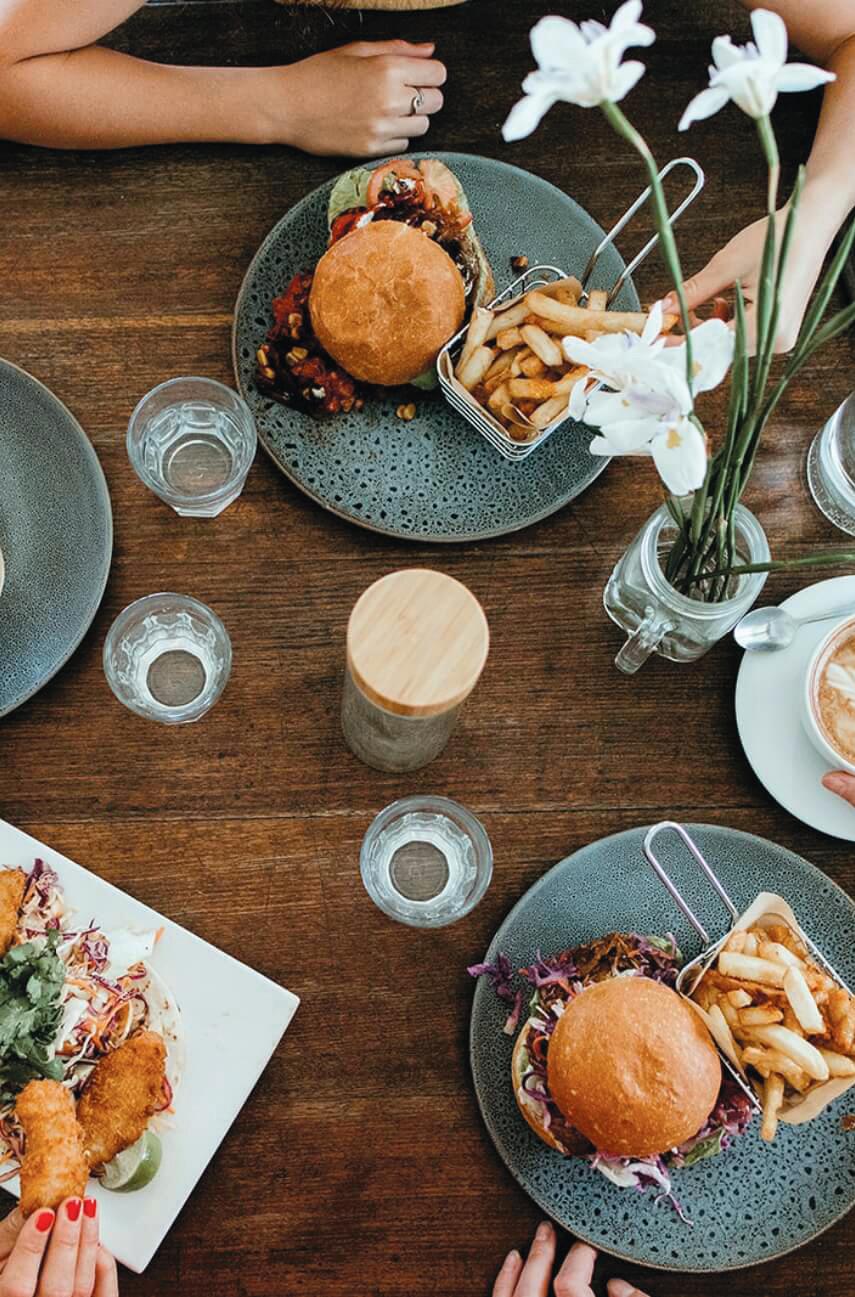
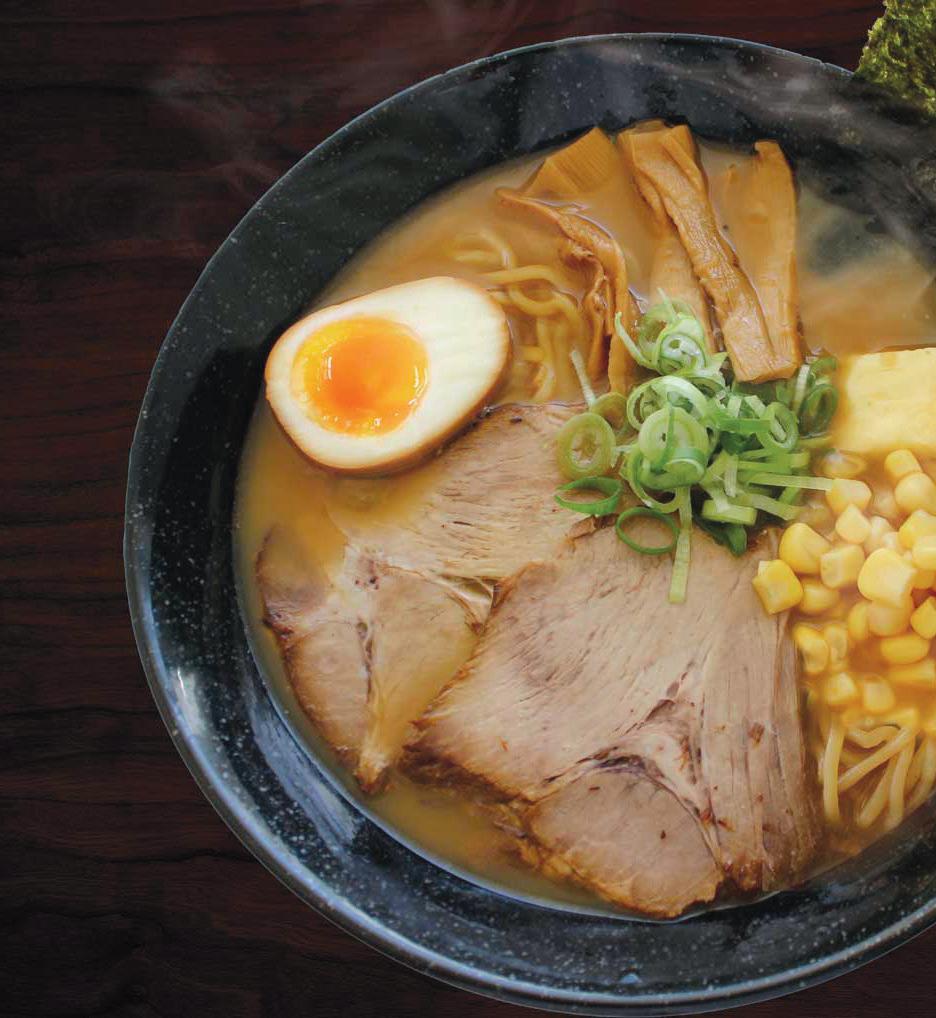
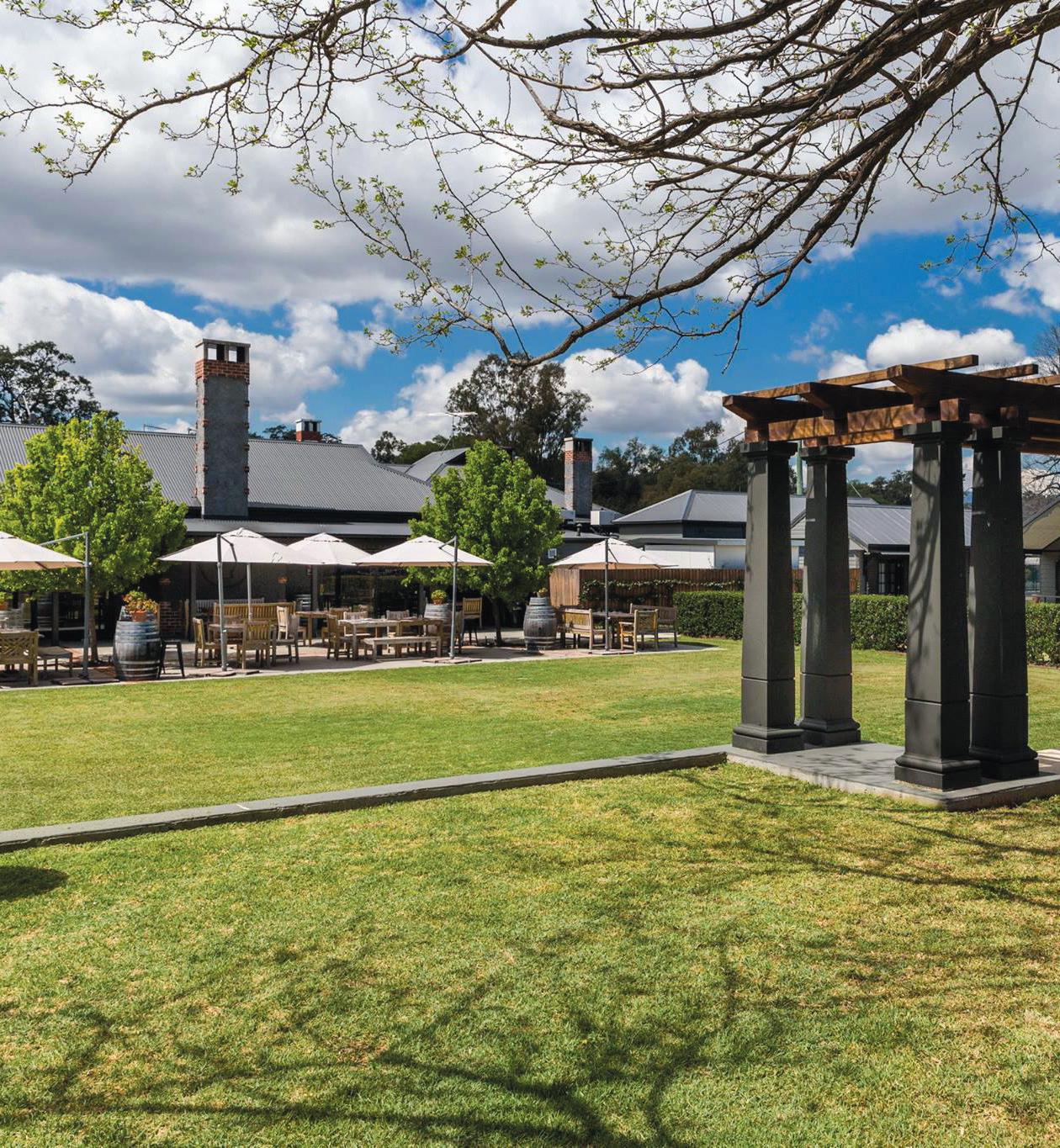
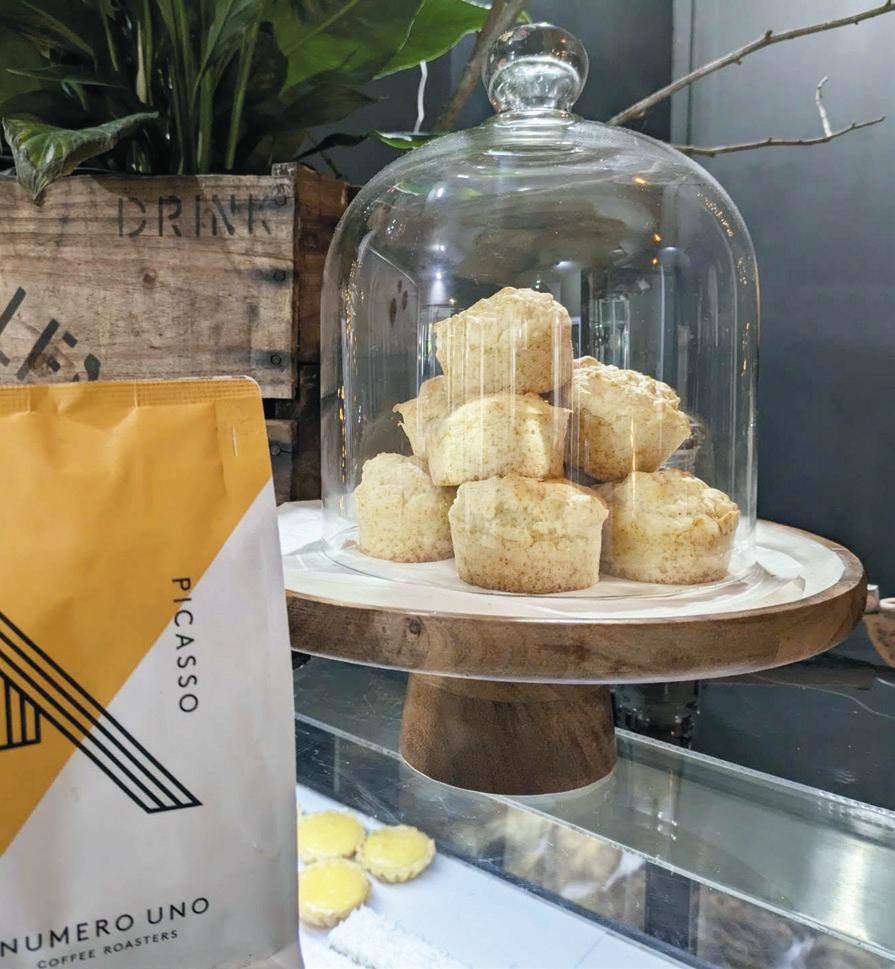
1. TUMBL. – ARMIDALE
Stroll on down the Beardy Street Mall and you’ll find the TUMBL. team serving up a whole range of fro-yo flavours and sweet treat toppings. Simply select your flavour, add your topping, weigh your selection to pay and be on your merry fro-yo way. Happy days!
@tumblfroyo
2. THE BOLT INN – URALLA
Starting life in 1909 as the Imperial Hotel, The Bolt Inn is a historic Victorian-style hotel and pub found in the centre of Uralla. Today, it’s renowned for its warm hospitality and cosy vibes, delivering a welcoming place for folks to ‘eat, drink, stay and play’ in this picturesque country town. theboltinn.com
@theboltinn
3. RAMEN GO – COFFS HARBOUR
Ramen Go promises hearty, delicious Japanese ramen using only the best ingredients – we’re talking about their homemade broth, free-range eggs, organic soy milk and Celtic sea salt. Searching for a vegan option? They’ve got you covered on that front too.
ramengo.com.au
@ramengo_official
4. TOMMS BAR – TAMWORTH
Nestled in the heart of The Heights, Tamworth, Tomms Bar invites you to catch up with friends over a bottle of wine or perfectly crafted cocktail. This must-visit space, created by Sally Clifton of Pronto Catering, includes plush couches and cosy nooks alongside an outdoor terrace – delivering a little slice of paradise for weekend hangs or special celebrations.
@tommsbartamworth
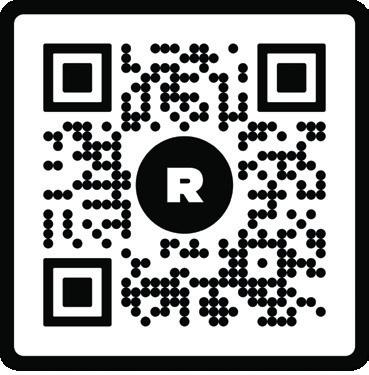
Discover more places to eat on REGGIE.
5. GRAZE AT THE WILLOW TREE INN
Providing a high-quality dining experience to locals and travellers from all over the country, Graze is best known for their locally grown, dry-aged Black Angus beef. The restaurant has been named ‘Best Country Restaurant’ and ‘Best Steak Venue’ for a number of years by the Australian Hotels Association. grazewillowtree.com.au @graze_willowtreeinn
6. PILOT STATION PIZZA – SOUTH WEST ROCKS
Locally owned and operated by Lance and Bec Laws, Pilot Station Pizza serves up (you guessed it) pizza, pasta, ribs and wings all made to order using quality ingredients. We recommend ordering in advance during busy periods (like school holidays!) to ensure your dinner is ready to roll when you are. pilotstationpizza.com.au @pilotstationpizza
7. THE BEACH HOUSE PROVIDORE – VALLA BEACH
The Beach House Providore provides great coffee, fresh local produce, delicious takeaway and a relaxed beach vibe that doesn’t care if you’re wearing shoes or just wrapped in a towel on your way home from a swim in the ocean. beachhouseprovidore.com @beachhouseprovidore
8. GROUNDED CAFE – ARMIDALE
Serving great coffee, yummy blends of tea and tasty treats, Grounded Cafe is known for providing friendly service and a beautiful space to relax and enjoy a cuppa with friends. Located inside the Armidale Plaza, Grounded Cafe also sells beautiful flower arrangements and arts and crafts. @groundedcafearmidale
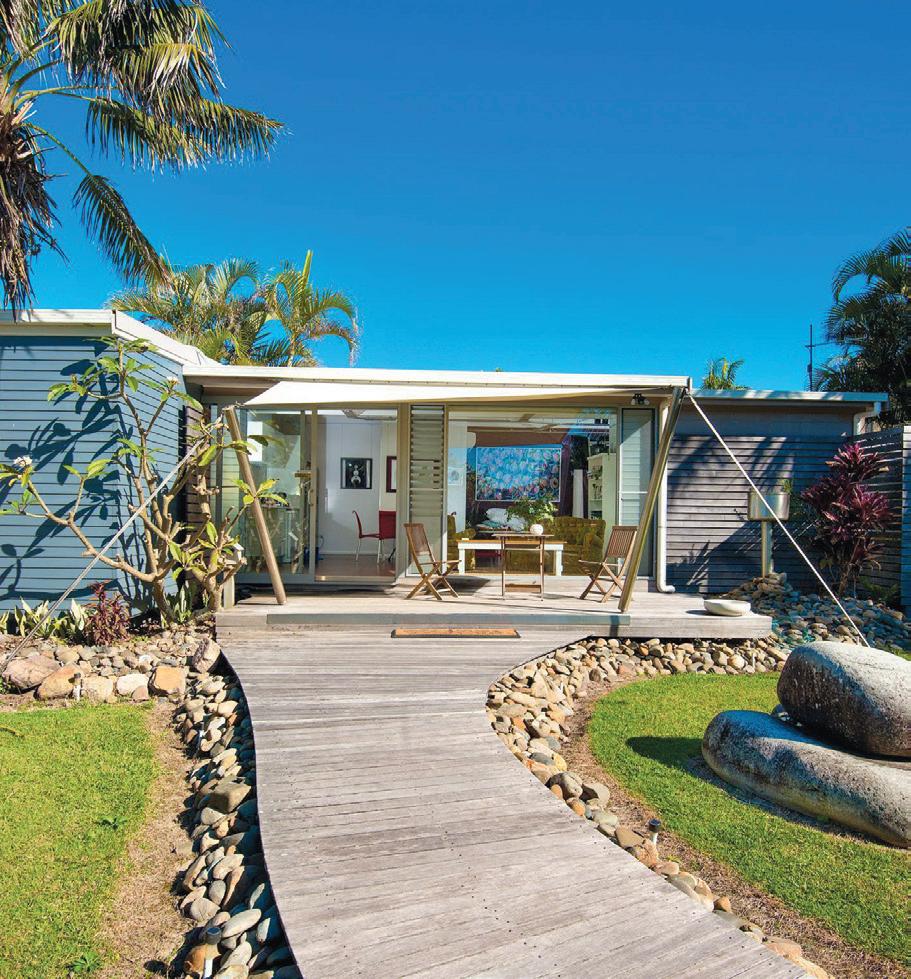
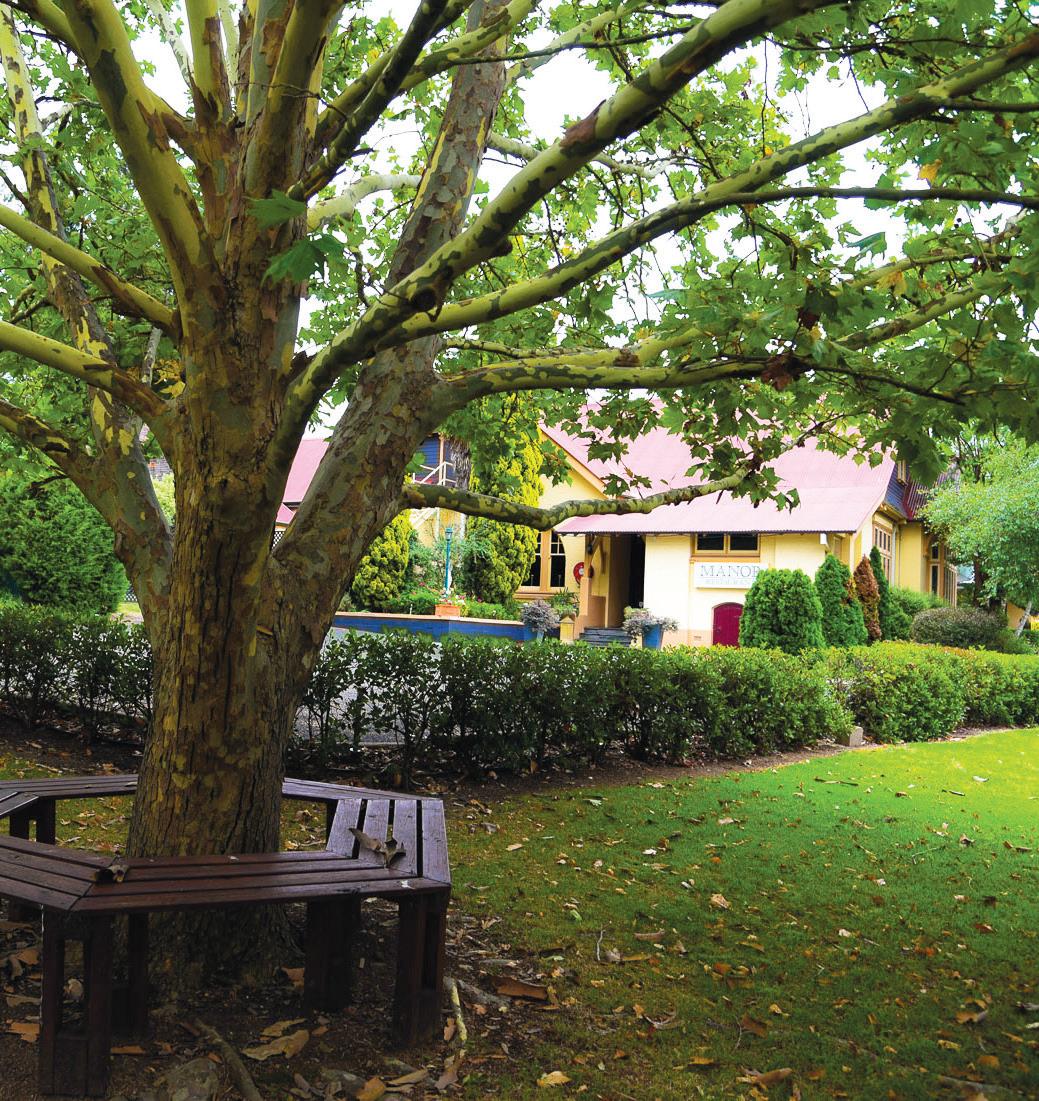

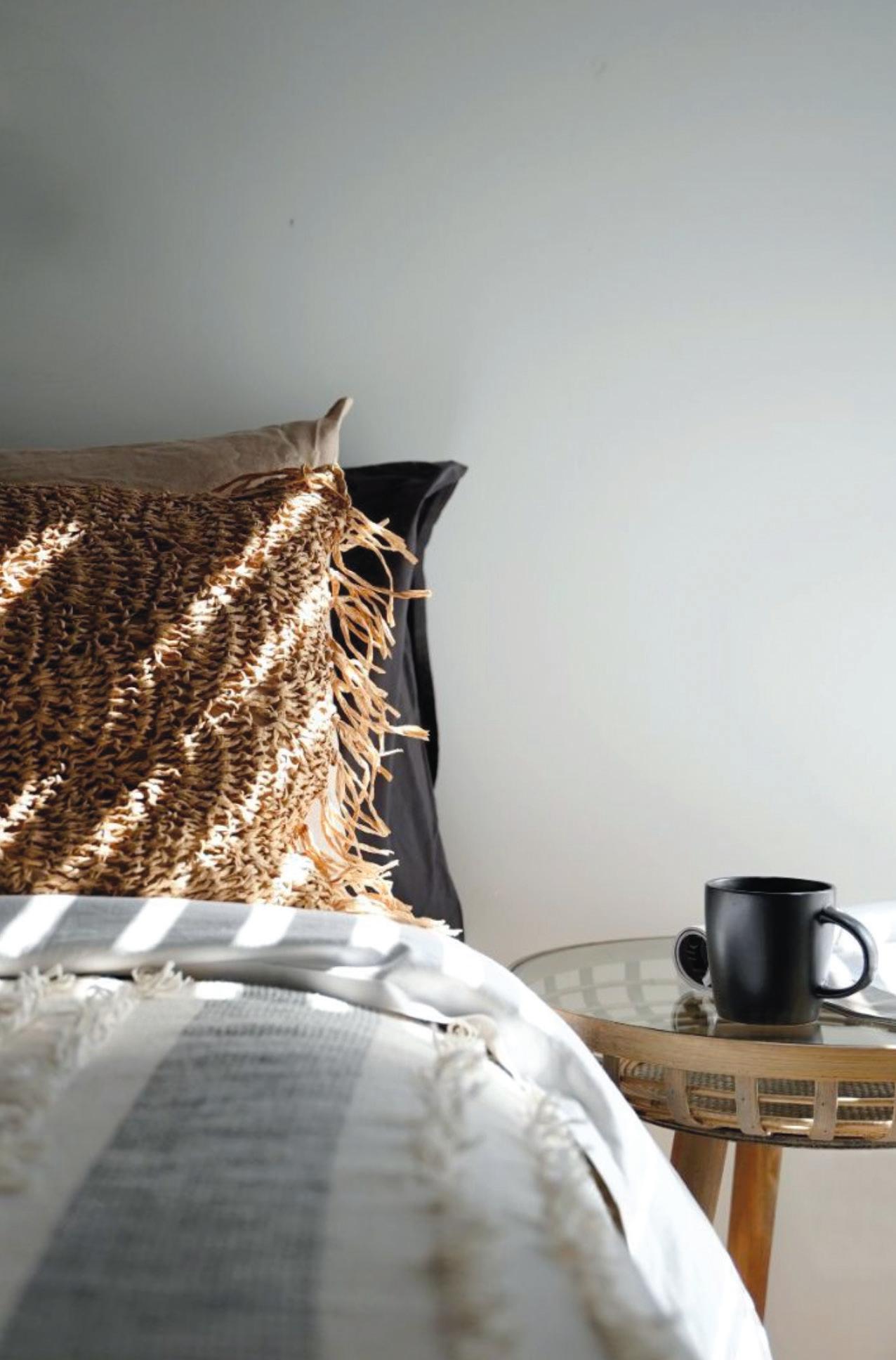
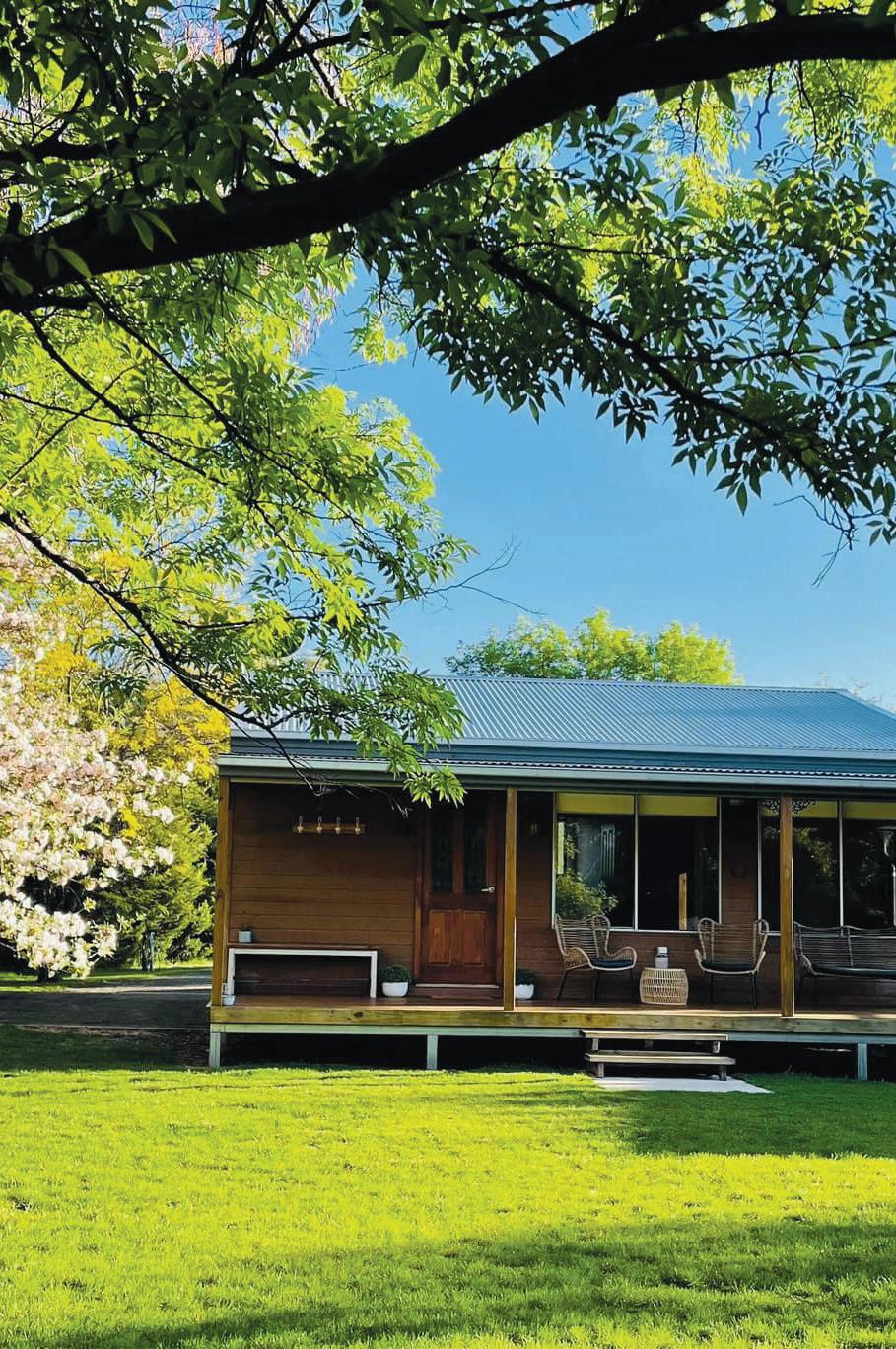
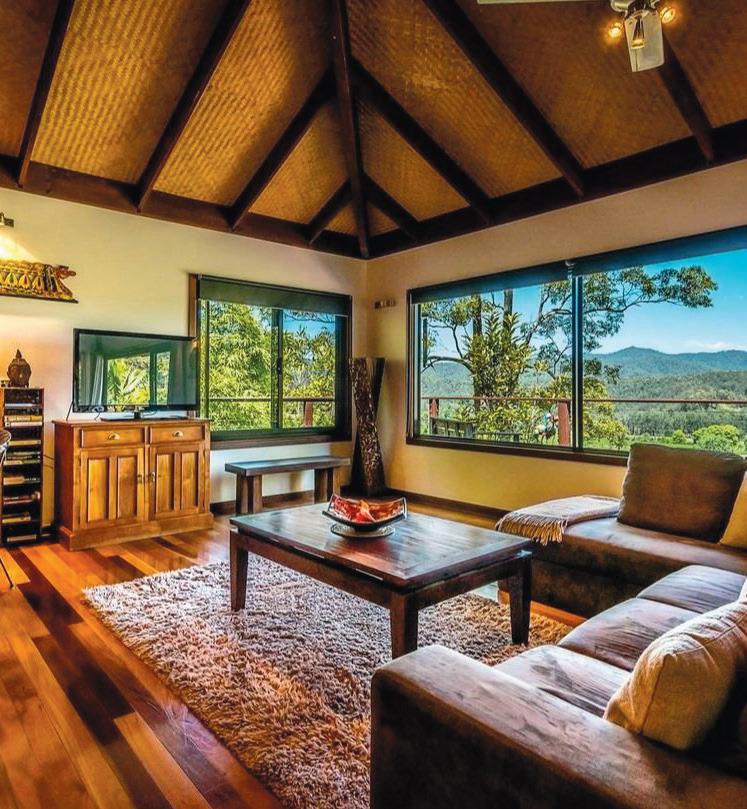
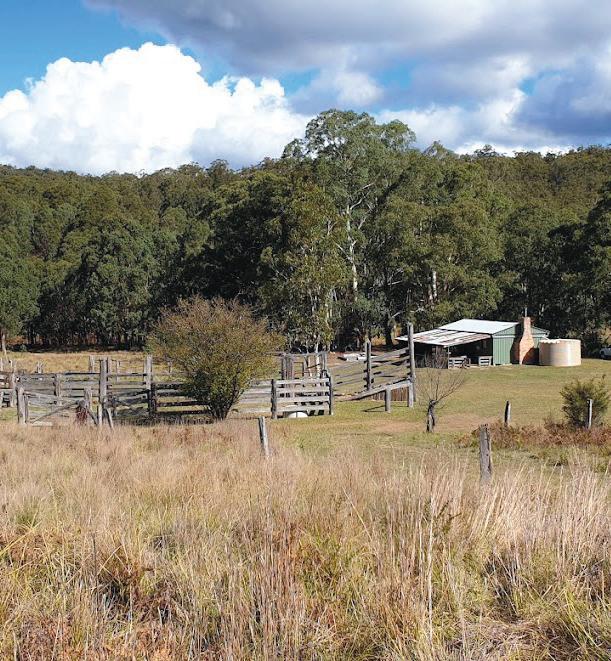
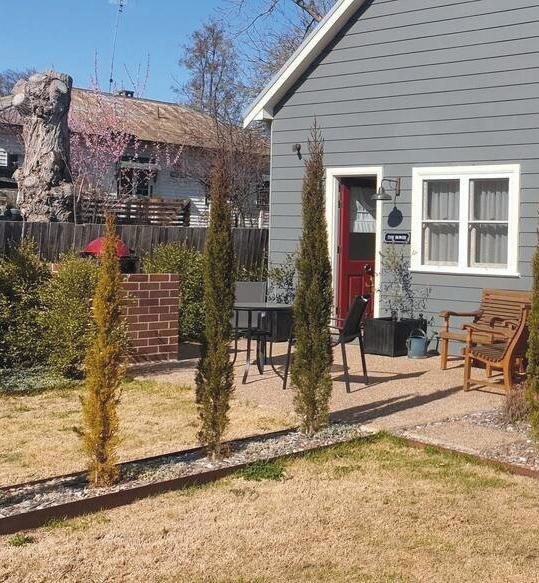
1. ARTHOUSE ABSOLUTE BEACHFRONT – EMERALD BEACH
With your front door mere steps away from the white sandy shores of Emerald Beach, ArtHOUSE Absolute Beachfront Accommodation provides a stunning holiday location year round. Boasting three fully self-contained beachfront apartments, each with its own artistic twist and queen-sized bed, you’re all set for a great stay beside the seaside. ahbeachfront.com.au
@arthouse_beachfront
2. THE BEACH ROOMS – NAMBUCCA HEADS
Overlooking the town’s stunning estuary and beaches, The Beach Rooms is sophisticated, sleek and modern. With accommodation to suit families, couples and singles, The Beach Rooms in Nambucca offers a beautiful place to stay while enjoying a much-needed beach vacay. thebeachrooms.com.au
@thebeachrooms_nambuccaheads
3. LOMBOK ON WATERFALL RETREAT – BELLINGEN
A Balinese-inspired space, Lombok on Waterfall Retreat offers two forms of accommodation: The Villa and The Studio. The Villa is a large, self-contained home perfect for couples, with a king-sized bed, gourmet kitchen and stunning views over the landscape. The Studio meanwhile, is a smaller space with two bedrooms, a kitchen, laundry and private garden. lombokonwaterfall.com.au
4. COTSWOLD GARDENS MOTEL – ARMIDALE
A quaint accommodation venue in town, Cotswold Gardens mixes town life with the tranquillity of rural life. The motel itself is surrounded by lush gardens that drown out the sounds of the nearby town centre, while the in-house Manor Restaurant serves up a mix of dishes from Australian to international cuisine, ensuring there’s something for everyone’s tastes!
cotswoldgardensarmidale.com.au
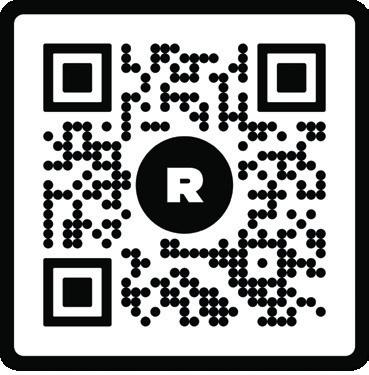
Discover more places to stay on REGGIE.
5. FOUR BULL HUT – TENTERFIELD
Hidden within Washpool National Park, Four Bull Hut is a rustic cabin that’s been beautifully refurbished. The two-bedroom cabin can accommodate up to six guests. There’s a kitchen, indoor fireplace and camp-style outdoor seating area complete with a fire pit. Take the time to sit on the verandah and see if you can spot a wallaby, koala or even a yellow-bellied glider.
1300 072 757
6. BALMORAL – INVERELL
Built in 1874, Balmoral has been carefully renovated and decorated to keep the historic feel alive, while also providing the comforts of modern amenities. It has five bedrooms, two bathrooms and multiple living areas, making it a wonderful space to be shared by family or friends.
Via airbnb
7. RIVERGLEN COTTAGE – NUNDLE
The two-bedroom cottage, three-bedroom villa, caravan sites and private garden on the bank of the Peel River – within walking distance of town – are an oasis of relaxation in Nundle. Mature trees, lawns, and river access make it ideal for switching off and connecting with nature and each other. Owners Fred and Kristie Witten have thought of providing everything possible to make your stay as enjoyable as possible. riverglencottagenundle.com.au @riverglencottage
8. THE BOWER AT KINGS COTTAGE – URALLA
The Bower features a fully equipped kitchen, freestanding wood-burning heater, outdoor BBQ area and a laundry. It’s designed primarily for a two-person stay, with a plush queen-sized bed, modern ensuite bathroom and private garage. The welcoming host provides thoughtful touches designed to make your stay more comfortable, and is happy to offer advice about the local area.
0447 357 454
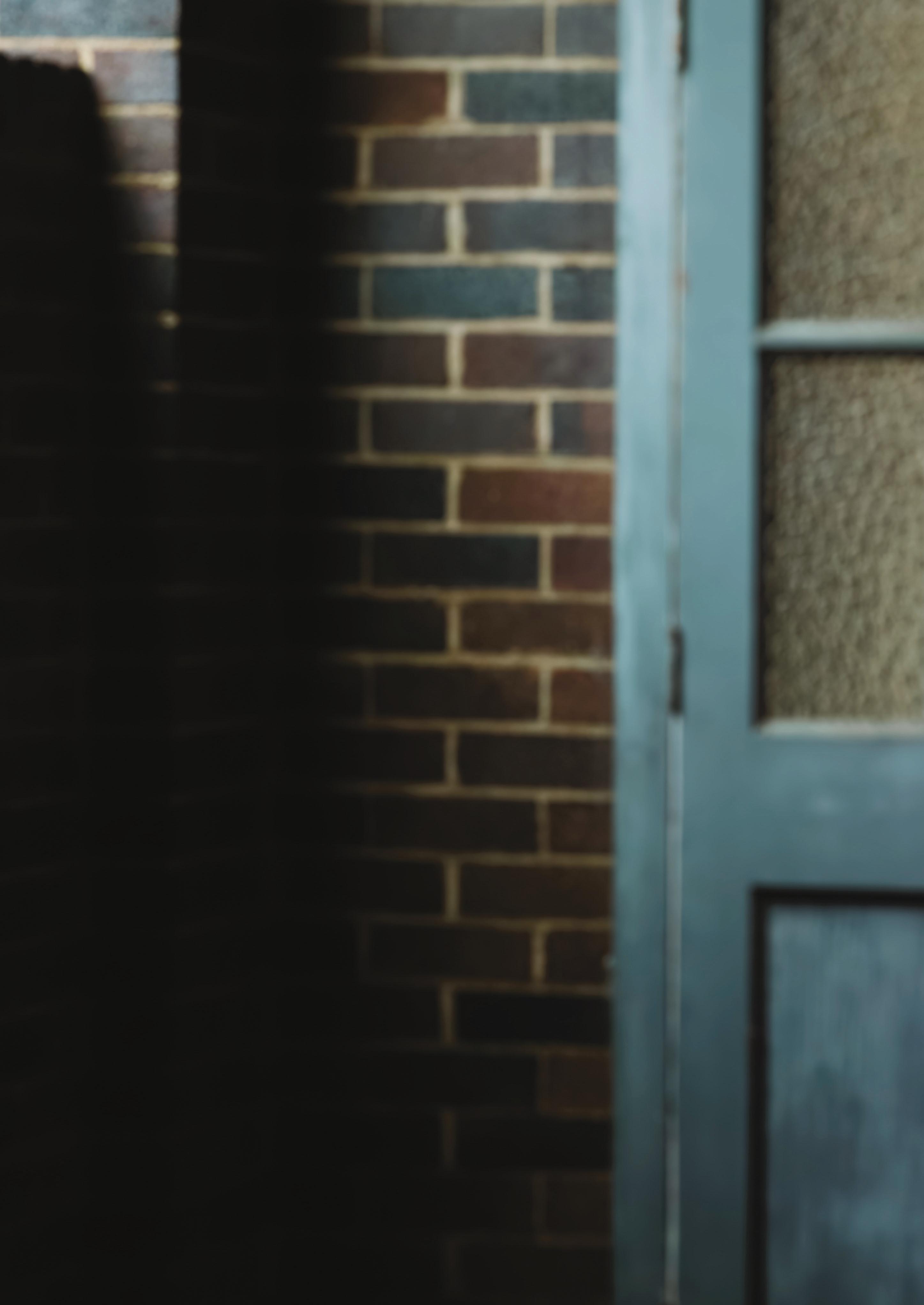
PHOTOGRAPHER Catherine Stephen @catherine_stephen_photography
“Family, community, sport and a deep love for country life led me to step behind the camera lens and capture life with a profound sense of authenticity. I love nothing more than photographing moments big and small, using the beauty and rawness of our landscape that is the very backdrop of life in regional Australia.
“These images are from my Frocktober collection, a fundraising campaign run by the Ovarian Cancer Research Foundation (OCRF). Frocktober empowers and challenges participants to dress up in any way they wish to raise urgently needed funds to support innovative ovarian cancer research. Something as simple as the clothes we put on our back has the potential to spark important conversations, raise awareness for the cause, share personal experiences and highlight how we as a community can do more to support ovarian cancer research.”
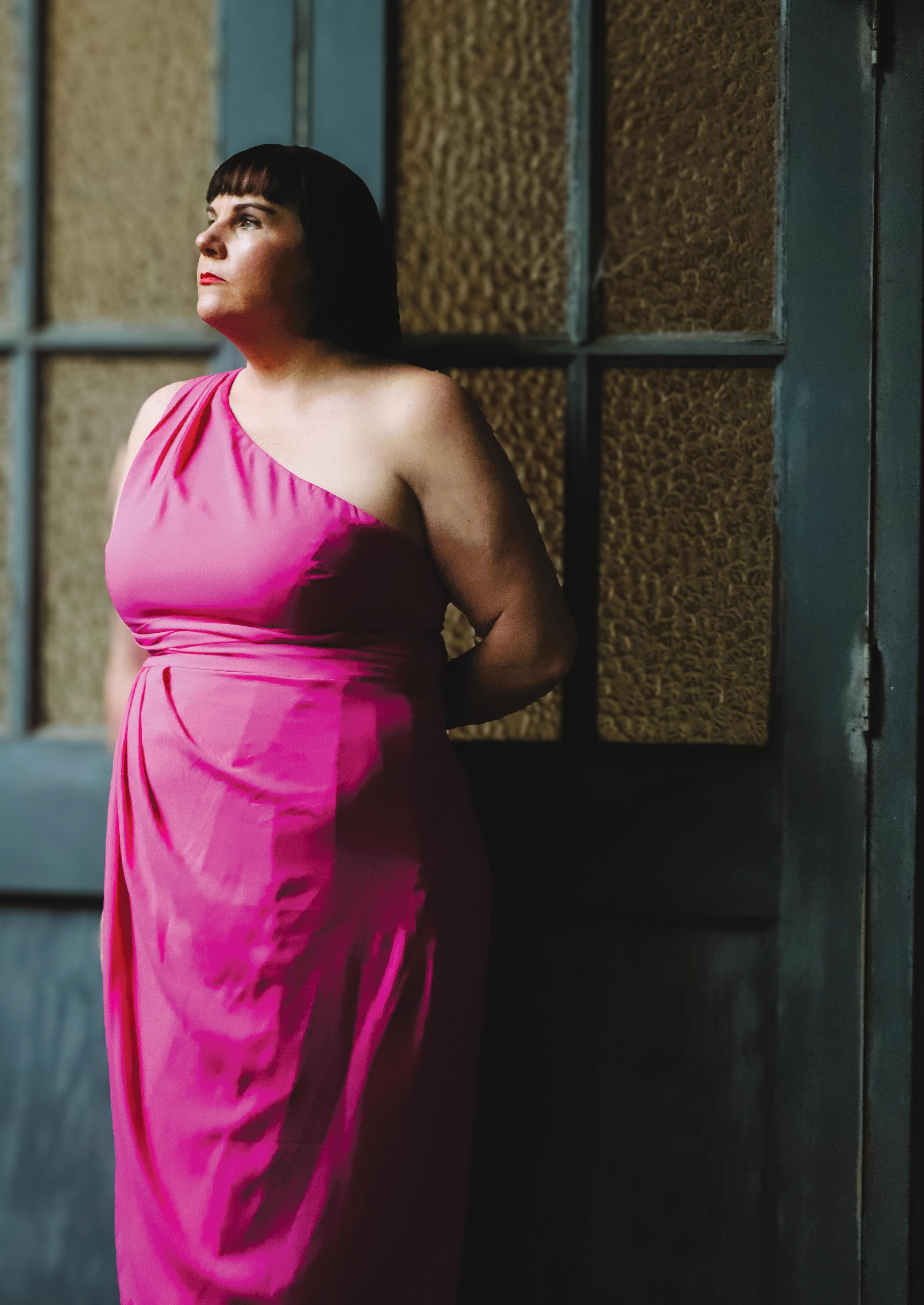
Loves summer evenings, dinner with friends, seeing the garden grow and change, long walks, making ceramics, and lots and lots of music.
Fitness guru and entrepreneur. Mum, part-time farmer, former dancer and national surf boat gold medalist.
Medical scientist in a previous life turned farmer and multi-business owner. Fitness enthusiast who has a wardrobe full of frocks but is happiest in leggings.
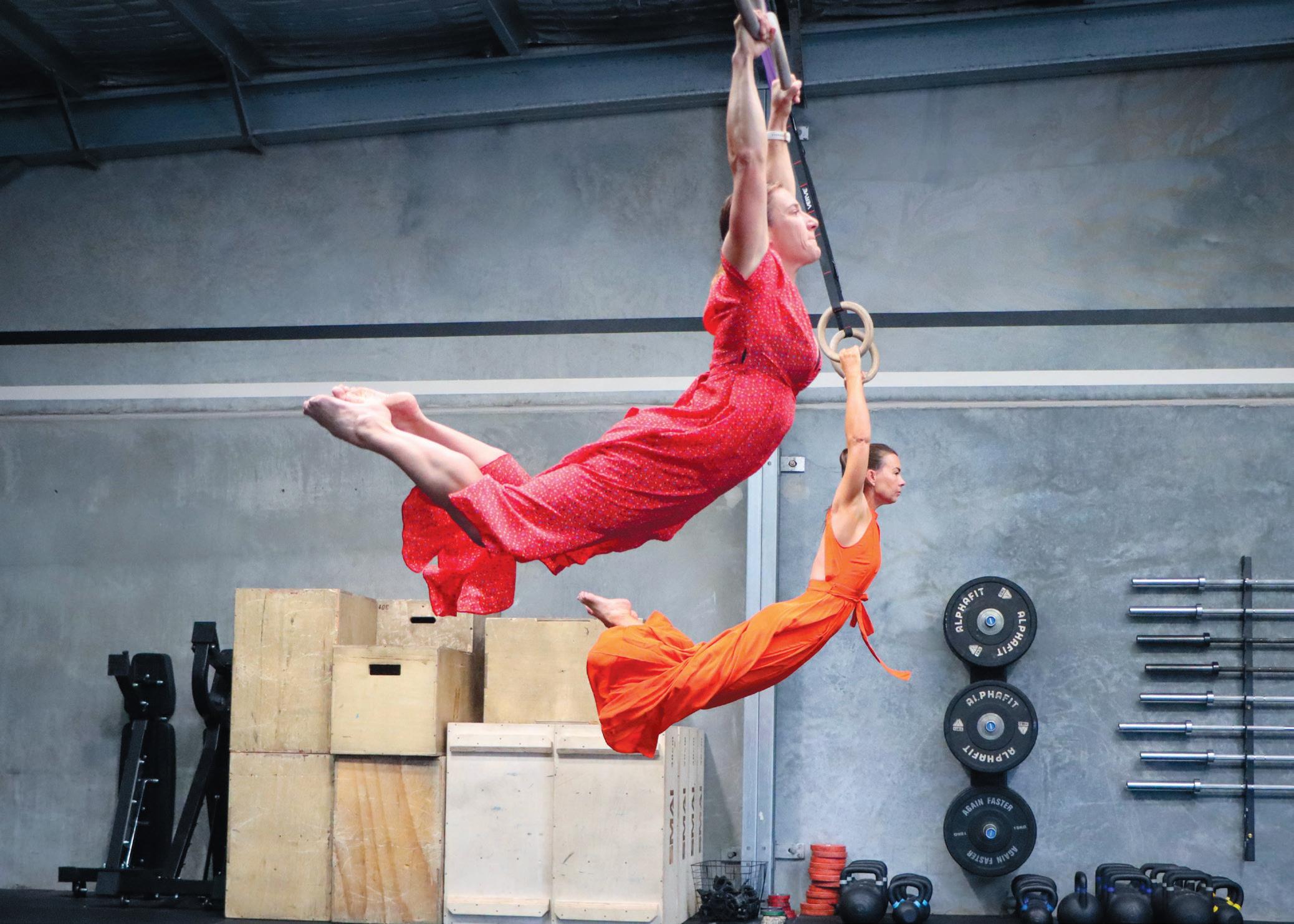
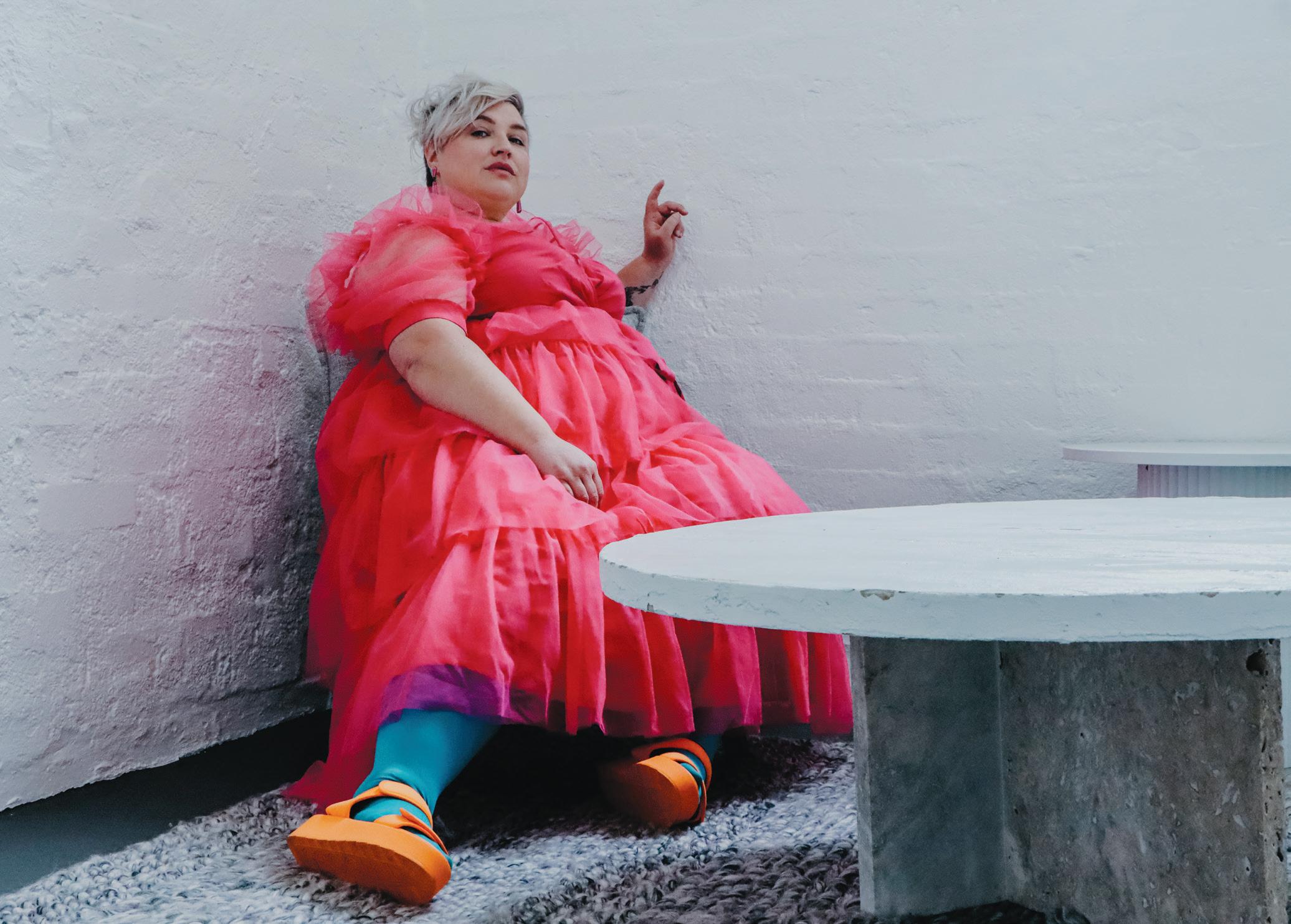
Art Museum Director, lover of art, fashion and her animals (pug, rabbit and two chickens). Gynie cancer survivor and big advocate for us all to have more vagina talk and get checked.
Lover of all things beige and white. A typical older sister, she’s a planner, organiser and advice-giver for all your problems. Her special skills include rescuing Elle’s neglected plants.

Lover of all things pink. A typical younger sister, she’s an adventurer, traveller, free spirit and terrible plant mum.
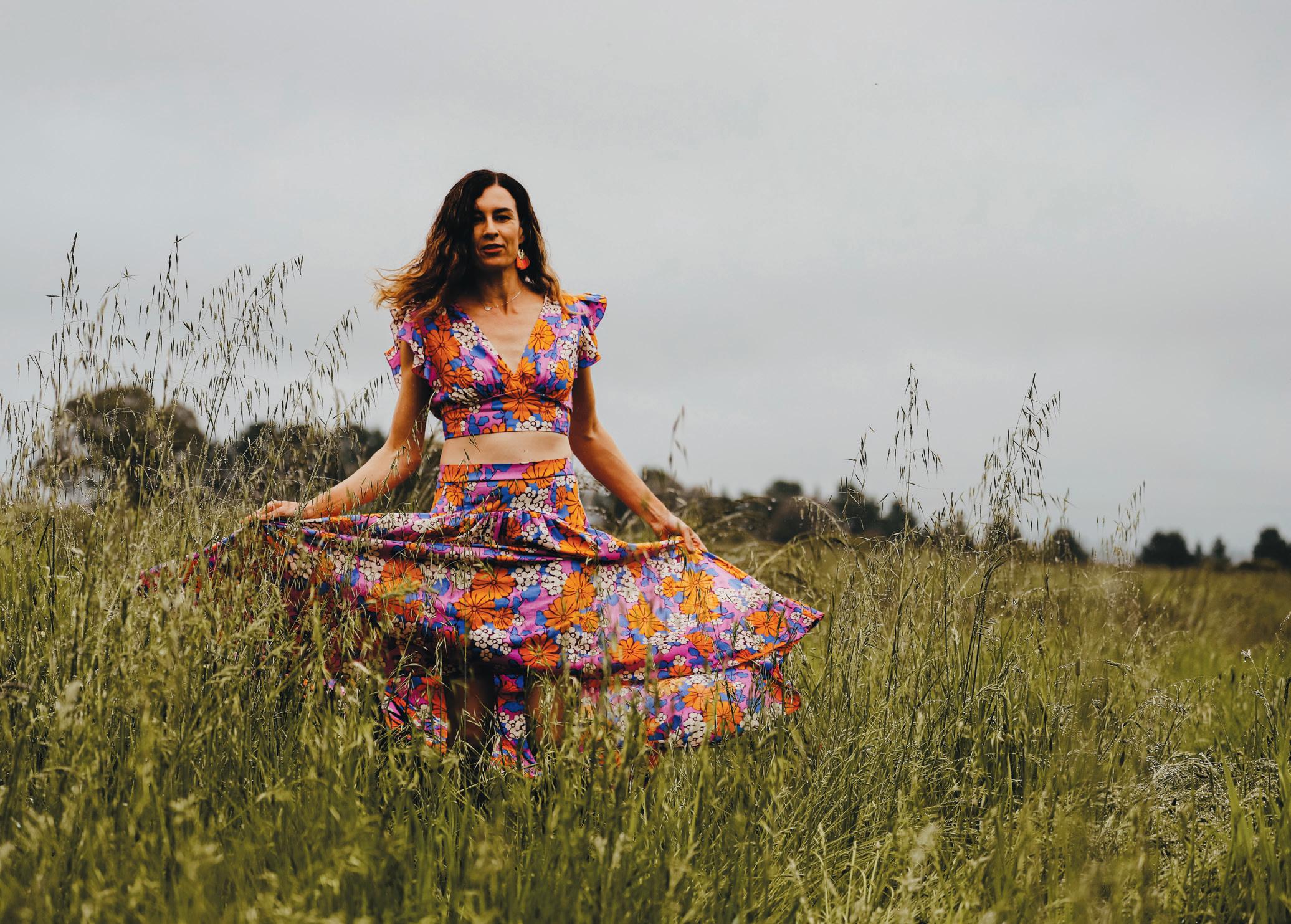
Blend of Dutch-Brazilian, animalveterinary scientist, mad about horses, dressage and Amazon.
Bernadette Garratt has reached her goal of becoming Partner at Roberts + Morrow Armidale. How did she get there? By following in the footsteps of the women before her, leaning into the support offered by the firm and telling imposter syndrome to take a hike.
WORDS Steph Wanless PHOTOGRAPHY Matt Gaffney, Favor + Union Photography
Since numbers are at the very core of accounting, it seems apt to begin this article with some stats.
First, the good news. According to the Association of Chartered Certified Accountants, around half of the world’s accountants are women. That’s some stellar progress since years gone by, but (yep, this is the not-so-good news) a recent Accountancy Age survey revealed that only one in five women in accounting are in leadership roles. When it comes to Australia specifically, just 32.5 per cent of management positions are held by women.
Enter Roberts + Morrow. The regionally grown business was listed at number five on the 2024 Australian Financial Review’s list of firms with the highest percentage of female Partners. And Bernadette Garratt is one of them.
“As a side note, we were also placed 41st out of the top 100 Accounting Firms overall,” she adds.
Impressive – both the firm and the woman. Bernadette’s career with Roberts + Morrow started in administration and reception. In the space of 18 years, she worked her way up to Cadet (while achieving her accounting degree at Armidale’s UNE), then Senior Accountant, Managing Associate and now Partner. It’s a career path made all the more possible thanks to Roberts + Morrow’s dedication to supporting women in leadership roles.
“When I became a Partner four years ago – I knew that goal was possible thanks to the women I worked for and looked up to at Roberts + Morrow in my earlier years with the firm,” she says.
“Seeing them lead proved that we can strike the balance between business leadership and home life, because let’s face it, juggling motherhood with a career is tough – but it’s not impossible.”
Bernadette’s right. Adding children to the mix is a challenge that often triggers (or enhances) imposter syndrome in many women. In fact, a 2022 study by The Hub Spot revealed that a whopping 90 per cent of women will be impacted by imposter syndrome at some stage in their career. One of the best ways to beat it? Focus on the facts.
“I remind myself daily that I wouldn’t be here if I wasn’t capable of doing the role – especially on the days where I feel like I’m not doing enough at work or I’m not there for my kids as much as I should be,” says Bernadette.
“You’ve got to talk yourself up and give yourself the confidence to keep going because nobody else is necessarily going to notice you’re feeling that way, let alone give you a pep talk. Although, I will say that my husband is very supportive and together with the flexibility offered by the firm, I know I’m able to perform at my best both at work and at home.”
To do just that, Bernadette has developed some nonnegotiables.
1. If she needs to work late one night, she’ll make up the time with her kids another day.
2. If there’s a school presentation or event, she knows she can leave work early to attend and make up the time in the office the next day.
3. As for the weekends – they’re strictly for family. Do NOT open the laptop.
“It’s a juggle, but the trick is to remain flexible, try not to pressure yourself to be everything all the time, and remember, if you weren’t capable, you wouldn’t be there in the first place.” *
“It’s a juggle, but the trick is to remain flexible, try not to pressure yourself to be everything all the time.”
Bernadette Garratt’s accounting passions lay in construction and trades, primary production and medical professionals. But no matter your industry, there are some key things you can do to be better prepared for the end of the financial year. Here’s what Bernadette recommends:
1. Know where your performance stands – where’s your profit sitting?
2. Is there anything your business could buy in order to better the tax position for the year? (Think technology upgrades, office supplies, marketing.)
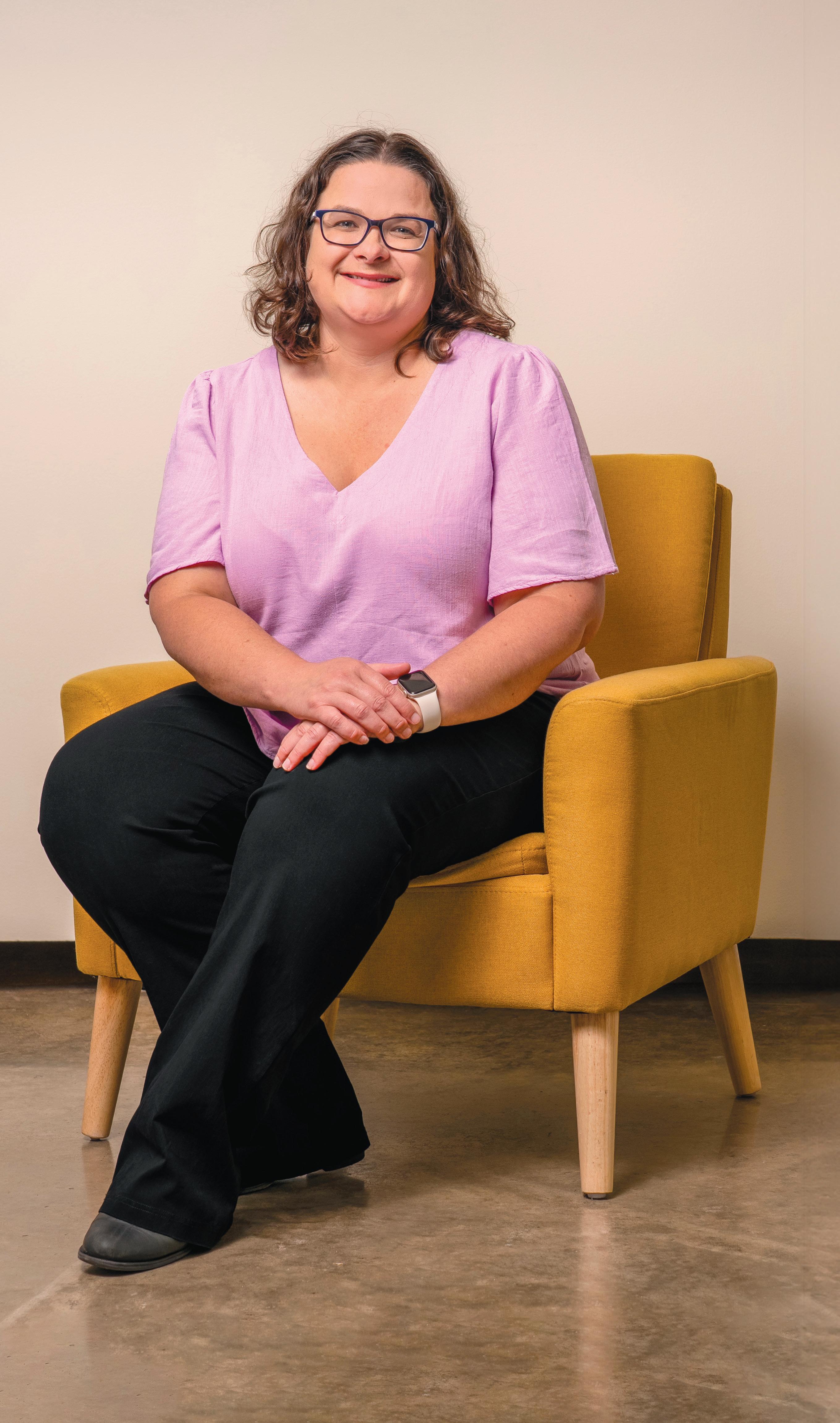
3. Reflect on the year that’s been –both individually and as a team. Ask yourself what worked, what didn’t, what can we do better? And always celebrate the wins.
4. If you’re not already using accounting software such as Xero or MYOB, it’s time to embrace the technology. Having a digital record of your sales and costs will help you run a far more efficient business.
5. Review your pricing structure – wages tend to go up that time of year, so consider adjusting your sales pricing in order to cover wage changes or any other cost increases.

Let’s start at the beginning – where did your knack for comedy come from? I owe a lot of my sense of humour to my parents – that’s definitely where it started. I think I was always able to make my friends laugh, and I was certainly the class clown in that I could never pay attention for a whole lesson. But I was also quite a shy kid. I remember preparing for an oral presentation and I was doing backflips for weeks. I was never really a big fan of the spotlight. But I always knew I wanted to share my ideas with people, I just didn’t know how.
If there’s one thing stand-up comedy has taught Ben Stevenson, it’s that he’s not an alien. The world is a weird place that doesn’t always make sense – but if you have the courage to go on stage and ask questions, chances are you’ll find common ground.
WORDS As told to Steph Wanless PHOTOGRAPHY Simon Whittaker
Mum and dad raised me to never take things at face value, to ask questions and to develop critical thought. They also taught me the value of art. They actually met doing theatre; dad was a writer and musician and mum was a film editor.
But before comedy, came radio. How did that part of your career begin? When I left school I didn’t really know what I wanted to do – I just knew I wanted to do something creative. So I got some odd jobs, earned a bit of money and ended up doing a lot of overnight jobs in factories and warehouses. It was there I started listening to
Award-winning comedian Ben Stevenson regularly appears on stage at venues from Coffs Harbour to Brisbane. To snap up some time in front of the funny man, follow him along online and keep your eyes peeled for new gig announcements.
@benstevensoncomedy

graveyard radio. Some of the weird, goofy stuff the presenters were doing sounded like so much fun – more fun than what I was doing at the time. And I just realised, even if I’m not any good at it, I’ve got to find out if I’ve got what it takes. So I ended up going back to school to study radio. I started out at TAFE in Melbourne, then I did a university course in live radio broadcasting.
So how did you land your first gig? My tutors were all pretty connected in the industry and my TAFE teacher at the time had a weekly show called ‘Off The Record’ on Triple R. He needed a panel operator, which is someone to push the buttons. I had no idea how to operate a panel but I thought, stuff it, and put my hand up. So every week I’d rock up and get to watch him interview some incredible names in music, even members of The Rolling Stones. From there, as I was finishing that uni course, the NOVA program director came in for a chat and mentioned they needed panel operators too. So I put my hand up again, and that’s how I got my foot in the door at NOVA.
From panel operator to radio host – how did that happen? One day, the same program director came around and said all the graveyard announcers are sick. There was literally no one else who could do it so he asked if I wanted to have a go. I kinda shit myself, but that night, just a couple of hours later, I was presenting to the entire country. It was nerve-wracking, but I did okay – so when a permanent spot on the overnight roster came up, I managed to snap that up for the next year. I do think the graveyard shift was a good way to ease into radio. When I was doing the panel for somebody on a normal day shift, everyone in the office would be tuning into their show and listening. So if something stuffs up, all the people you work with and have to face every day are listening. But with the graveyard shift, they’re not there – you can make mistakes, flub your words, and take the entire network off air (which I’ve done once or twice), so it’s a bit more forgiving. And you get weird people calling in, which was really fun – it’s a good way to hone the craft.
When did you make the move to Coffs Harbour? Before my beach move, I actually headed north to Darwin where they needed an announcer. There were only three of us running the whole station for a short period of time. Radio is an industry where it’s all hands on deck. Your role might be doing one thing, but you end up doing a bunch of other jobs as well. So it was really great to work in a radio station where you got to do a bit of everything. But after almost five years I’d had enough of the 32-degree, 100 per cent humidity days. I found out the Breakfast Show host in Coffs Harbour was planning to leave, so I applied and managed to score that role. These days I do a later show, which I’m very thankful for. I don’t know if my body or my mind could take the 4am starts now.
So you’re now an experienced radio host – but when was your first time on the stand-up stage? The year was 2012, and I remember it vividly. I honestly thought I was going to die – or at least pass out and fall to the floor. It was an open mic night in Melbourne. I got signed up and had five to six weeks to come up with stuff. I was absolutely terrified. I think most people are when they start out because you think if they don’t laugh, it’s game over. But you will have plenty of other opportunities to get that laugh, just don’t put the pressure on. I had a lovely MC too who informed the audience it was my first time. Once people know that, they want you to have a good time even if you’re terrible, so they’ll laugh at anything really. But I think I managed to get a few honest laughs – I did two-and-a-half minutes of a five-minute set. It was enough for me to know I wanted to do more.
Fast forward to today – what kind of material do you do? I tell a lot of personal stories and stuff that I can’t make sense of in the world. It’s really nice to have a stage where I can talk about that kind of thing and find common ground. When everyone laughs, we find that connection point and I realise I’m not an alien. I feel really good on the stage these days. My nerves are still pretty high beforehand, but once I’m out there I feel really comfortable. I don’t panic, I don’t go over my notes and I don’t need to rehearse so much. I can be present in that moment, engage with the audience and roll with whatever happens on the night. It’s an entirely different feeling to my first time doing stand-up. But I’m so happy that I actually conquered that fear, because it’s not really that bad and it works in parallel with radio – it’s great to flex different creative muscles.
And finally, what do you love most about stand-up? I love that it offers so much freedom. There really isn’t any one way to go about it. You can throw all the structure out the window and talk about anything you like. The only requirement is to make it funny.

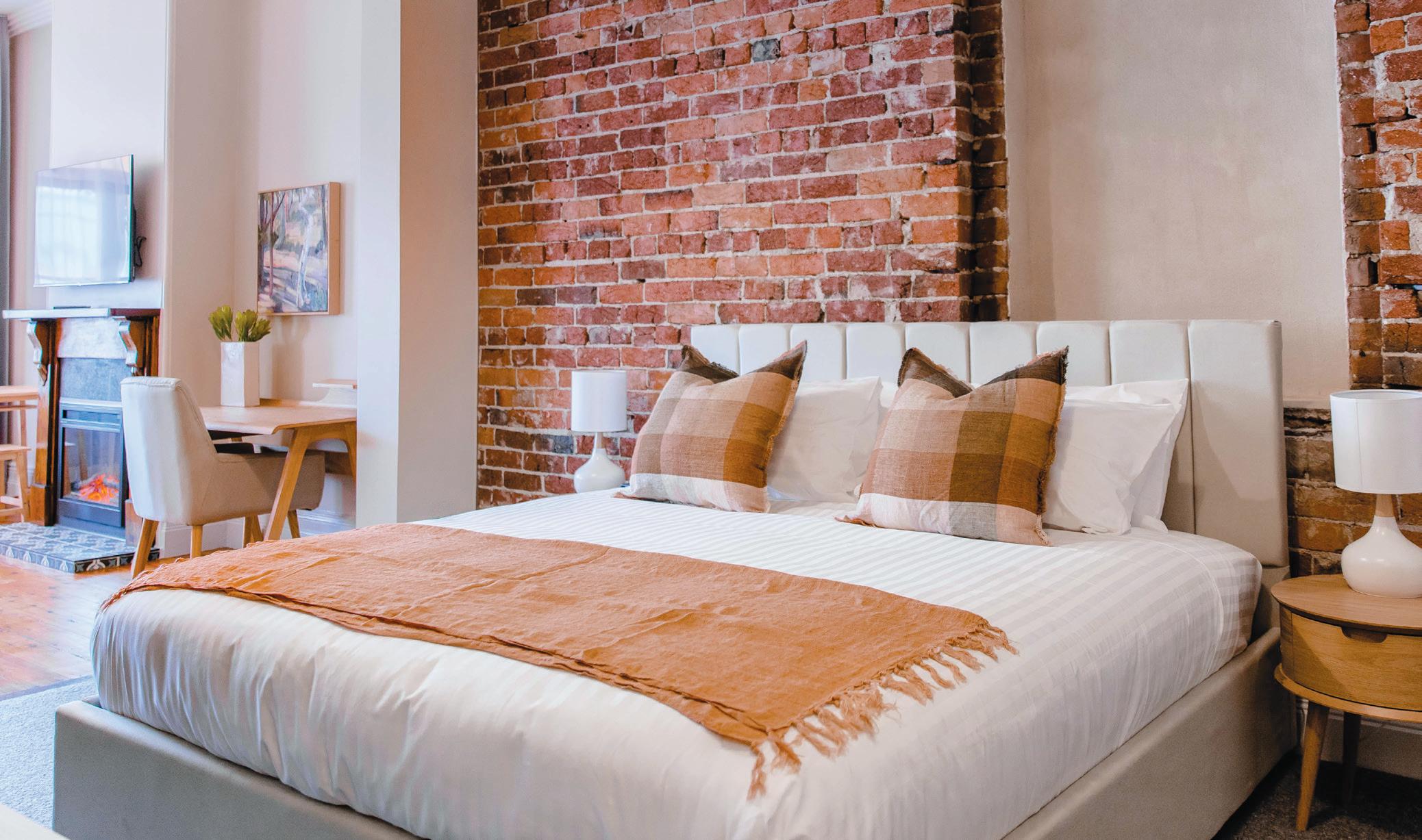
Book now to experience luxury in the Inverell CBD

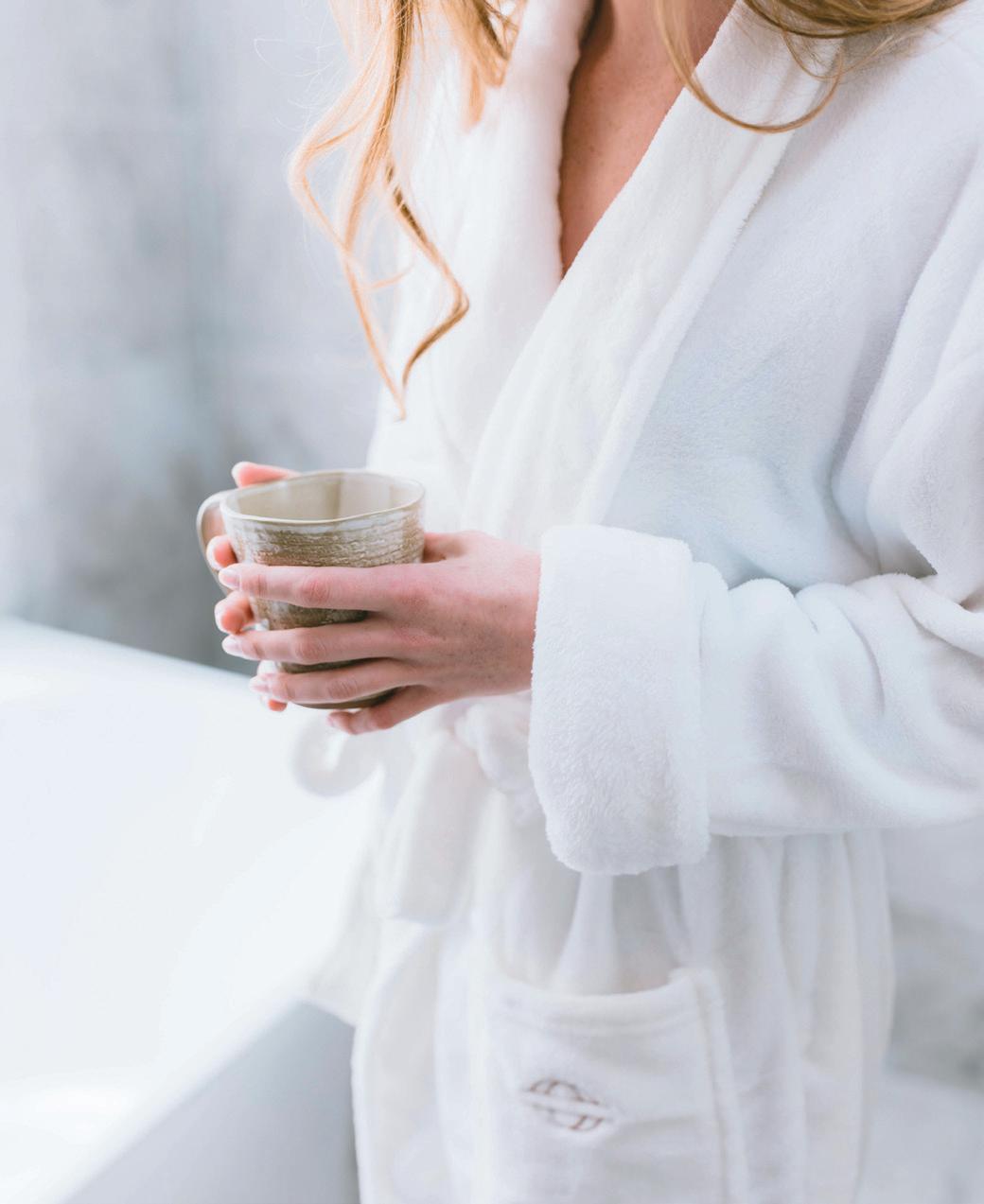
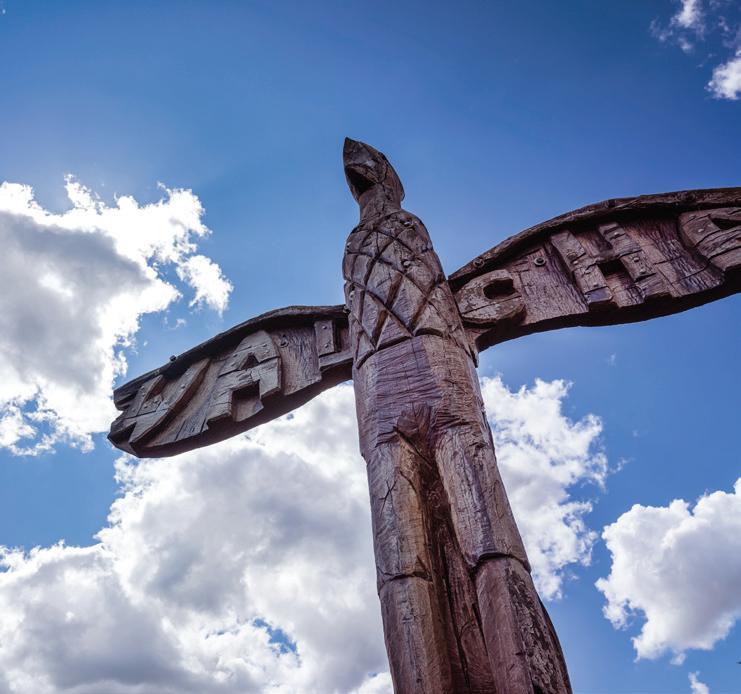
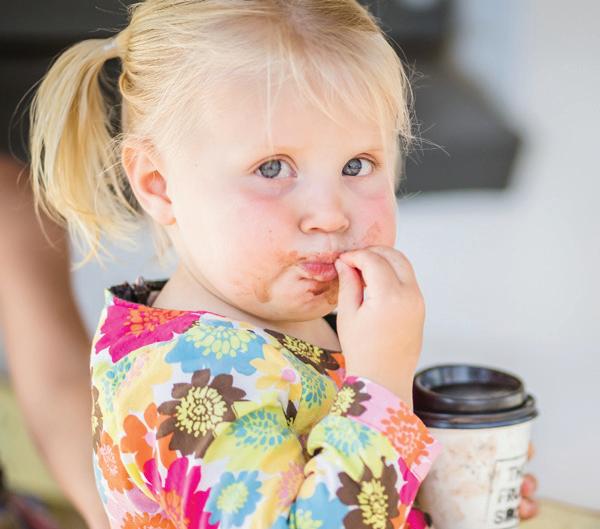
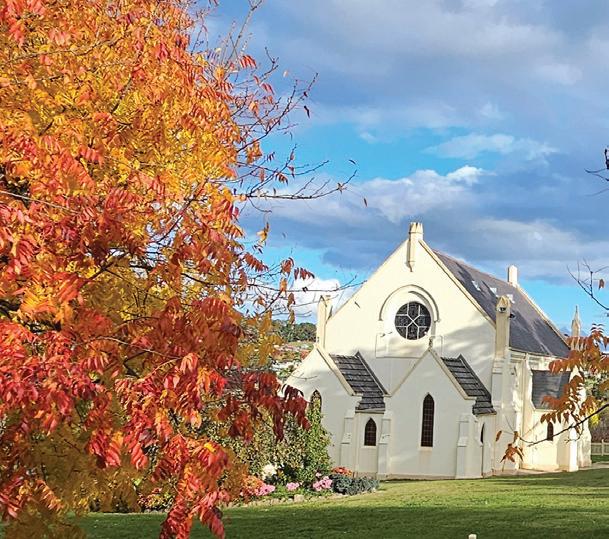
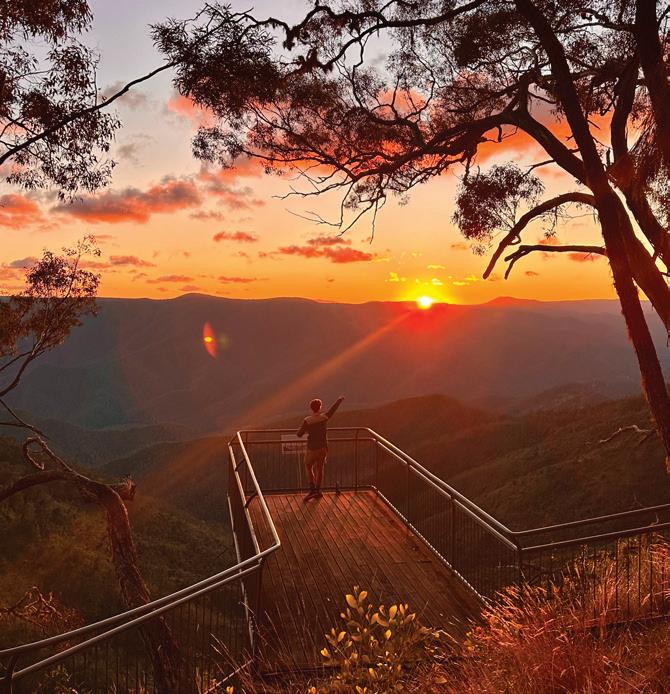
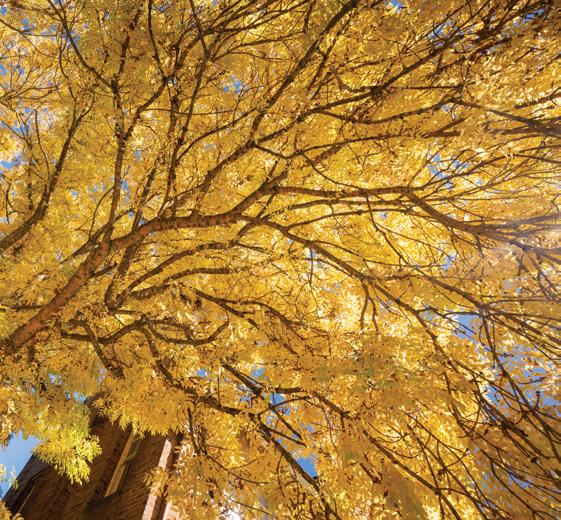
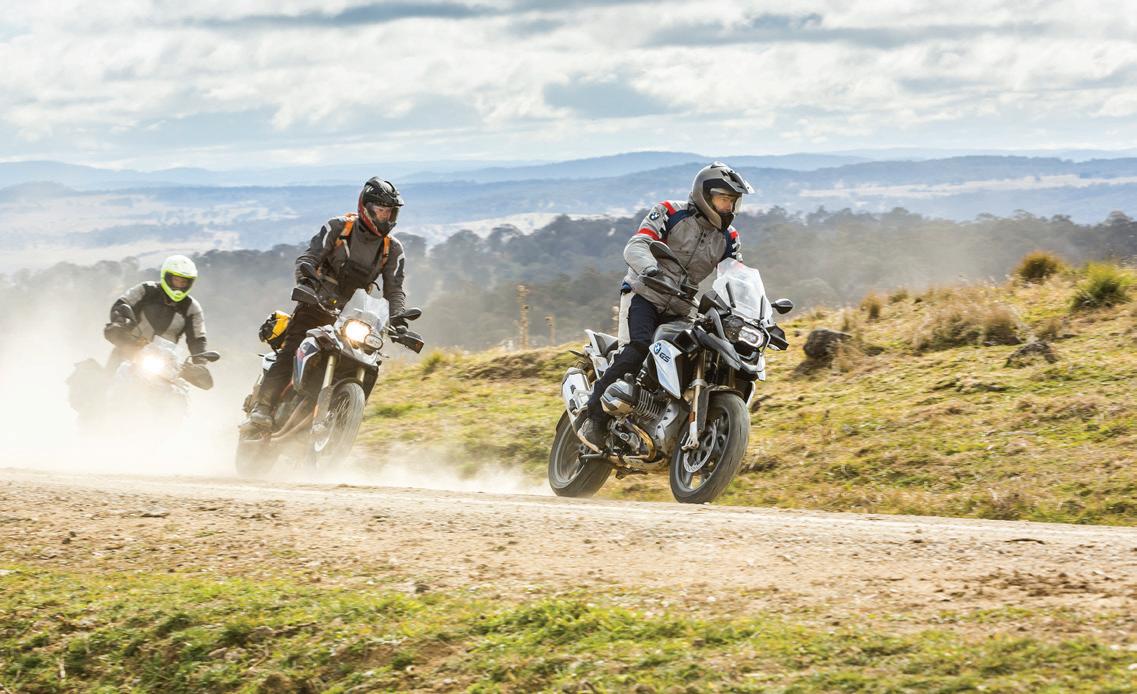
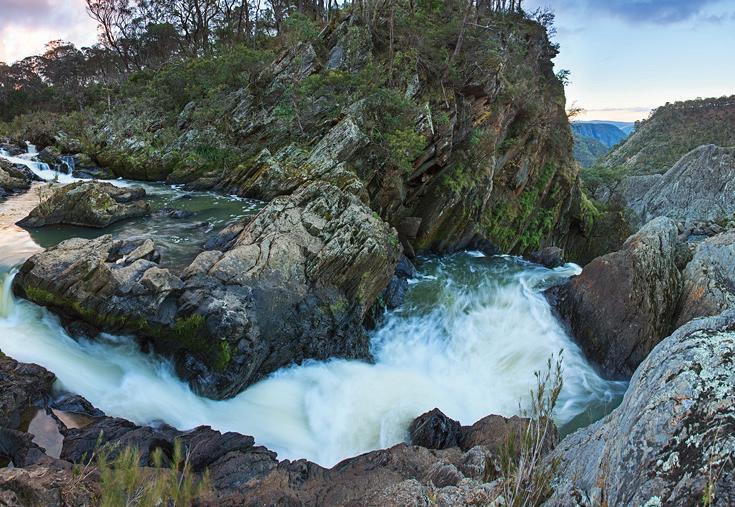
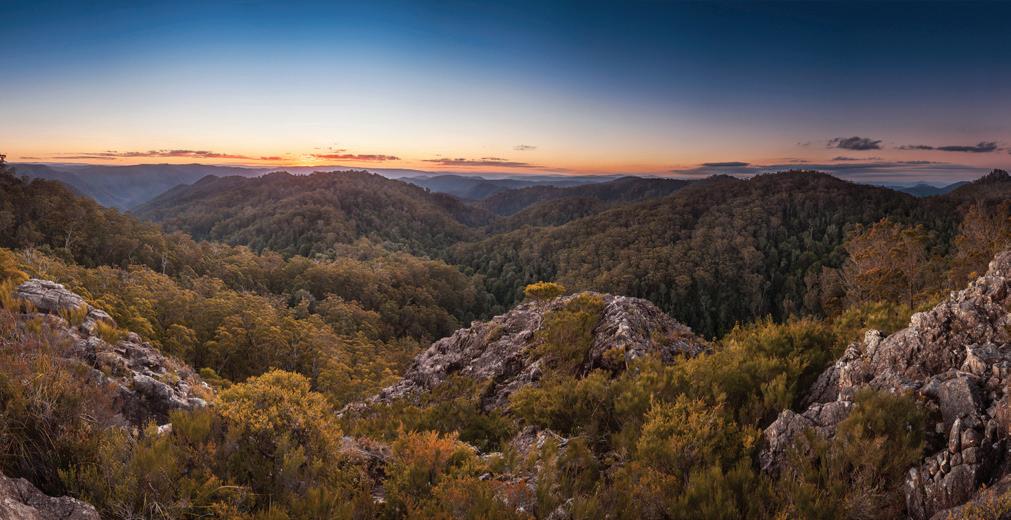
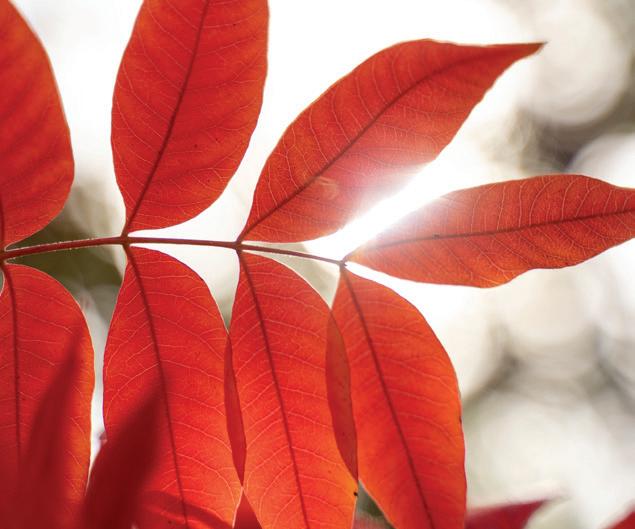
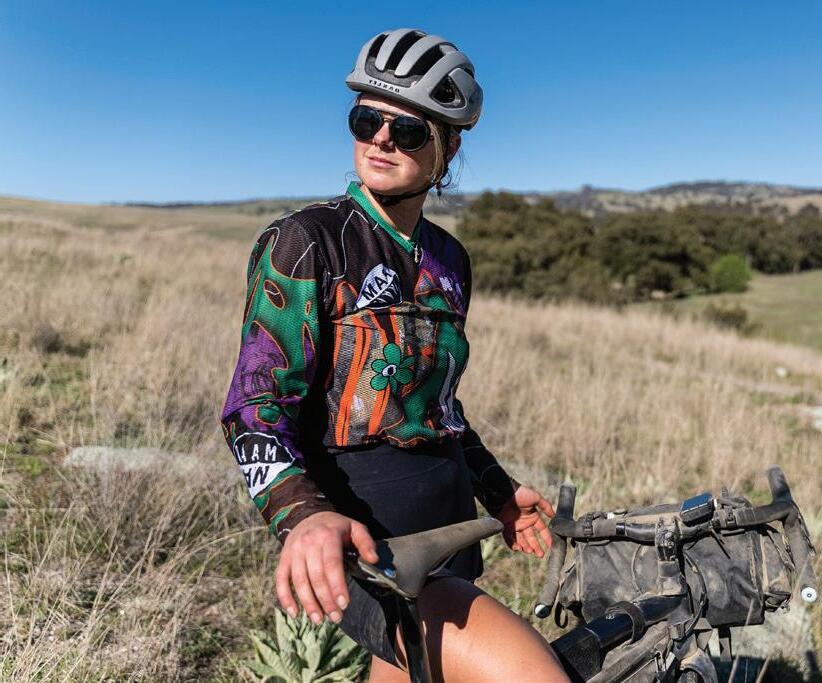

Explore our natural wonders, art, culture and heritage.
World-Heritage National Parks, waterfalls, outdoor adventures, great coffee and food, a thriving art scene and endless country charm are just some of the reasons Walcha is such a special place to visit.
Walcha is the creative hub of New England High Country and the gateway to some of Australia’s most spectacular scenery.
Come on up for a great escape.
walchansw.com.au
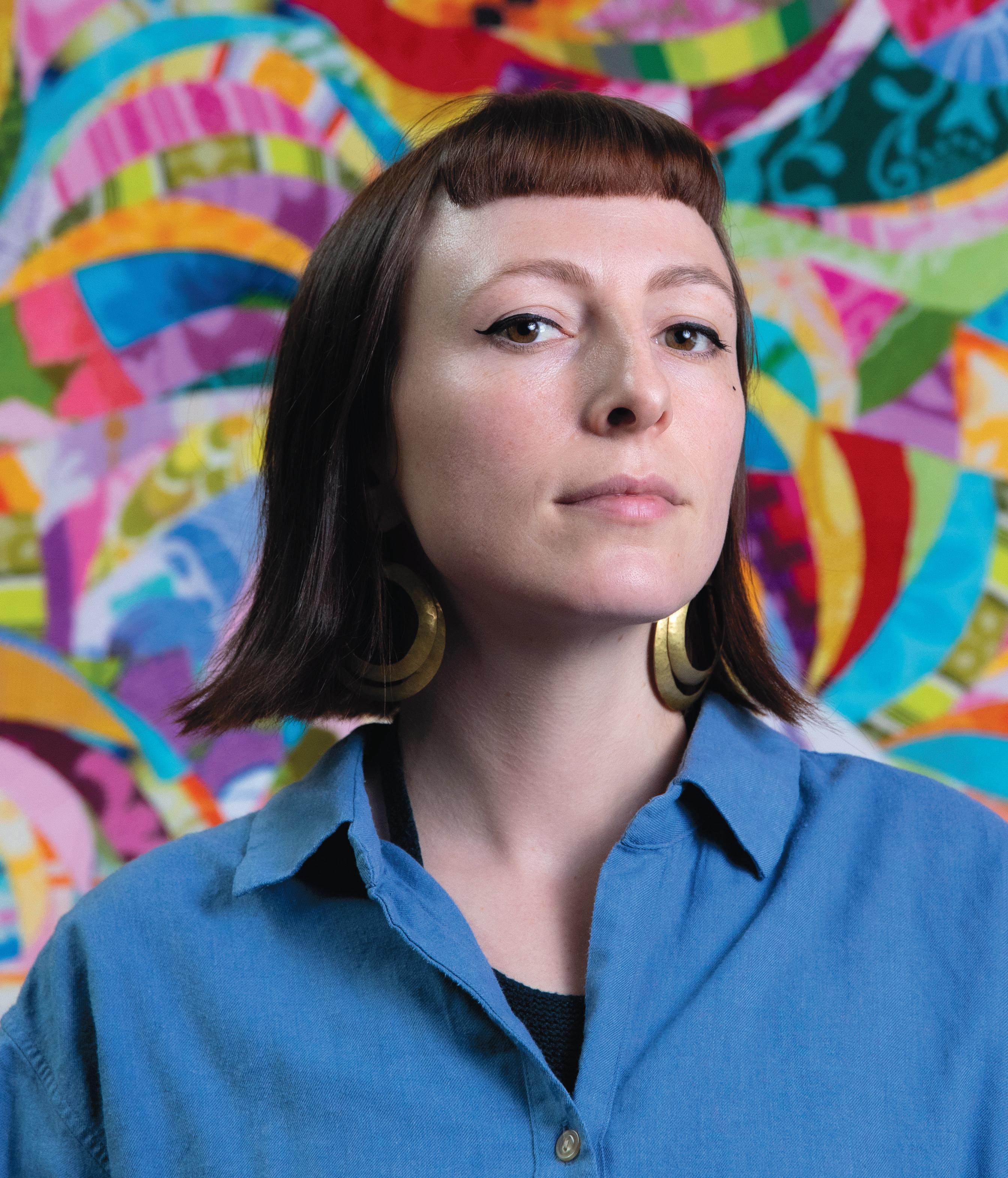


Jamie-Lee Garner describes herself as a visual artist and glamorous gremlin – which is both apt and entirely unexpected, much like her story so far.
WORDS Steph Wanless
PHOTOGRAPHY Jim A. Barker
Jamie-Lee Garner is one of four women in her family. Together, she likes to think they cover the full spectrum of life. One sister is a midwife, guiding babies earthside, the second a registered nurse, supporting people while they’re here, her mother is in palliative care, helping people leave this world, and her third sister is a mortician, giving us the best send off possible.
As for Jamie-Lee, she likes to look after the spiritual life.
“To live a good life is an art and you’ve got to take care of the spirit,” she says. “I was never drawn to a medical profession, but I do have moments where I envy the financial security and direct knowledge that you’re helping people that comes with that kind of life. But I know myself, and that wasn’t the path for me. Instead, I create art to remind us that life is woven with threads of meaning. If the women in my family keep our hearts strong and our heads steady, I’m here to fuel the soul.”››

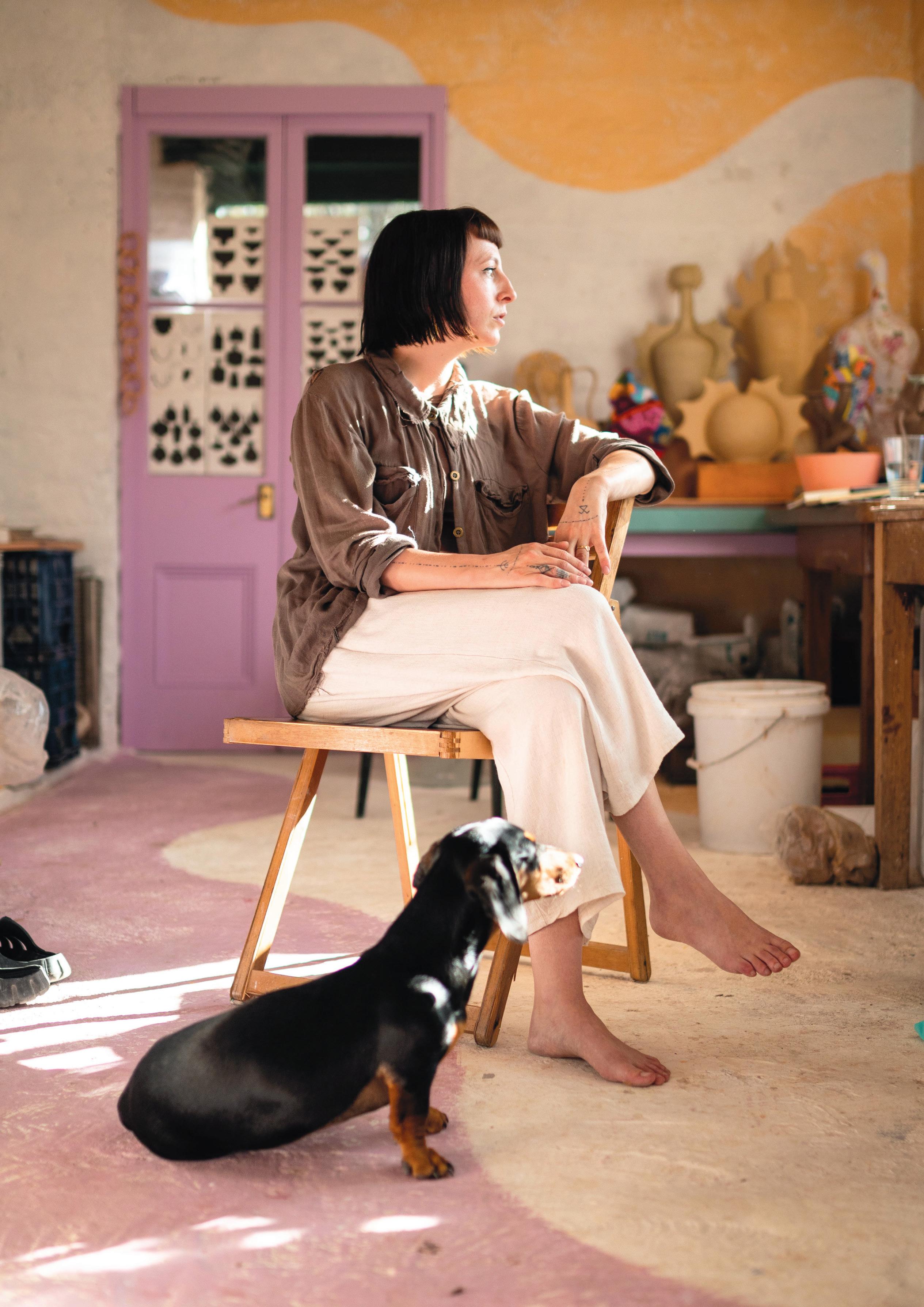

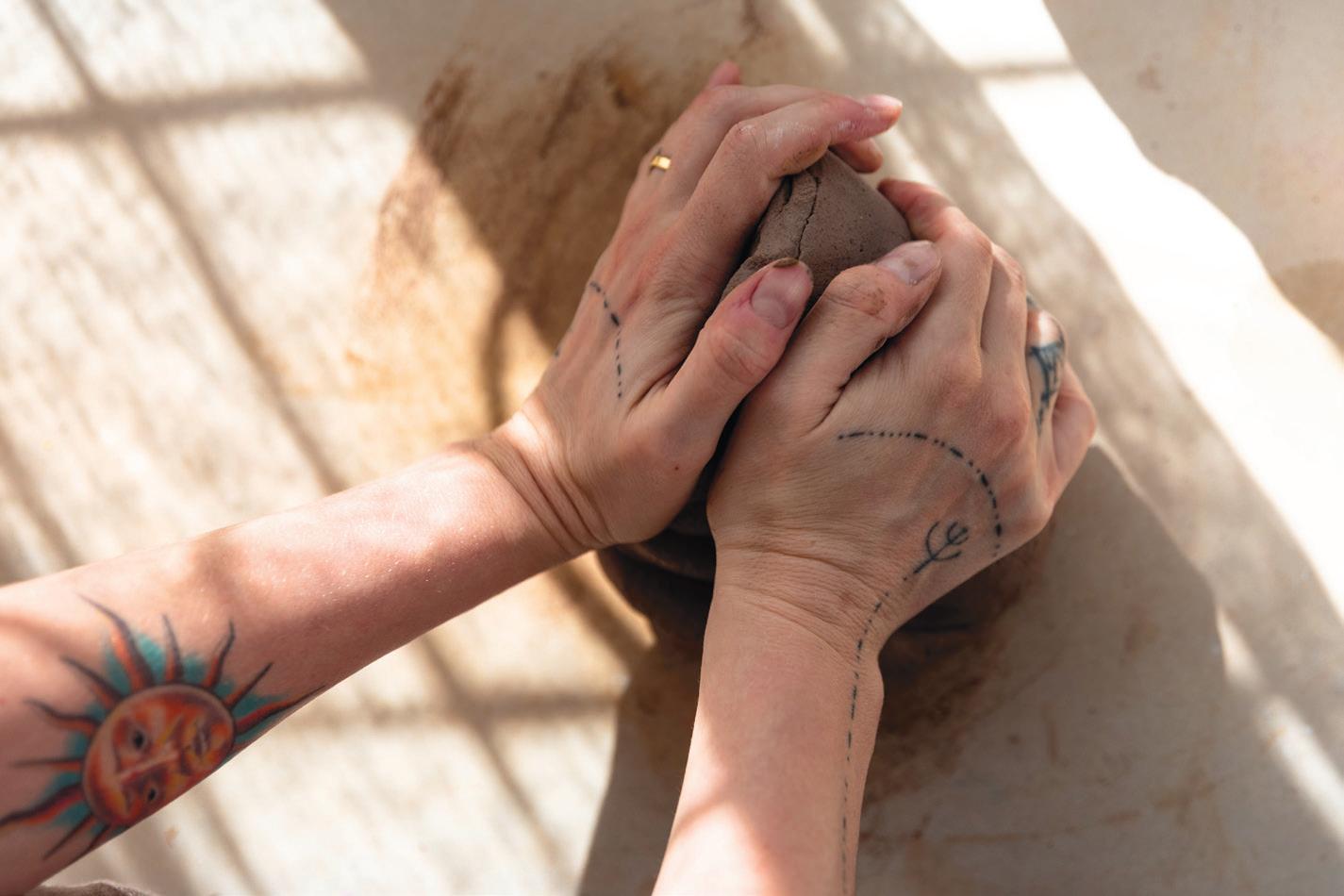
It’s 1990s Penrith, an unlikely scene for artistic inspiration, sure – but one Jamie-Lee fondly remembers as one of her earliest creative influences. There’s a pillowcase, a letterbox, murals on the walls and a sun on the floor.
“My pop was always painting or making something, and my nan was very crafty too. I spent a lot of time at their house when I was younger, so one of those early threads of inspiration definitely comes from them.”
Mid-chat, Jamie-Lee produces a souvenir from those treasured times, a pillowcase painted by her pop. There’s a fairy with blunt, black locks and golden wings, Daisy Duck in her classic pink, pantless attire and Jamie-Lee’s name carefully scrawled in the sky above, amidst a shower of blue stars.
As for the letterbox, her pop chose that unlikely canvas to paint Jamie-Lee and her sister on one side.
“I had brown eyes and she had blue –I remember being so excited to be on a letterbox! It made me feel special, and part of a family.”
Traditionally, Jamie-Lee’s dad chose a far larger canvas – the walls of her childhood homes to be specific, coating their world in beach scenes. One day, he even turned to the floor, painting a huge golden sun on the boards beneath the family’s feet. Today, that same sun is tattooed on Jamie-Lee’s arm.
“As the years went by, he stopped painting – but I still remember one summer when my parents let me paint a full wall mural in our house. I was 14 years old and believe me, it’s a very cringey early teen painting, but I loved every second of that creative process.”
Come high school, you’d think JamieLee would actively choose to study art, but it actually happened by default.
“I’d selected chemistry, which I love, but the school I went to wasn’t great and the kids would muck up – a lot. The chemistry teacher got pretty worn down and ultimately refused to do anything. One day she just stood up and said: ‘I’m done’, then sat back down and started reading her book.
“I thought, this is bullshit, so I looked to see what other class was on in that time slot. It was art, so I transferred across and loved it.”
There she was, immersed in different forms of creativity, fuelling her long-held interest in fashion, design and even woodwork, wondering what might be possible beyond her outer western Sydney world. Then it came to her –burlesque.
A form of theatrical entertainment that emphasises artistic expression and storytelling, modern dance and literary influences, burlesque may be an unexpected passion for a 17-year-old girl, but one that ticked all of Jamie-Lee’s
boxes. The mix of performance and fashion, pushing artistic boundaries and even stage production propelled her towards a new goal: to start her own troupe.
“I was so in, so fast. It’s hard to even explain. It was like all of my creative energy was focused on burlesque. I was on some kind of mission,” she says.
“I tried to fulfill my dream of starting my own troupe and invested a lot of my time and money into our work, from costumes to building props – including a giant powder puff that you could come out of. But I felt like no one else was as serious as me, so that came to an end and I started considering my next move.”
Whatever that move was going to be, she needed money. Without it, she wondered how people ever had the opportunity to leave Penrith, let alone forge some kind of creative career. She picked up work in modelling, hospitality and the odd burlesque performance while she planned her escape. But even then, the money she was earning essentially covered filling her car up with petrol so she could drive to her next shift.
Then it came to her – a plan somewhat unconventional, but at the same time brave, as long as you’re the one in the driver’s seat. In this case, to be exceptionally clear, Jamie-Lee was most definitely the one driving the car.
“I decided to become a stripper.” ››
It’s a logical decision when you stop and think about it. Jamie-Lee loved burlesque, the way it ignited the performer within, but to get where she wanted to go next – she needed to start earning.
“My thought process was simple –I’m going to be a stripper. Because it’s like burlesque but you’re actually making money. Ultimately, what’s the difference?”
As it turns out, a fair bit. The theatrics were lacking for a start, and obviously dodgy things can happen along the way – including Vivienne (Jamie-Lee’s stripper name) having her drink spiked. But despite that one “shitty night”, Jamie-Lee felt safe, in control and protected in the four years she spent at the Men’s Gallery in Martin Place, Sydney. There were strict rules in place and you were encouraged to set your own boundaries. And while the night shift hours and cosplay conversations were “utterly gruelling”, it also enabled Jamie-Lee to save money, plan a life beyond Penrith and, above everything else, feel empowered.
“I’ve always felt very confident in my body, but that time of my life took it to another level. It was like my body gave me power because I was making
money, while still being creative,” she says.
“It also fuelled another part of me, the young person who was curious about all things taboo. That curiosity was explosive and propelled me toward these pockets of society that felt hidden away.”
A moment to pause here, because both Jamie-Lee and I know what you’re thinking. What young woman wants to become a stripper? What’s actually going on there? There are so many layers to us mere mortals and, as the thriving artist she is today, Jamie-Lee knows all too well how to unpack those layers openly and honestly, and use what lies beneath as a rich source of inspiration.
But to answer the question specifically, here’s Jamie-Lee.
“In hindsight, I see that I was pretty angry back then. I had a chaotic home life and was on the search for something new and exciting, a life of fantasy and exploration. For a long time, all I could think was: get me out of here and take me to a castle in the South of France! As I grew older, I discovered I could channel that drive and those emotions into films and fashion. I was throwing all my ideas and interests together trying to figure out who I was.”
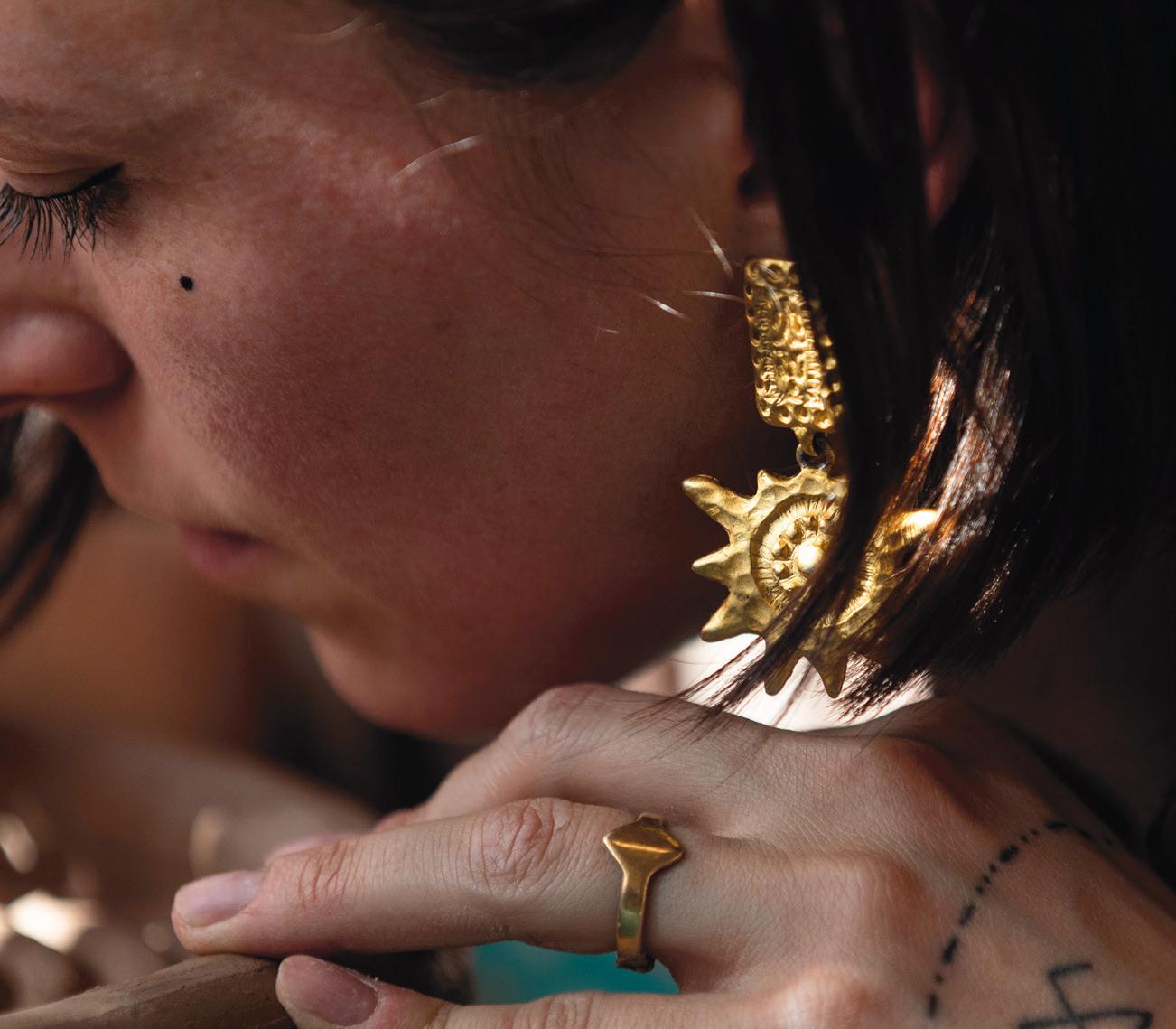


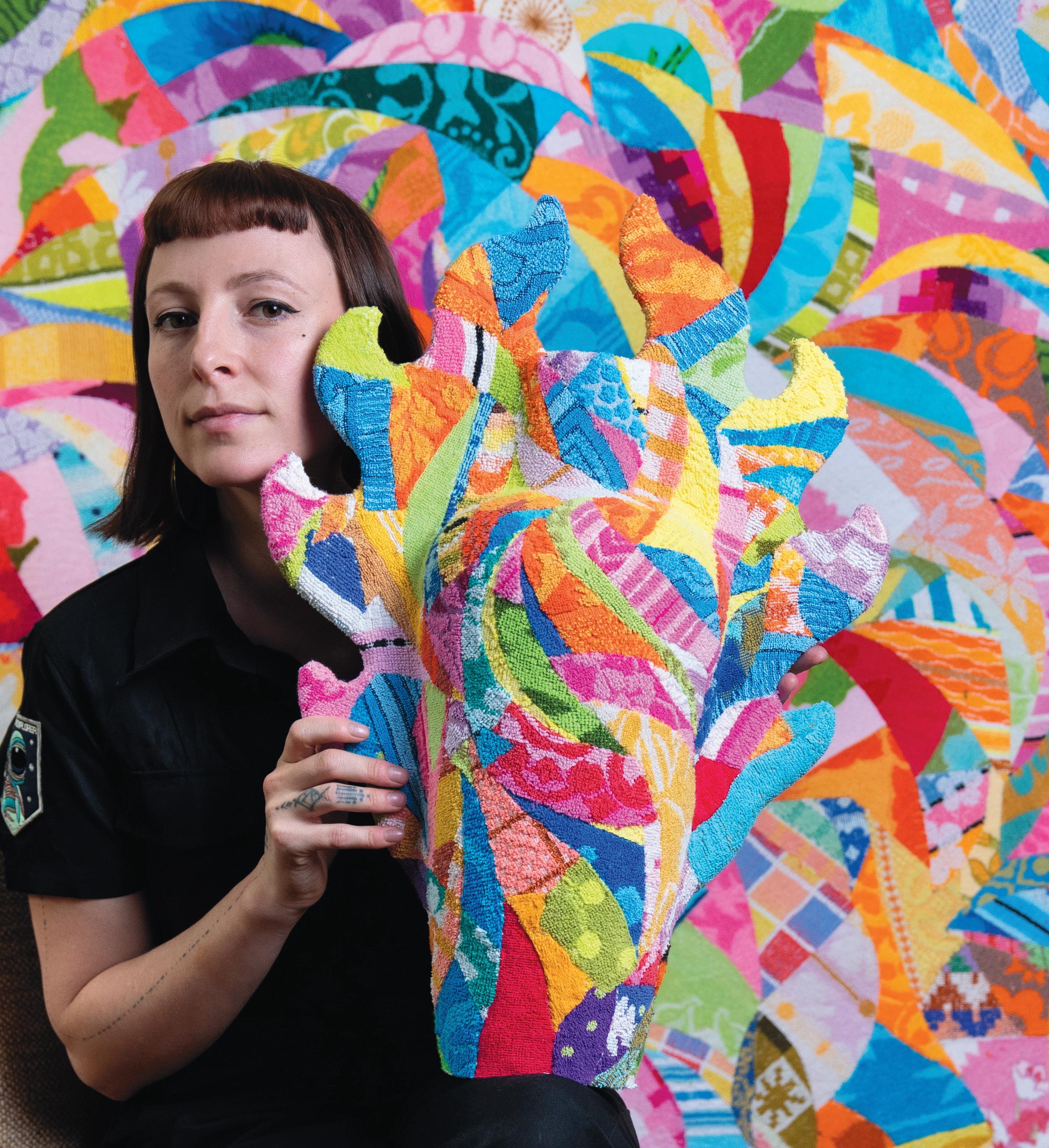

“That curiosity was explosive and propelled me toward these pockets of society that felt hidden away.”
You hear the word ‘stripper’ and you think, well, someone stripping naked in front of other people in exchange for money. Obviously, that’s part of it and Jamie-Lee actually relished the opportunity to dance and move her body. But she also felt brave at the time. At no point did she feel like she was being taken advantage of, but rather taking advantage of the situation – a bold move made to regain some control and power. She not only learnt about herself, but about the people in front of her too. Unpredictably, talking to other humans on a deep level goes hand in hand with the stripping profession.
“Yes, it’s mostly men – and they open up and spend a lot of time talking to you, sharing stuff from deep down inside. I had some crazy conversations and, to be honest, I found it fascinating. But as time goes on, reality kicks in, right? It was becoming taxing on my body and my desire to work on films, building sets and props needed to start coming first – I had to find a way to do that with my life instead.”
That bit was going to be easier said than done – especially because you go from making good money at the club, to the office junior again with limited experience and a minimum wage. But as always, Jamie-Lee had a plan. ››
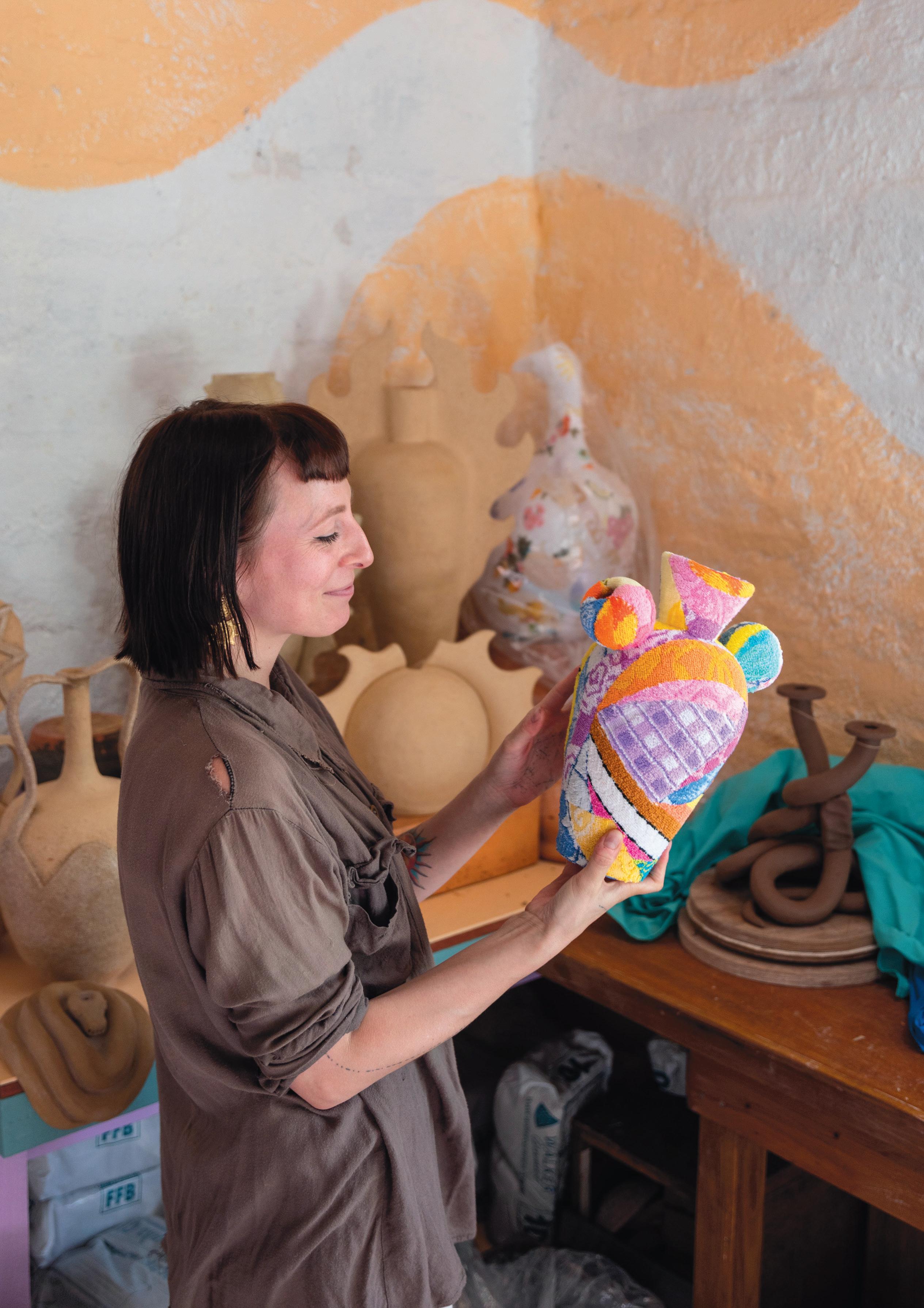
“when I returned to Australia I was in a very different place with my practice – and that’s when I tried to make the first Fluffie.”
The year was 2013 and Wolverine was being filmed in Sydney. The confidence, drive and determination we’ve come to know and love from Jamie-Lee kicked in (“I don’t dick around”) and one day she used every ounce of it to show up at the graphic design department and announce: “I’m going to come in every day and I’ll do whatever work you need.”
That was the beginning of a threemonth unpaid gig that led to actual paid gigs, until Jamie-Lee secured regular, ongoing work in the industry she’d been striving to crack for years. She loved the variety of the roles, the creativity served up daily and the experience she was building along the way. She didn’t love the day she realised it was an incredibly wasteful industry.
“It was my job to take the props to the tip,” she says. “We’d try to sell as much as we could, but when you’re on a set timeframe to bump out, sometimes things just have to go – I was throwing out big pieces of furniture and mattresses. It wasn’t cool.”
At the same time, Jamie-Lee began studying architecture – an industry
that was championing sustainability. She was in two minds. While she wanted to keep learning about production design, the industry’s wasteful ways simply didn’t align with her values and she knew it was time to pivot.
“I couldn’t unsee it, and I was developing an interest in mud brick building, permaculture and sustainable design. I knew it was the path for me.”
So that was the path she took. The next three years saw Jamie-Lee studying a Bachelor of Architecture at the University of Sydney. It was a love/hate relationship – loved the practice, hated the long hours, loved the design, hated the expectation to pull an all-nighter. For the record, she never did – “I’d already paid my due with all-nighters as Vivienne… by this point I was done!”. That aside, Jamie-Lee made it to the end of the degree and despite emerging slightly broken, knew it had been the right move. She sought a well-earned break and, because she doesn’t really know how to take a break,
started teaching herself animation in her ‘time off’.
It was a short clip she’d created on sustainability that led to her next adventure: working for a podcast startup.
“I got through the door the same way I did at Wolverine really, by convincing people I’m more advanced in the field than I actually am. I’d say, ‘Yep, I can do that’, then go home and figure it out. But it got my foot in the door and they started to see how accompanying visuals for podcasts was a pretty valuable addition. One day a week grew to four and I settled in for the next few years.”
By year three, itchy feet were kicking in once more and Jamie-Lee, her husband Jim and their poodle Joe had plans for a tree change – specifically to a rambling mud brick home on 100 acres of wild bushland on the outskirts of Glen Innes. It would be their own creative palace, a space to breathe and make art. Jamie-Lee tactfully wound down her days with the podcast team and the next path was set. ››
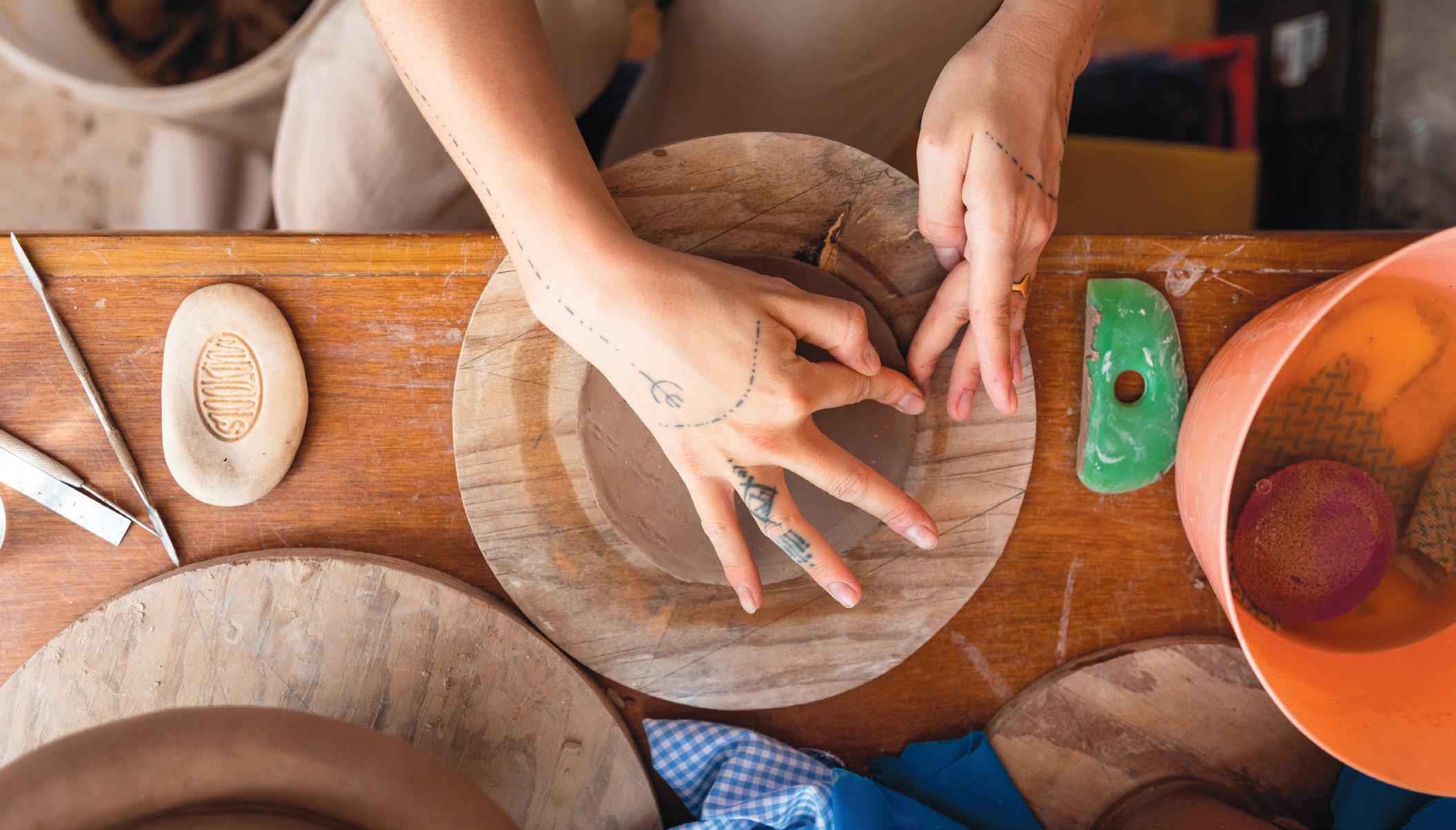


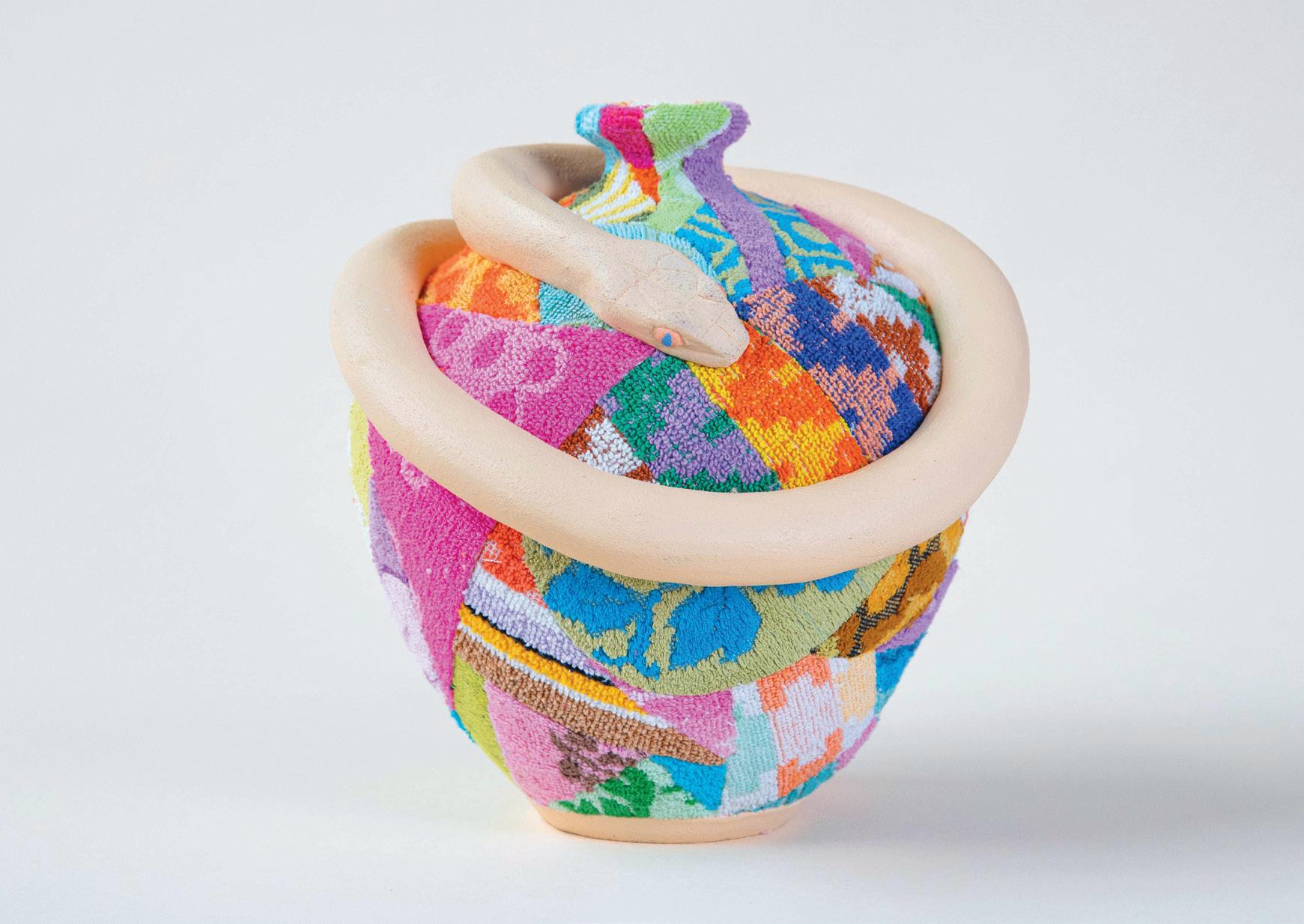
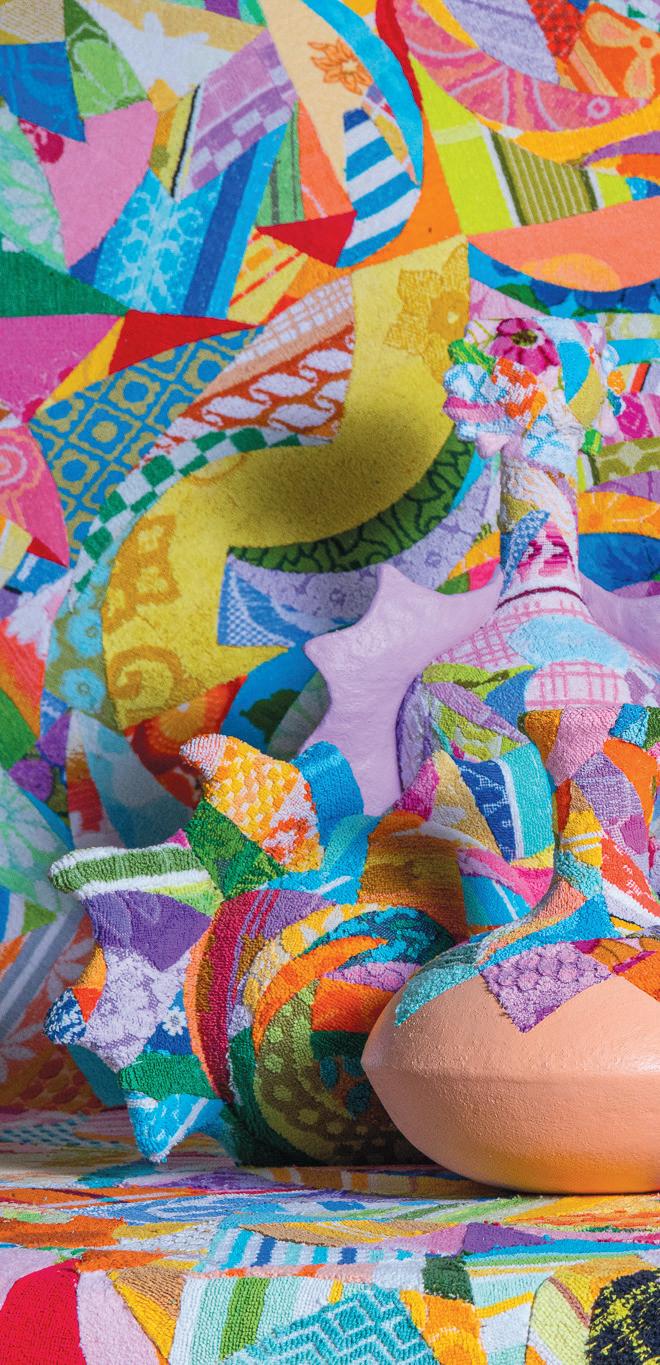
You might have picked up by now that choosing the life of an artist is rarely linear. It can feel broken and disjointed, overwhelming and lonely. Jamie-Lee’s tip for taking the path less travelled? Regular reiteration.
“That feeling comes fairly constantly – when something isn’t working, I have to ask myself, ‘How can I do this better or how can I pivot?’” she says. “When we first moved to the country, I was working on my painting, but I began to feel stuck in the studio and needed to get out. I thought, how are you meant to make art from a place when you see nothing? So I picked up a camera and used photography to get outside. I’d go on big walks and solo camping trips, shoot for a couple of days and return home, reinvigorated.”
But still, she needed more. A residency in France had been a long-held dream, and one Jamie-Lee knew she now needed to fulfil. She flew to the South of France to immerse herself in the change of seasons and the work of fellow artists in a small town called Maussane-lesAlpilles. It was everything she hoped it would be, while also delivering something wholly unexpected.
“It broke the fantasy,” she says.
“Aside from being around other artists, there were moments where I felt like I could be doing the same thing at home. I loved that it did that for me, because when I returned to Australia I was in a very different place with my practice – and that’s when I tried to make the first Fluffie.”
What’s a Fluffie? Great question.
A Fluffie is the colour-filled heart of Jamie-Lee’s latest artistic offering. Think ceramics, short and tall, curved and sharp, some even enveloped by a snake. Then add fabric, scraps of vintage towels every colour of the rainbow, the offcuts of another family business.
“Jim’s cousin Karina makes one-of-akind, handmade fashion pieces from archival vintage towels – the brand is called Re/lax Remade. One day, I asked her if I could use the scraps… and she kindly said yes. From there, I just needed to figure out how to make ceramics.”
I love how that sentence sounds entirely seamless coming from Jamie-Lee’s lips. Sure, ceramics, how hard can it be, right? She’d had a few classes back in Sydney thanks to a gift from Jim, and knew the practice was easily accessible
in Glen Innes since there was a local club in town with its own kiln to boot.
Jamie-Lee also drew on her time spent assisting fellow artist Janet Laurence when diving headfirst into this new medium.
“My time with Janet was priceless because it helped me to realise what an artist actually does. Once upon a time, I felt like I had to have so much control over everything and do it in a particular way, but Janet is actually quite loose with the way she works and showed me that the structure I’d often place on my practice wasn’t needed. I loosened up, leaned in and really loved the process. It took me back to model making in architecture and I found the repetitive aspect really soothing. From there, I knew I needed to rein it in again, focus and commit to the medium. So that’s what I did for the entirety of 2023-2024, and that’s how Fluffies were born.”
The result is a body of work that could have burst forth from a unicorn, an uber-talented one… with opposable thumbs. It’s bright, beautiful and entirely full of joy. But beyond the obvious visual appeal, the Fluffies connect Jamie-Lee to the long line of what is historically ‘women’s work’ in fabric. ››
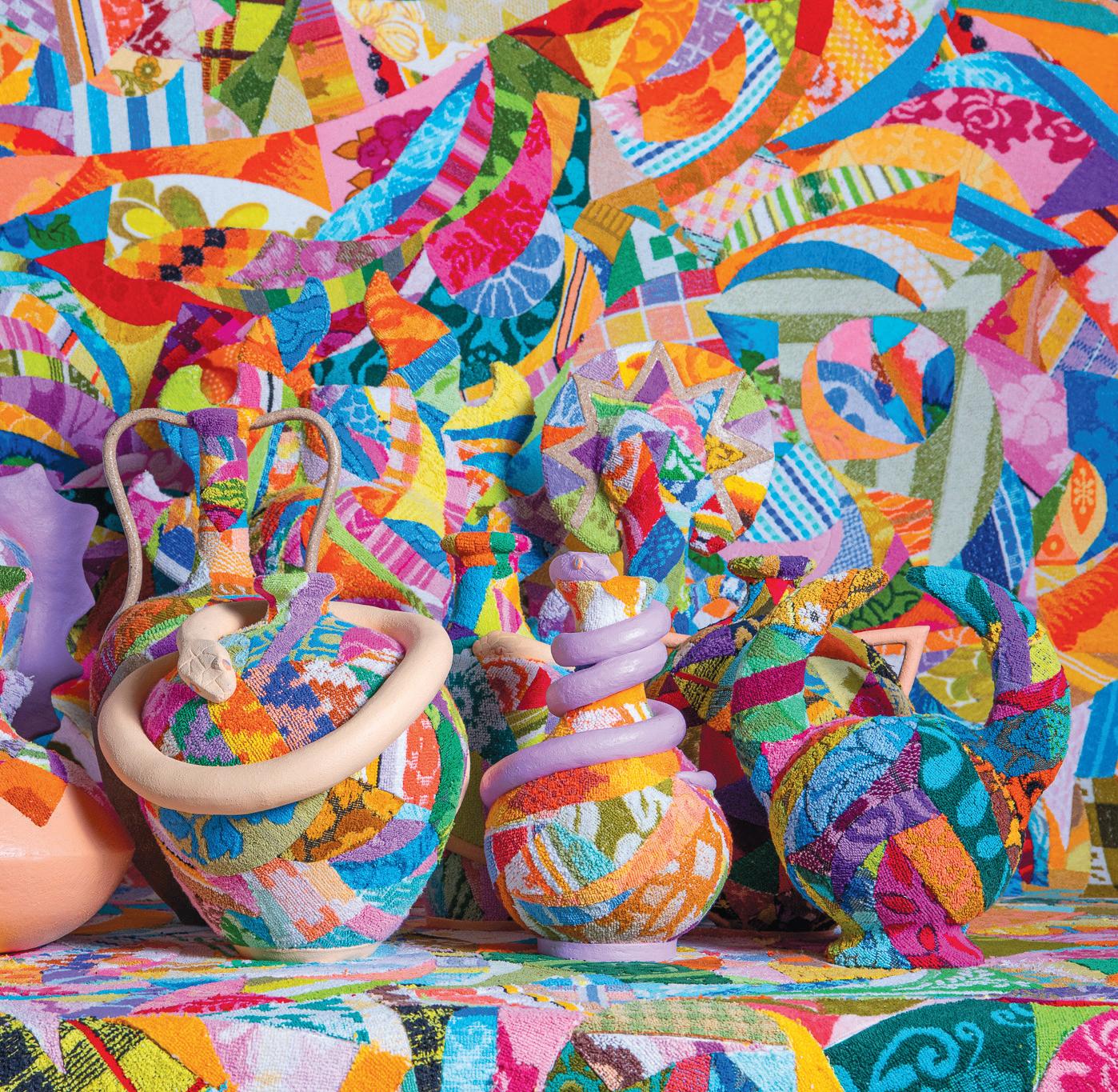

“Every day I’m discovering more about the medium itself, the process behind it and why it feels like it has emotions.”
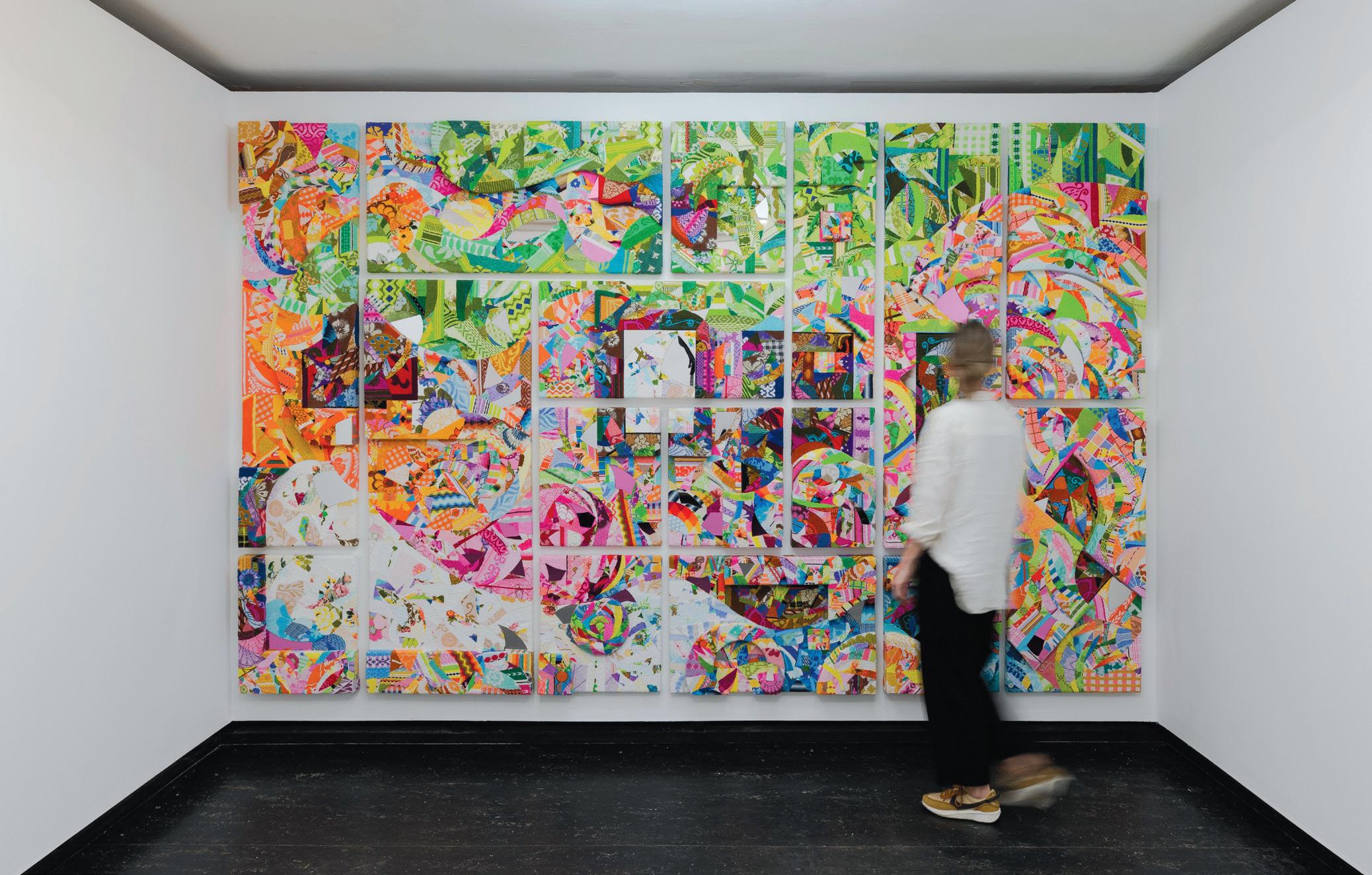
“A kaleidoscope of cotton threads that weave a bridge to our emotions.”
“Every day I’m discovering more about the medium itself, the process behind it and why it feels like it has emotions,” says Jamie-Lee. “Once I started unpacking textile history, particularly around the time of the industrial revolution, I came to learn that out of steel, coal and textiles, textiles was the largest of the three. At the time, the textile industry was employing millions of women and pioneering binary mechanisation, a precursor to modern computers. For myself, I am exploring how textiles carry the energetic signature of our memories. A kaleidoscope of cotton threads that weave a bridge to our emotions.”
If you ask me, a kaleidoscope of colour is what the world needs right now. But what I love even more is the fact that Jamie-Lee brought the Fluffies collection to life while also growing and birthing her firstborn child, Eden. From feeling bogged down in her art, trying to focus on the emotionally dark, despairing side of the world – “like a lot of artists do” – to making something so joyful and positive even came as a shock to the artist herself.
“It was pretty strange for me to be making something so colourful, and it’s interesting for it to happen in tandem with having Eden – but it’s brought me so much happiness to work towards something positive and focus on the abundance of excess material. I mean, it’s literally scraps, but they come together to create something so rich. Then to have my first show in Sydney at 37 weeks pregnant, and my second show in Brisbane with three-month-old Eden on my lap, it’s been a really beautiful experience and one I’m now driven to share as much as possible.”
From the early threads of a painted pillowcase to handmade pots encased in rescued rainbows, the path to this artist’s life has been colourful, courageous and entirely unpredictable. While the lack of a stable income has worried Jamie-Lee’s mum at times, she also knows her daughter will always find a way.
“My mum was the first person in her family to go to university and she’s raised four girls, three of which are out
there caring for people daily in the healthcare industry. Then here I am, making these wild, left-of-field decisions. I know it used to scare her because we grew up poor and the life of an artist was a complete unknown – to me too. But there’s a part of me that kicks in when I need it most, something takes over to figure it out, like my family always had to. I will always find a way because anytime I imagine myself going into a more traditional career for the sake of financial security, my chest pounds and my heart screams.
“So I can’t do it. Instead, I’ll find the thing that needs to come next, take elements of what I did before and build my own career – it can be kind of terrifying, but you’ve got to give things in life time to grow. All too often, in this internet-driven, social media-fuelled world, we see images and footage of people creating and it seems to happen so fast. That’s not how it works.
The Fluffies weren’t an idea that I had overnight and created the next week. It takes time. When I surrender to that, I always find my way.” *
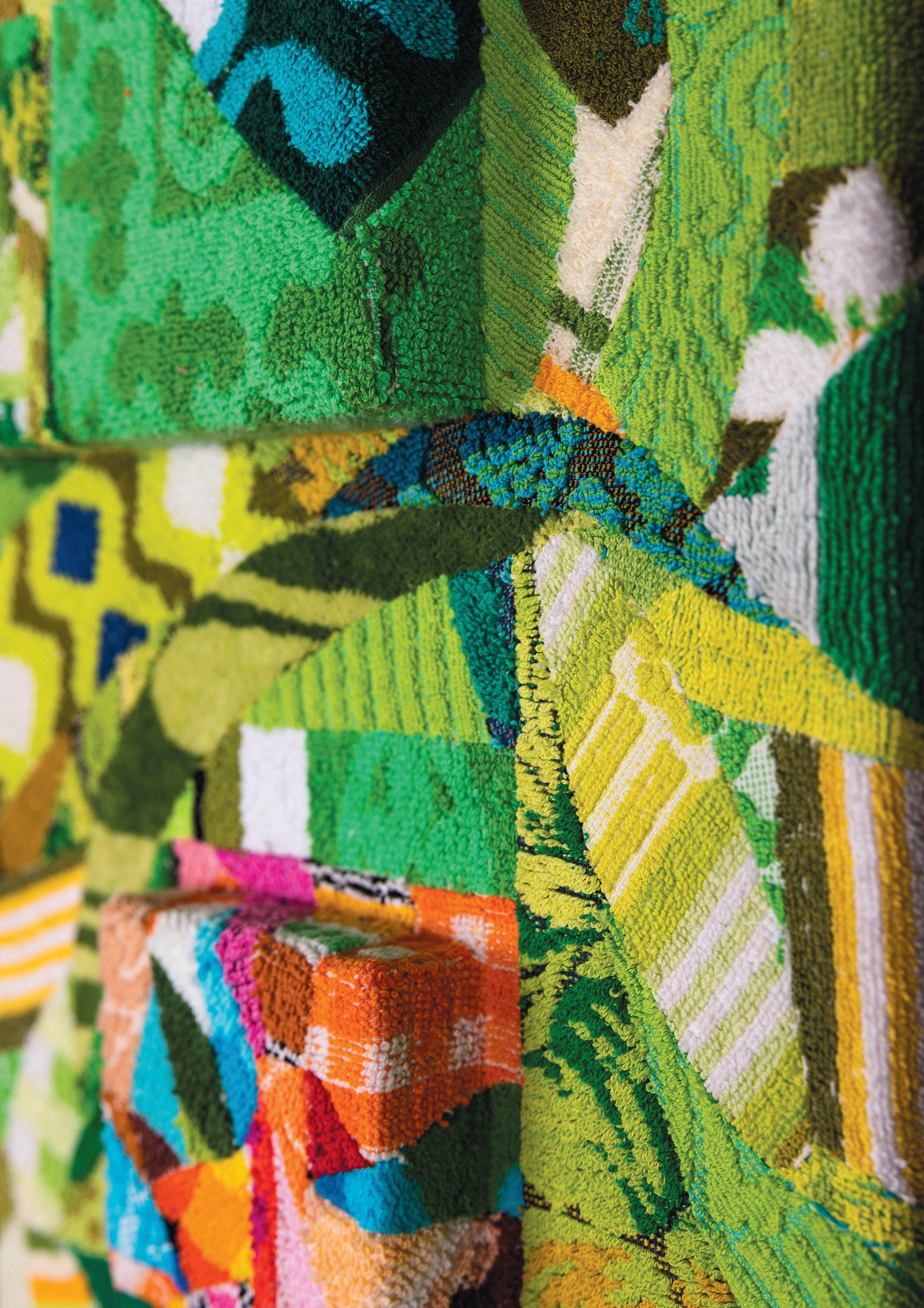
What’s next for Jamie-Lee Garner? I’m glad you asked.
“I can feel the ship turning and am becoming very interested in making public art and working at an architectural scale. I’m looking towards future opportunities to work with different architectural materials and create permanent works. For now, while the ship makes its long and slow pivot, I am hoping to get a chance to at least Fluffie a whole room, or more!”
Want to follow Jamie-Lee Garner and her kaleidoscope of colour?
You can keep up to date with all her wondrous creations, including her renowned Fluffies collection, through her website and social media.
JAMFACTORY EXHIBITION
8 August to 7 September
JamFactory, Tarntanya, Adelaide, South Australia
Jamie-Lee’s works will be in the Collect space, alongside other works with a connection to weaving and textiles.
jamieleegarner.com @jl_gi
Nestled in Armidale, NSW, BackTrack Youth Works is more than an organisation – it’s a lifeline for vulnerable young people weathering life’s toughest storms. WORDS AND PHOTOGRAPHY supplied by Regional Australia Bank
Founded in 2006 by Bernie Shakeshaft, BackTrack began with a humble shed, a dedicated group of volunteers, and a pack of working dogs. Today, it’s a nationally recognised initiative that’s transforming lives across regional Australia. At its core, BackTrack is united by a simple yet powerful mission: “To keep kids alive, out of jail, and chasing their hopes and dreams.”
Through education, training, and employment opportunities, BackTrack empowers at-risk youth to break free from cycles of hardship and envision a brighter future. The approach goes beyond checklists and milestones – it’s about surrounding young people with support, connection, and hope as they work toward their full potential.
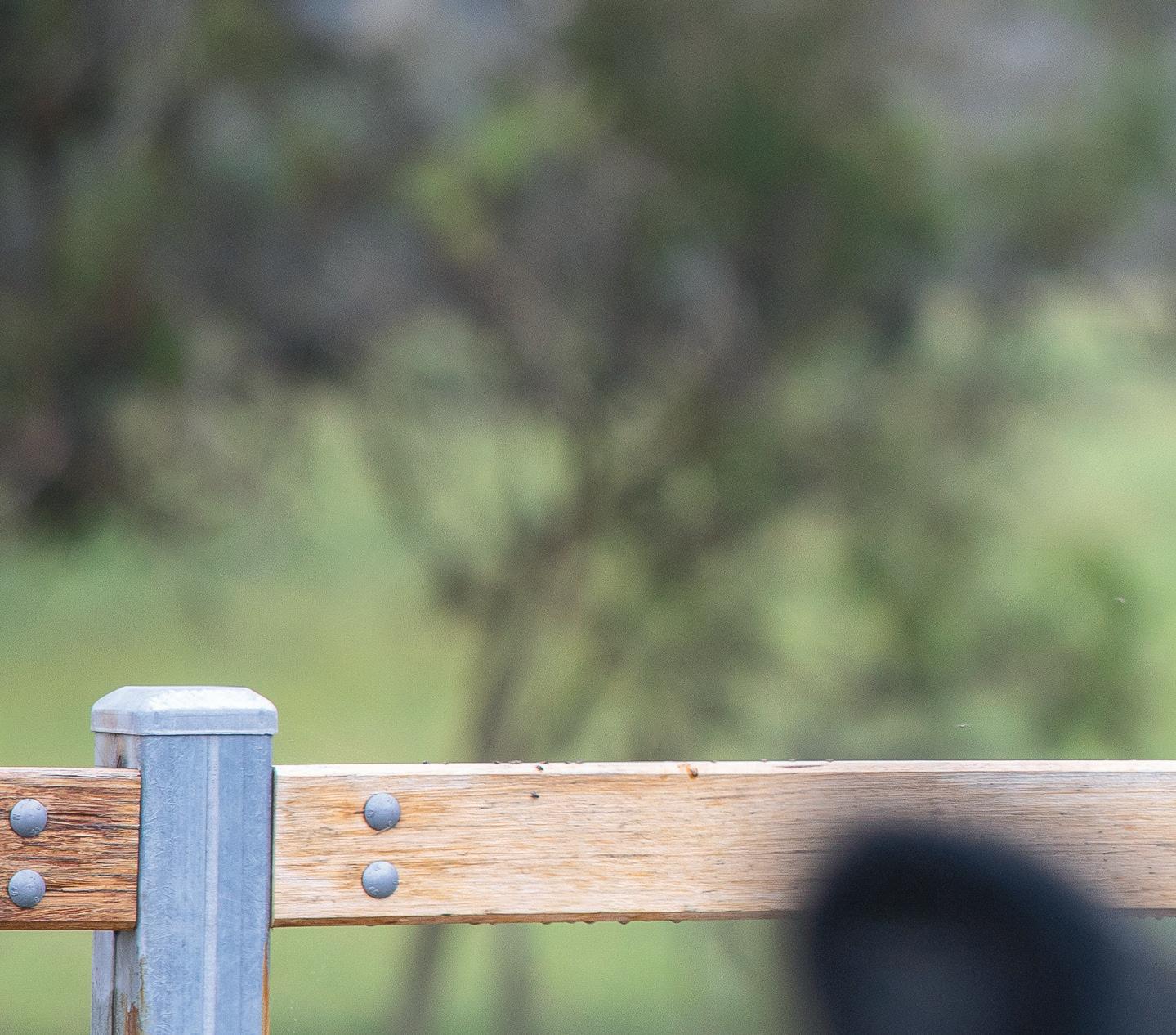
BackTrack’s success stories are proof of its life-changing impact. Each participant’s involvement tells a story of perseverance and possibility. Many achieve key milestones, like earning their Record of School Achievement (RoSA), obtaining their learner permits, or securing rewarding apprenticeships.
One of BackTrack’s recent triumphs saw a long-time participant graduate as a fully qualified tradesperson. This was not merely personal growth – it was a ripple effect that inspired their family and community alike.
Beyond individual achievements, BackTrack contributes to the wider community by encouraging youth to give back. Participants engage in outreach activities such as disaster recovery efforts, visiting aged care homes, or volunteering in schools. These initiatives instil a sense of purpose and belonging – vital elements that help young people rebuild their confidence while uplifting Armidale. It’s a win-win for all.
From day one, Regional Australia Bank has stood shoulder to shoulder with BackTrack. When BackTrack struggled to cover core costs like insurance, Regional Australia Bank stepped in as one of the group’s earliest and most loyal partners. That supportive relationship has only deepened over the years, with Regional Australia Bank providing essential funding and resources that have fuelled BackTrack’s remarkable growth and regional influence.
The partnership also goes beyond financial aid. Whether supporting BackTrack’s celebrated Paws Up program –where youth and working dogs train together – or hosting financial literacy workshops, Regional Australia Bank brings tangible and strategic value. Their shared commitment to supporting regional resilience has shaped some of BackTrack’s biggest milestones.

More recently, as BackTrack received the gift of a farm to support its long-term plans, Regional Australia Bank has been instrumental in helping the organisation chart its exciting future. By assisting with strategies for sustainability and scaling operations, Regional Australia Bank ensures that BackTrack continues to grow and touch even more lives, both in Armidale and across regional Australia, through the emerging BackTrack network.
The growing relationship between BackTrack and Regional Australia Bank is a shining example of what happens when shared values meet meaningful support. BackTrack’s transformational work perfectly mirrors Regional Australia Bank’s commitment to building stronger regional communities.
“Regional Australia Bank has stood side by side with us,” says Bernie Shakeshaft, “helping turn a challenging start into a vision that’s changing lives throughout Armidale and beyond.” *
You don’t have to live in Armidale to make a difference. Support BackTrack by donating, volunteering, attending events, or banking with Regional Australia Bank, which champions initiatives like this through their Community Partnership Program. Your contribution can empower young Australians to take the leap toward brighter futures.
BackTrack Youth Works isn’t just creating opportunities; it’s transforming futures one step at a time. Join their movement – visit their website or follow their inspiring story on Instagram @backtrackyouthworks. Together, we can ensure that no young person is left behind.
The Community Partnership Program Guidelines are subject to change. Terms, conditions, fees and charges may apply. Please refer to our website for more information.

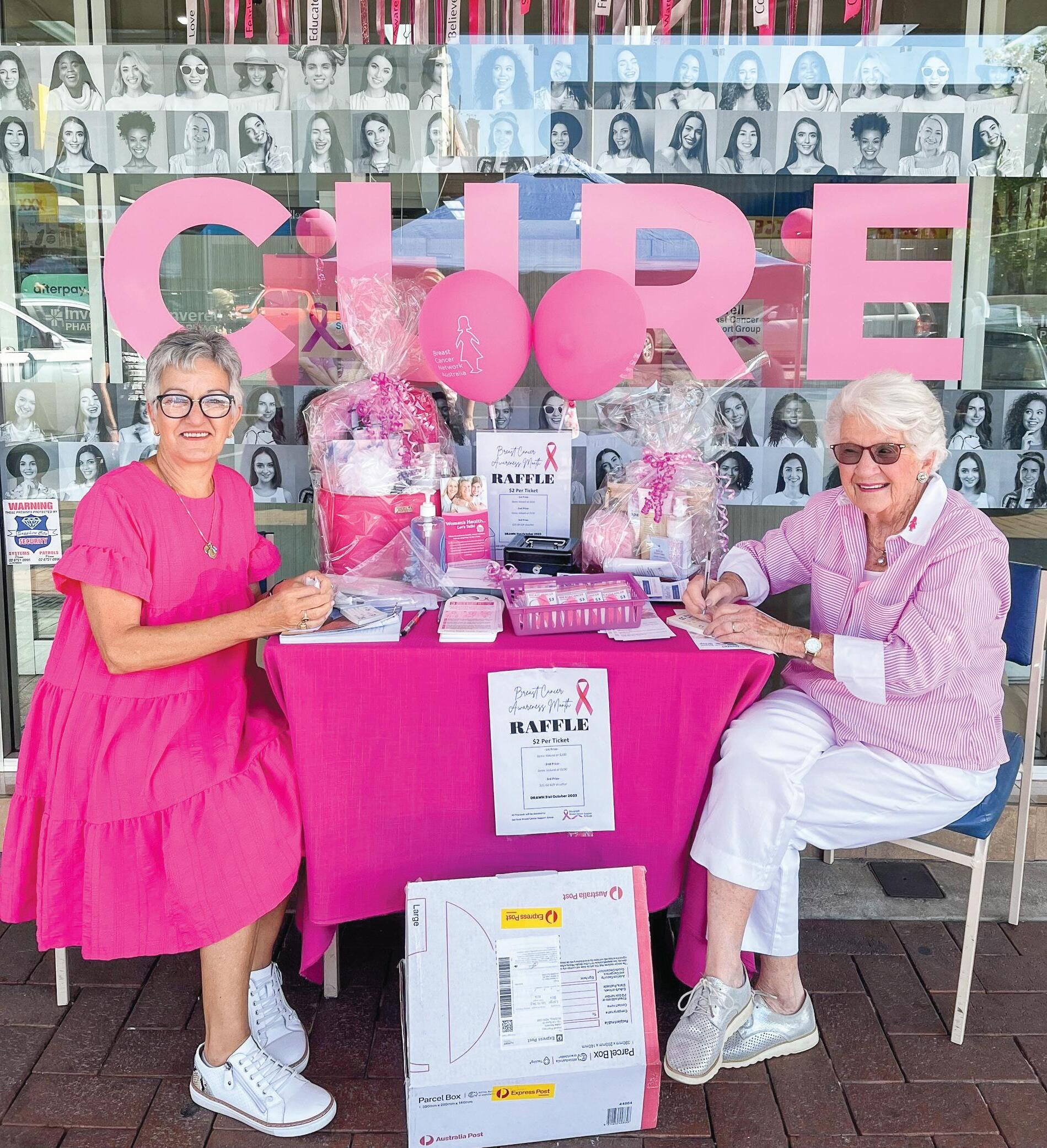
In the heart of Inverell, a community group is making a real difference for those battling cancer. The Inverell Breast Cancer Support Group, led by the dedicated Trish Keightley, showcases the true power of community spirit.
WORDS AND PHOTOGRAPHY supplied by Regional Australia Bank
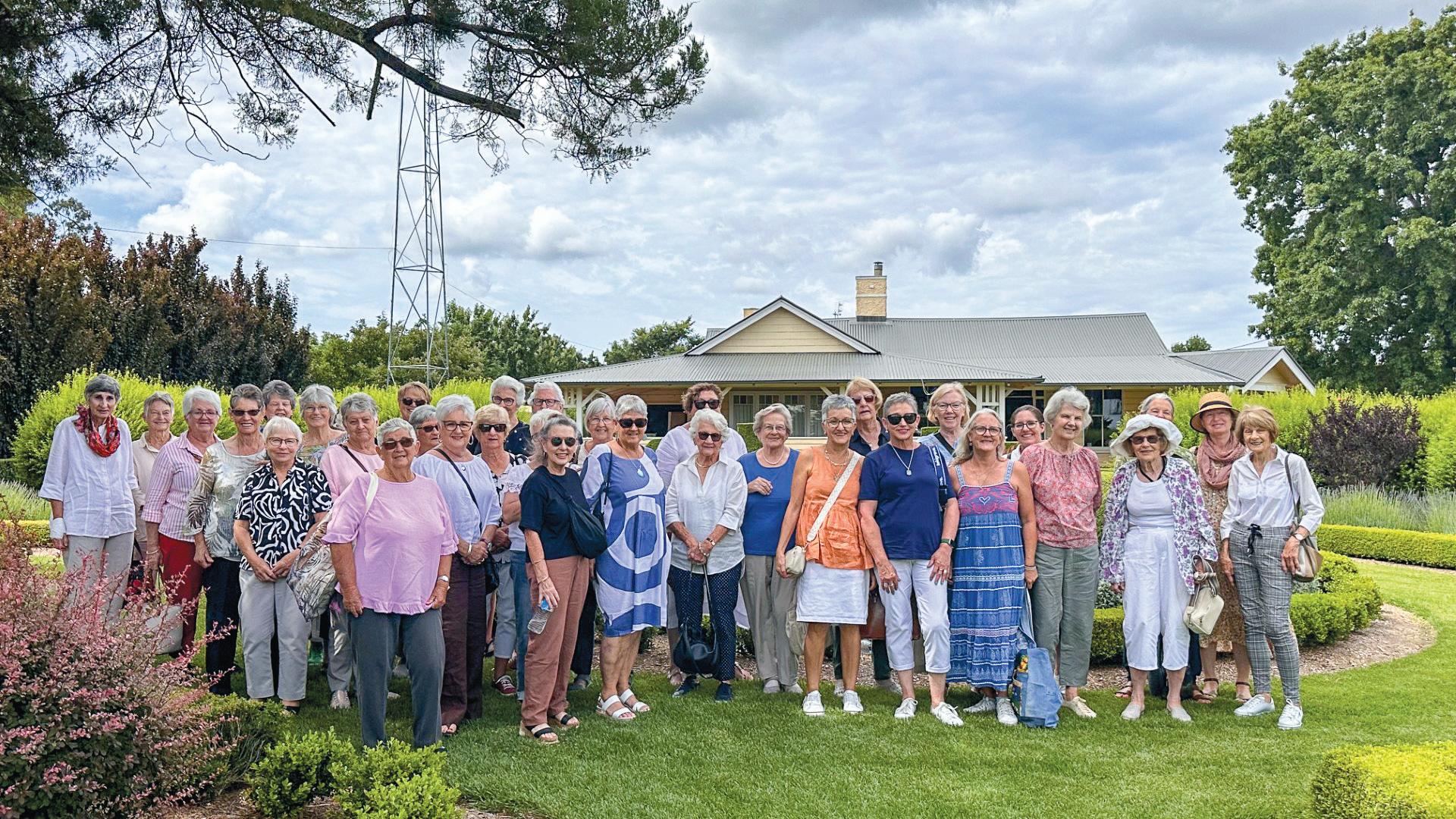
The story of the Inverell Breast Cancer Support Group started simply, with a few ladies who had faced breast cancer getting together over a cup of tea. What began as a small act of support has now grown into a dynamic network that reaches numerous women and children every year. Their evolution from a cosy gathering to a significant support organisation shows just how impactful community efforts can be.
For more than 30 years, this group has been a pillar of strength for those affected by cancer. Their commitment to providing both financial and emotional support has touched countless lives. Whether it’s offering head scarves, post-surgery cushions, or organising social buses, their services go far beyond basic assistance, embodying a spirit of solidarity and care.
A standout feature of this group is the overwhelming support they receive from local clubs, sporting groups, and individuals in Inverell and nearby towns.
“Often people we have supported will then give back to our organisation,” says Trish. This cycle of giving and
receiving creates a resilient network of compassion, reinforcing their mission.
Of course, running a community group isn’t without its challenges – the biggest being the need for active members. Despite these hurdles, their vision for the future remains clear: they want to engage younger community members and encourage them to join, even if they haven’t faced cancer themselves. This inclusive approach ensures the group’s longevity and continued impact.
The Inverell Breast Cancer Support Group always welcomes new members and supporters. Monthly meetings, annual lunches around Mother’s Day and Christmas, and social bus trips are just a few ways to get involved.
“We would love some new younger members of the community to get involved,” adds Trish. “If I had to describe the group in three words, they would be supportive, generous, and caring. So please do reach out if you’d like to lend a hand.” *
The Community Partnership Program by Regional Australia Bank has been crucial in empowering the Inverell Breast Cancer Support Group, contributing over $37,000 in the past two years. This funding gives the group the confidence to continue their work – which is essential given the group is a beacon of hope and resilience in regional Australia.
Through the tireless efforts of its members and the support of Regional Australia Bank and others, they continue to make a significant difference in many lives. Their journey reminds us what can be achieved when a community comes together with heart and a shared purpose. Whether this story touches you personally or you simply want to support a great cause, remember to list the Inverell Breast Cancer Support Group as your recipient organisation for the Community Partnership Program if you bank with Regional Australia Bank.
The Community Partnership Program Guidelines are subject to change. Terms, conditions, fees and charges may apply. Please refer to our website for more information. Regional Australia Bank Ltd ABN 21 087 650 360 Australian Credit Licence and AFSL 241167.”

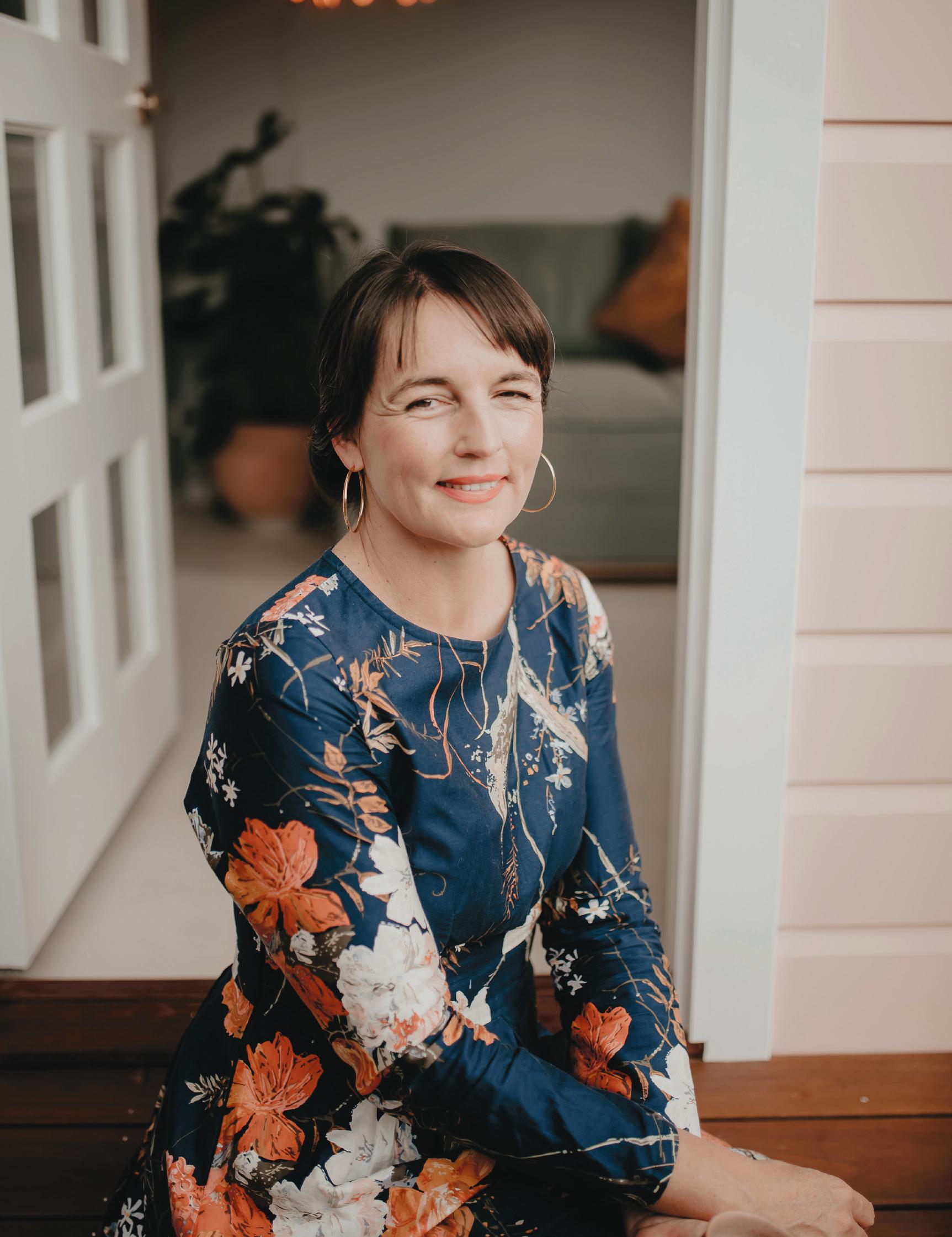
THE LIFELONG STORYTELLER ON TENDING TO YOUR CRAFT, FINDING YOUR ENTREPRENEURIAL SIDE AND STAYING IN YOUR OWN LANE.
Acclaimed author Zanni Louise (nee Suzannah Arnot) spent her childhood on a bush property on the outskirts of Inverell. When she wasn’t exploring the gum tree gullies behind her house, she sat inside an old olive tree, whose branches made a cubby. There, Zanni created characters and stories – sowing the very first seed for the tales she shares today.
WORDS As told to Steph Wanless PHOTOGRAPHY Sanne Wissels, SW Photography
Illustrations by Judy Watson Hazel’s Treehouse published by Walker Books
When I was little, we lived on a property about five kilometres outside of Inverell. It was a 12-acre hobby farm surrounded by gum trees and my parents gave my brothers and I a lot of freedom to explore. We had loads of different animals and even grew chestnuts. But my favourite place by far was the old olive tree. Its branches grew from the ground up like a cave and I spent so much time there on my own, creating characters and having conversations with them. To this day I can remember what they looked like and the games we played so vividly – imagination is so strong at that age.
There was a family of little bears – a mum and dad bear, a brother and a sister. At the bottom of the olive tree there was a small section of bark that looked like a little door, so it became the bear family’s front door. I’d help them get ready for school and go about their day. There was also a talking magpie and a fairy, of course. Then I added a miserly old king who lived in a little boab tree beside the olive tree. A little war grew between him and the bears, who I had to protect and care for.
This went on from the ages of five to seven, and I can remember it with far more detail than anything else in my life at that time. They were my first stories, the tales I created before even being able to write. Then one day, Dad brought home a typewriter. It was so exciting because I could finally put my stories to paper, to have and to hold and share with people. That was really special. Before I knew it, I was writing plays every Christmas and carrying a folder of stories in my bag to school each day, emblazoned with gold stickers. Writing was most definitely nurtured in our family. Both my parents wrote, and my uncle wrote plays. We were surrounded by creativity and my parents always provided space for it. They encouraged me to have adventures, follow my interests and explore everything from writing to art and drama.
After school, I got into visual arts in a big way. I decided to go study it, but early on I realised the focus was more on conceptual art rather than painting, and that wasn’t what I was looking for. So from there I moved to Melbourne to study art history at the University of Melbourne and my passion for the subject grew. When my degree ended, I volunteered at an

art gallery and ended up working there as the manager –so I was very immersed in the contemporary art world before moving to northern NSW. That’s when I started writing again.
I found the regional move gave me the time and space to let my mind wander. All of a sudden it had the room to start telling stories again and I realised – this is what I’ve been doing my whole life. So I started writing a daily blog – it just became something I did once the kids were asleep. Looking back, it definitely improved my writing because I was stretching those muscles daily, uninterrupted by the constant hum of traffic, instead surrounded by fresh air and the quiet of country life. But at the same time, I was interacting with an audience and it just so happened that one of my readers had kids the same age and asked a question about my work. As it turned out, she was a children’s book publisher. Tash helped me to discover the idea of writing for children and to this day I publish most of my books with her.
The first story I published was called Too Busy Sleeping It’s a picture book written from the perspective of a child who’s just welcomed a new baby into the house. The older kid wants to play with their sibling, thinking the baby can join in on their games, but of course the baby’s too busy sleeping. That first manuscript was written on pure instinct. I was nervous to send it to Tash, but since my husband told me the story made him cry every time he read it we thought, what have I got to lose? Sometimes you just need to leap, say yes and see where it takes you.
That’s really been the tone for my whole career – doing the work, building community and saying yes to what comes my way. I go to writing groups and courses regularly and always attend the Byron Writers Festival. We have so many great opportunities on our doorstep to help us hone our craft and connect with other writers. It’s not a career that happens overnight. Being a full-time author is something I’ve grown into, slowly. There were years where I’d make $1000-$2000 from my books. You obviously can’t live off that, so it was a combination of living quite frugally and being a bit entrepreneurial. ››
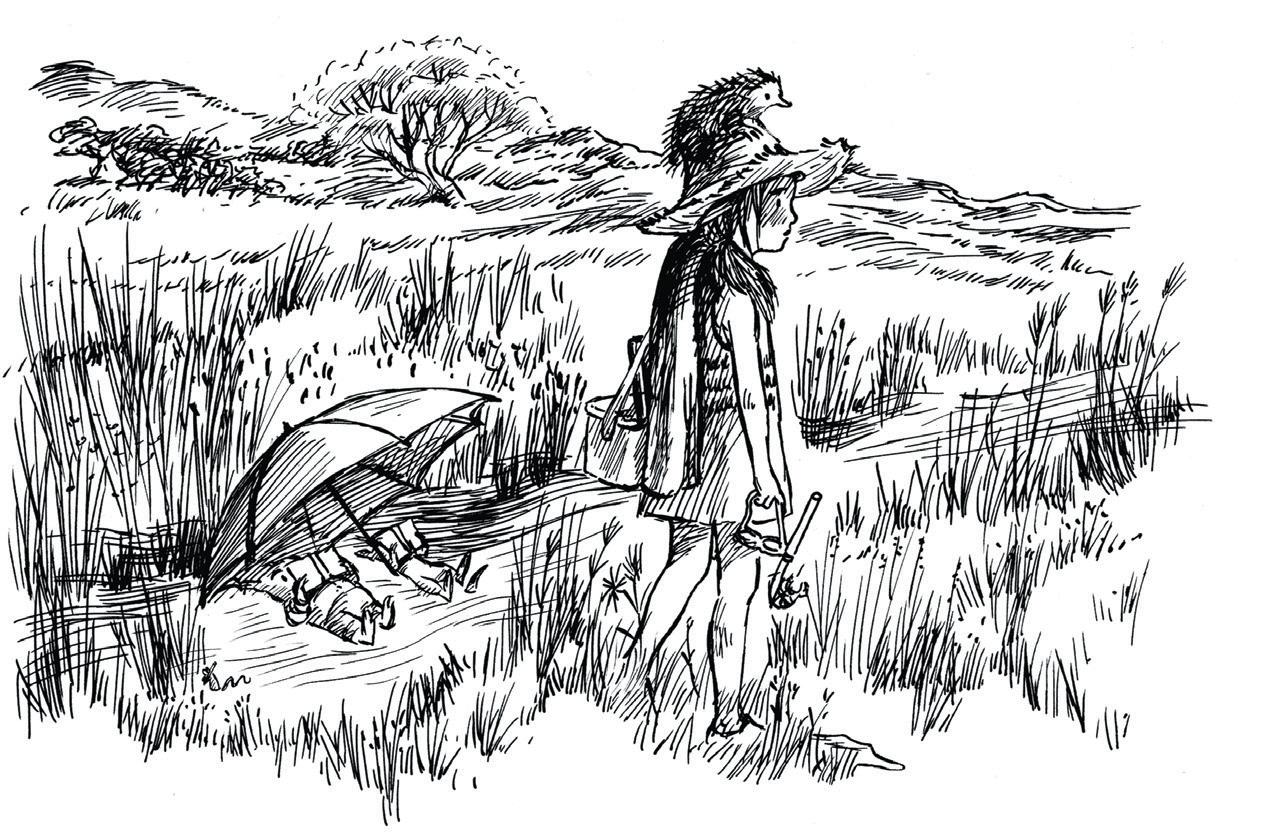

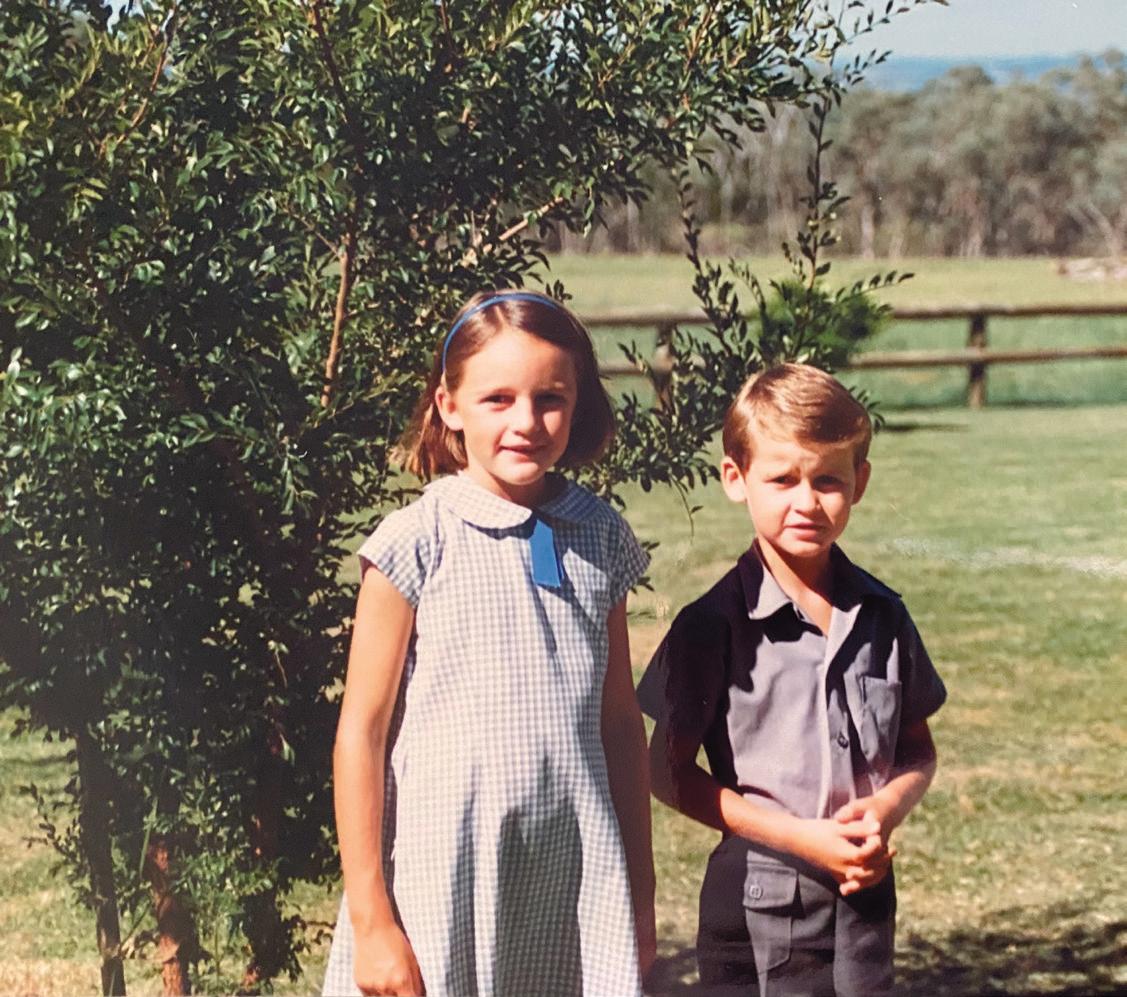
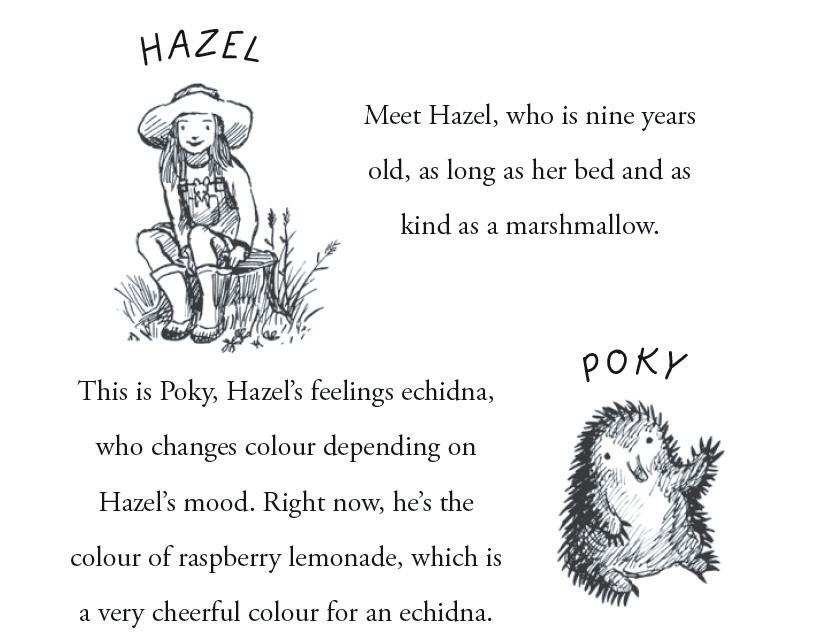
“We were surrounded by creativity and my parents always provided space for it.”
I think the people who make a living out of something creative have to be fairly entrepreneurial. They’re usually pretty good at looking at other ways to monetise what they do. For me, it was teaching writing through the Australian Writers’ Centre and visiting schools. I also do a lot of mentoring and run courses and writing retreats. I love it. It’s come about so organically and is very rewarding. All those things combined have enabled me to piece together an income, all connected to writing.
But these days, book writing is the bulk of what I do. Each year I have a lot of books out so over the space of 12 months I cumulatively make more money. I also break the year up into seasons. The summer months are my writing months, because the world winds down a bit, schools close and there are fewer emails, events and things being asked of you. In that time I’m able to immerse myself in the creative space and purely write.
From April to May I’m on the road, as there tends to be a lot of writers festivals and events during that time. While I can still be editing my work around that, I’m not in a space to be developing new work. By July, I tend to relinquish all energy to write. Then when term three and Book Week starts, I focus on storing up energy and building income through my teaching, so I’m able to spend the summer months not earning, just writing.
While the structure of my annual seasons helps, self-doubt is a perpetual thing most creative people live with. It’s not a bad thing; it keeps you good at your craft because you’ve constantly got that little whisper in your ear telling you that something might not be good enough. I think it’s rejection that hurts the most – especially when it’s something you’ve worked on for months and feel really passionate about. Then the moment comes to show it to your publisher and they tell you it’s not what they’re looking for. That happens constantly. ››


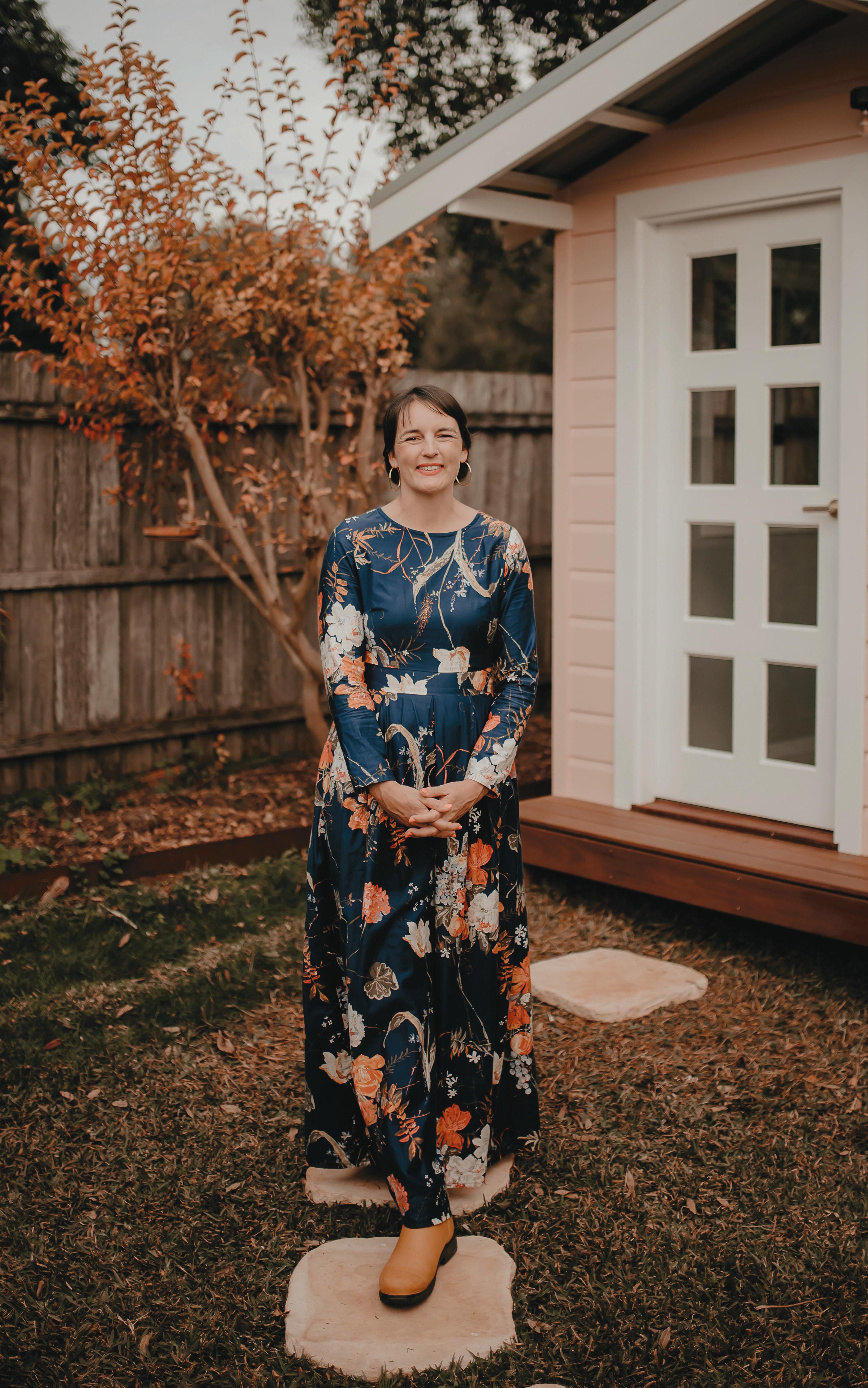

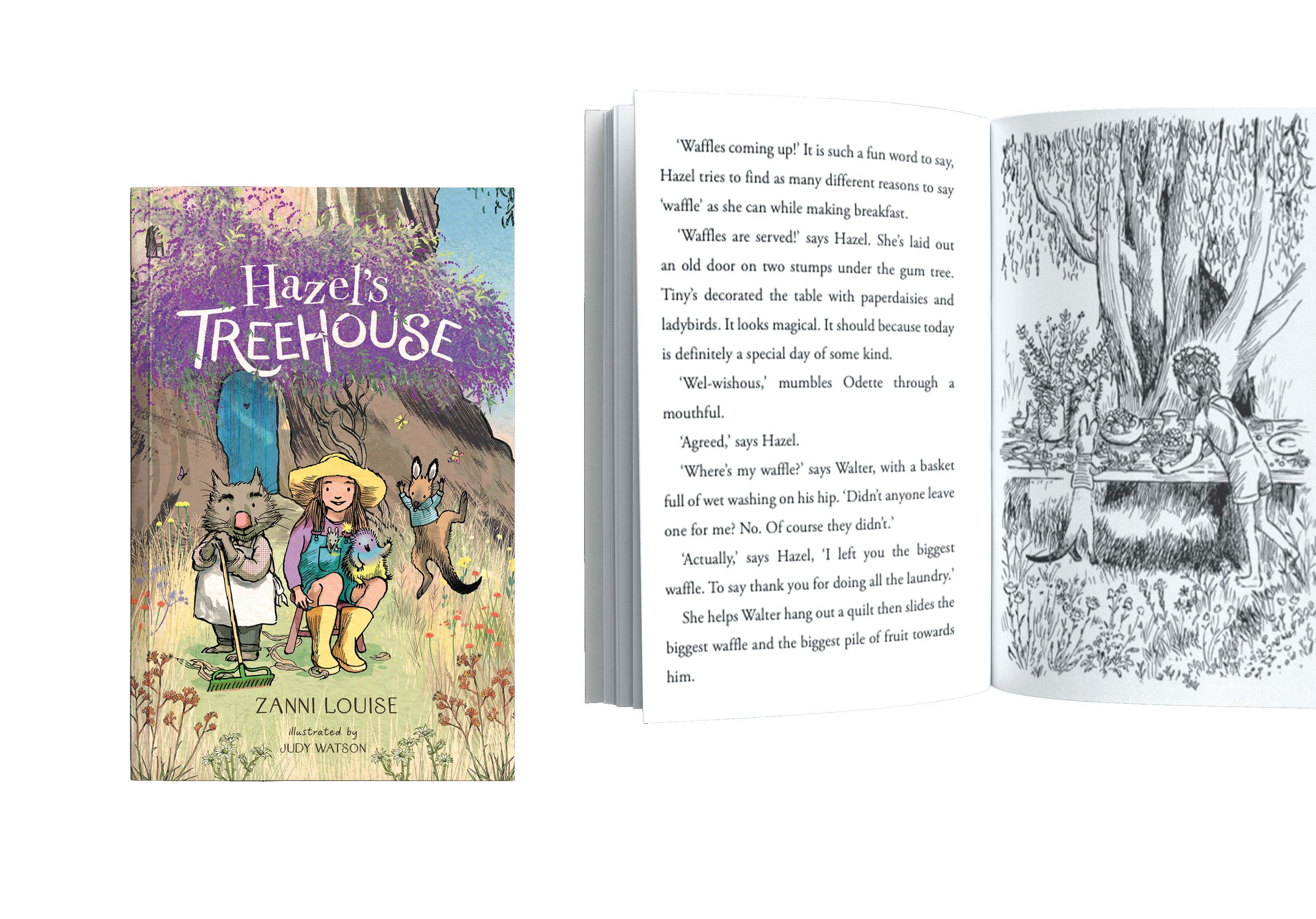
letting it sit and moving on. I use it to find new ways to do things. Because more often than not, they’re right. Something isn’t suitable or something needs to go somewhere else and that’s great. I’ve learned not to let it dampen my spirit or creativity. My mindset is to preserve creativity at all costs. That means putting some things at arm’s length during my writing months, like listening to the news. I don’t want to let too much in because I know it will impede me. Also, if there’s something going on in my personal life, I try and sort it out as quickly as possible because I know it will affect my ability to sit down and write – and that’s what I need to be able to do to feed my family. So for me, it’s a case of survival and if I have to create those guard rails and boundaries, then I will.
Beyond that, I make sure I look after my physical health – that means exercising every day and getting enough sleep. If I can keep on top of all those things then I know I can be my best creative self. I’ll also say that comparing yourself to others is a complete waste of time. That’s impacted me in the past, but I’ve learned to stay in my own lane and focus on what I’m good at. After all, everyone has their unique pathway and it’s actually impossible to compare because the creative landscape is so incredibly diverse – and that’s a good thing.
The best thing you can do is work hard and tend to your craft constantly. When I’m in the car, I’m listening to writing podcasts, when I’m watching TV, I’m paying attention to the story structure, I carry a notebook in my bag for when my next idea strikes and I always read for pleasure. None of those things feel like work, because it’s my passion. Writing is a career that becomes so integrated with your personality – it’s who you are. It’s who I am, who I’ve always been, since I was five years old talking to the family of bears wrapped in the branches of an olive tree. *
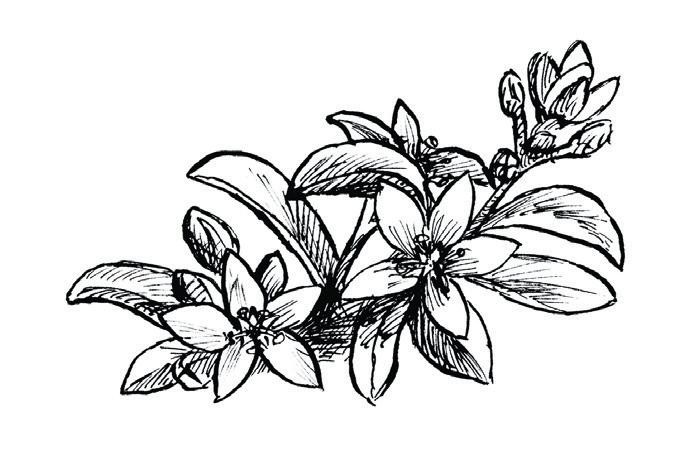
“everyone has their unique pathway and it’s actually impossible to compare because the creative landscape is so incredibly diverse – and that’s a good thing.”
Today, Zanni Louise lives in the Byron Hinterland with her family of four where she continues to tell stories and have adventures in the wilderness. She’s written more than 40 internationally published books for kids, several of which are bestsellers and have been shortlisted for awards. You can find out more about Zanni’s adventures online.
zannilouise.com @zannilouise

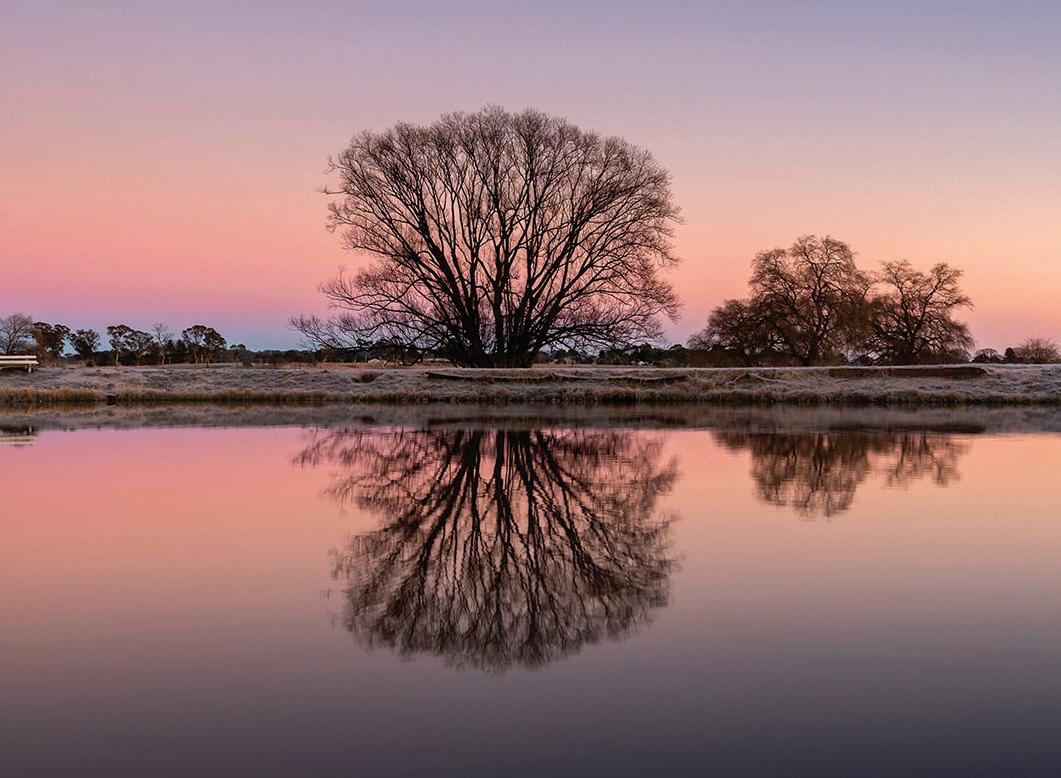


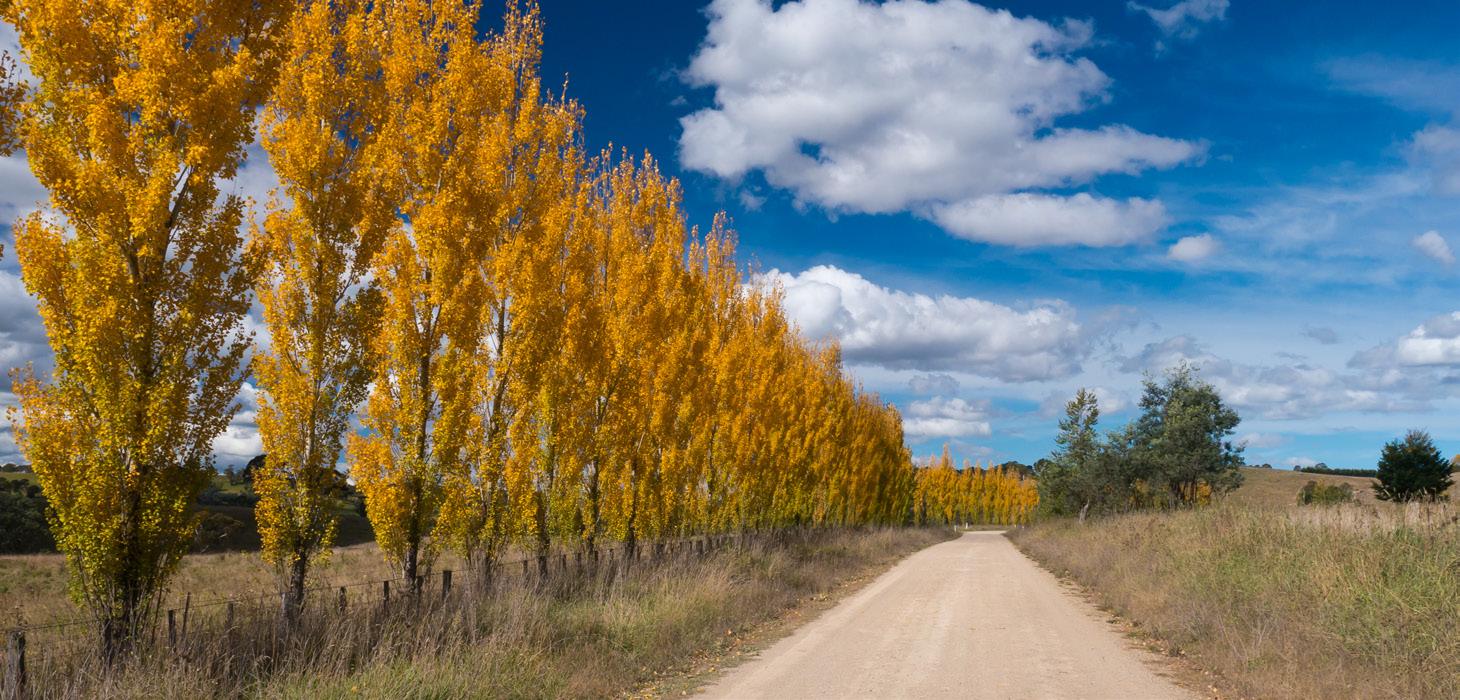

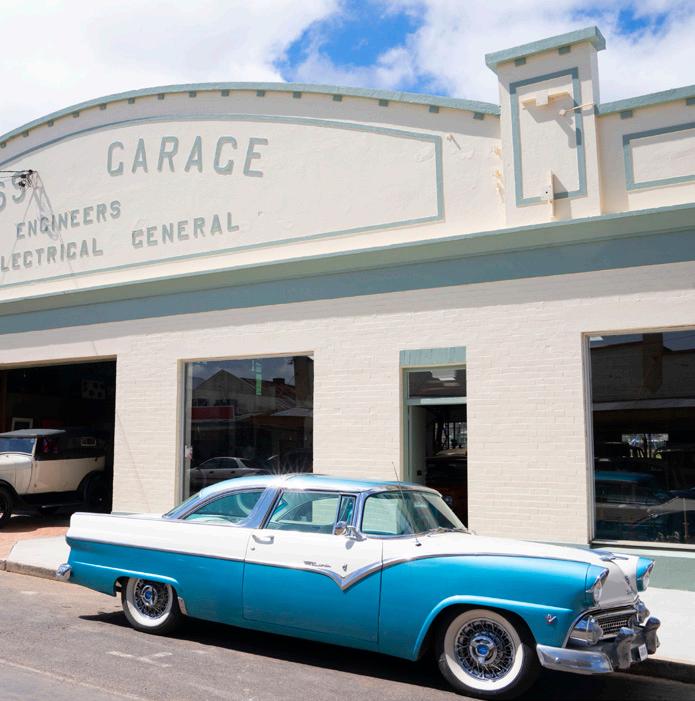

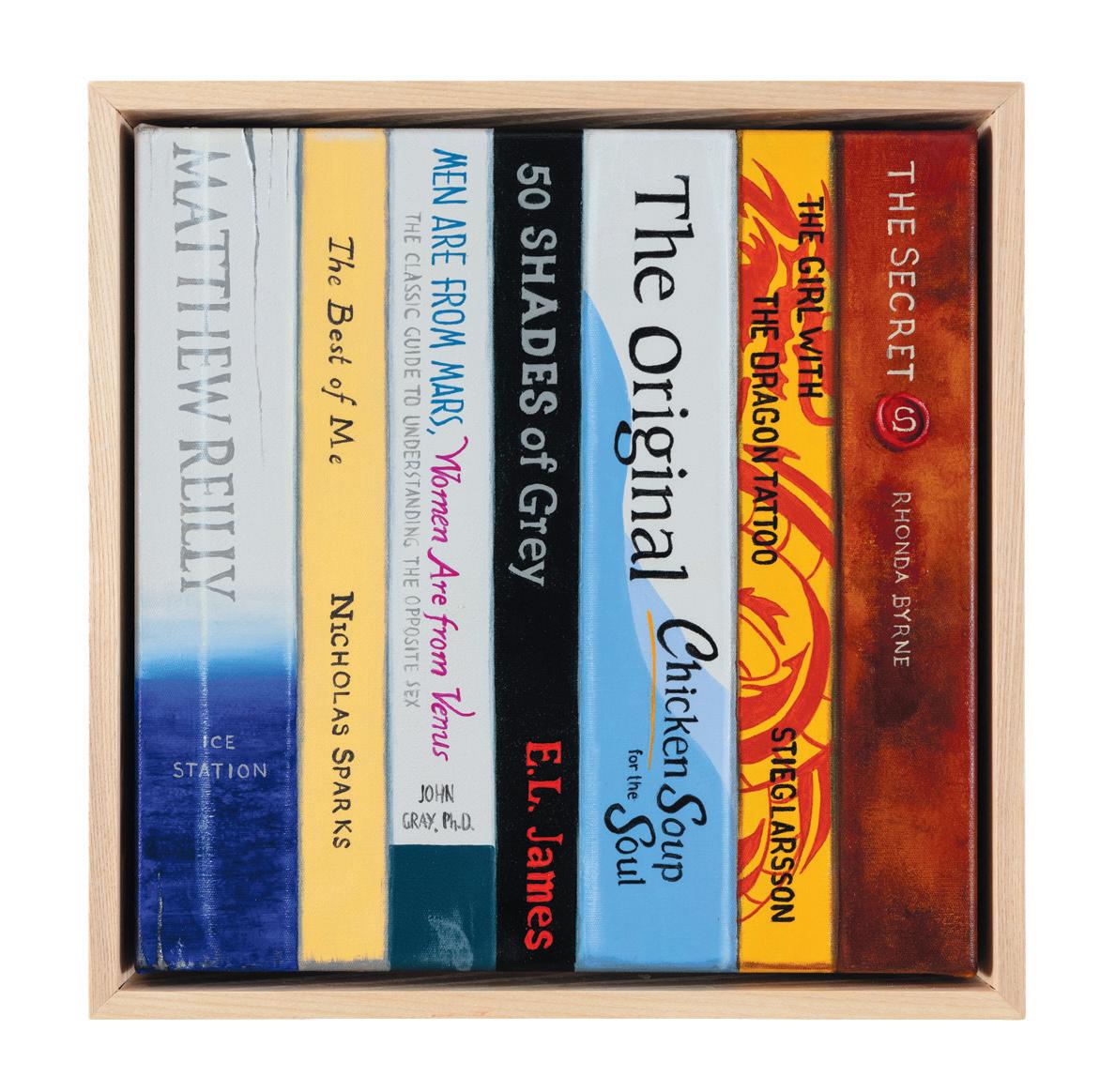
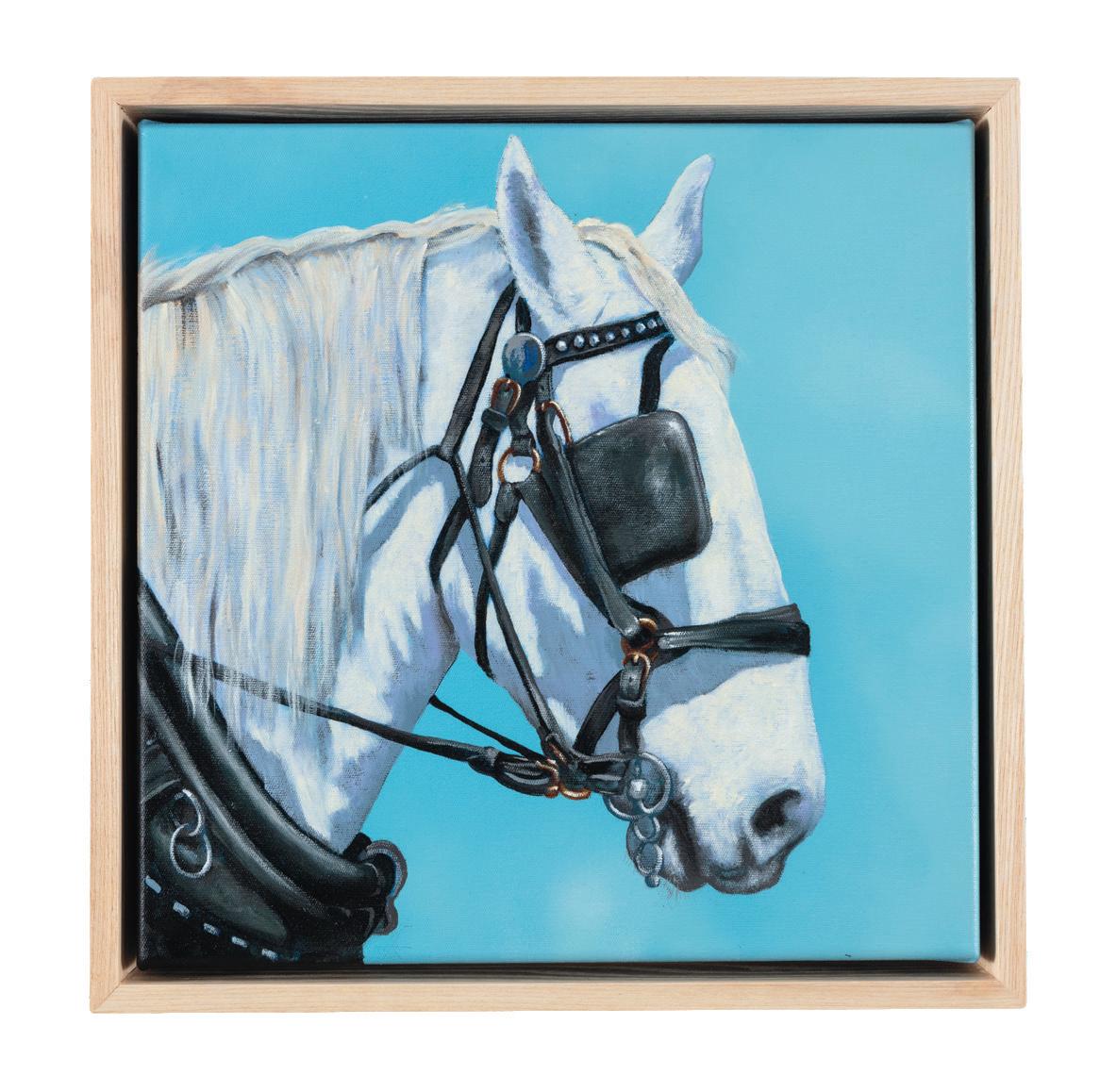
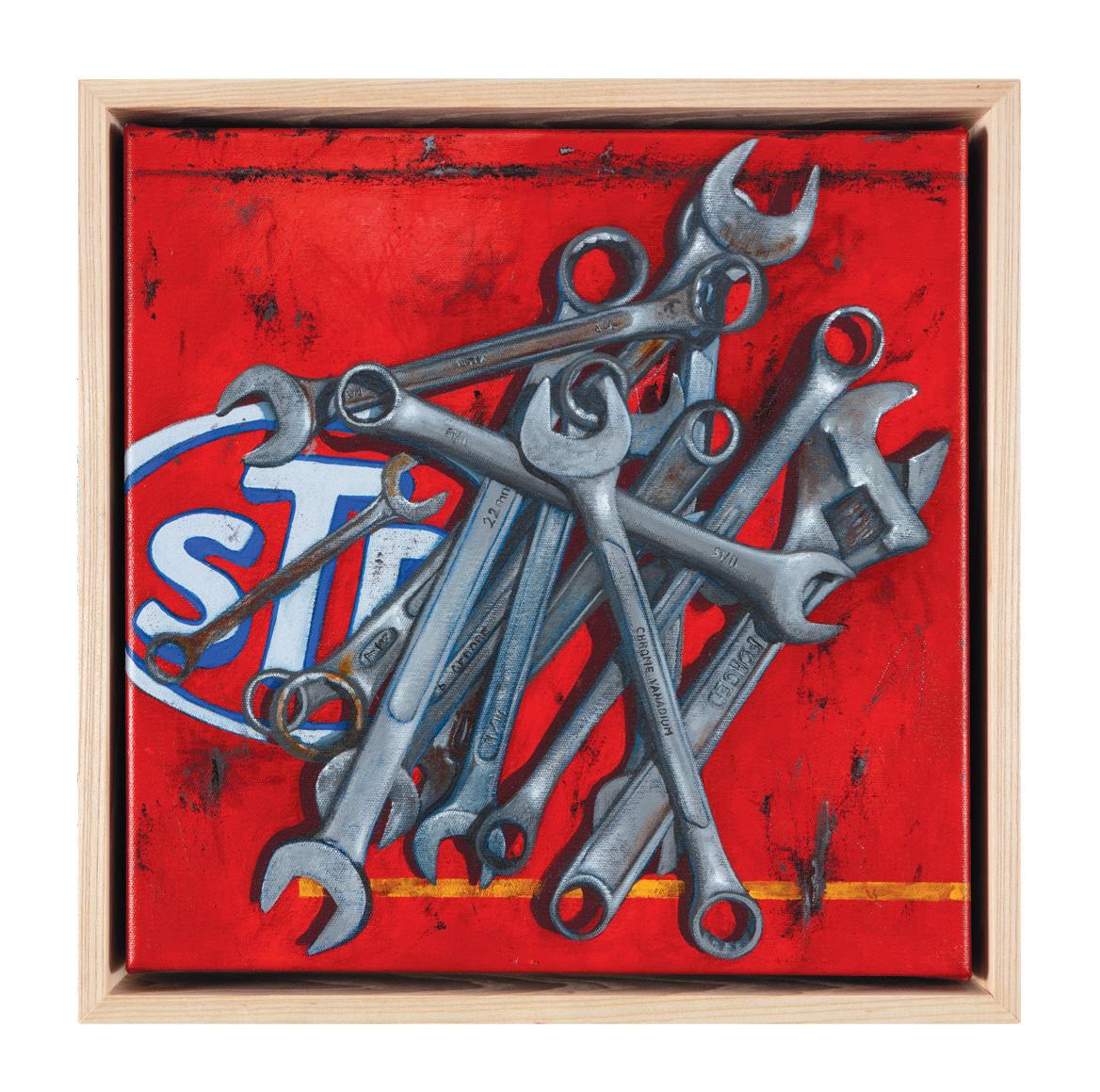
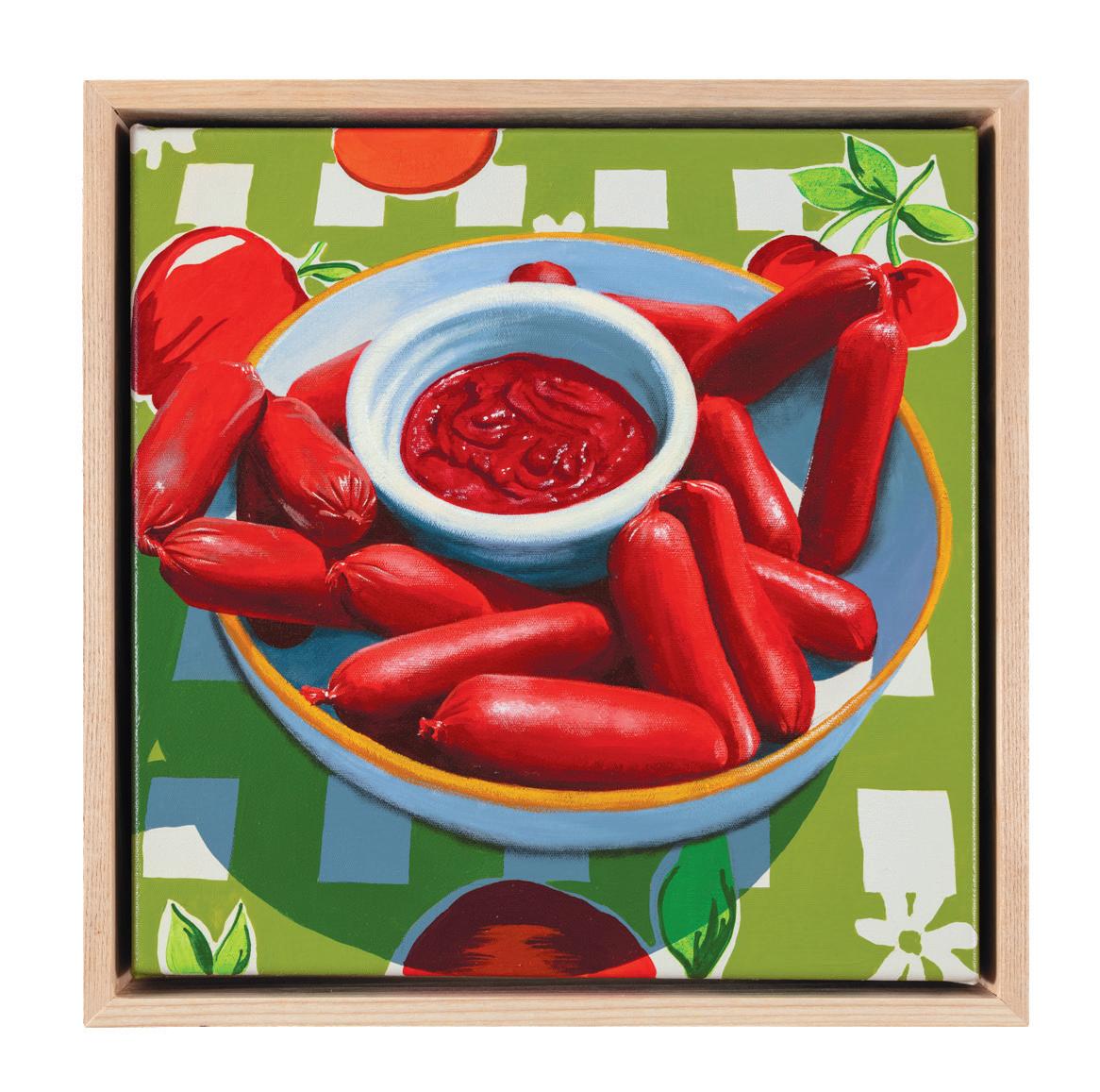

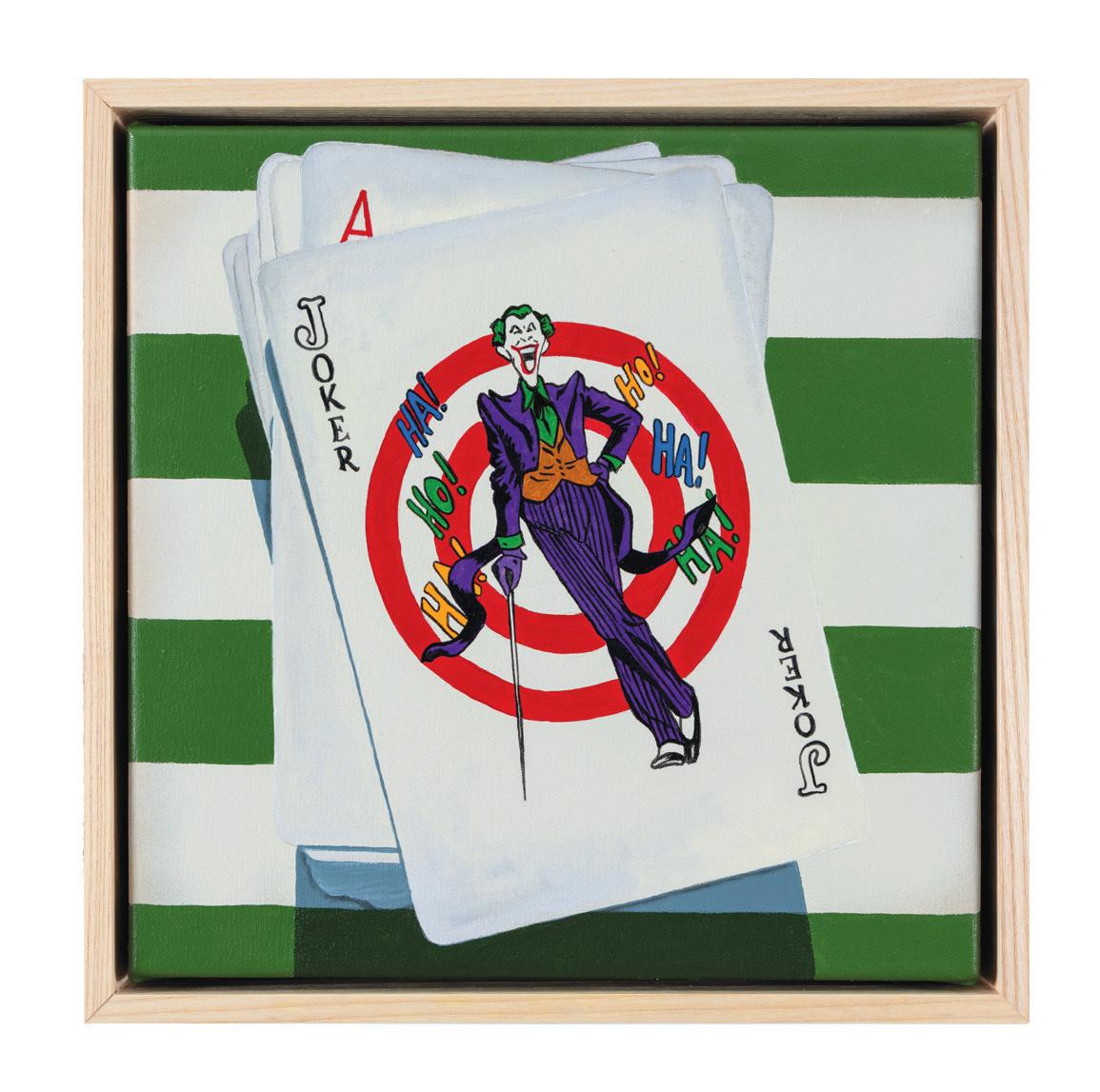
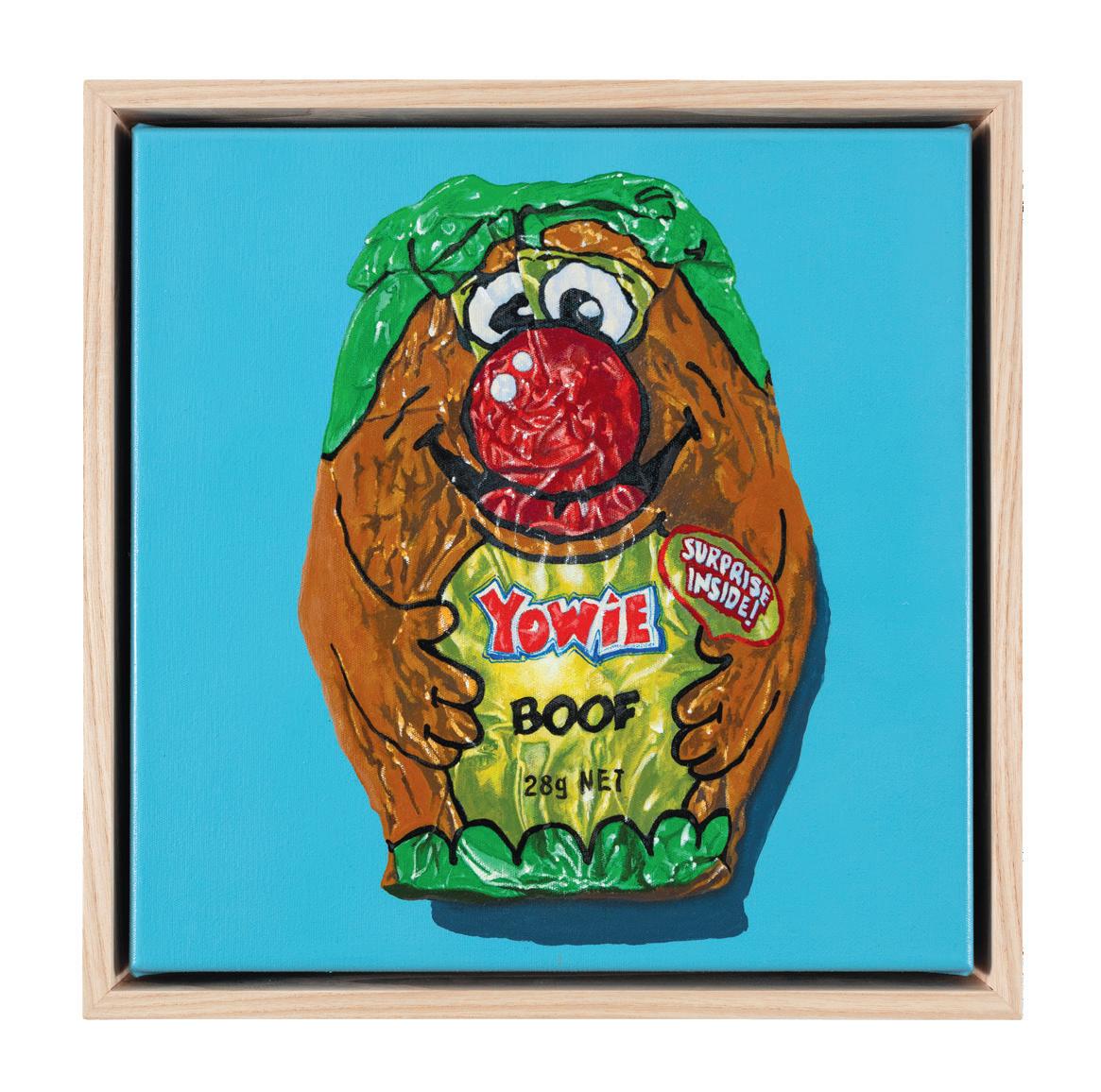

Jo White, who holds a special place in her heart for Australian pop culture, captures the magic in the day-to-day Down Under.
WORDS Steph Wanless
It was almost impossible to get it perfectly flat, the green felt pitch from the iconic 90s game, Test Match. But I liked being the bowler, placing the silver ball in his moulded cup hand gave me god-like vibes. Tori Amos’ Cornflake Girl played on repeat, much to my brother’s annoyance, while our greasy, Smith’s-crinkle-cut-chipsstained mitts maneuvered the men.
I can see it, smell it and hear it. But most importantly, I can feel every little bit of that summer in Caloundra when I look at Jo White’s painting, Test Match –employee that’s supposed to go five days but rarely does, 2024. Like so much of her work, the piece oozes Australian nostalgia to the point where I almost physically ache. I actually challenge anyone who grew up in 80s/90s Oz to not feel some kind of yearning during a deep dive into Jo’s work. Like her Bubble O’Bill – cue filling up at a servo during a long, hot road trip. His mega bubblegum nose claims my eight-year-old loose tooth and stains his creamy face cherry red. Or her Grandma’s Grazing Board which, funnily enough, triggers adored memories of nibbles at my Grandma’s house. It’s true; “Nibbles ain’t nibbles without cubed cheese, cabanossi, Jatz and coloured onions.” Just add bottled gherkins and a glass of Coolabah’s finest casked Chardonnay and my Grandma is officially in the room. Fast forward to some of Jo’s more recent work, like her homage to Newcastle showcasing Silverchair’s iconic Frogstomp, Hunter Street, the Knights and Oak Milk. I’m immediately transported to my uni days spent in the steel city – I can practically feel the hangover.
My point being, Jo White has a remarkable way of telling stories with paint and, more recently, by combining paint and sculpture – a format Jo created when she had so much to say it simply couldn’t fit on one flat canvas.
“The Newcastle piece was the first – that was for a Michael Reid show that took place in Newcastle. But my mind works in collections, so I couldn’t help but wonder: how do I get everything I want to say about a place into just one painting? ››
“So I made a collection of individual paintings, cut them out and layered them into one piece. Some of it’s directly onto the canvas, some is canvas on board, some might be ply and some might be balsa wood. It really depends on what I need for each one to create these paintings with sculptural elements.”
The result is a 3D artwork that beckons you to explore –best done when you channel your inner child, look on with fresh eyes and put the clues together to uncover connections between items.
“For example, my piece on Winton, Queensland includes a lot of books about Banjo Paterson, big blue skies and rust-red dirt, a fossil, roaming cattle and even Bluey,” adds Jo. “But it’s the green budgerigars that make it for me. Apparently they’re everywhere out there – if you stand still long enough they’ll land on you.”
I’ve never been to Winton, but I can already see the budgies bouncing around town thanks to the chipper characters captured by Jo’s highly saturated hues –another telltale sign of her work which grew even brighter the moment she moved to Armidale. But first, Jo’s own story starts in Coonamble.
“I come from a long line of farmers – sheep and wheat, mainly – and knew pretty early on that school was not my vibe. But the dirt out there became my canvas, and a stick my brush. I’d draw pictures while waiting for the school bus. Even today, I still really love drawing.”
It’s in her blood actually, with her Nana always busy creating ceramics and sculptures, her uncle and great uncle both painters and her cousin a steel sculpturist… when he’s not busy with his day job as a farmer, that is. So it will come as no surprise that schoolyard Jo focused on the visual, over the written component, of any assignment thrown her way.
“Let’s just say I’d spend three days working on the pictures and experimenting with different fonts for the title page heading, then one day to do the project itself,” she says. “By the time I got to senior school in Tamworth, very little had changed and for my last two years, art was pretty much all I did.”
She goes on to describe her major work, a chess board of 100 footballers made with paper mache. Her material? The pages of Rugby League Week – “not every page is colour, you know, so I needed hundreds of them to cut out enough to make a player from each team.” I hear you Jo, who after that massive project and some advice to ‘go do some life’ from her art teacher, decided to move home – which was now Moree.
Jo relished her time on the land for the next few years, working at the newsagent while helping out on the family farm. Some nights she did art classes at TAFE, a way to ensure she continued learning different styles
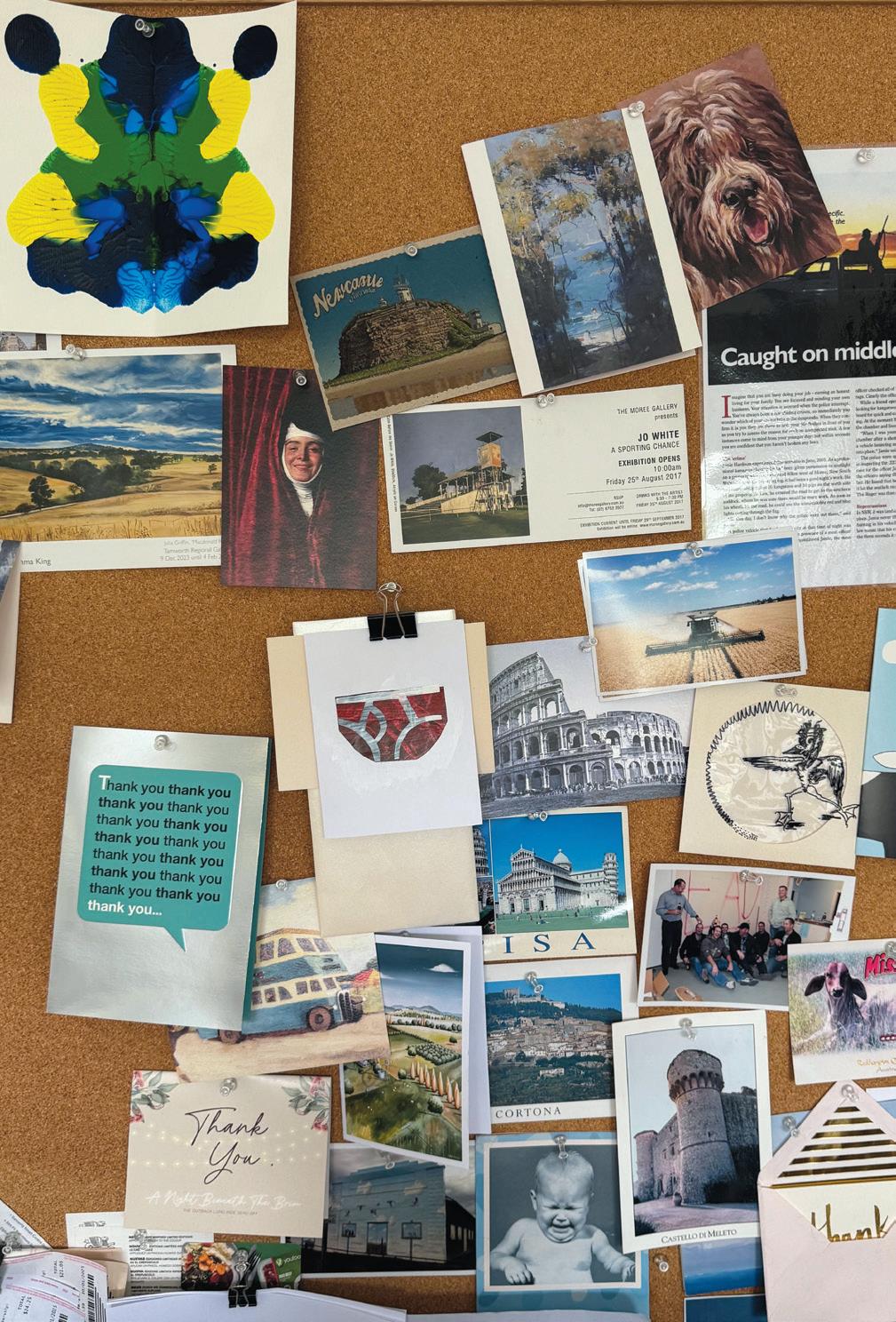
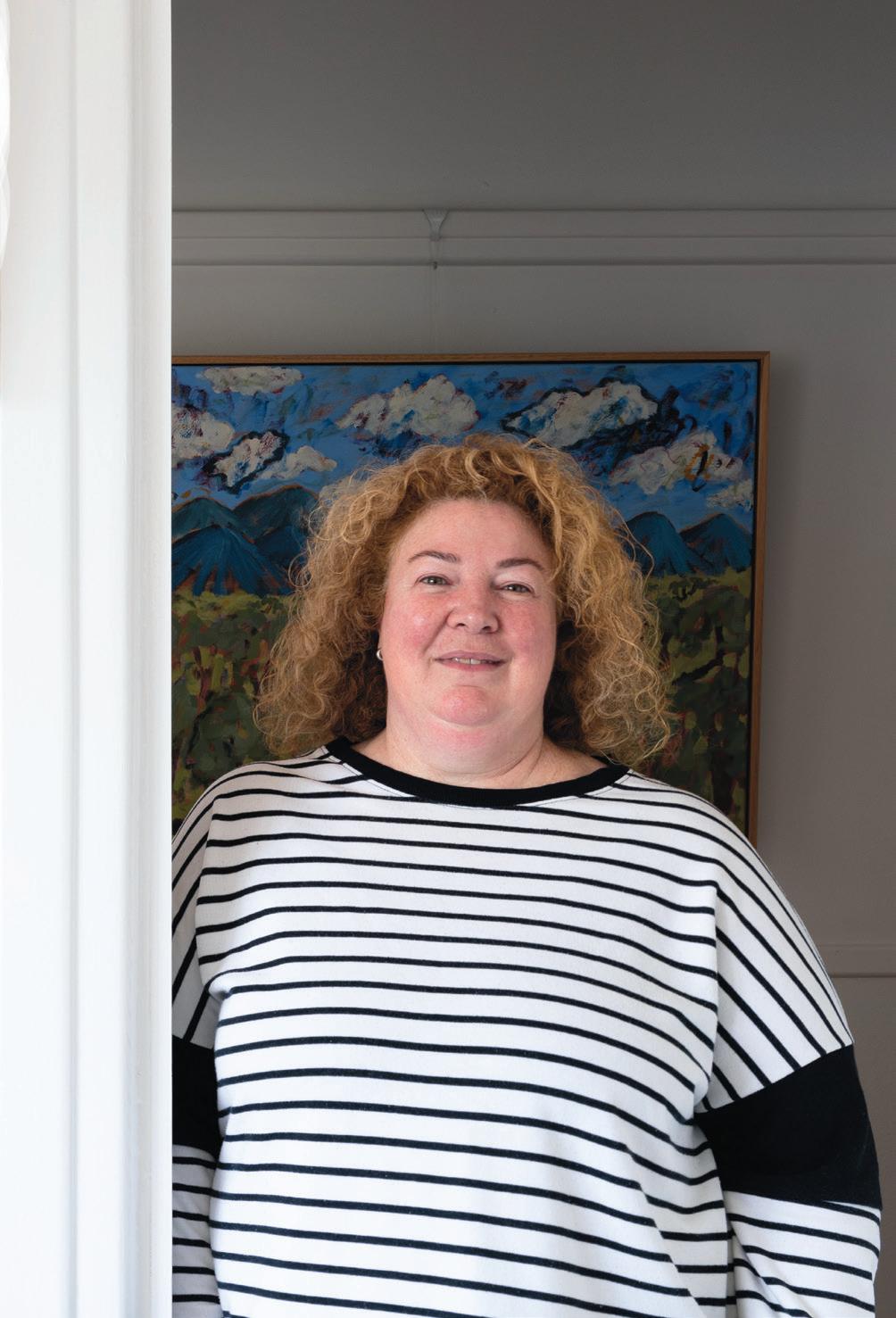
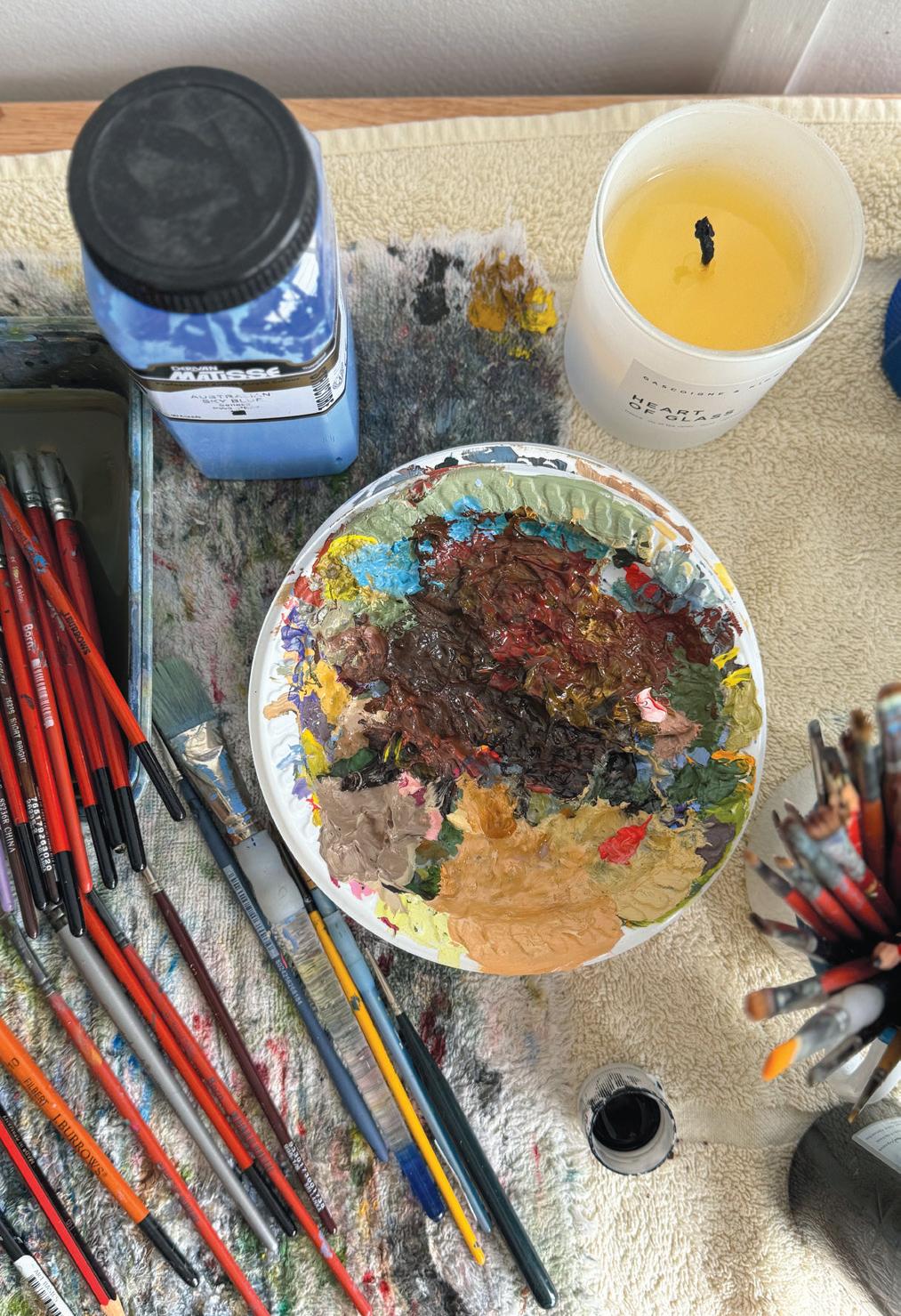
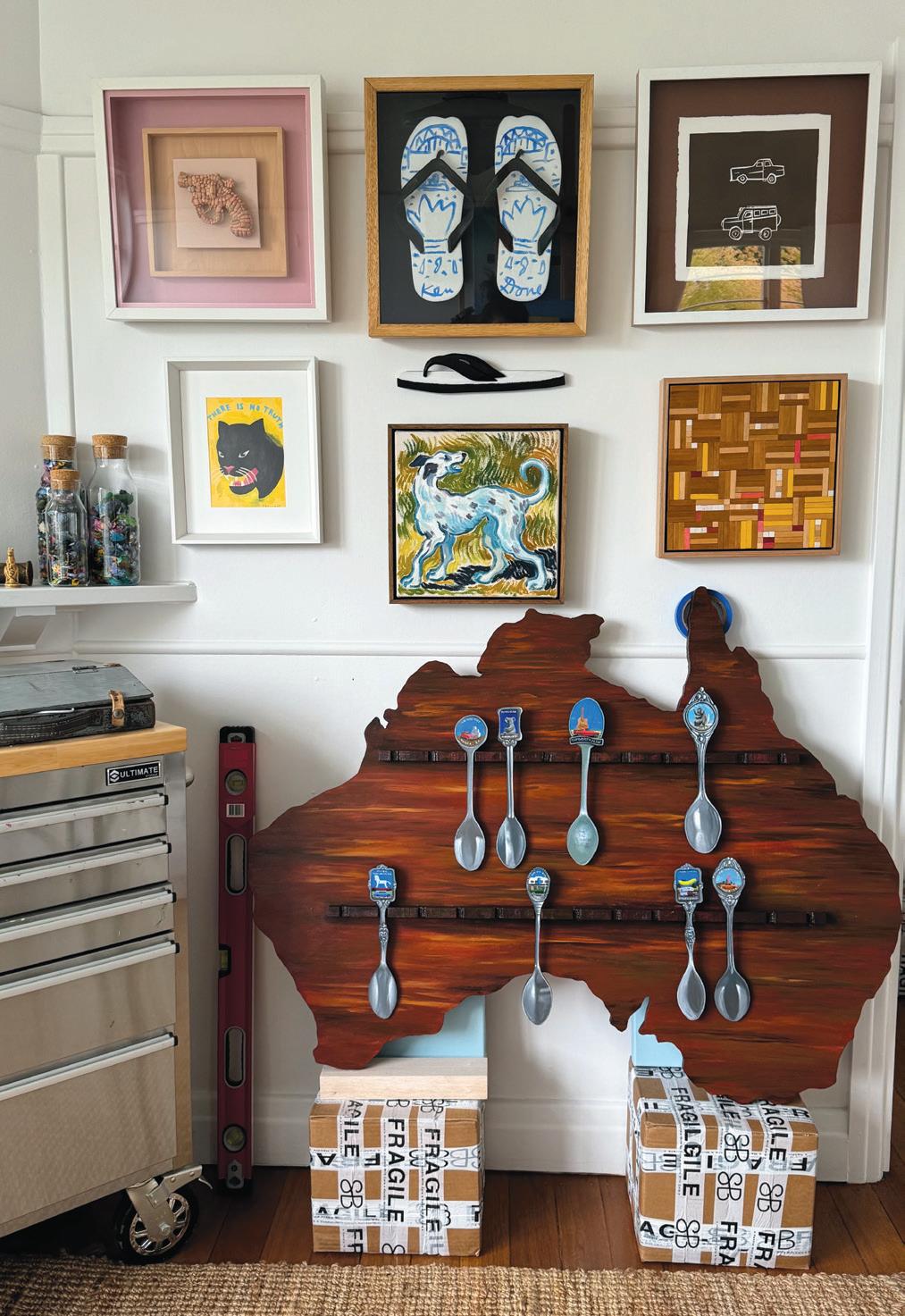
and techniques. When her folks eventually left town, she stayed on before taking the opportunity to move somewhere new.
“I chose Armidale, moved here in September 2019, bought a house with an entire wall of north-facing windows and have loved it every day since.”
And, every day since, it’s in that north-facing space that Jo paints her lived experience, her beloved dog Duckie by her side. She can’t stand silence, so you’ll hear a podcast, playlist or tv show on in the background, while the windows provide her with a round-the-clock view of the clouds.
“I find myself constantly distracted by them, actually; they roll by so quickly up here. Then there’s the light. It seems so much brighter, harsher even, making it impossible not to see the distinct shadows cast across buildings, cars, footpaths, everywhere I look. I think you can see a real change in my palette when I moved to Armidale as a result. The colours became far more saturated, the shadows even stronger – none of it was intentional, it just came out that way.”
On that note, Jo’s artworks really do ‘just come out that way’. While she kept a visual arts process diary at school, the one she keeps at home these days is barely touched and she sees little need in spending time sketching, planning, even modelling works like some other artists.
“I just pick up a brush and paint… I don’t know if that’s the norm,” she says.
“I think there’s definite value in planning your work if that’s part of your process, but I pretty much know what each piece is going to look like before I start. I visualise a lot of things and the most random of moments can trigger an idea. That’s my normal, so any prep time beyond painting is a waste of time for me.”
Clearly not one to beat about the bush, Jo has jumped both feet into her Australian nostalgia theme and is never short of inspiration. A compulsive note taker (“Seriously, there might be about 700 of them on my phone”), the most random of moments can trigger an idea for her next collection. From a Holden HK parked across the road to a caravan she passes on her way home, from a Peters Hava Heart ice cream to a tin of Cadbury Roses – there’s a comforting, shared connection in the day-to-day Down Under.
“We didn’t have a Holden HK, but my Dad was a bit of a tappet head – a big car enthusiast. As for the caravan, that was a sleepover treat for us when visiting friends, and Dad’s ice cream of choice was always the Heart. We were never allowed that as a kid, that’s a grown-up ice cream and there’s no way we’d spend money on that for a kid – you’re having a Frosty Fruit or a Paddle Pop mate.” ››
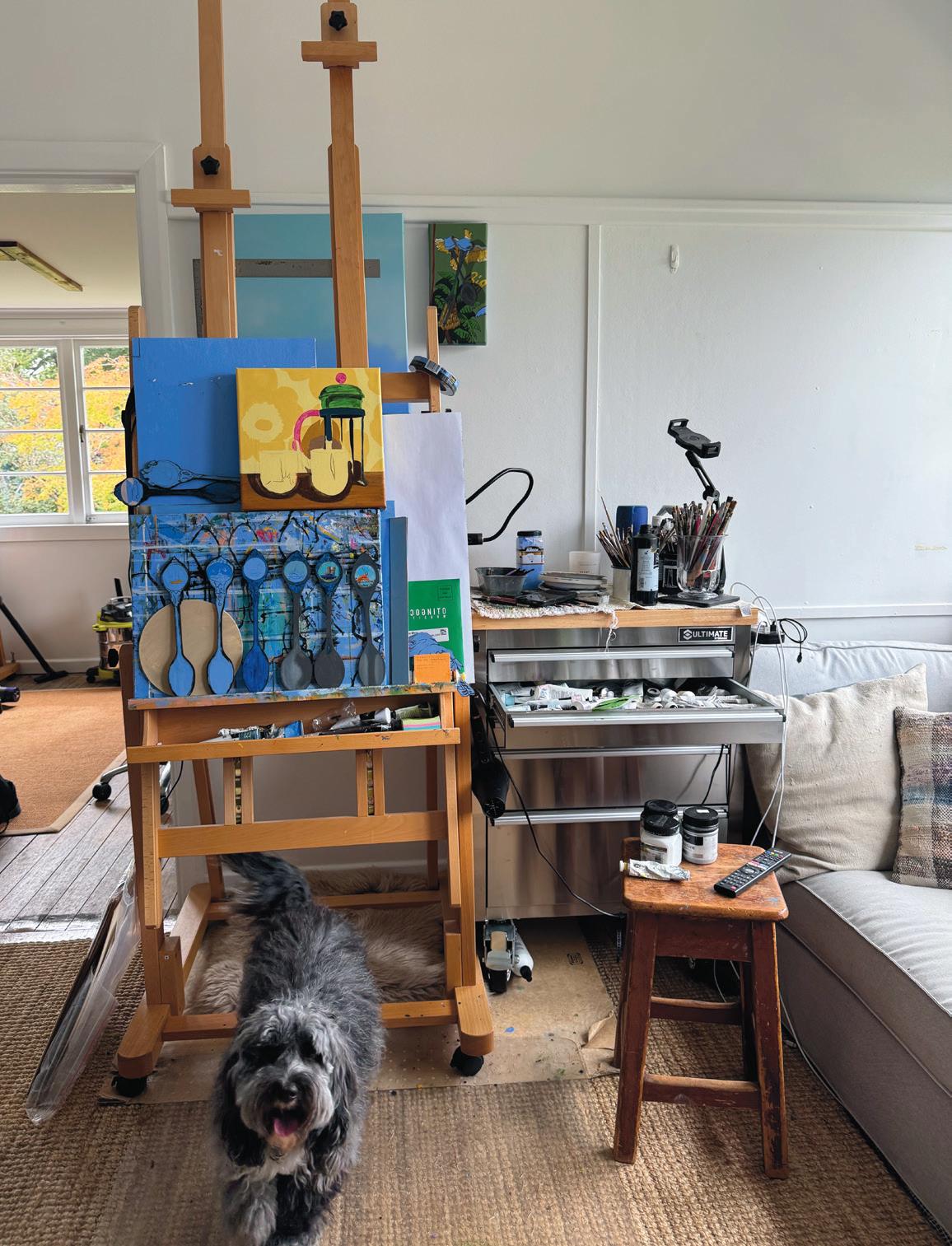
The latest collection from Jo White highlights the foxy ladies of Fountain Lakes in a playful tribute to the beloved television comedy Kath & Kim. Brought to life with Jo’s painterly panache, fabulous eye for detail and irreverent sense of yumour, select works from her Little Baby Cheeses series are available via Michael Reid Murrurundi.
From the statue of little baby cheeses that gives the series its title to the oodles of hot suggestions and myriad special acquaintances that have crossed the squeaky door at Whitehorse Court, Jo’s latest work deftly immortalises the objects and moments that have emerged from the show as cultural touchstones and become lodged in the Australian comic lexicon. And of course, there’s a joker in the pack.
This nice, different and unusual series arrives after a banner year in which Jo presented a trifecta of sold-out solo shows across the Michael Reid network and was selected for the Sulman Prize’s Salon des Refusés at S. H. Ervin Gallery in Sydney.
Alive with brilliant colour, wit and lashings of loving nostalgia, Jo’s work is attuned to the way certain objects attain totemic significance with resonances specific to a place or pop-cultural moment.
WORDS Harry Roberts, Michael Reid Galleries
“That is important for me, because I can have so many ideas on any given day, I need that sounding board to share my thoughts and help direct my work.”
I can speak for the Cadbury Roses – there was a tin on my Grandma’s kitchen table every Christmas, right next to the Quality Streets and yes, debates ensued. But here’s my point, we’ve all had that conversation, experienced that moment, shared those chocolates at some stage in our Aussie lives, and Jo’s work celebrates that for the glorious thing that it is. It’s no surprise that many of her pieces fly across oceans to adorn the walls of expats the world over, and it’s also no surprise that she has a rock-solid relationship with renowned gallery Michael Reid Murrurundi.
“I just decided one day, what’s the worst that could happen if I shared what I do with other people? It could be that nothing changes and everything stays the same, or, something could change – and that would be better,” says Jo. “So I started putting my work out on social media and one Sunday afternoon I got a call from the Michael Reid Galleries, asking me if I’d come in for a visit.”
She went. She showed them her work. She hasn’t looked back since. Today, her partnership with Michael Reid, Daniel Soma and the wider gallery team is one she’s forever grateful for, describing them as supportive, nurturing geniuses who also aren’t afraid to say the word ‘no’.
“That is important for me, because I can have so many ideas on any given day, I need that sounding board to share my thoughts and help direct my work – like how the Newcastle painting triggered the entire collection for Kath & Kim, called Little Baby Cheeses. I thought that was either going to be the most brilliant thing I’ve ever done, or equally, the shittest thing in history – luckily it’s turned out pretty well.”
In my mind, luck has nothing to do with it. Jo’s natural artistic talent combined with her uncanny ability to know what’s going to strike a chord deep down in our Australian souls is special… nice… different…unusual. (See the breakout column if you need a nudge for that reference.) But ultimately, it’s comforting, like a game of Test Match with a bag of Smith’s chips.
“Maybe it’s people latching on to that feeling of when life wasn’t all about bills to pay and working long hours; instead holding onto those sweet memories.” *


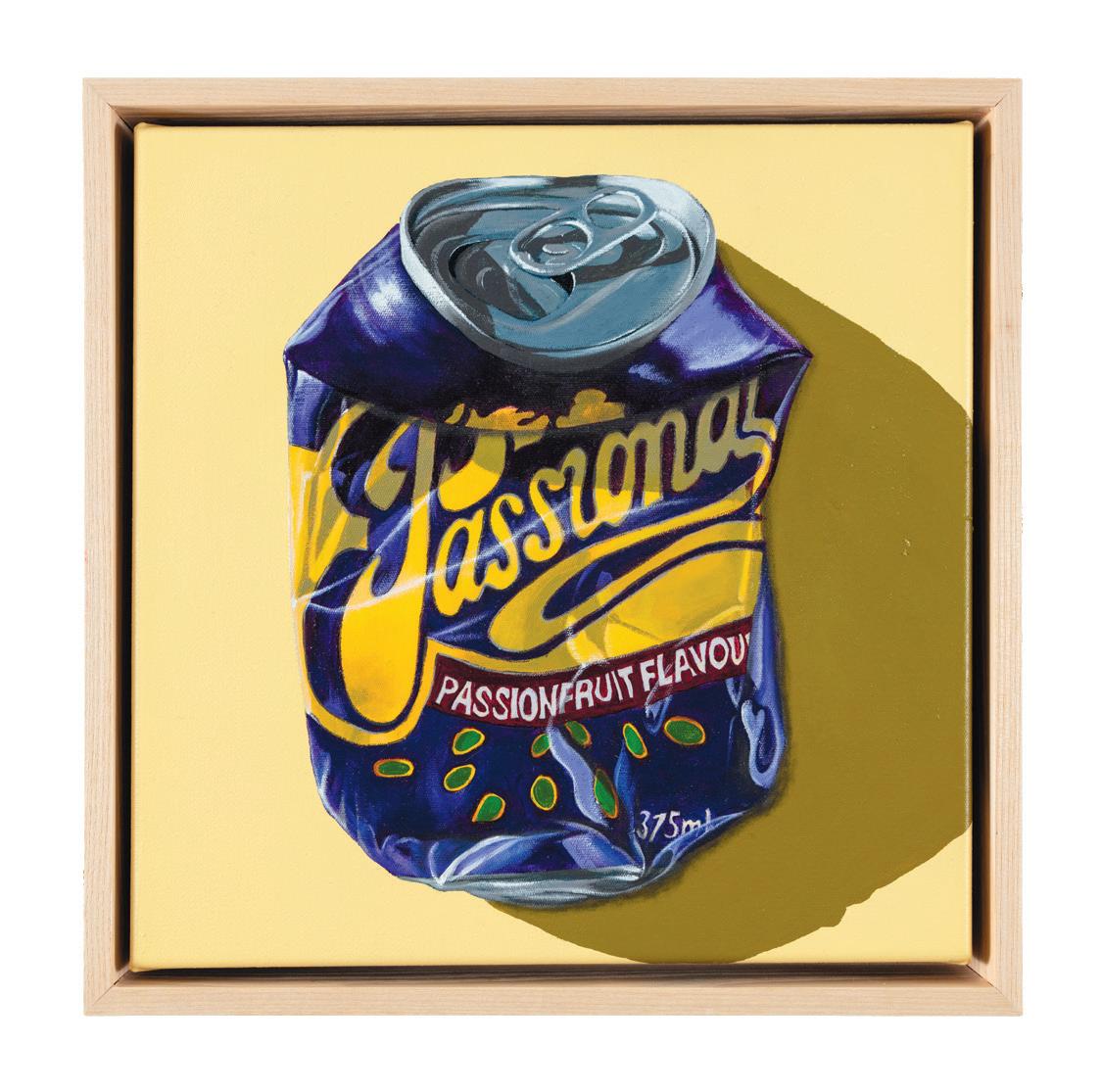
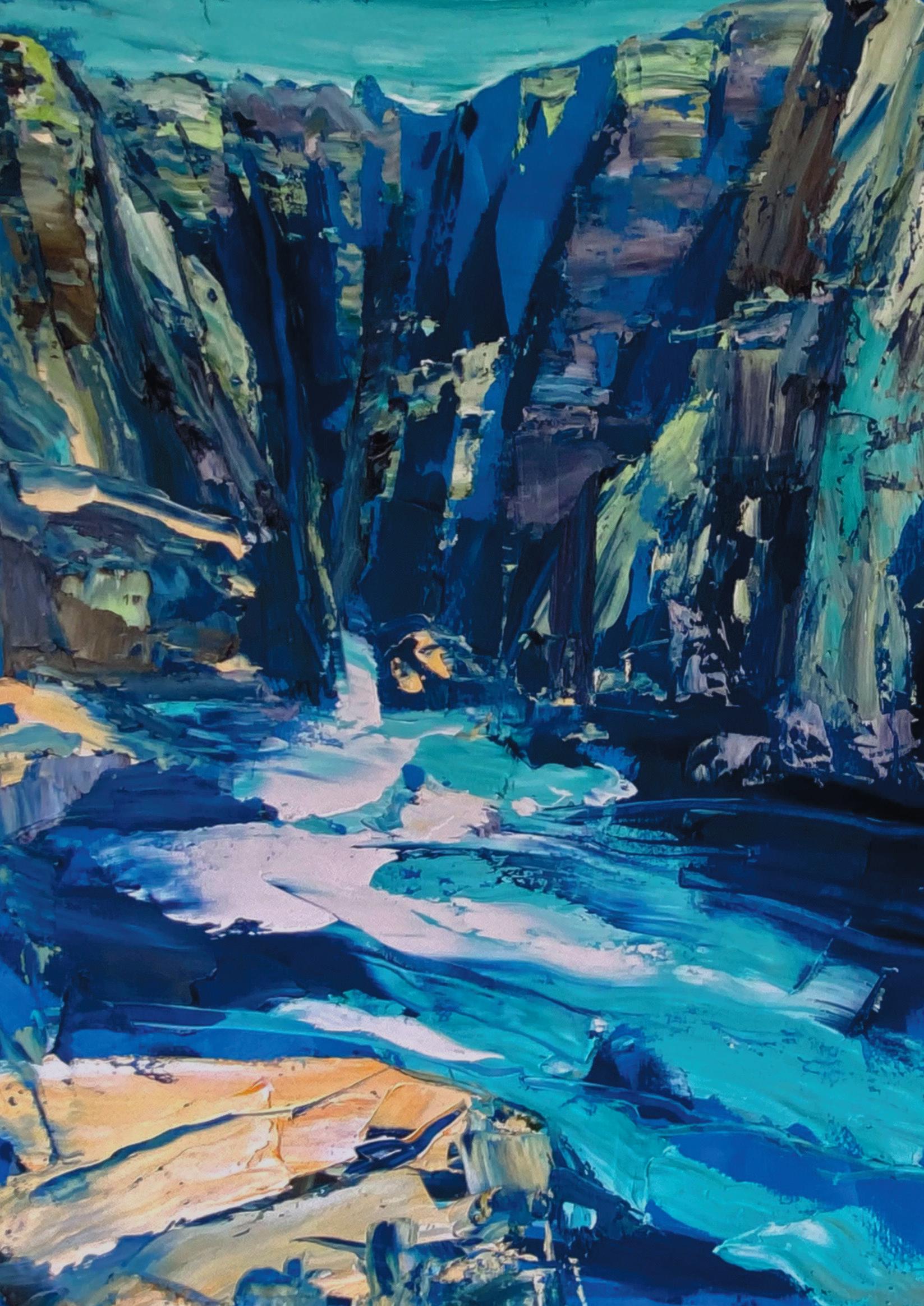

104 CM X 124 CM, 2024
Artist – Rowen Matthews
“I often explore the wild gorge country just east of my studio where the tablelands are clawed away by water. Sitting within this ancient space, I can listen to the land and glimpse the power of time.”
Rowen Matthews has held 15 solo exhibitions and 36 group shows. He has been awarded numerous art prizes including the Calleen Art Award and the Blackheath Art Prize. He has also been runner-up in the Countryscapes Prize, the Central West Regional Art Award and the New South Wales Parliament Plein Air Painting Prize. He has recently exhibited as a finalist in the Kedumba Drawing Award, the Rick Amor Drawing Award, the John Leslie Art Prize, and the Mosman Art Prize. His work is held in private and public collections including those of Charles Sturt University, Cowra Regional Art Gallery, Tamworth Regional Gallery, the University of New England, the Blue Mountains Cultural Centre, and the City of Launceston Council.
Cathy Armstrong and Rowen Matthews share a love of all kinds of soul-fulfilling things –homegrown produce and their two poogles, glazed local ham and beers at dusk, risk-taking art and community connection.
WORDS Philipa Tlaskel PHOTOGRAPHY Steph Wanless
“There is art everywhere and even more in the garage,” says chef and caterer, Cathy Armstrong. Her husband, landscape artist Rowen Matthews, towers over her small frame as ruggedly as the sheer rocks he’s been painting for 40 years. On the kitchen bench of ‘Bambrook’, their property just outside Armidale, Cathy is prepping panforte for wholesale, wrapping them in pretty marbled paper to sell locally and in Sydney. She then slices what could be a still life; a bowl brimming with crimson strawberries and a bunch of trussed scarlet rhubarb stalks that a neighbour brought over.
In their 10-year creative partnership, Cathy has been transforming the food from the locals of New England into her signature dishes that she shares on ABC Radio, while Rowen has immortalised the landscape that grows their produce, placing him on the ‘Australia’s 100 most collectable artists’ list.
Cathy’s unusual wedding dress embodies their unique connection.
“I wore one of his paintings,” she says, smoothing down the plaits that frame her delicately beautiful face. “We photographed a detail from a favourite painting of Rowen’s, and had it digitally printed onto metres of silk georgette. I still have the dress,” she says fondly.
Aptly, they met over paintings and food.
“I saw his work in a gallery opposite my food store, ‘Princess Pantry’ in the Blue Mountains. In those days I was known as ‘the jam princess’,” Cathy laughs. “After a visit to the gallery and a coffee, Rowen invited me for dinner – seared fillet steaks with a gutsy beetroot and walnut salad. And from there we just kept seeing each other.” Their partnership has seen them grow from strength to strength creatively, both taking risks with the other there for support. His 2020 show, ‘Land is Emotional’ at Tamworth Regional Gallery was shortlisted for the National Museums and Art Galleries award for Best Temporary Exhibition in a Public Gallery, while at the
same time, Cathy launched the Kinship Cafe, which quickly became an iconic eatery in Armidale.
Like Cathy, always willing to take risks for his art, Rowen remembers when he and an artist mate flew over the Wild Rivers National Park in a helicopter. “We discovered that the sky was in fact green, glowing off the rocks. That’s how the land gets into the work,” he says. “And this picture ended up in my recent ‘Wild Rivers’ show at the Weswal Gallery in Tamworth.” Rowen is excited to be working with the team at Tamworth Regional Gallery and a few other regional artists on another exhibition scheduled for 2026.
“He connects people,” says Cathy of her husband.
Following their two poogles into Rowen’s studio, spatulas lie smeared in an oily rainbow of paint as thick as the batter of Cathy’s wicked Whisky Pecan Molasses cake.
Rowen is preparing for his next exhibition, ‘Pools of Light’ in 2025 at NERAM and is starting from the foundations, rolling out and stretching his canvases before “working with the big raw tools that stop me making fussy paintings. The land is physical and so is applying the paint,” he says, his own physique more boxer than painter in a woolly jumper gifted by Cathy who is also busy stitching dresses for their new granddaughter.
In the lead up to Christmas, Rowen donated his time and contributed artworks to the ‘Packsaddle Art Exhibition’, a popular local fundraiser for NERAM in Armidale, where he presented a floor talk on the exhibited work and the value of collecting Australian art.
Cathy has previously catered the Packsaddle “like a big family dinner, with a glazed local ham, lush salads and artisan baked bread.” Rowen adds, “It’s a very dramatic opening night. The gong goes off at 6pm to signal that works can be bought and the funds raised by Packsaddle buy new artworks for the gallery and restore old ones.” ››
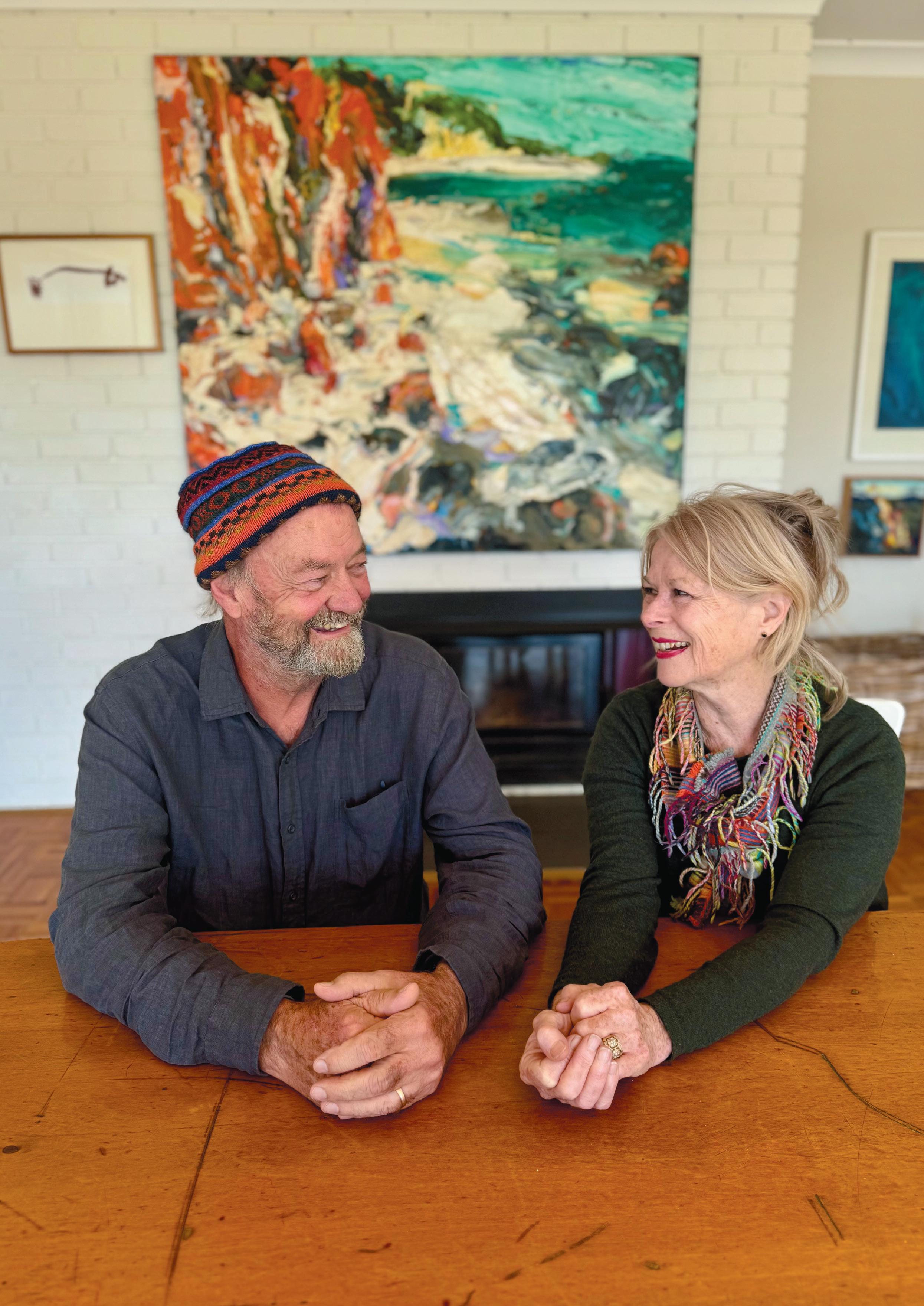
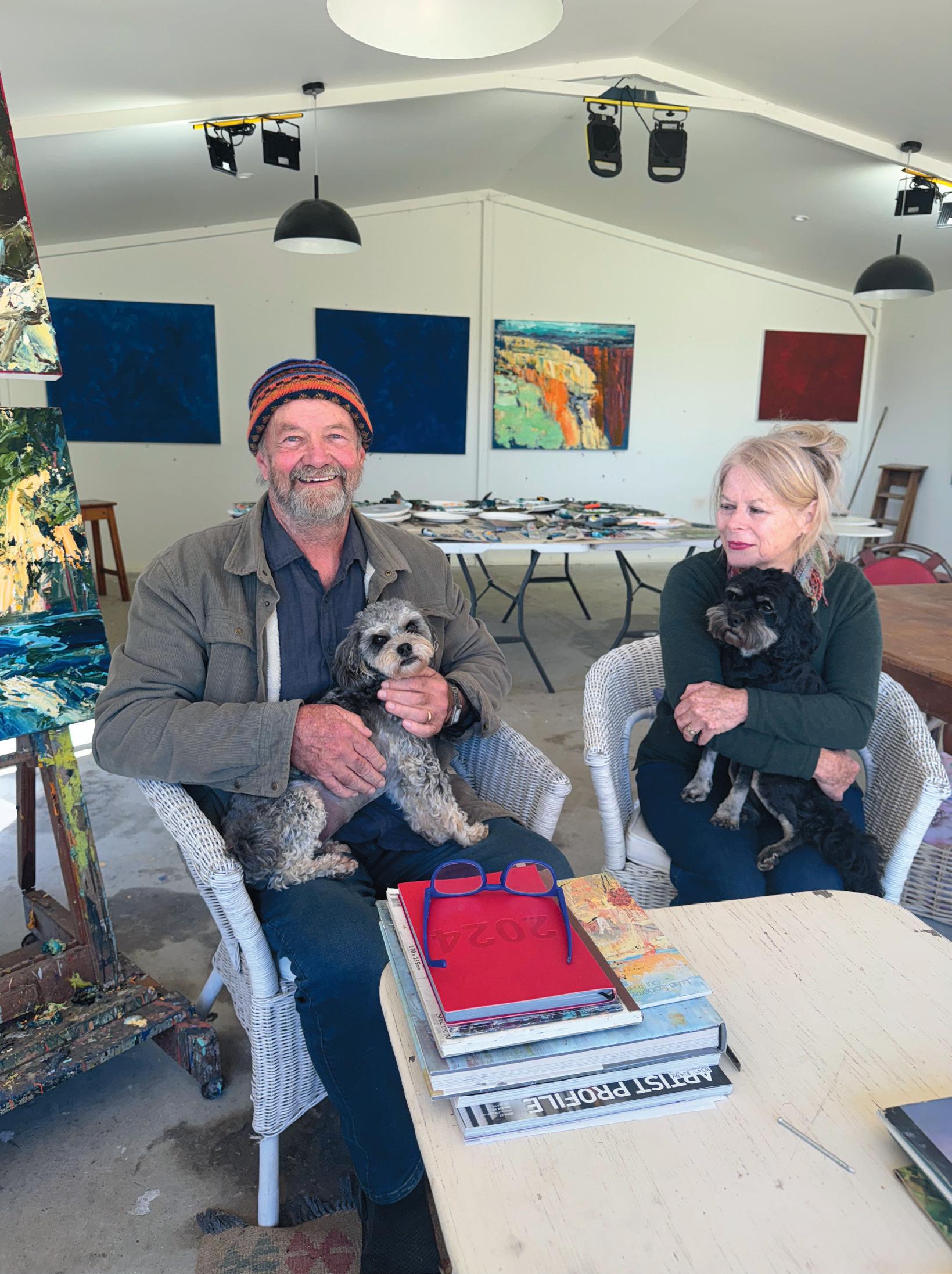
Rowen’s richly layered landscapes of local landmarks, like the stunning Golden Cliff, once decorated the walls of Cathy’s recently sold Kinship Cafe in Armidale. It was renowned for its themed literary events like the Jane Austen lunch held in conjunction with local bookshop Reader’s Companion, and set menu dinners championing Cathy’s most beloved inspirations like Yotam Ottolenghi, Jamie Oliver and Nigella Lawson.
“Now I’m richer with time to cook for pleasure, and yet I am getting lots of lovely jobs,” she says. “Dinners for 40 to 80 people, where the client will invite me to cook the food I love – heaven! I did a wedding in Nundle the other day, and they grew the lamb and all the veggies that we served. That’s the stuff that makes my heart sing.”
The recent ‘Dinner Party’ event at the stunning Windy Station Woolshed in Quirindi saw Cathy as the guest chef, collaborating with country cook Sophie Hansen (best-selling
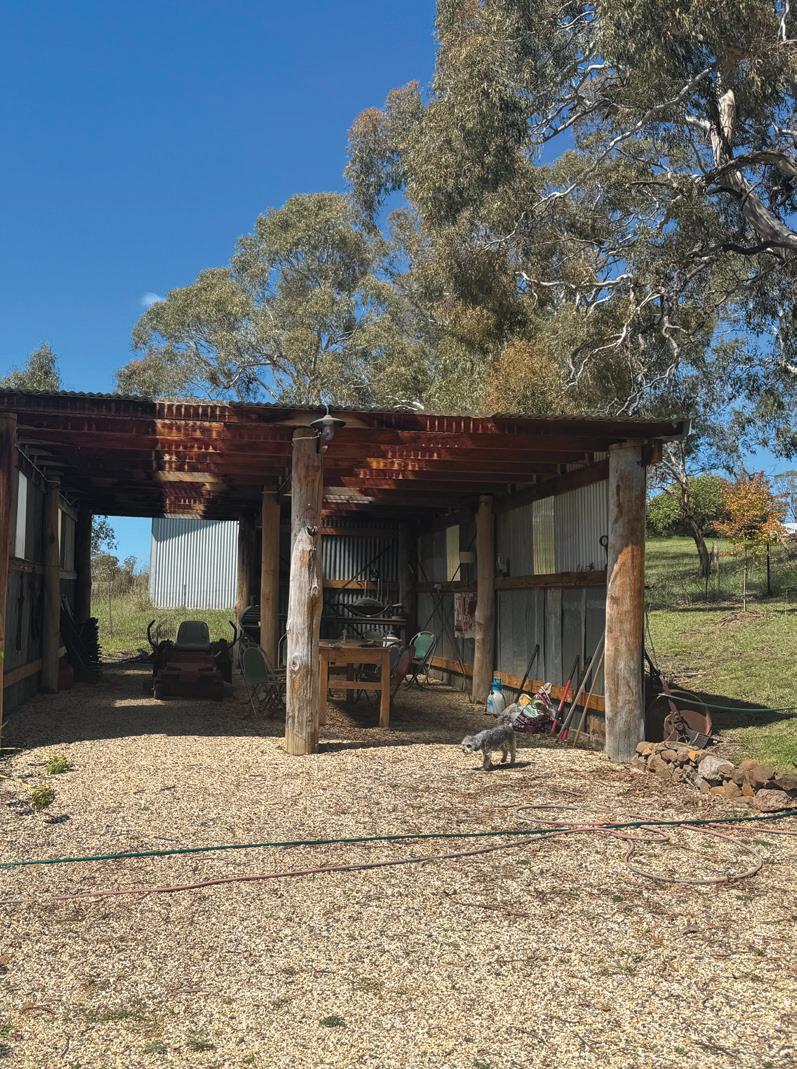
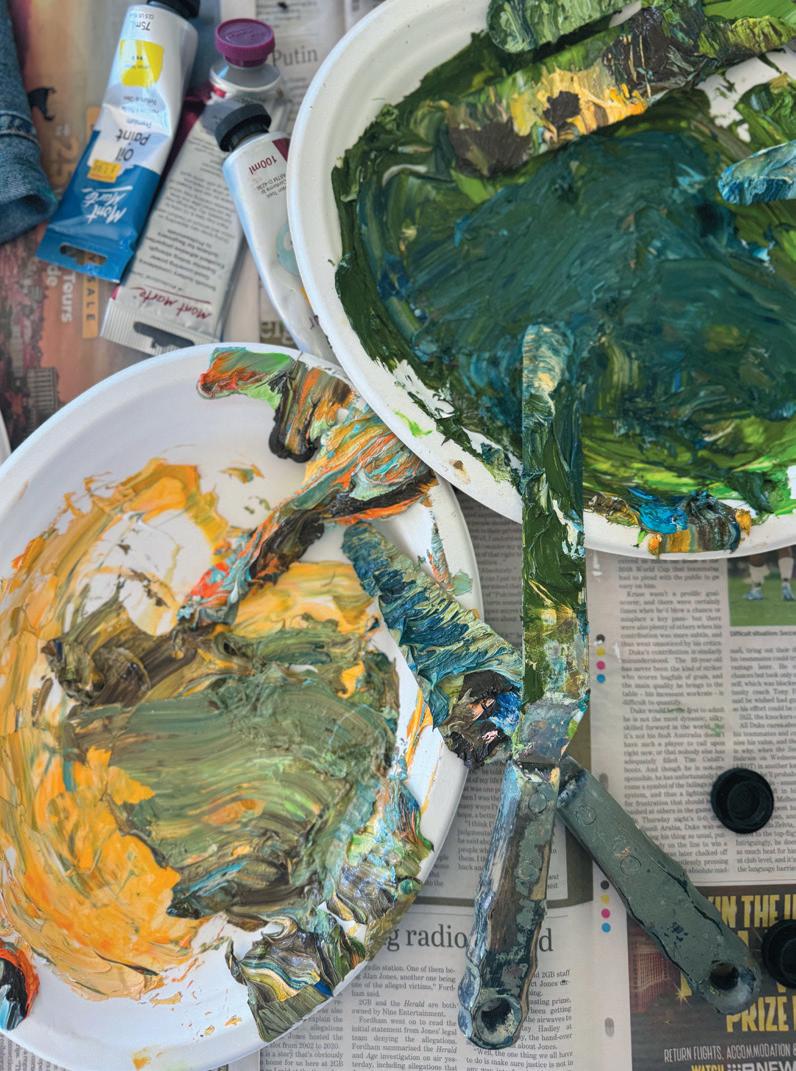
author of What Can I Bring?) for an extravagant spring dinner which sold out in hours. She has more woolshed events coming up on properties such as Springfield and Archill.
“Rowen paints the canola fields that surround the woolsheds,” she smiles.
Their own lushly landscaped property with a Monet-style lily pond features a ‘half-way shed’ where the chef and the artist share meals between Cathy’s kitchen and Rowen’s studio. The smoker in the shed smells tantalisingly of local Balala Station lamb.
“We wanted this place to look like an Australian outback shed with curvy 1950s beer garden chairs – perfect for long artists’ lunches,” Rowen adds.
Both are at the stages of their lives when they are passing on their knowledge. Rowen, who is a Doctor of Philosophy
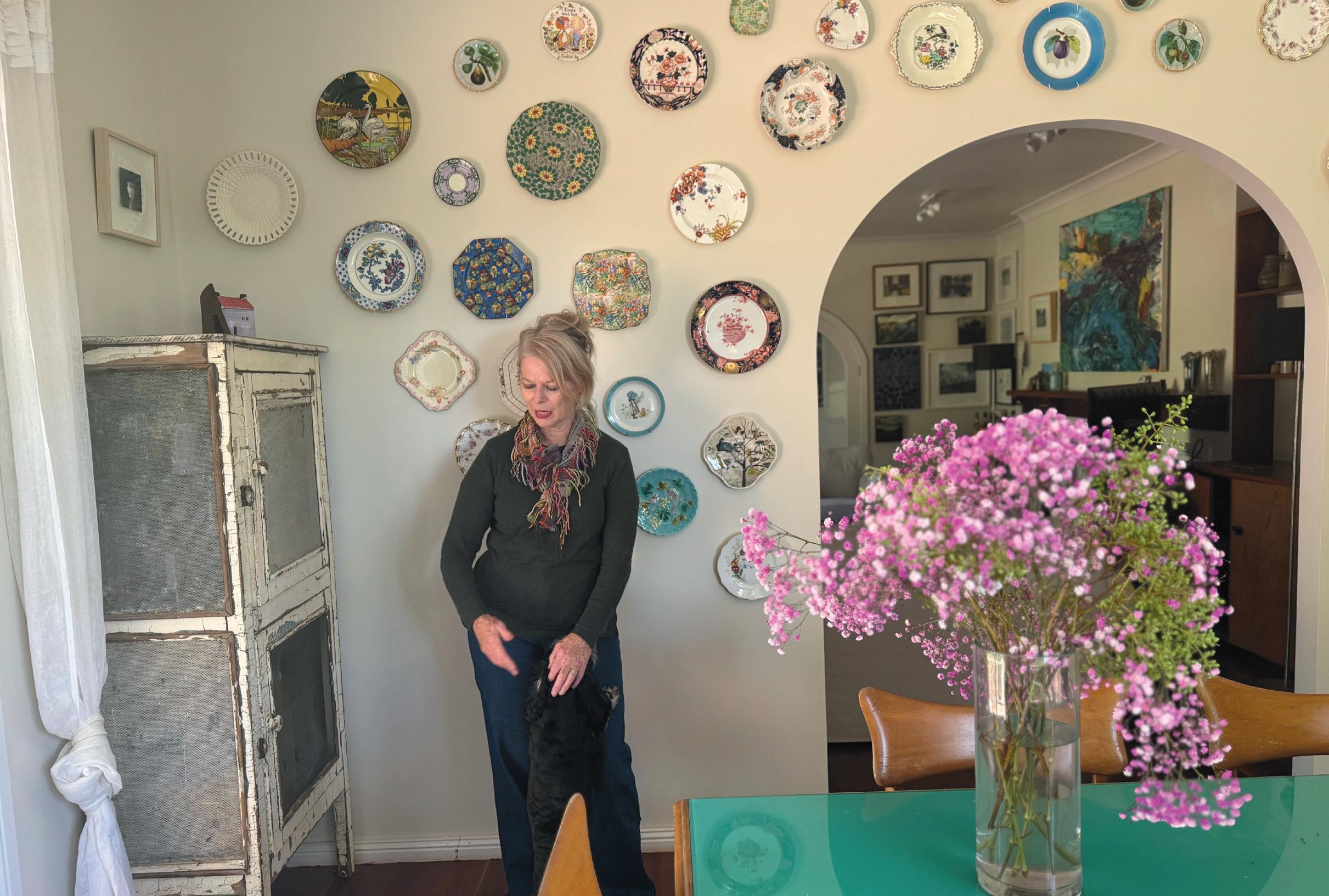
“I hope my food is like his art – vibrant and intensely alive.”
having written his PhD in Contemporary Art Practice while studying and teaching at UNE, shares his own painting experiences in “private classes with students who have often had really busy lives and now have the time to paint.
They don’t want the theory, they just want to experiment and they really appreciate feedback.” He remembers a group of Sydney women who came for a weekend painting course at their previous property, Little Kickerbell, during the 2020 drought. “They were really intrepid, hard-working, fun-loving students. Cathy cooked fabulous meals, we had a wonderful time and we all became firm friends.”
Cathy herself has run a myriad of workshops over the years, from pastry classes to crafting collaborations with Aussie icon fabric designer Cath Derksema from the Happenstore in Sydney, where participants painted and embroidered table runners, napkins and lengths of linen, while sipping Kinship cocktails. She also invited popular food writer Tilly Pamment for a ‘Food, Flowers and Styling’ workshop. “We made a pistachio cardamon cake and Samantha Kauffmann, the original owner of Eve Flowers, brought in fresh blooms. We learnt to do table arrangements and Tilly showed us how to style and photograph them for Instagram. The workshops were super fun, social and popular. They were my way to connect to the community through the cafe,” she says.
Cathy’s joy can also be found while roaming the orchards and fields around Armidale, sourcing the best produce.
Once upon a time, her gathered goods were used by Destination NSW for a rural tourism promotional event. Sometimes the produce finds her. “People would bring me homegrown persimmons, cumquats and apples – whatever they had – and I’d swap them for lunch,” she smiles.
Dusk is falling on their property and Rowen switches on the fairy lights, which remind me of his painting of lights coming on over Tamworth called ‘Electric Twilight’. A small version hangs near the kitchen counter.
Over a quiet beer at the end of their day of shared creativity, the couple reflect and feel grateful. They hope to create many more moments of vivid joy on canvas and crockery in New England. Cathy says, “I hope my food is like his art – vibrant and intensely alive.” *
Rowen’s upcoming show, ‘Pools of Light’, will be held at the New England Regional Art Museum from 14 November 2025 to 1 February 2026.
106-114 Kentucky Street, Armidale neram.com.au @neramuseum
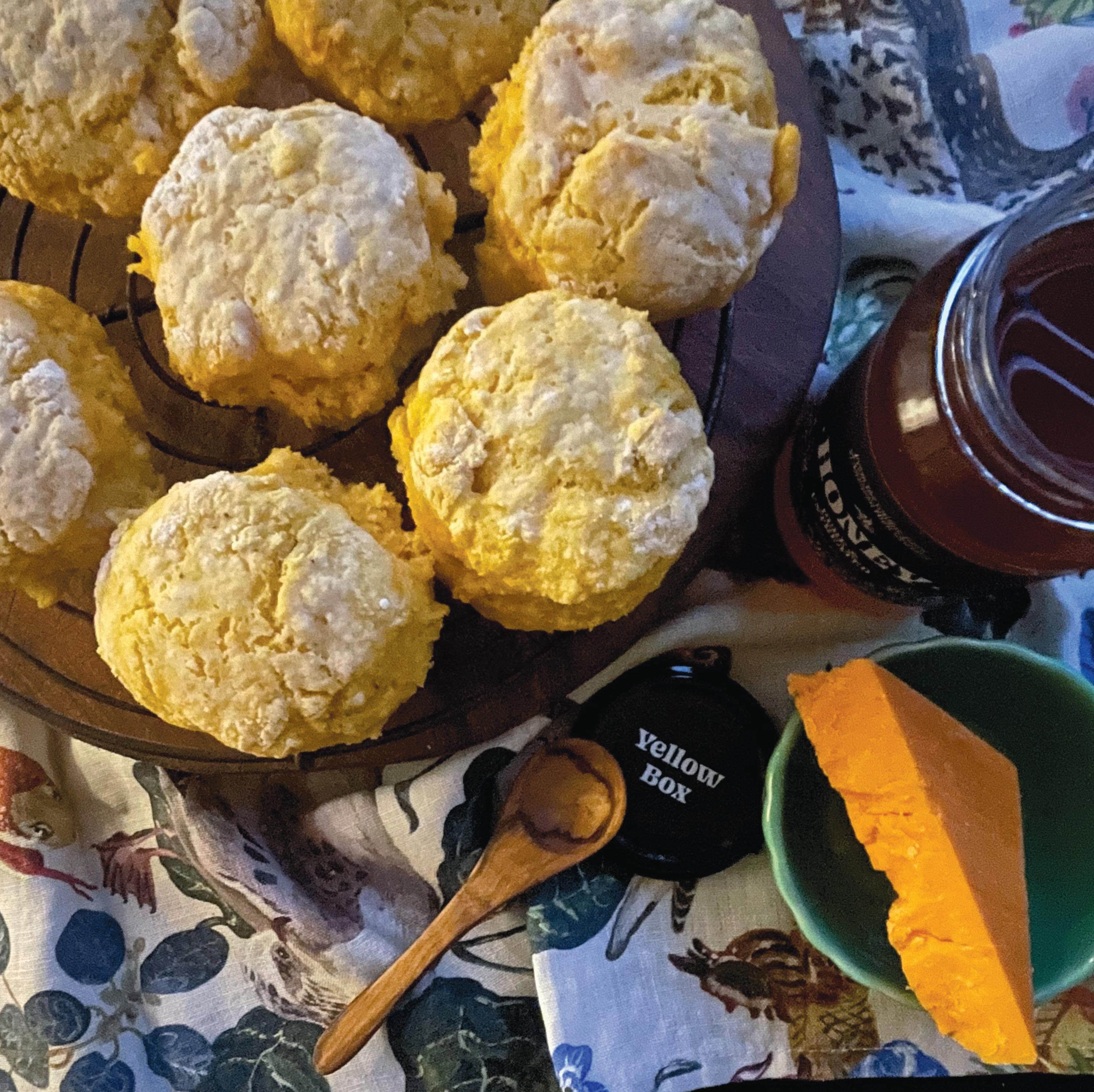
As we step into autumn, I love the idea of this recipe for a simple Sunday night supper. Buttermilk is the magic ingredient that makes these scones so fluffy. The pumpkin adds a rich colour and flavour and lots of nutrition. The play of the salty bright cheddar with sweet runny honey is just delightful.
Ingredients
2 cups self-raising flour, sifted
1 teaspoon nutmeg
1 teaspoon caster sugar
2/3 cup pumpkin purée, cooled
1/2 cup buttermilk
Yellow Box honey
Red Leicester cheese
1. Combine flour, nutmeg and sugar in a bowl.
2. Make a well in the centre and add purée and buttermilk.
3. Mix roughly with a table knife until you have a sticky dough.
4. Shape into a fat round on a floured board, then, using a cookie cutter, make nine to 10 scones.
5. Place on a lined tray. Lean the scones against one another. This helps them rise up.
6. Brush with buttermilk and bake for approximately 12 to 15 minutes.
7. Serve warm filled with Yellow Box honey and generous slices of Red Leicester cheese.
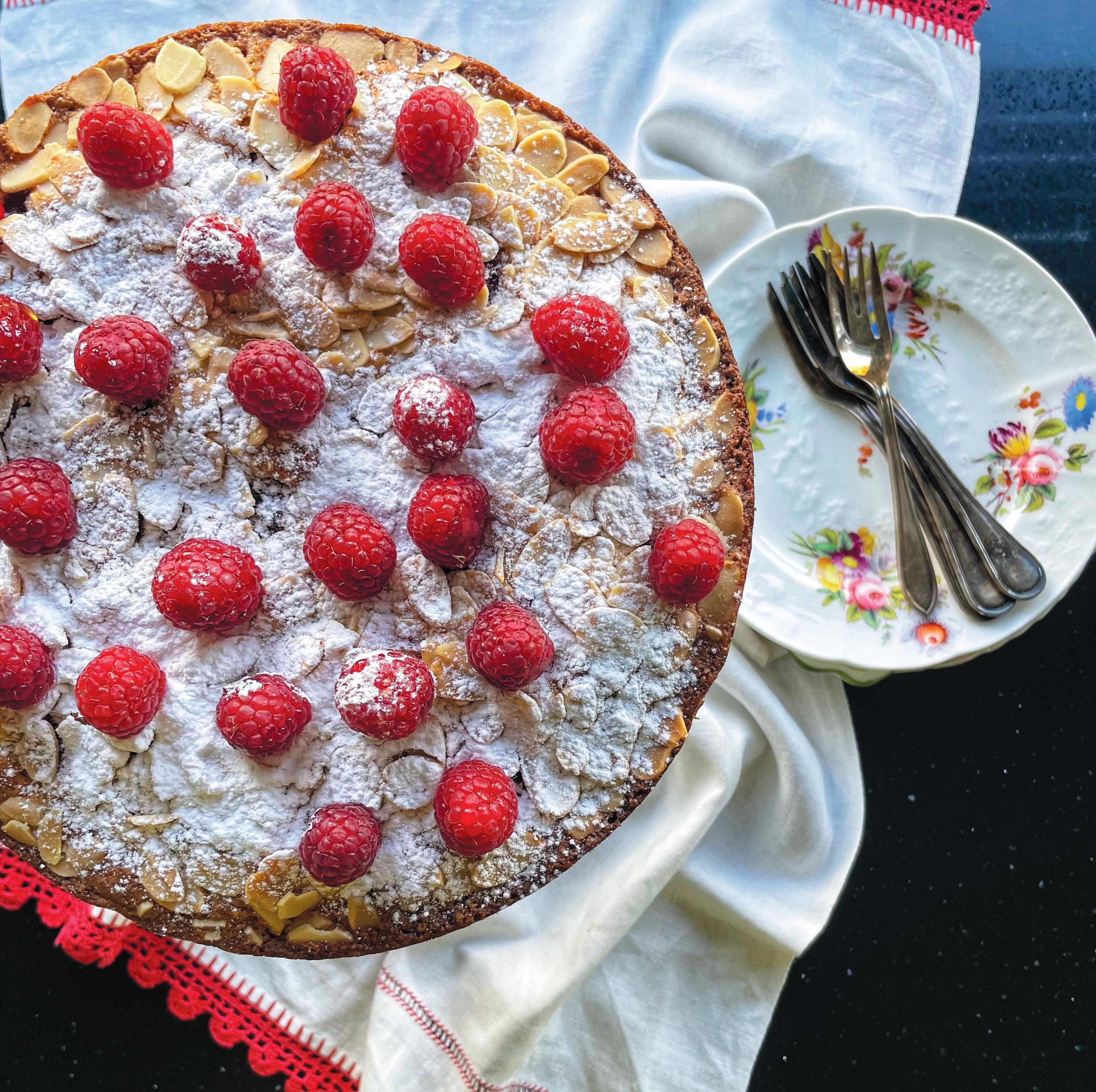
I love to think of raspberries as little bonnets for fairies. Here’s a gorgeous afternoon tea cake crowned with their prettiness that’s made with gluten free flour and ground almonds. Very easy to put together, no stand mixer required, just two bowls and 15 minutes to prepare. Enjoy warm with a dollop of coconut yoghurt or a spoonful of double cream.
Ingredients
180 grams almond meal
250 grams caster sugar
70 grams self-raising flour (can be gluten free)
60 grams desiccated coconut
1/4 teaspoon salt
200 grams salted butter, melted and slightly cooled
4 eggs
1.5 teaspoons vanilla
1 lemon, zested and juiced
200 grams raspberries
30 grams flaked almonds
Method
1. Butter and paper line a 23 cm springform cake pan. Set the oven to 160 degrees celsius fan-forced, or 175 degrees regular.
2. Place all dry ingredients in a bowl and stir until evenly combined.
3. Whisk the eggs in a separate bowl, add melted butter, vanilla, lemon zest and juice.
4. Mix and pour over dry ingredients.
5. Lastly, add two-thirds of the berries, leaving the remaining quantity to decorate the top, then scatter the cake with flaked almonds.
6. Bake for approximately 50 minutes, test with a skewer.
7. Remove from the oven, cool and serve with thick vanilla yoghurt or double cream.

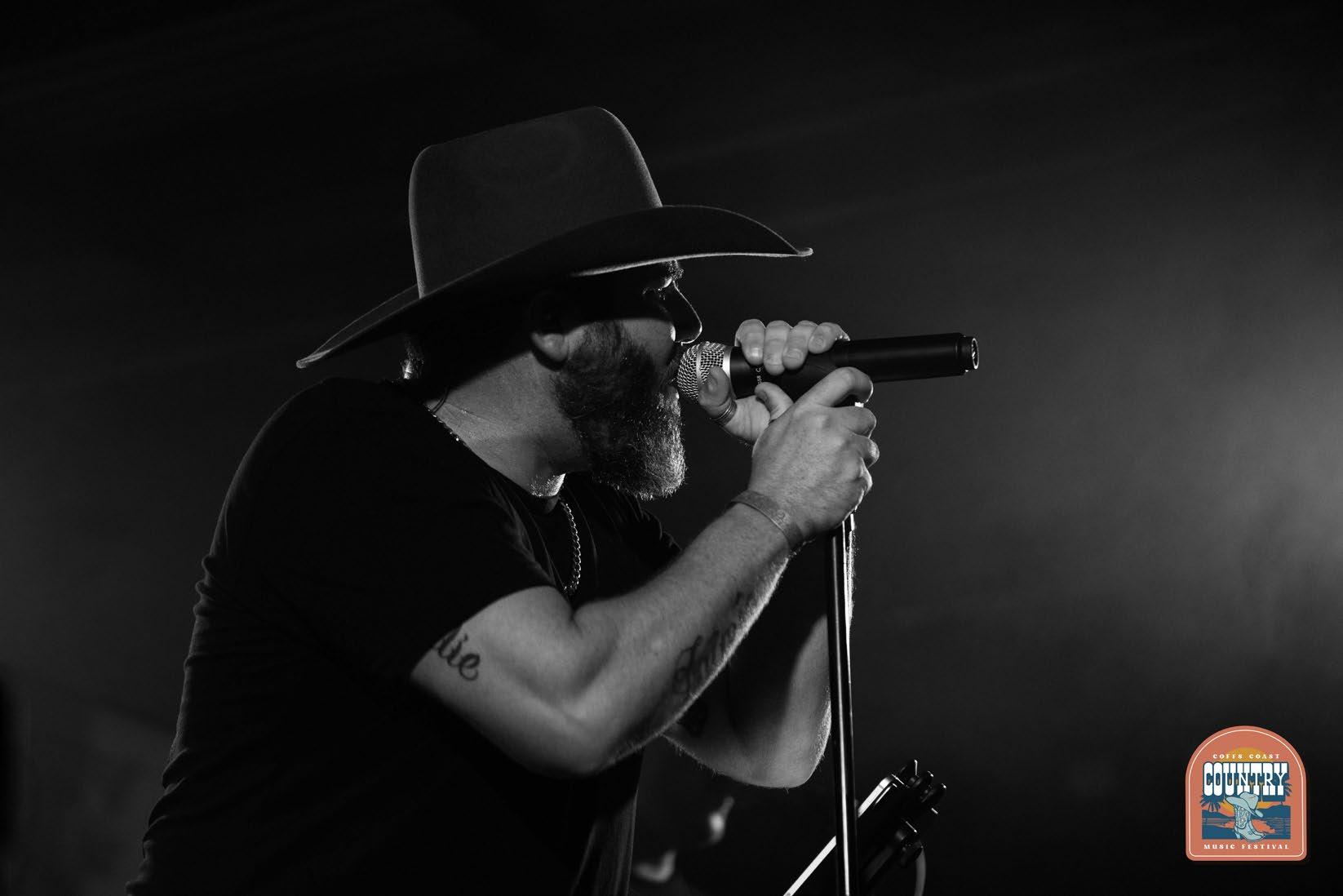
EVERY LONG WEEKEND SUNDAY

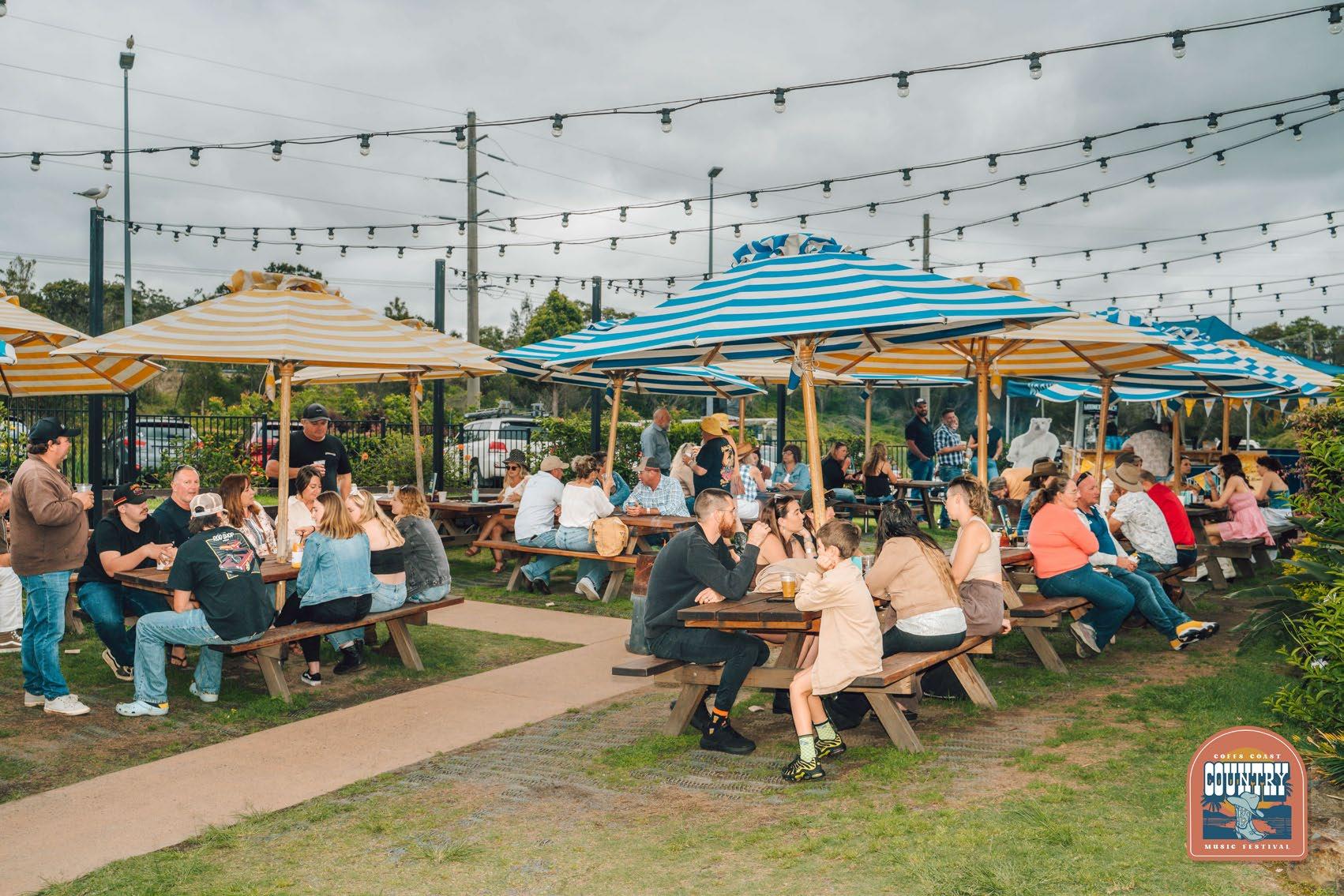
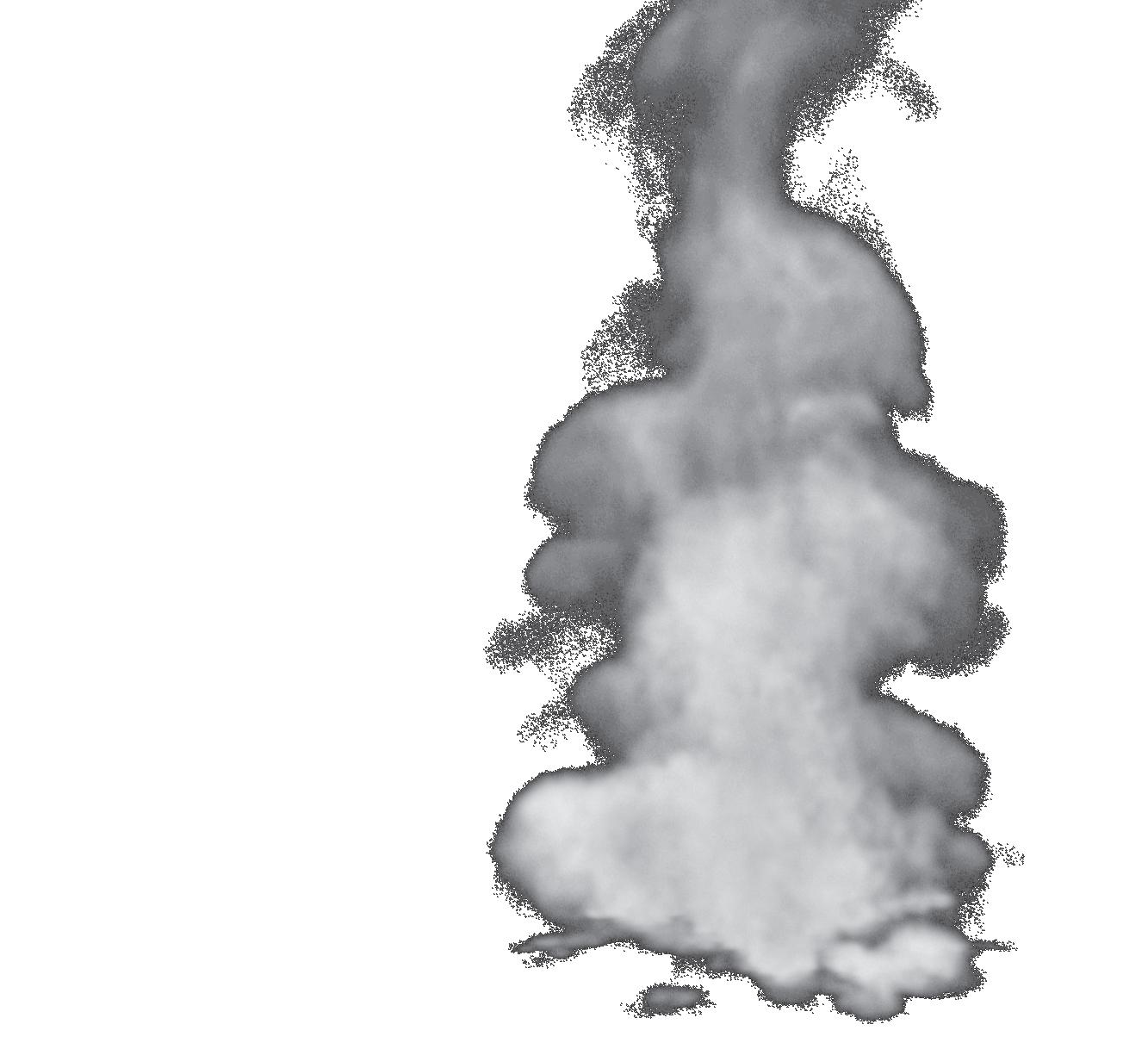
COFFS COAST - COUNTRY MUSIC FESTIVALSaturday 25th October
- First Wednesday of every month - Last Sunday of every month
- Every Saturday - Every Tuesday
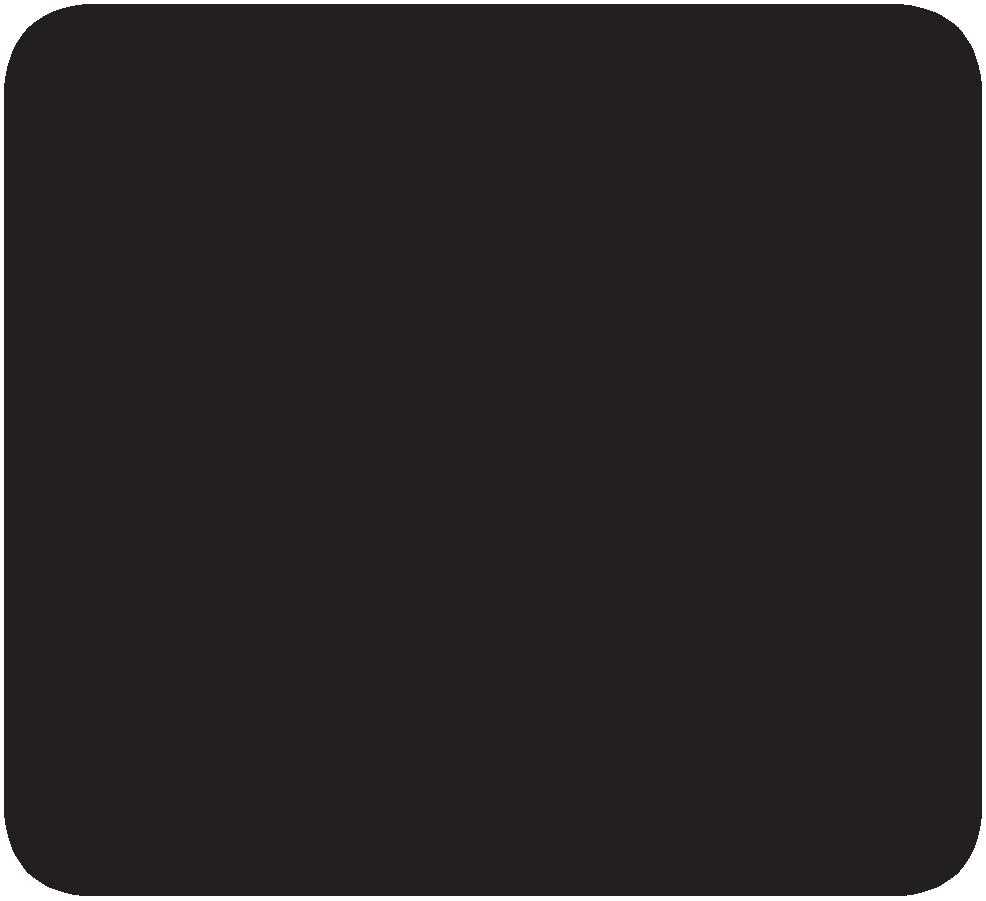
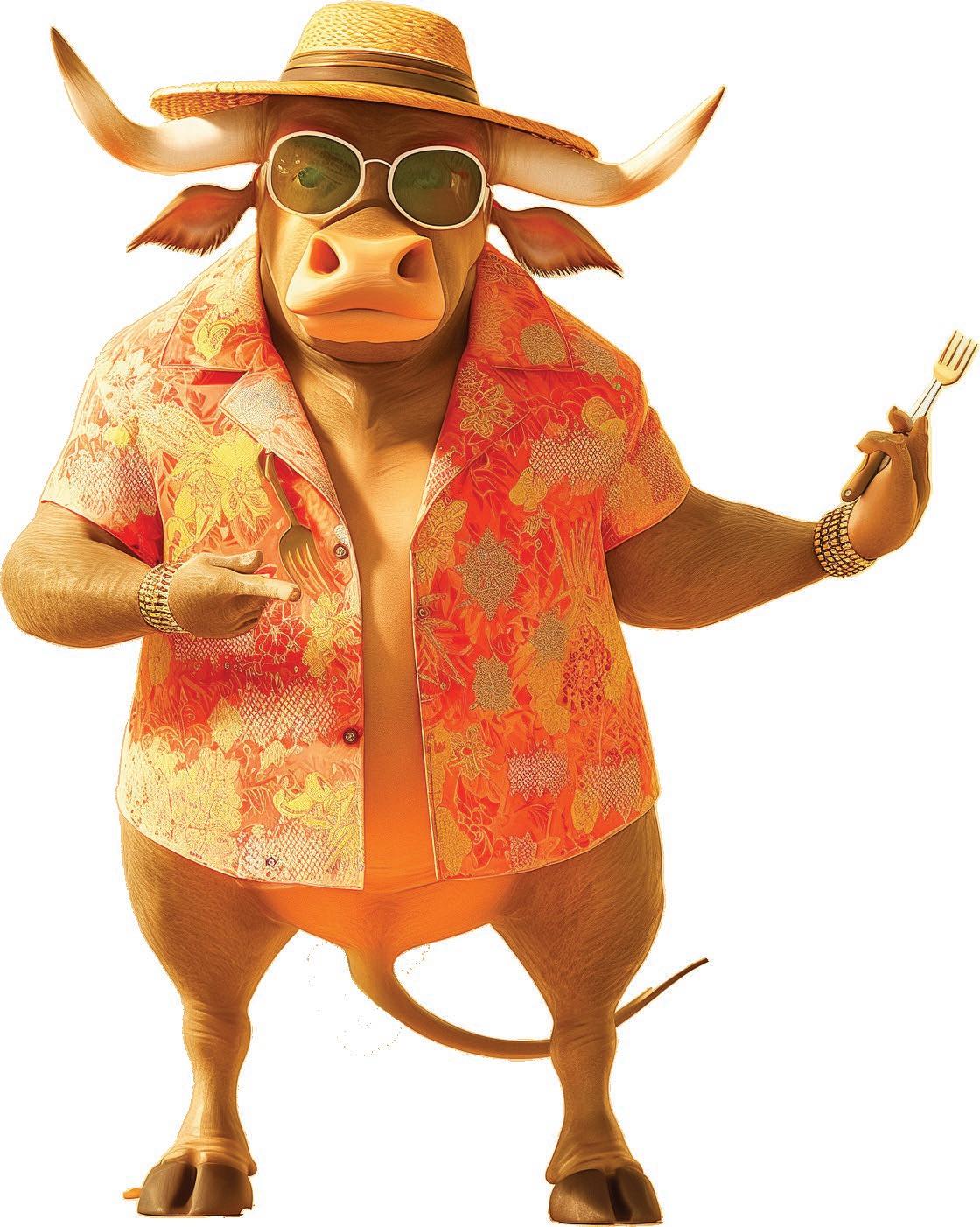
EVERY FRIDAY & SATURDAY
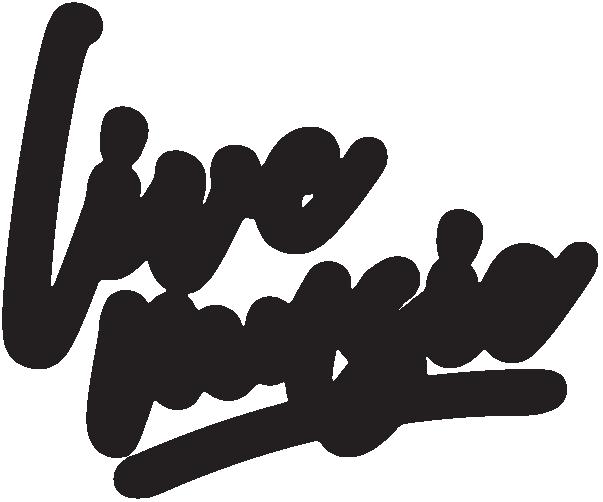
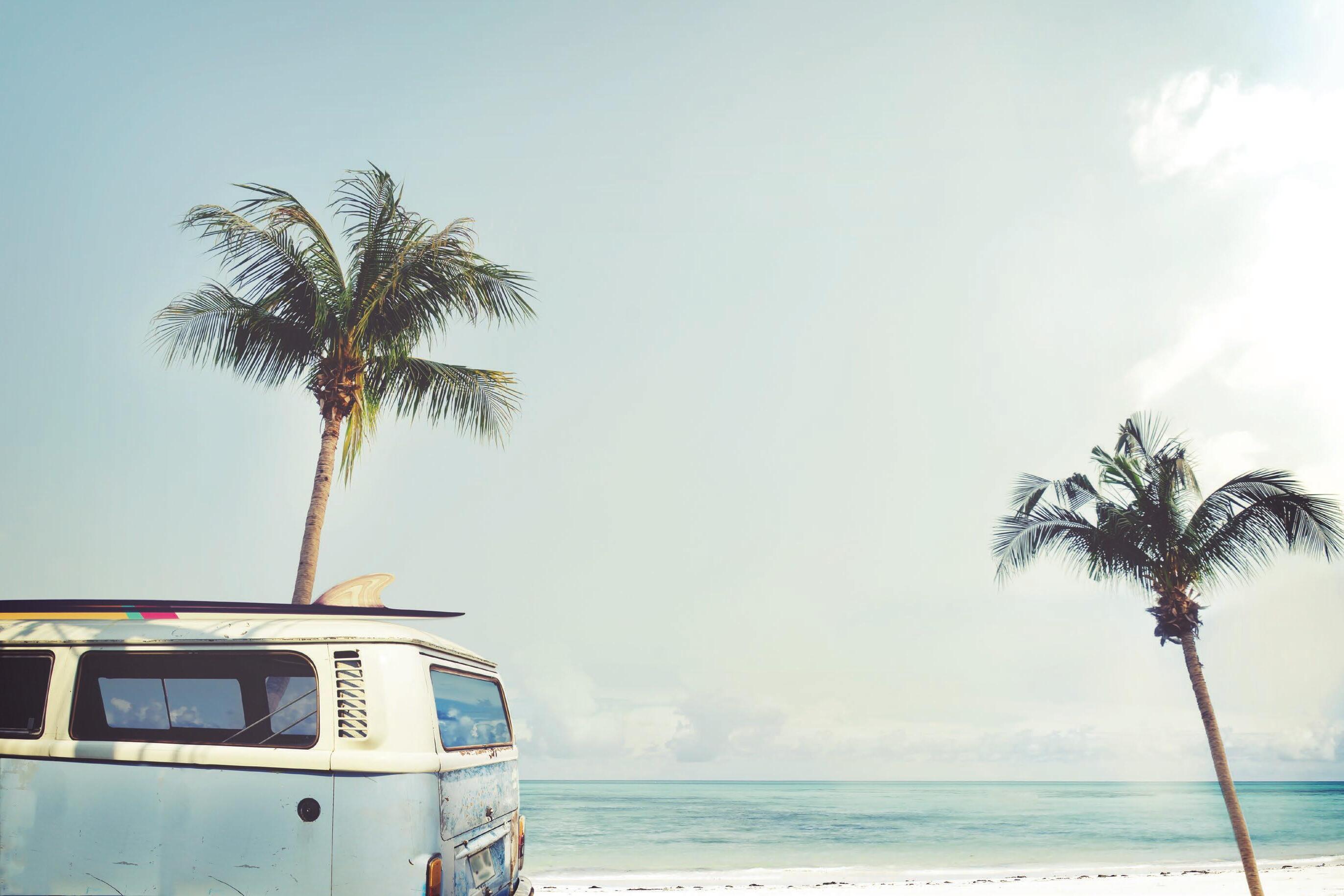
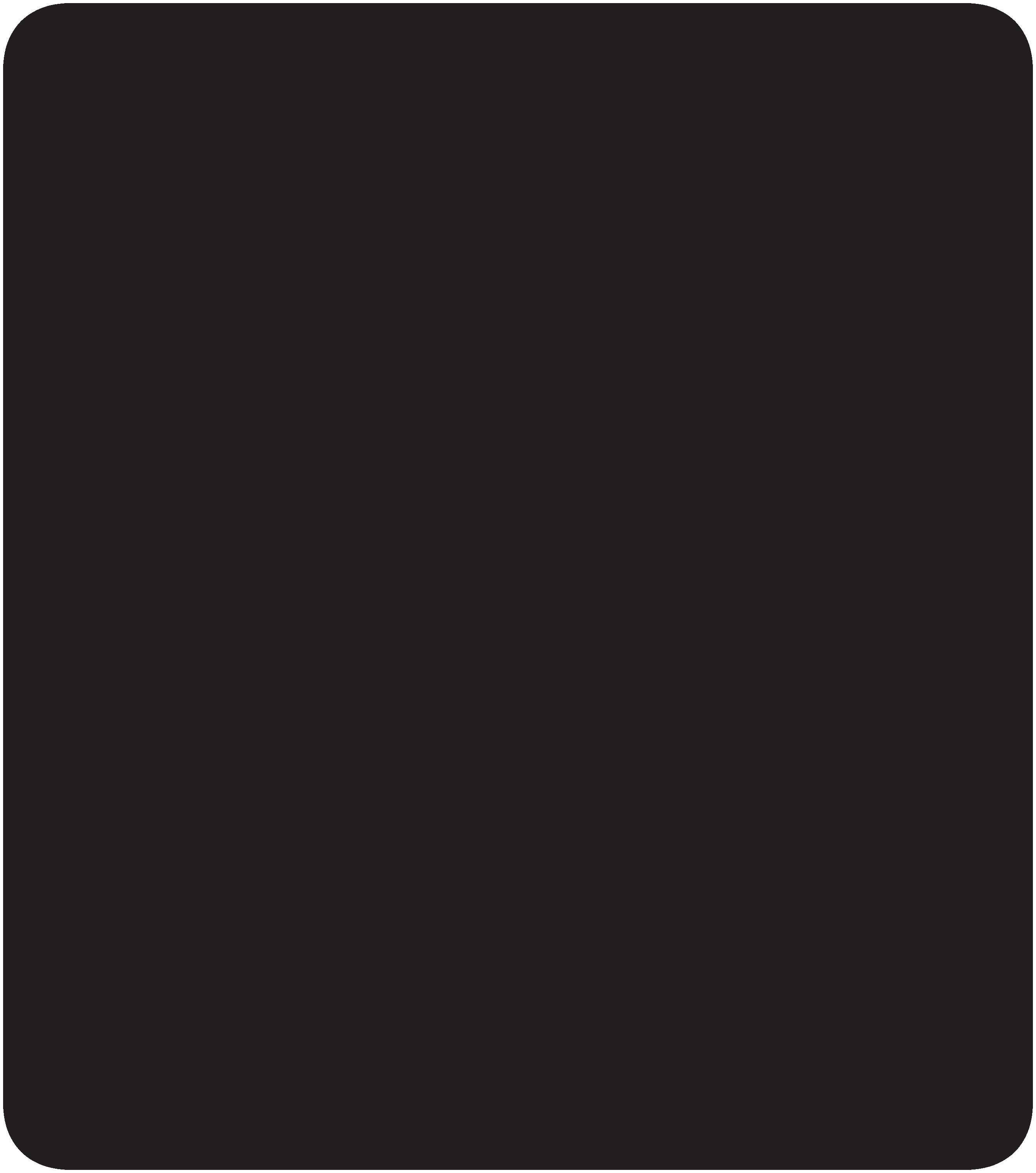
FOUND FAMILY, FRIENDS AND FINE FEATHERED FOLKS HIT THE ROAD TO SAMPLE THE SIGHTS AND DELIGHTS OF OUR GLORIOUS REGION.
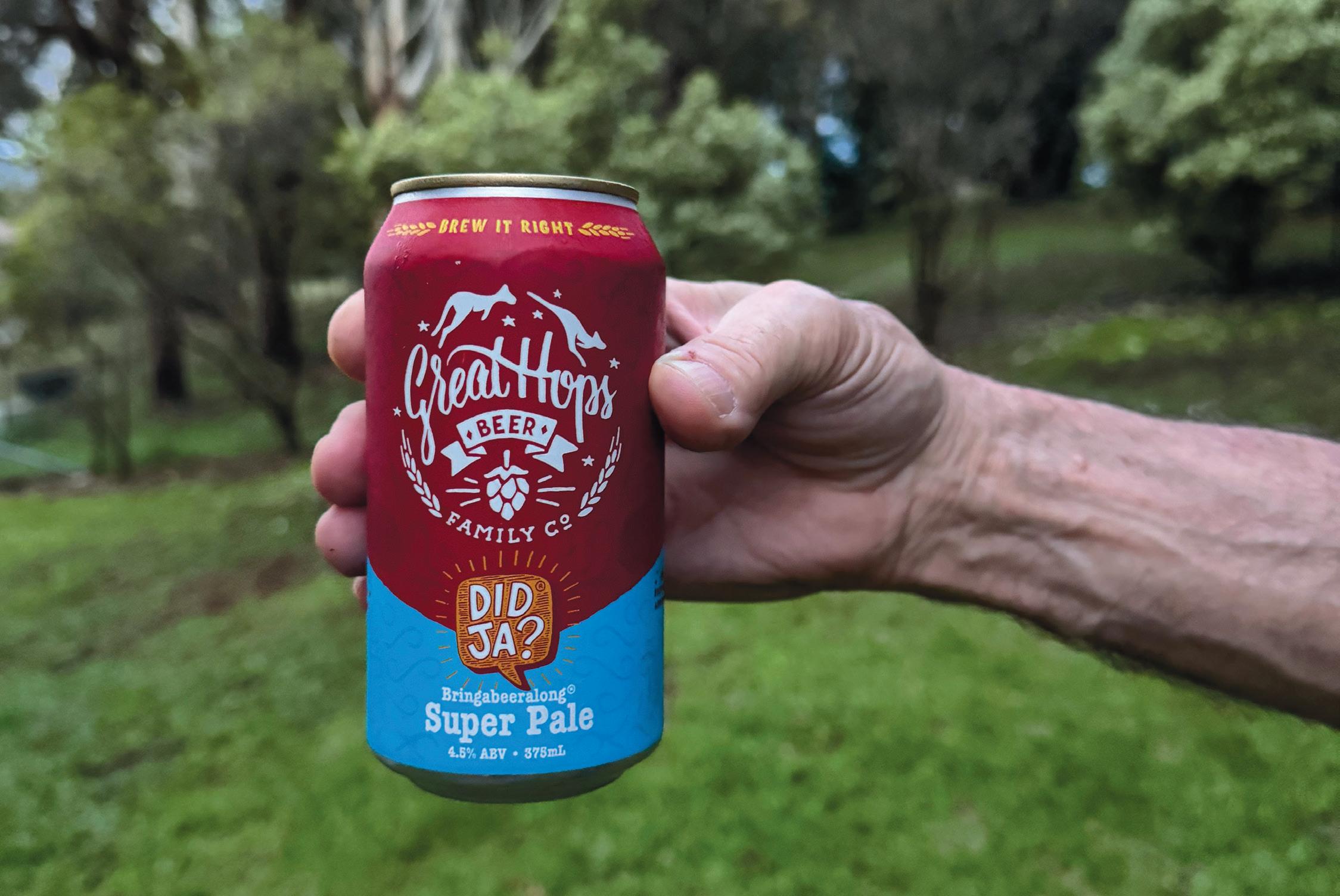
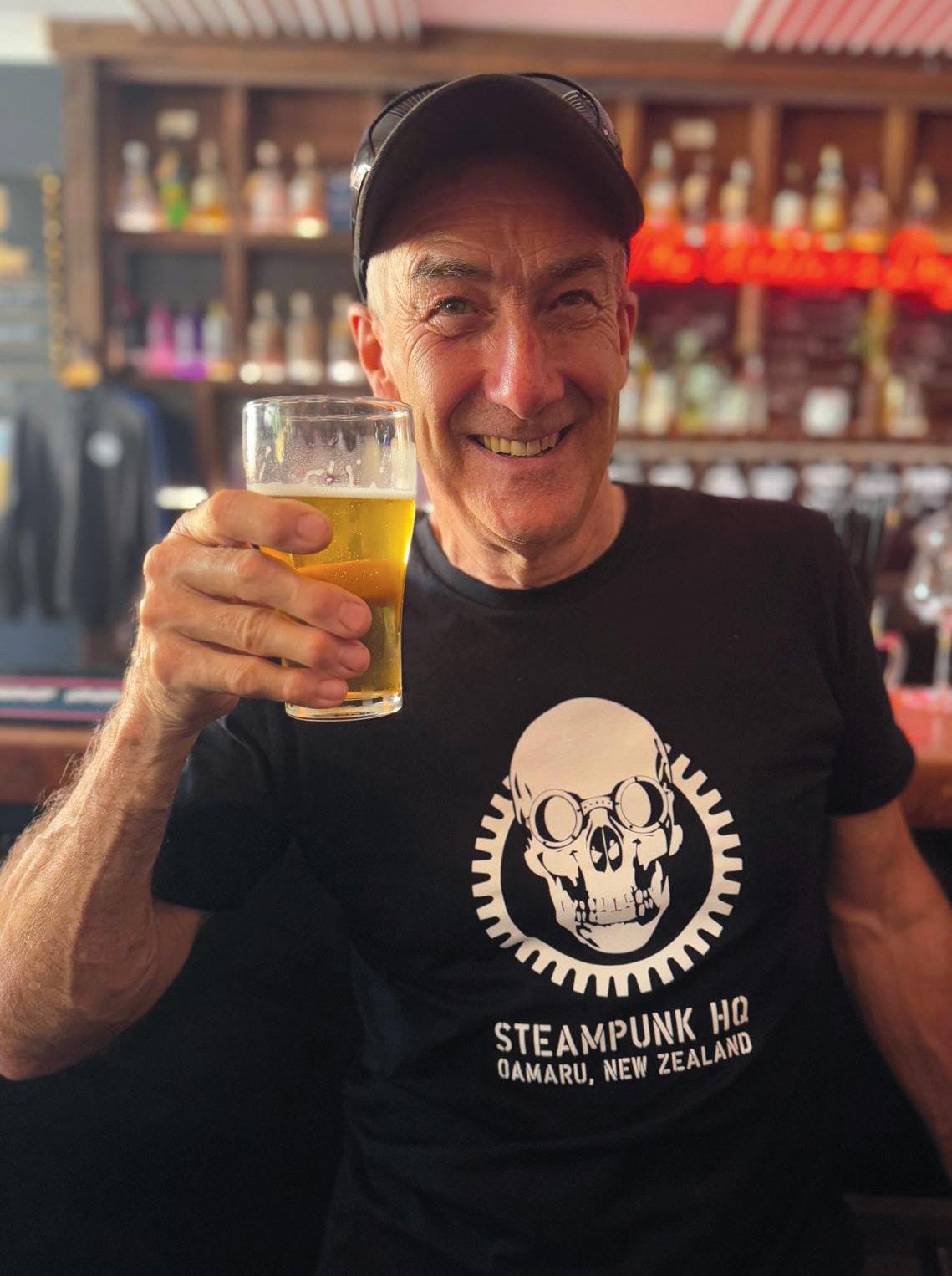
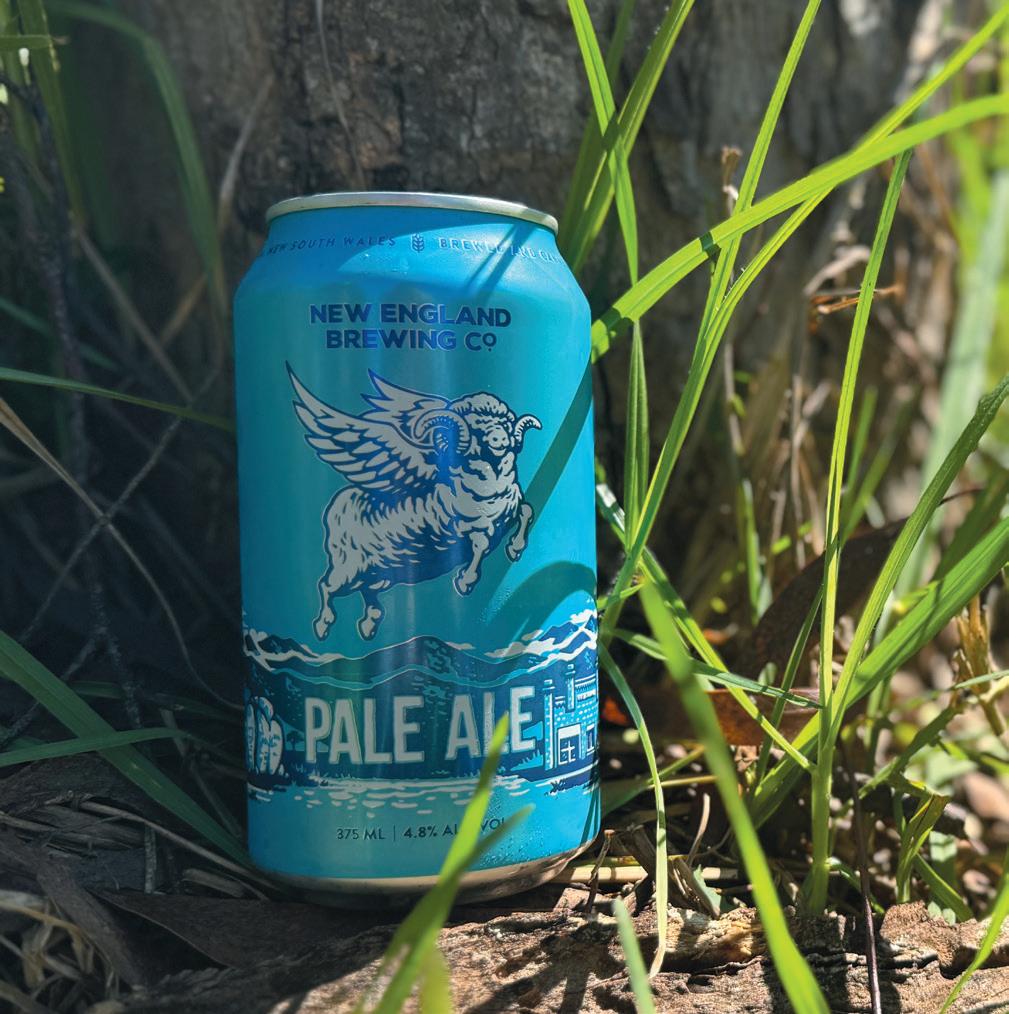
Alan Wanless was born and raised in South West County Durham in the UK. Not that it’s something to be proud of on reflection, but he drank in every pub (42) in the local town before he was 17 years old. These days, Alan mainly drinks beer out of preference, although has been known to drink wine.
While he’s used to drinking pints rather than the smaller, schooner quantity in Australia, session beer in the UK tends to be 3.5-4.2 per cent alcohol, rather than the higher abv (alcohol by volume for those playing at home) of craft ales. Weaned on Camerons Best Bitter, brewed in British West Hartlepool, home of the Monkey Hangers (but that’s another story), Alan currently lives in a small village of about 400 residents in North Yorkshire. Complete with its own micro brewery, Mithril Ales, this massive asset to village life supplies pubs in the local area.
WORDS Alan Wanless
NEW ENGLAND PALE ALE URALLA
Hazy, bitter, slight citrus taste, medium mouth feel. On the higher end of session beer strength at 4.5 per cent abv.
THE WELDER’S DOG PINEY PALE ALE ARMIDALE AND TAMWORTH
Good clear appearance, bitter taste, slightly citrusy, very drinkable – 4.3 per cent abv.
GREAT HOPS DIDJA SUPER PALE ARMIDALE
Quite bitter taste, hazy, very easy to drink, with medium strength aftertaste – 4.5 per cent abv. *
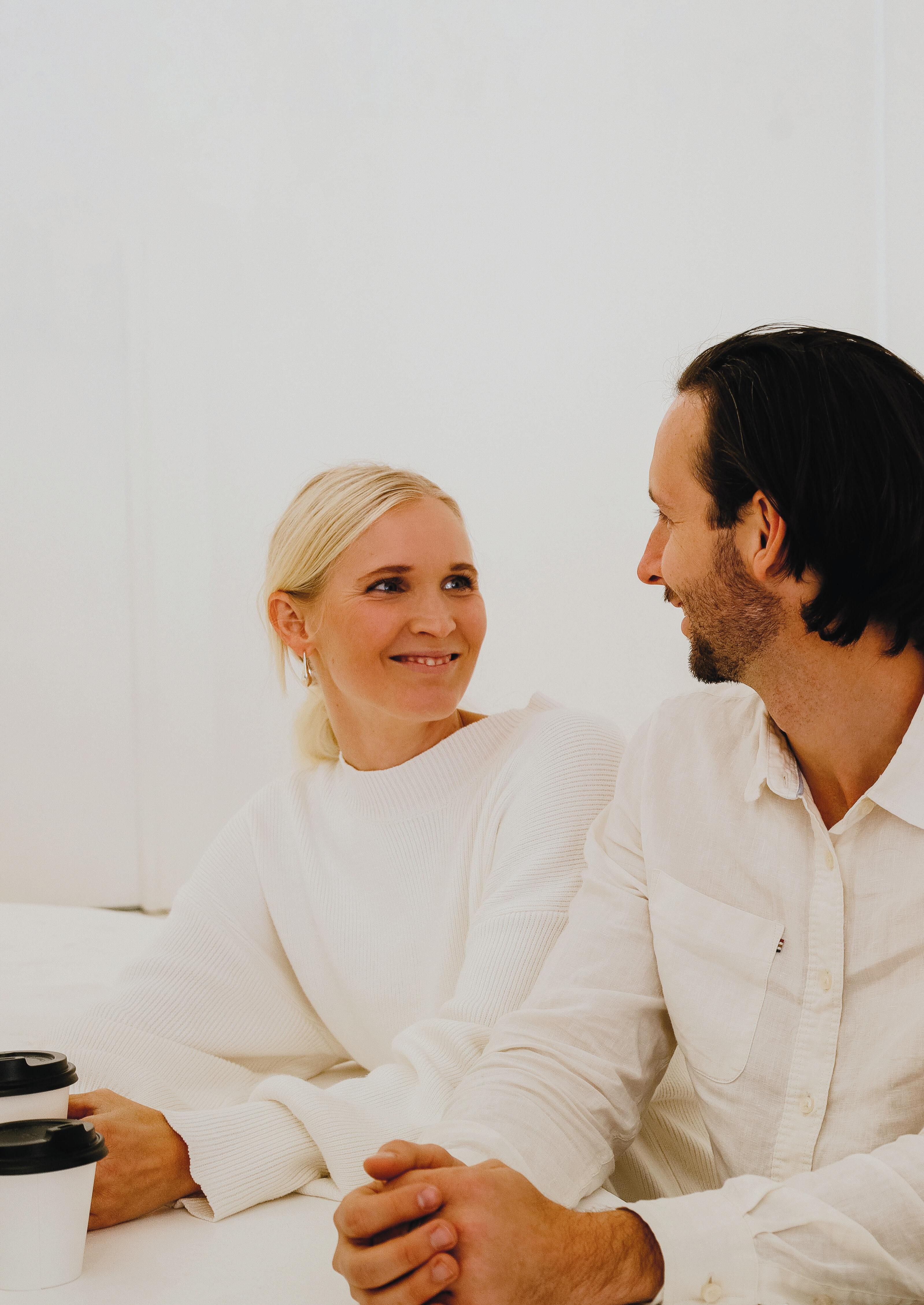

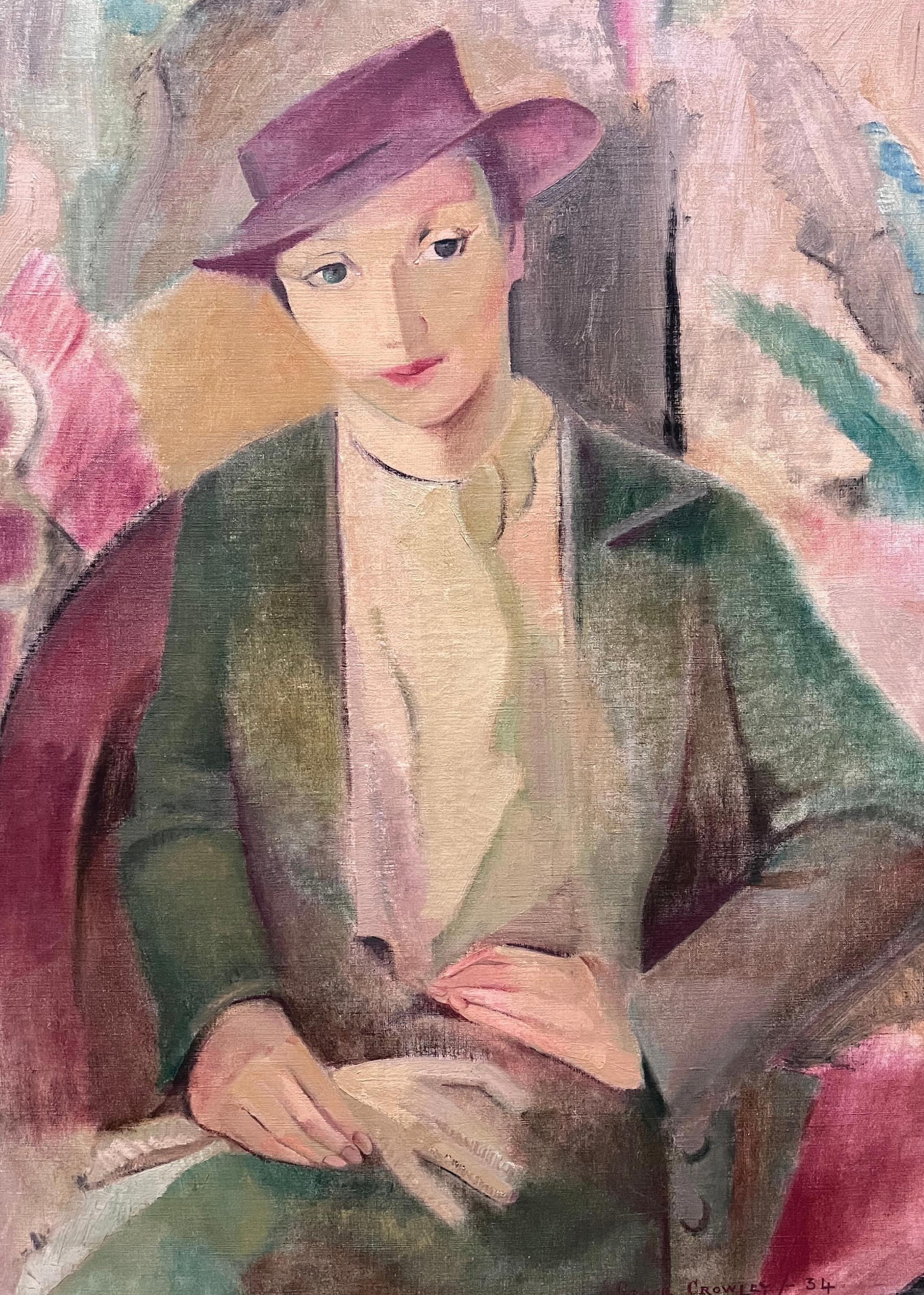
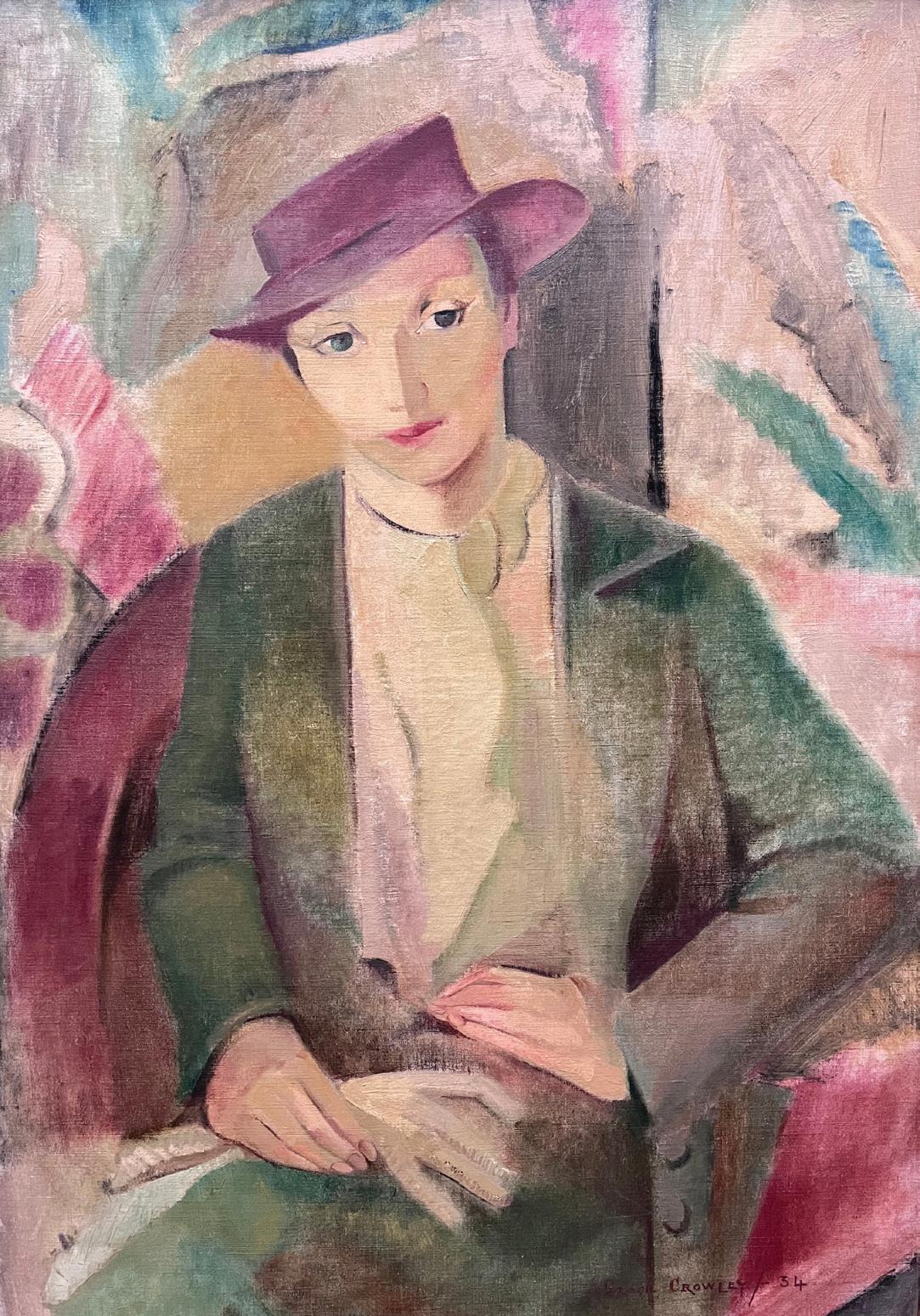

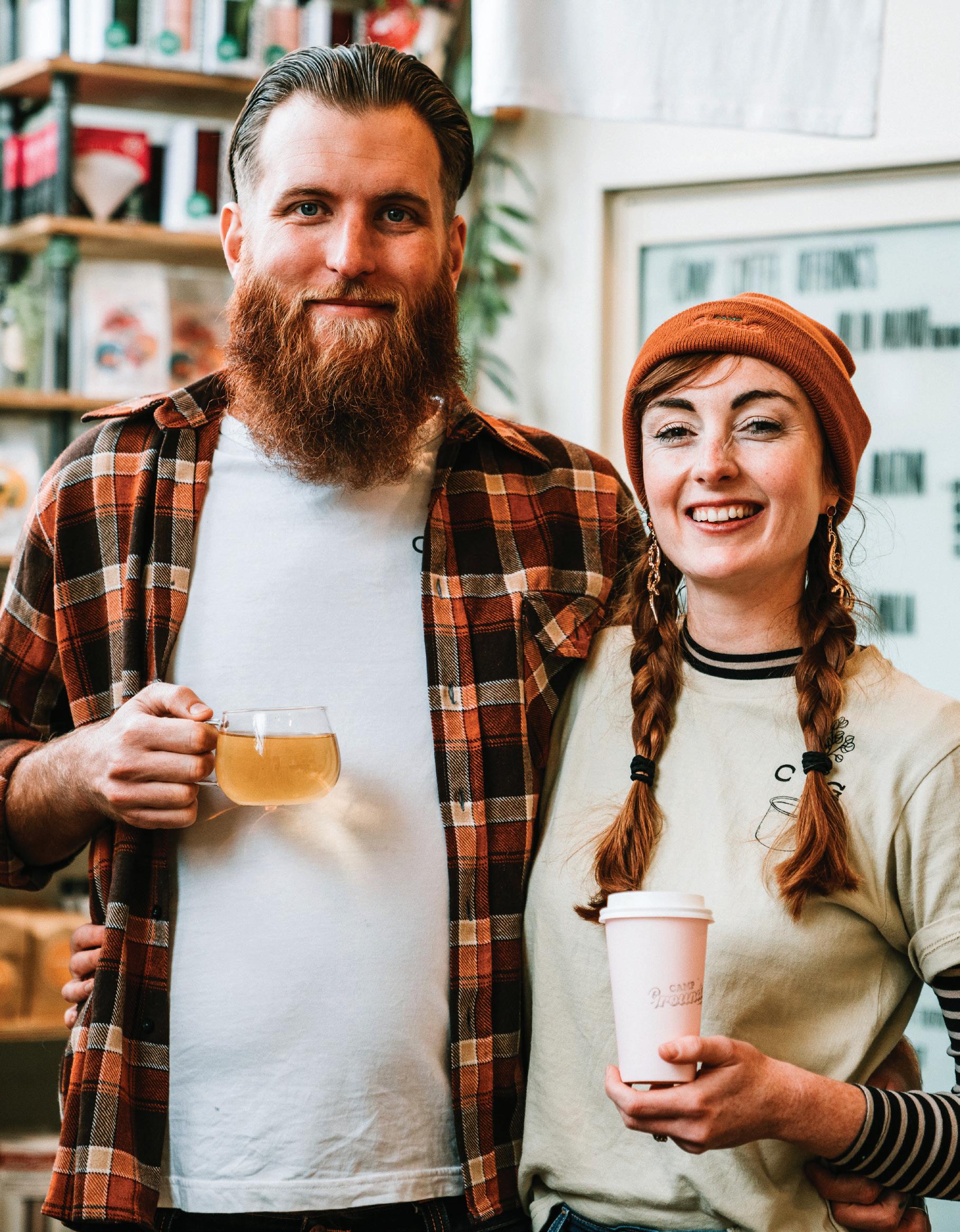
Q&A TIME WITH BUSINESS MINDS FROM A WHOLE RANGE OF INDUSTRIES. DISCOVER HOW THEY GOT THERE, DID IT, BOUGHT THE T-SHIRT.
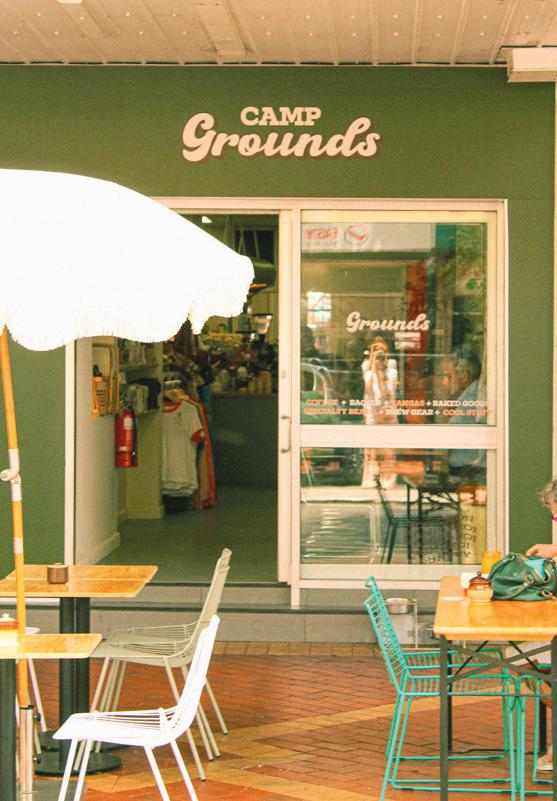
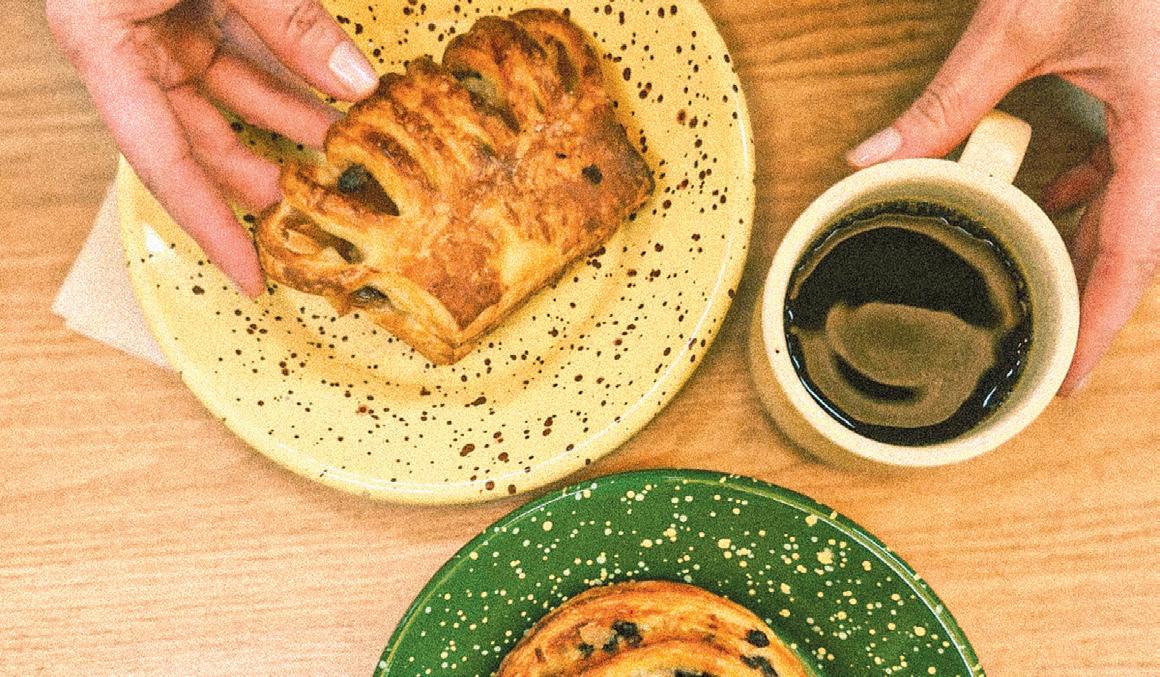
Mon Hope and Matt Bettesworth opened Camp Grounds with one key goal in mind – to bring high-quality coffee to the streets of Tamworth. Six years on, the business-savvy, creative duo are planning to shine a spotlight on local producers and makers from their Peel Street premises.
WORDS As told to Steph Wanless PHOTOGRAPHY Supplied by Camp Grounds
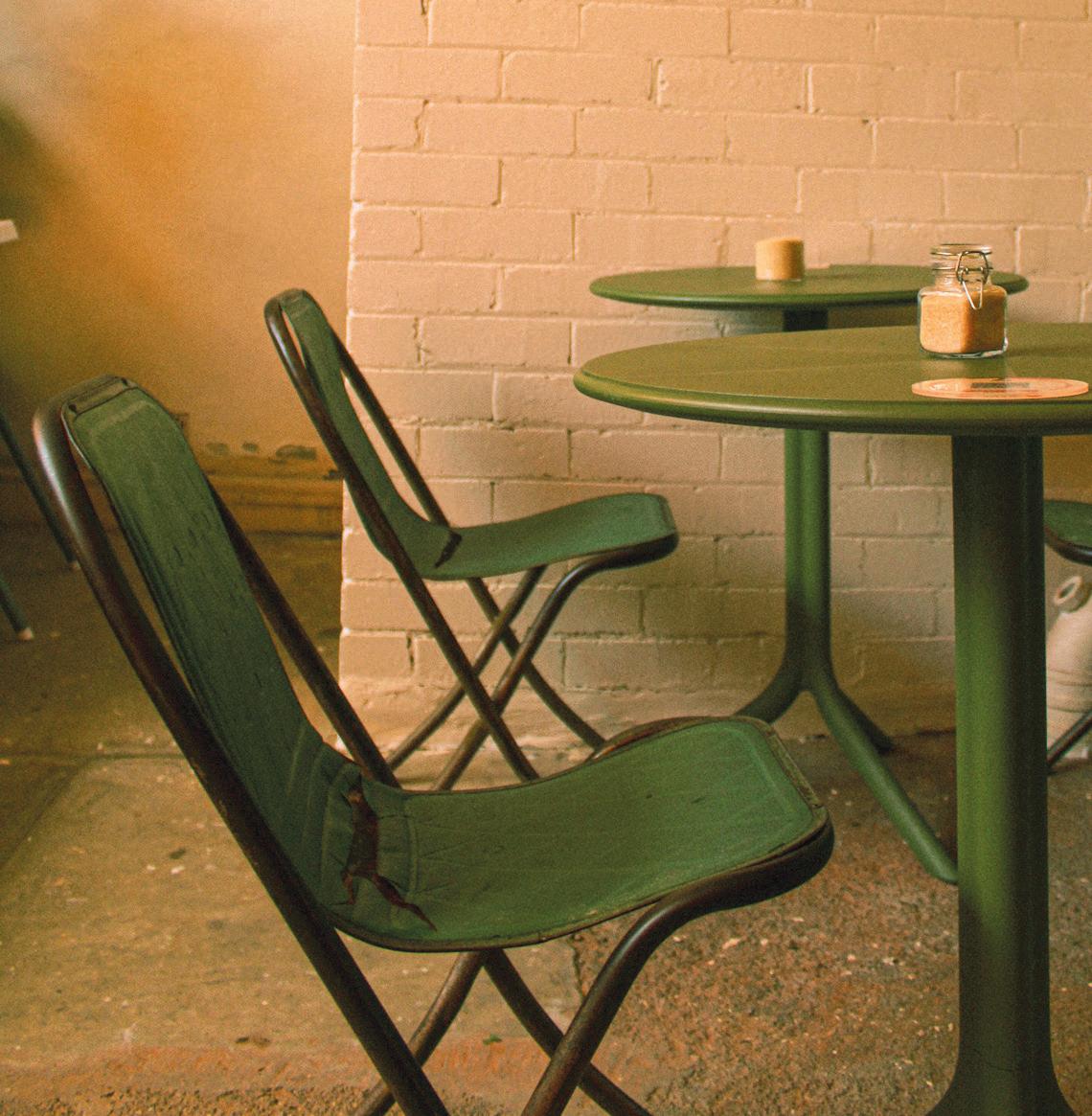
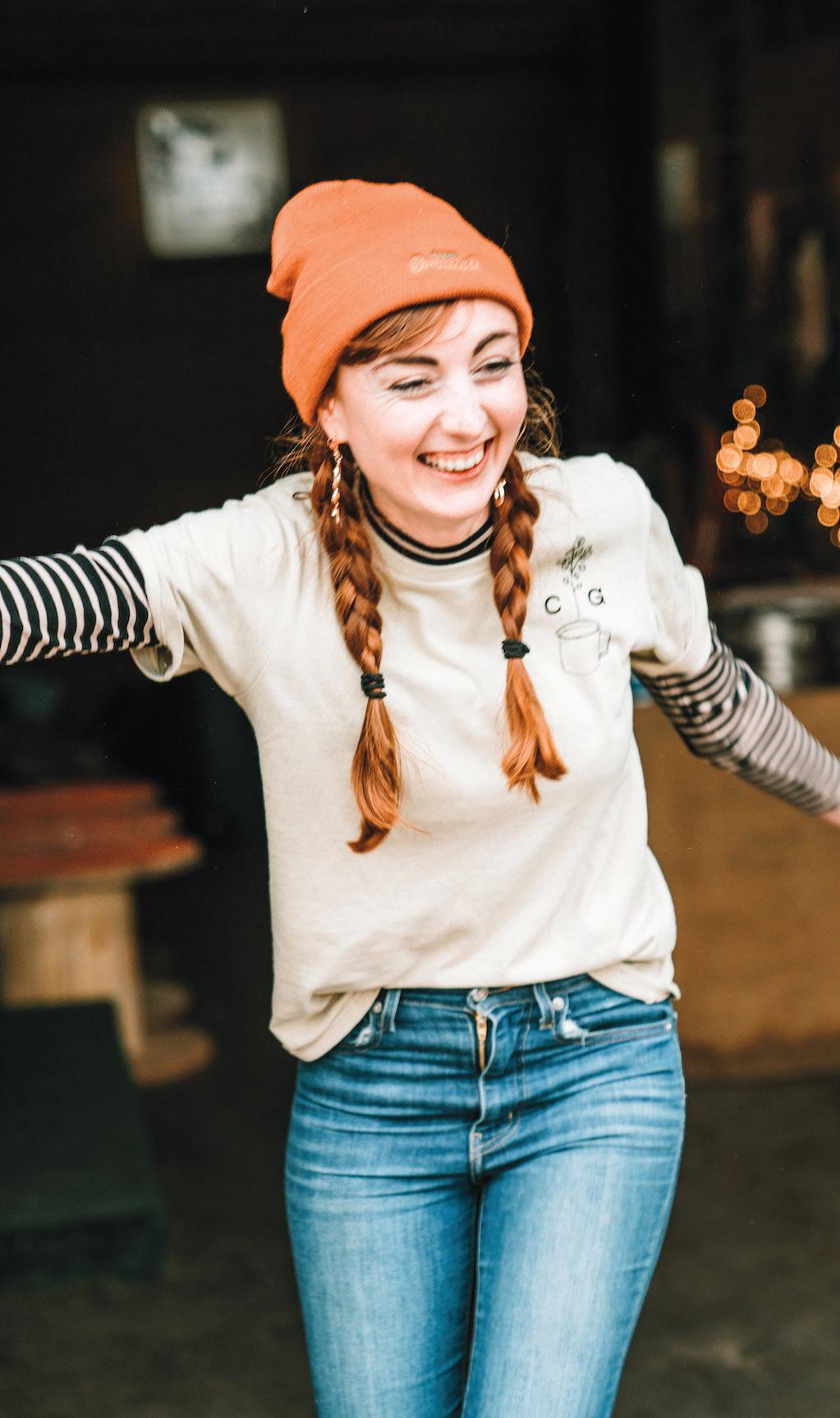

“Finding your own local spot is a big part of what makes people feel connected to a town.”
How did your hospitality career begin? I was 14 years old when I got my first job in hospitality. I worked at KFC, which I actually loved. I understood early on that how I showed up mattered. My manager once said to me:
“You have an opportunity to make someone’s day. They could leave feeling great, or leave feeling terrible.” In that moment I realised the impact my role had on others and I became a customer service champion. I decided it was my role to impact everyone in a positive way. Of course, I’m also a bit of a people pleaser, so I was probably primed for it in a way. But I still take that approach today – taking pride in customer service has never steered me wrong.
What did you study after high school? In senior high school I decided to do my Certificate III in Hospitality and ended up getting really good grades. That led to me getting a scholarship to do a hospitality degree at the University of Newcastle. I’d always wanted to study design too, but I just didn’t have a template for how I’d go about it – let alone the confidence to pursue it. So I ended up taking a gap year and headed to Far North Queensland. I got a job at Dunk Island Resort, nicknamed Drunk Island for obvious reasons. There I was, just 18, never having lived anywhere bigger than Inverell, working with expats from all over the world. It was a great experience, but after three months I missed knowing people and that feeling of connection that comes from regional communities. So I took up the opportunity to do a Bachelor of Business in Tourism and Hospitality Management at Southern Cross University’s Lismore campus (with a short stint in Port Macquarie in between). On the side, I started working at Boost Juice to get my customer service fix – I loved it.
When did your design skills come into play? My passion to pursue art and design never went away, so when we decided to open Camp Grounds, the opportunity to step into that space flourished really naturally. Matt’s a creative guy and he always wanted to pursue his own venue, but with that comes branding, a website, social media, merch – all the things needed to launch a business. I’d never done anything like that before, but having just completed my Associate Degree in Fashion Design at RMIT (and NABA in Milan for the exchange), I felt like these design skills transferred pretty seamlessly. I had an understanding of visual language and the ability to use design programs and tools. I also always had Matt’s belief in me – he has this way of seeing what I can do and how I can apply it to other things. It’s given me so much more confidence.
While Matt was focused on products, I came at it from an aesthetics and overall experience point of view. I asked
the questions: what do we enjoy about the places we visit? What makes us feel at home in other cafes? What makes us feel connected? Finding your own local spot is a big part of what makes people feel connected to a town, make friends and become immersed in the community. We wanted Camp Grounds to become that place, where people gather and we personally can put down roots in Tamworth and start to feel grounded.
How has social media played a role in building your brand? I always felt there was an opportunity for cafes to connect more with people through social media –back then, it wasn’t really being used to extend the cafe experience beyond its walls. So once I had the branding and website live, the vibe translated across to social media pretty naturally. I wanted something that went with Matt – think 1970s aesthetic crossed with an outdoorsy, nature-loving, camping vibe. All those things combined on the original mood board, and led to the kind of brand that boosts connection while triggering a sense of nostalgia.
Let’s talk money – how have you managed to launch a successful business in such tough economic times? (Hello drought, bushfires, global pandemic.) It’s true, opening doors in November 2019 was a bit of a challenge, but we thought, hey, people still need coffee. And we worked hard to keep the whole operation very lean from day one. To be totally honest, the bank actually laughed at us when they saw how little we wanted to borrow to get it off the ground. But we planned it all out and knew it was possible because we were doing a lot of the building set-up work ourselves, alongside family members helping out. It worked because we were able to pay the loan off quickly so we’re carrying little debt. It means we can be experimental, creative and keep our options open.
What’s your one piece of advice for someone considering opening a hospitality business in a regional location?
If your goal is similar to ours – to create community and bring something you love that’s missing in the place you find yourself – then think about what you have to contribute. Whether that’s knowledge or a particular product or experience, think about how you can positively impact the local community in a way that aligns with your passions and skills. From there, start small and build with the community. Involve the people you’re showing up for in the evolution of the business. Keep listening, adapting and co-creating every day. For me, customer service remains core to everything I do too – I still love interacting with people as much as I did back in my KFC days. It’s about giving the customer a good experience and making their day that little bit better. ››
How did your hospitality career begin? I was actually born and bred in the regional pub scene. I was a glassy by the time I was 14, moved into the bar scene and then across to the fine dining sector. After I met Mon, she had the opportunity to study in Milan and I was offered the chance to be the leading coffee training for a larger bakery over there. I had 180 staff underneath me and managed their coffee training and education across the UK. It was a very large gig, and I loved it, but we wanted to settle down and start a family in an area we love. So we moved home to the New England, and specifically chose Tamworth because we saw a lot of opportunity here.
What was your plan with Camp Grounds from day one? I really wanted to test the offering of speciality coffee here in Tamworth – and to do that while avoiding a massive amount of debt. At the start, we had milk crates for seating and didn’t offer food, instead choosing to focus on the quality and traceability of the coffee beans. We wanted to know, where does the bean come from? Are the producers and farmers being paid a living wage? Does that adhere to industry standards? Are the beans of a high quality, graded 80 or above? All of those answers are so important to us before we even brew the coffee, because we want to share those stories with our local community. So to be able to do that, we chose not to be contracted to any coffee roastery. Over the past five years, having that flexibility has enabled us to showcase close to 250 coffee varieties and around 50 Australian roasters. No one else is doing that here, let alone in regional Australia. You’ll find a handful of venues in the city that share that ethos and ask the question: what’s the story of the grower, the roaster and the beans? That’s what I wanted to showcase in Tamworth, but also keep it very casual. We didn’t want to scare people or make it feel complicated. We wanted to bring different coffees to the community and be able to talk to them about why this coffee is special, and why it tastes fantastic.
It really does… and obviously the local community agreed? They did! Honestly, it actually kind of exploded. We were all set for this ‘hole-in-the-wall’ cafe vibe, but we were churning through so many more beans than we’d originally expected and we grew fast. I’m so thankful for the hospitality community I’d built in my previous roles here in town – they all got around us and word travelled fast. People were obviously enjoying the product, the friendly banter and the experience – that was so important for both Mon and me.
So people love the coffee. Talk to me about the milk… We’re very particular about what milk we showcase. We don’t just go, here’s the soy option, here’s the oat option and be done with it. We do our research and make informed decisions – that’s led us to use Happy Happy Soy Boy because it’s a super smooth, dairy-free product that’s actually designed to work with the natural acidity of espresso coffee. It has no GMOs, stabilisers or emulsifiers and its higher protein content means the
coffee molecules have the opportunity to stick to the proteins of the milk. That means it showcases the coffee profile, which is really important.
On the oat front, we were actually one of the first places to bring oat milk to Tamworth. I’ve personally been using Oatly for the past 12 years. They first introduced their product to the world back in 1994 and just exploded.
People have responded really positively to our different milk options. Our customers can have a lot of dietary requirements, so being able to offer a variety of alternative milks to cater for them is super important.
You’ve now grown so much, you moved into new premises in 2024. How’s that going? It’s been fantastic. It’s opened up a lot of new possibilities the original venue couldn’t provide, such as more in-house dining space and a larger food offering. We’ve moved from 35 to 55 seats, which isn’t a massive change but our dining numbers have increased from 12 per cent to 28 per cent which is great. We’re also welcoming a more diverse range of customers, which I put down to having street frontage on Peel Street – we now have access to good foot traffic. Being able to have air-conditioning now is another big bonus, from a general comfort perspective but also on the health and safety front. In the old shop we’d hit 55 degrees in summer, but would struggle to get over five degrees in winter. Now we’re sitting at a comfy 22 degrees all year round.
What other plans do you have for the future? First up, we’ve secured our liquor licence, so the crew will be serving wine from 10am-5pm. But the best part of that is it means we’ll be able to host some really unique wine events throughout the year too. At the moment we have around eight to 10 events planned, all of which are inspired by wine bars from around the world. We’re talking pop-up, special occasion events showcasing the kind of wine Mon and I enjoy drinking, with a focus on Australian, natural and minimum intervention wines. It’s the small produce stuff you can’t often find in bottle shops – we want Camp Grounds to become a space to showcase them. We’re also planning on doing some collabs with local chefs to highlight their food. We’ve already got four chefs lined up to showcase what they love to cook. If the idea works, we’ll then start bringing in wine producers too –phenomenal makers who only produce a small number of bottles a year. They’re the people we want to lift up and showcase in the community. It would be great to bring some really cool, unique people out this way too, sample their goods and hear their ideas about the food and wine industry. They’re great storytellers and the whole experience goes deeper, offering an education component to our guests. It’s about creating the building blocks to lift up our community too. We’re also talking to some local artists about potentially doing an art gallery night. We want it to feel like a cool, collaborative space, with the Camp Grounds twist everyone’s come to know and love. *





322 Peel Street, Tamworth campgroundscoffee.com.au @campgroundstamworth
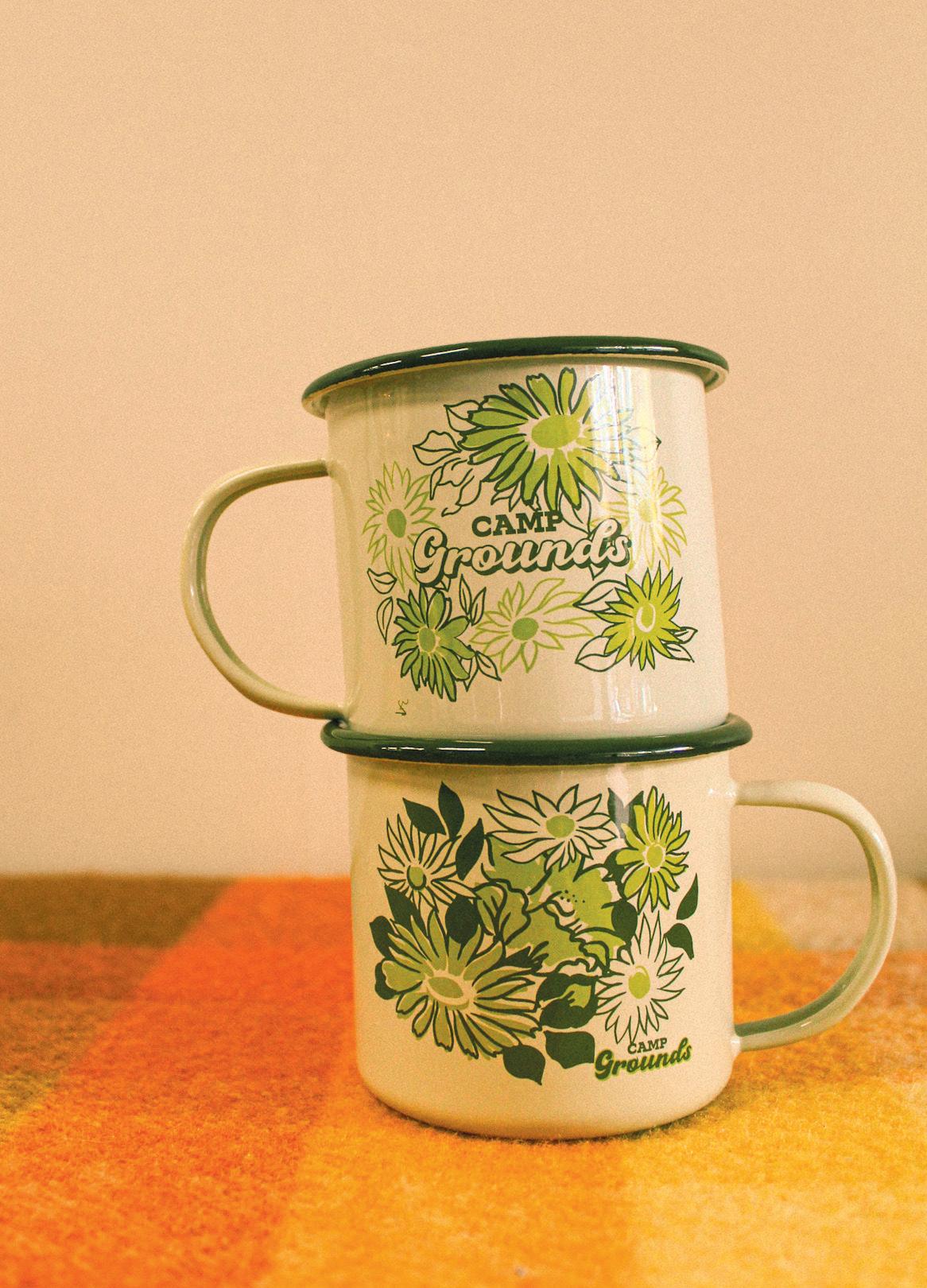
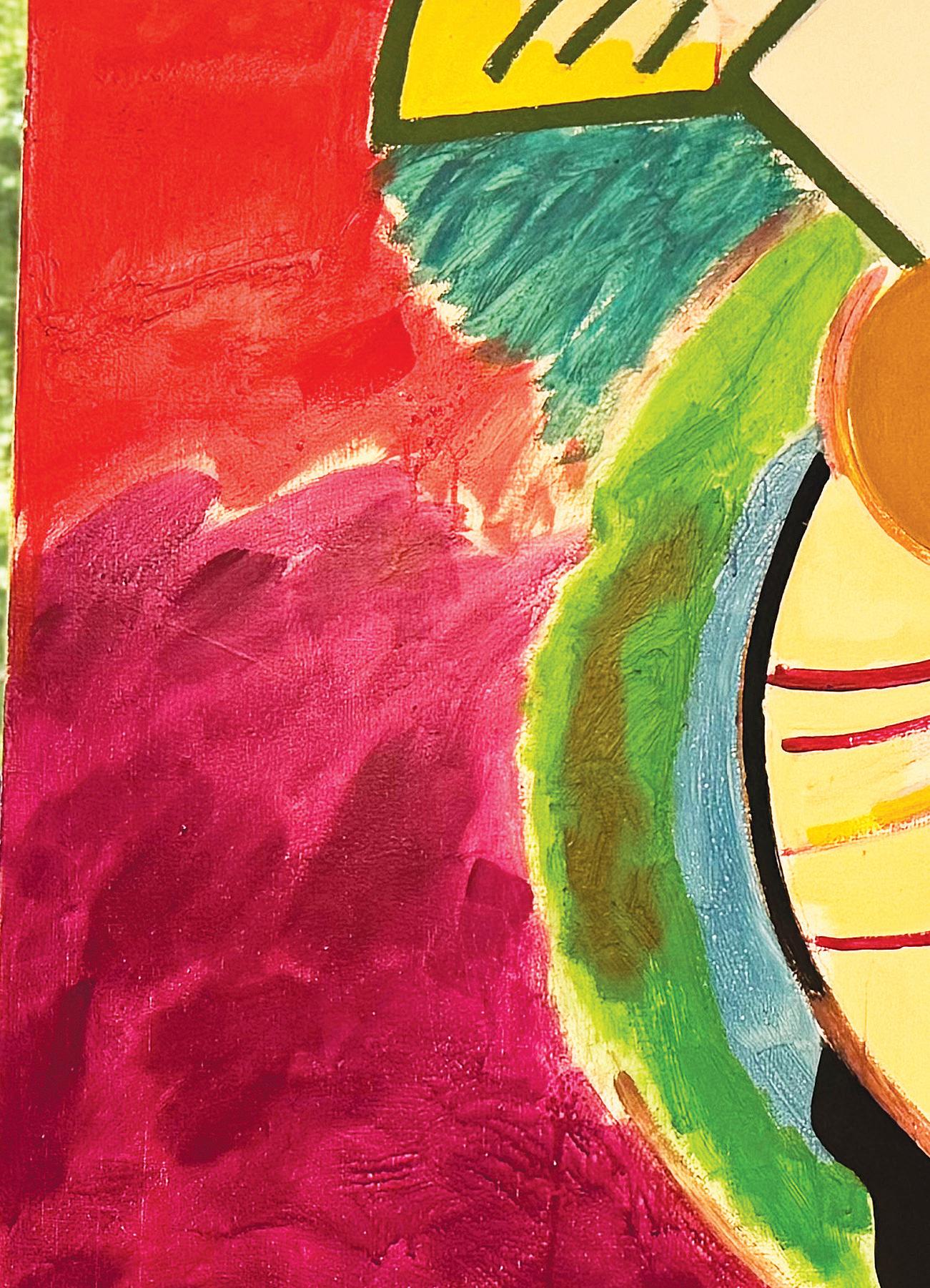
New England Regional Art Museum’s ‘Remembering with Art’ program ignites memories of worlds gone by, boosts connection and celebrates the here and now.
PHOTOGRAPHY Steph Wanless
A quietly spoken gentleman sits among a group of people admiring a painting of the Harbour Bridge under construction. Like the others circled around him, our friend has come to the New England Regional Art Museum (NERAM) in Armidale to be a part of their ‘Remembering with Art’ program.
Once a month, up to a dozen people living with dementia – mostly residents of a local aged care facility – roll walkers and wheelchairs through the gallery’s gift shop and foyer and settle into a semicircle of chairs, ready for their regular art therapy session.
Combining creative process with psychological theory, art therapy offers a sensory experience that can help individuals express themselves in ways that extend beyond language.
For the participants in NERAM’s program, engaging with the artworks can trigger memories and initiate conversations. For our friend, his time gazing at the Harbour Bridge has brought back memories of his former life as a window dresser in Sydney, which he proudly shares with the group.
NERAM’s successful program draws on the wide range of paintings from its renowned Hinton Collection, artworks from the gallery’s other permanent collections, and also selected works from the broad calendar of special exhibitions on display at the gallery throughout the year. Now in its second year, the program owes its ongoing success to the collaborative efforts of all involved. ‘Remembering with Art’ aims to provide a safe, comfortable and engaging environment for people living with dementia; a place where they feel welcome, valued and respected.


“The dementia programs use the strength of each gallery’s collection to start a direct visual conversation with the local dementia community,” explains Adriane Boag from the National Gallery of Australia, who travelled to Armidale to train the volunteers at NERAM. She’s done the same with those involved in art and dementia programs at other Australian galleries.
The initiating coordinator of NERAM’s ‘Remembering with Art’ program, Rose McCarthy, studied Dementia Care through the Wicking Dementia Centre at the University of Tasmania and loves those joyous lightbulb moments when the participants reconnect to memories through art.
“We started gently with four people and now successfully welcome up to three times as many people living with dementia each month.”
Rose remembers how the program first took off in February 2023, after Adriane’s two-day training workshop for the gallery’s Education Officer, the volunteers and other NERAM staff. Local people living with a dementia diagnosis also generously gave their time as participants in both the initial and second workshops held at the start of 2024.
Some of the volunteers are uniquely qualified to assist in the program, as they have their own personal life experience as a carer for a loved one living with dementia.
One volunteer, Aileen, deeply understands the benefits of engaging with art for people living with dementia. Her husband, who had been non-verbal for some time, was inspired to speak while sharing a connection with others who were intrigued by a piece of art.
“No one’s journey with dementia is the same,” says Rose. “Adriane showed us how to look at artworks (usually three or four pre-chosen pieces) as a team so we can facilitate engagement within the group and encourage active participation from our dementia friends. We ask them what they feel, think or remember when looking at the artwork and encourage them to share their thoughts and feelings.”
The program invites the participants to gather regularly in a friendly but structured social setting. This interactive gathering can help combat the sense of isolation that often comes with a dementia diagnosis. In Australia, one in 10 people over 65 will be diagnosed with dementia, and many others will be directly involved in their care.
Adriane said in her 2015 TEDx Talk, ‘Your prescription? Art!’, “When people come together and listen to each other, they are able to create an interpretation of an artwork that is far greater than they could do themselves.”
She believes we too often talk at (not with) people living with dementia and we don’t realise how effective gesture, body language, verbal tone and pauses in active listening allow people living with dementia to express themselves. ››
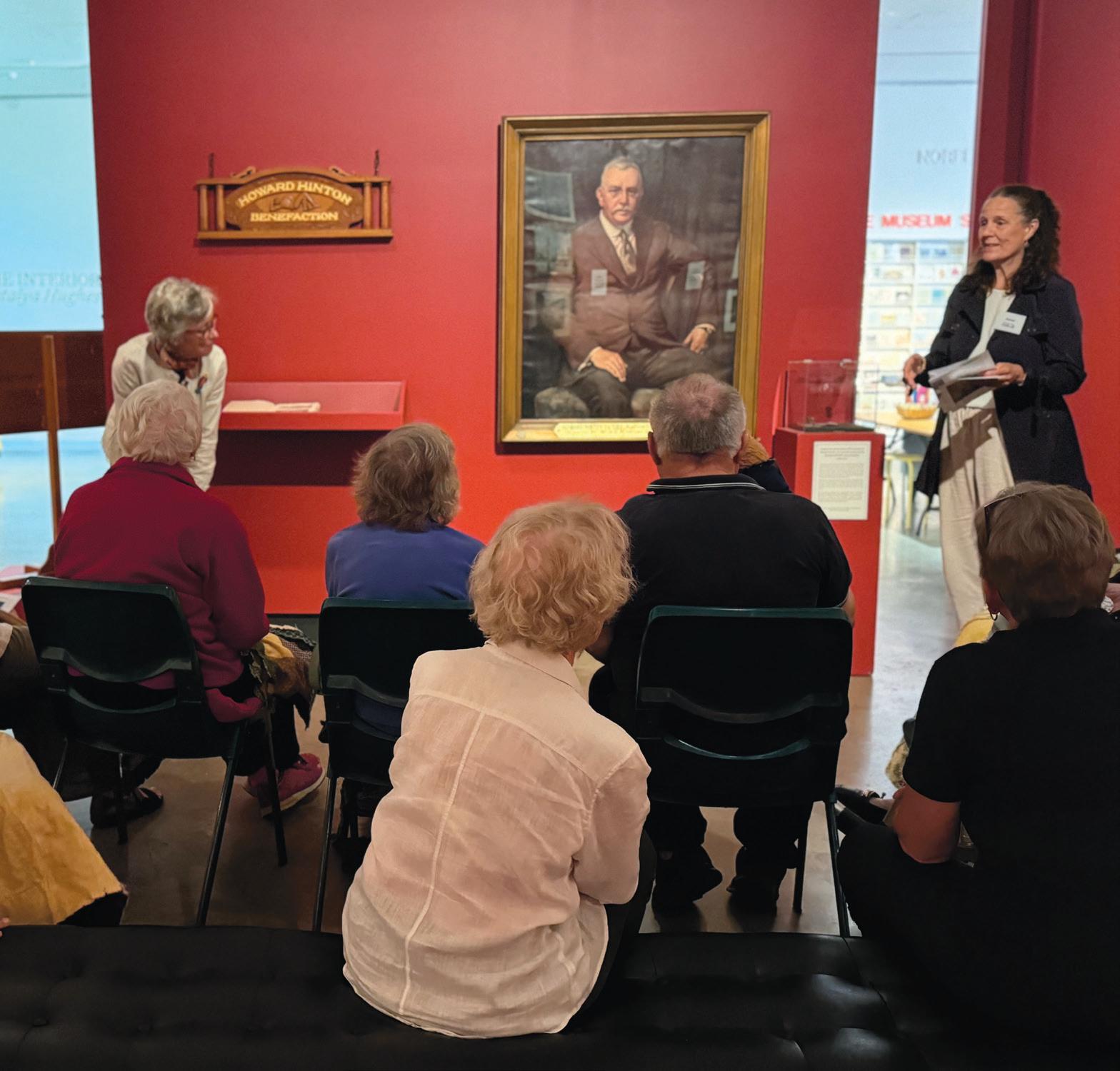

“The program’s aim is to provide a stimulus for people living
At NERAM, the program sessions begin with a social morning tea to encourage everyone to feel welcome and comfortable. A rainbow of handknitted and quilted rugs are tucked around knees and chocolate chip biscuits are passed around. As participant numbers have increased over time, the group now splits into two, with each moving separately through the gallery.
One of the aged care workers accompanying the residents says she sees their moods lift in anticipation of the time spent at the gallery, with many inspired to get dressed in their Sunday best.
Lucy Wall, NERAM’s Education Officer at the time, introduces her group to the artwork Autumn Morning, Kurrajong painted in 1942. For some, it’s the year they were born.
“What is special here is how light has been captured,” Lucy says. “It’s a yellowy, buttery light that is very different to European light.” One of the participants, a Dutch lady in her nineties nods emphatically and comments on the mistiness of the image. Lucy agrees. “It looks a bit foggy, doesn’t it? But the fog will lift,” she smiles.
Lucy’s group moves on to the ‘Around the World in 80 Artworks’ exhibition which provides them with a virtual holiday through the works of Australian artists. Lucy says, “Come on, let’s go to Fiji, lovely and warm!” She tucks one of the resident’s arms in hers as they move with their rugs and walkers to sit in front of a glorious painting of a Fijian dancer.
Another participant in his seventies enjoys the program greatly, seeing the 1000 Hinton paintings as old friends. He used to volunteer hanging paintings for NERAM. He says happily, “I’ve been to Fiji. I should bring in some photos next week!”
“You should!” says Jill, who began volunteering a year ago. Her mother had lived with dementia, and Jill believes an art and dementia program like NERAM’s could have made a real difference for her mum.
Reconnecting with cherished memories and acknowledging past lives well lived can help provide people living with dementia the dignity and respect they deserve.
Rose swings around to the next painting; Hans Heysen’s Murray River Cliffs (1916).
“How do you think he’s gone with this one?” she asks one of the participants.
“It’s winter,” he says, his eyes roving over the red cliffs, blue river and cows grazing in the foreground.
“Maybe, there are no leaves on these trees. Could it be near Echuca?” Rose prompts, scanning his face for answers. He nods and relays a story of his family passing through when he was a boy. Other participants chime in with memories of road trips.

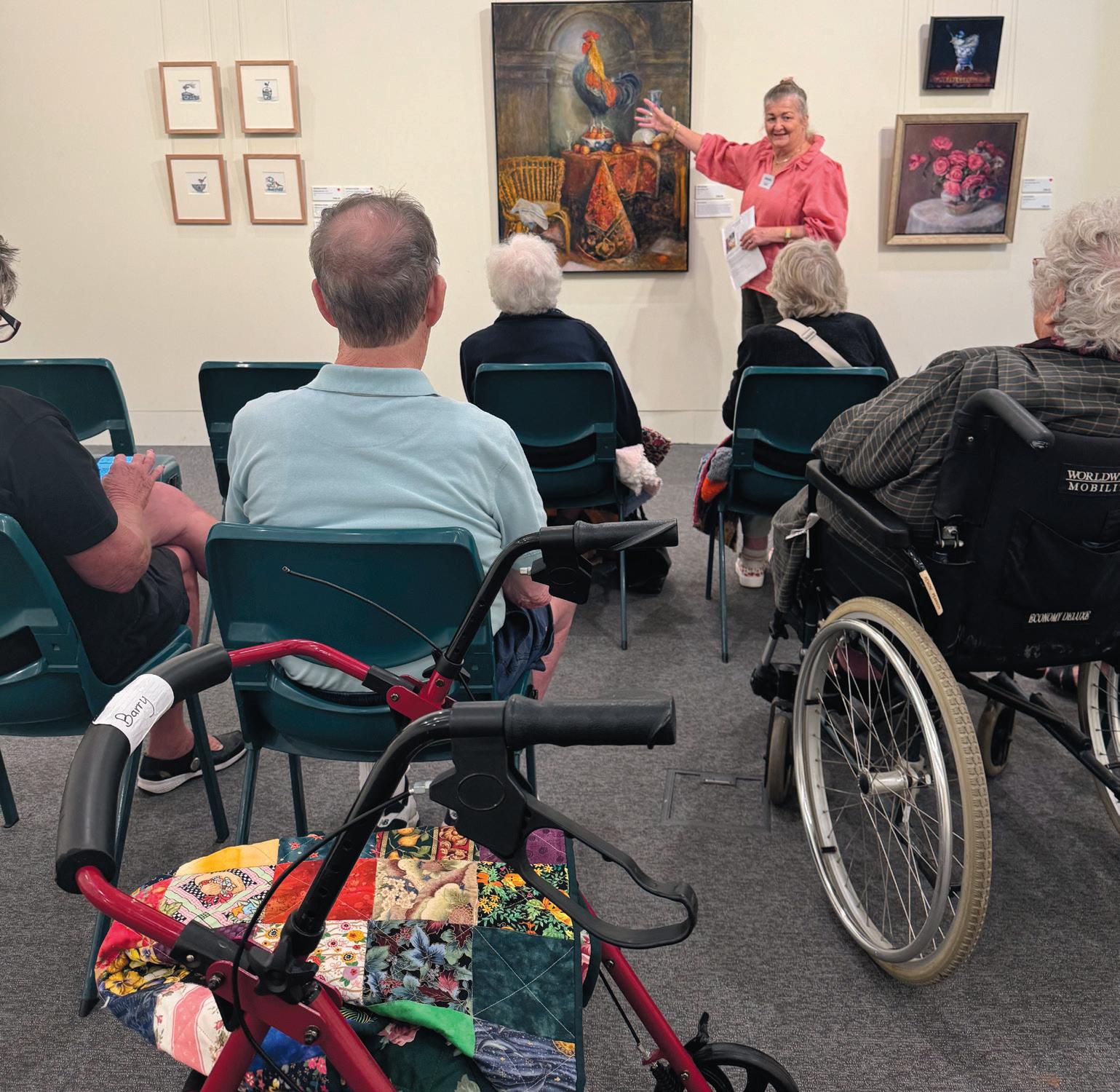
with dementia, activating sensory and emotional responses.”
“Look at the birds taking off,” Rose says as she points out a cloud of white cockatoos in the painting. “If you had a choice, which painting would you put on your wall?”
Another resident speaks up, rattling her beads for attention. “My partner was from the country and I’m from Brisbane, so the country one for him, city for me!” Her enthusiasm is met with cheers from the group.
As the hour session draws to an end, Rose tells me that they’d planned to look at a few more paintings. “But in a way, less is more as there are natural pauses between the artworks and the participants tire after an hour.”
On the way out, the group is lingering over a giant canvas of an abstract iceberg in Antarctica.
“I don’t think it’s finished!” says one lady.
“No, look, it’s a whole person, the whole iceberg is a person! It’s about to melt!” says a fellow participant, drawing her closer to the artwork for a proper look.
The volunteer bus driver is there to collect the group so they’re back in time for lunch. Rachael Parsons, the Director of NERAM, comes out to see them off. NERAM values lifelong learning and education, and Rachael believes the ‘Remembering with Art’ program is a wonderful way for them to live this commitment. “It’s an incredibly meaningful opportunity to engage with the artworks and for participants to become part of the broader NERAM family.”
As the residents get settled on the bus, they are passed a memento of their visit.
“It doesn’t just end here,” says Rose. “We give them pictures of the artwork to show the people who couldn’t come today. Some residents have folders where they keep these reproductions so they can later reminisce on what they’ve seen.
“They may not recall much tomorrow, so it’s more of an ‘enjoy the moment’ situation,” adds Rose. “The program’s aim is to provide a stimulus for people living with dementia, activating sensory and emotional responses, encouraging communication and engagement. We celebrate what the individual can still do, and as Adriane says: ‘The dots are still being joined, it’s just that they’re going around a longer pathway.’”
Today, in the post-session debrief over coffee, volunteers work out a future date for a practical artmaking session with the participants.
“Do you remember when we painted the dead fish?” laughs Aileen.
“Yes, but I say next time we make a collage,” says Lucy practically. “Only dry medium, no wet paints – good for motor skills.”
Adriane Boag says that working with dementia patients is a two-way street. “I learn so much from them on the value of life.” *
A CURATED GLIMPSE INTO THE ART WORLD WITH TAMWORTH REGIONAL GALLERY, WHERE ART IS FOR EVERYONE.
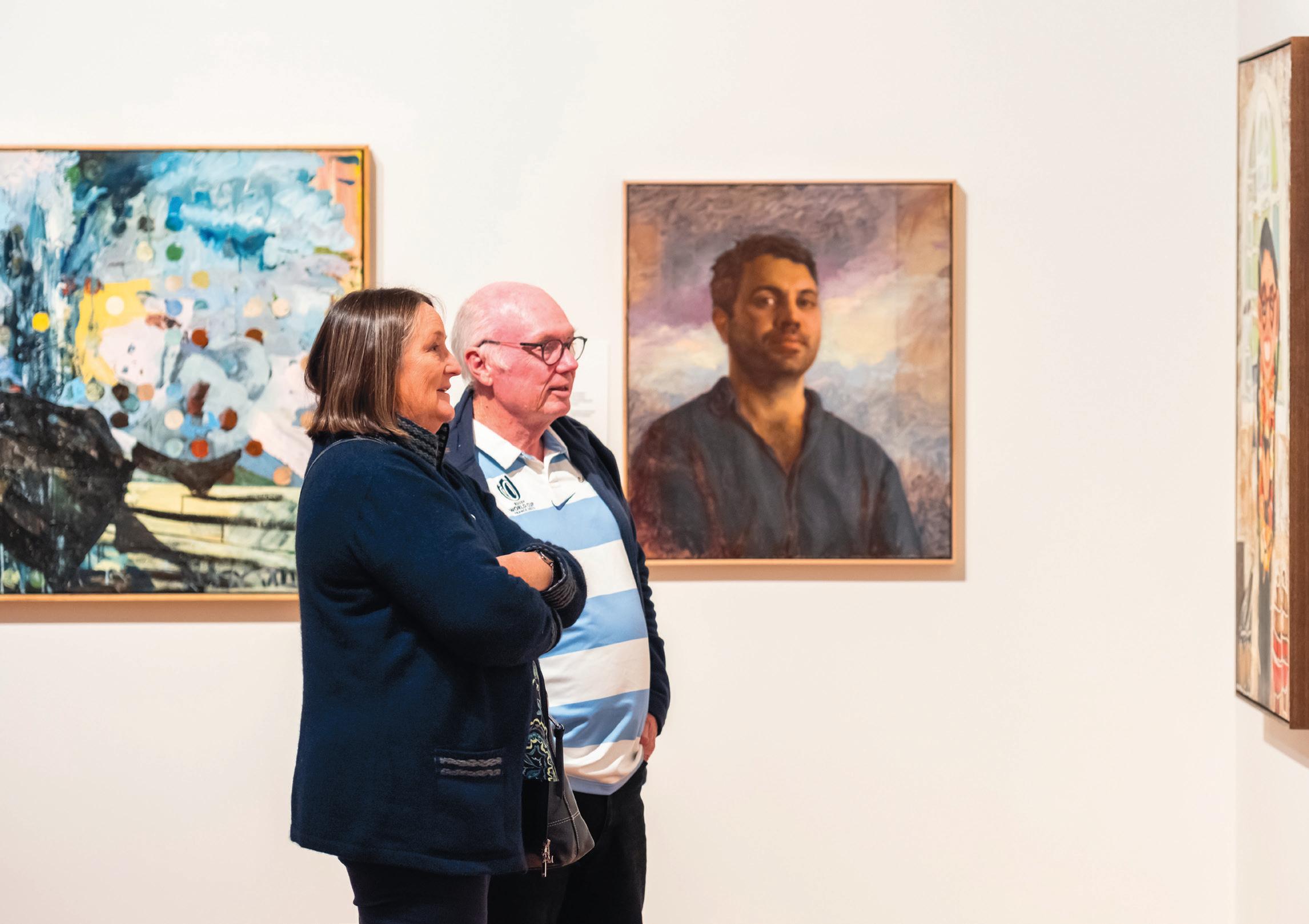
Found in the CBD along Peel Street, the Tamworth Regional Gallery features artistic excellence with new and engaging exhibitions all year round. The Gallery itself has over a century of rich history, having been founded in 1919, and continues to be a haven for art lovers and cultural enthusiasts in the region and beyond.
Each year at the Tamworth Regional Gallery, there is a rotating program of touring exhibitions with national significance and exhibitions showcasing regional artists. Throughout 2025, visitors can expect to see many exhibitions, including the likes of Overhead and Underneath, which will exhibit the works of 24 regional NSW artists; Unearthed, which will feature during the Australian Heritage Festival and showcase the region’s natural, built and cultural heritage; Bush Lines, a partnership exhibition with the Art Gallery of New South Wales showing works focusing on themes of connectedness, and the National Photographic Portrait Prize 2025, providing a powerful visual record of the year.

For more information about what’s on, visit the Gallery’s website.
466 Peel Street, Tamworth tamworthregionalgallery.com.au @tamworthregionalgallery
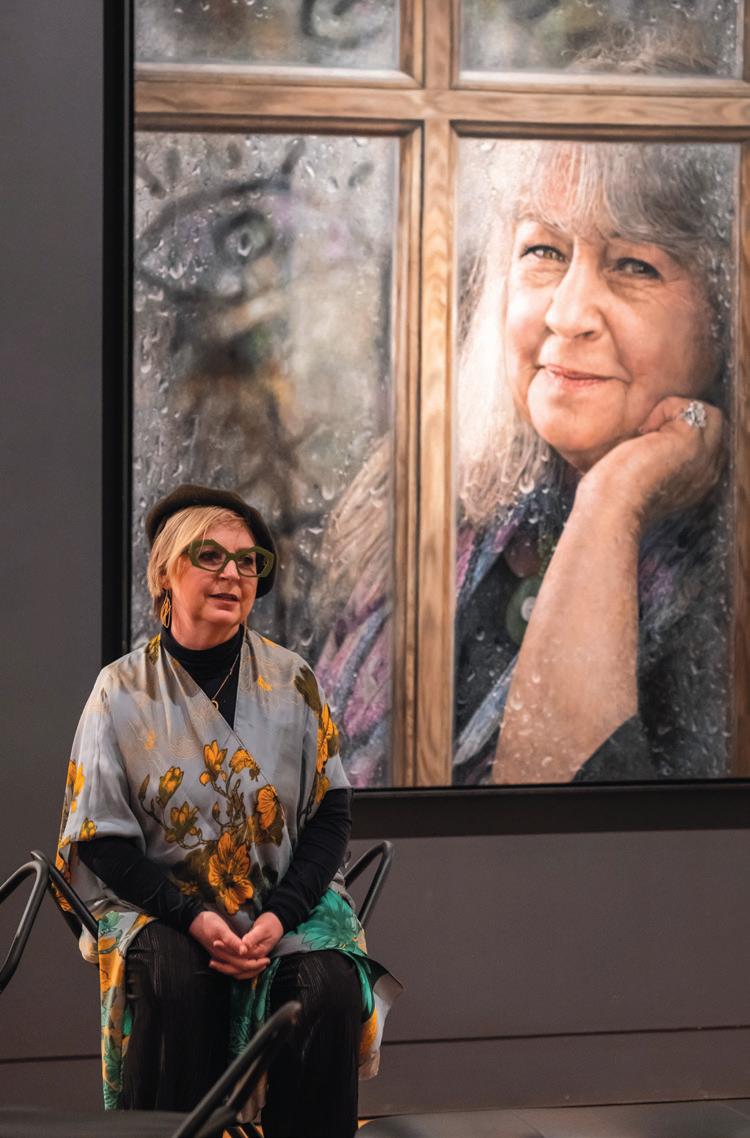
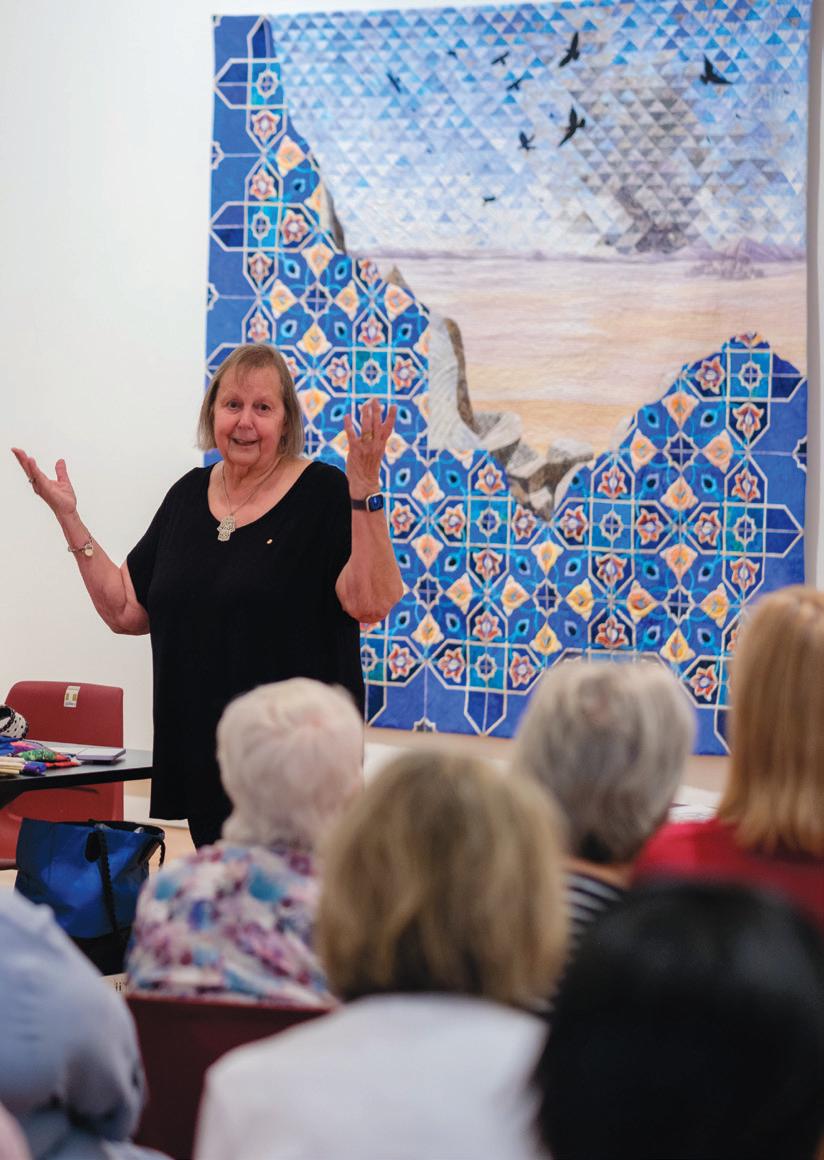
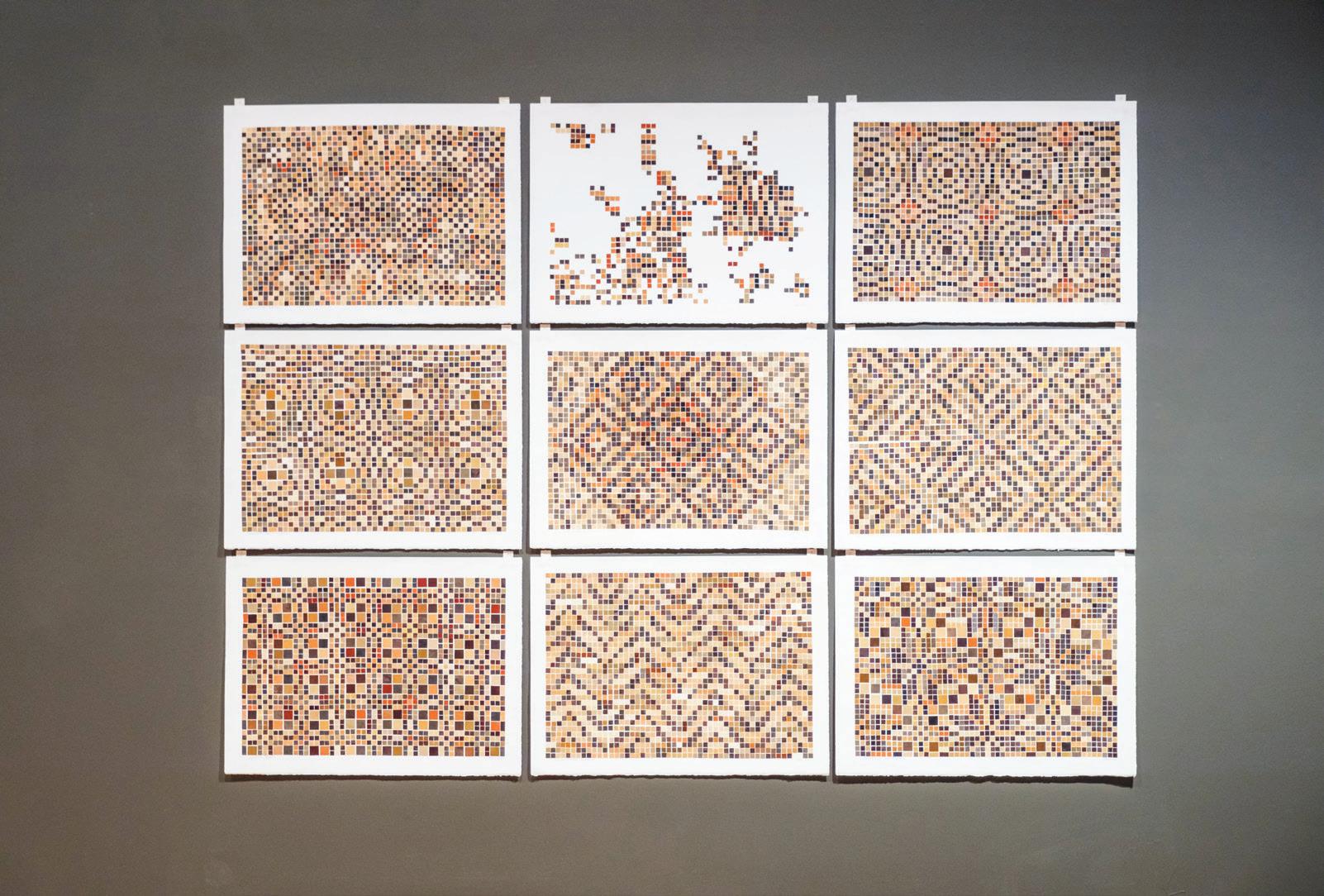
Furthermore, earlier this year, the Gallery opened expressions of interest for the 6th Tamworth Textile Triennial. Blake Griffiths has been announced as the curator for this exhibition, which is set to tour nationally from late 2026.
Tamworth Regional Gallery Director Bridget Guthrie says there are new exhibitions every month for visitors to enjoy for free. “We also host regular workshops and events to encourage people to learn and engage in the diversity of exhibitions and with artworks from our permanent collection.”
The Gallery offers a dynamic array of lectures, artist talks, events, workshops and public programs designed to engage, educate and inspire others. During major festivals throughout the year, the space has small stages erected for artists to play live music among the artworks.
Accessibility is a priority, with on-site parking and wheelchair access making it an inclusive space for all visitors. Visitors can also take advantage of free guided tours and browse the gallery shop which features unique gifts and art-related merchandise.” *

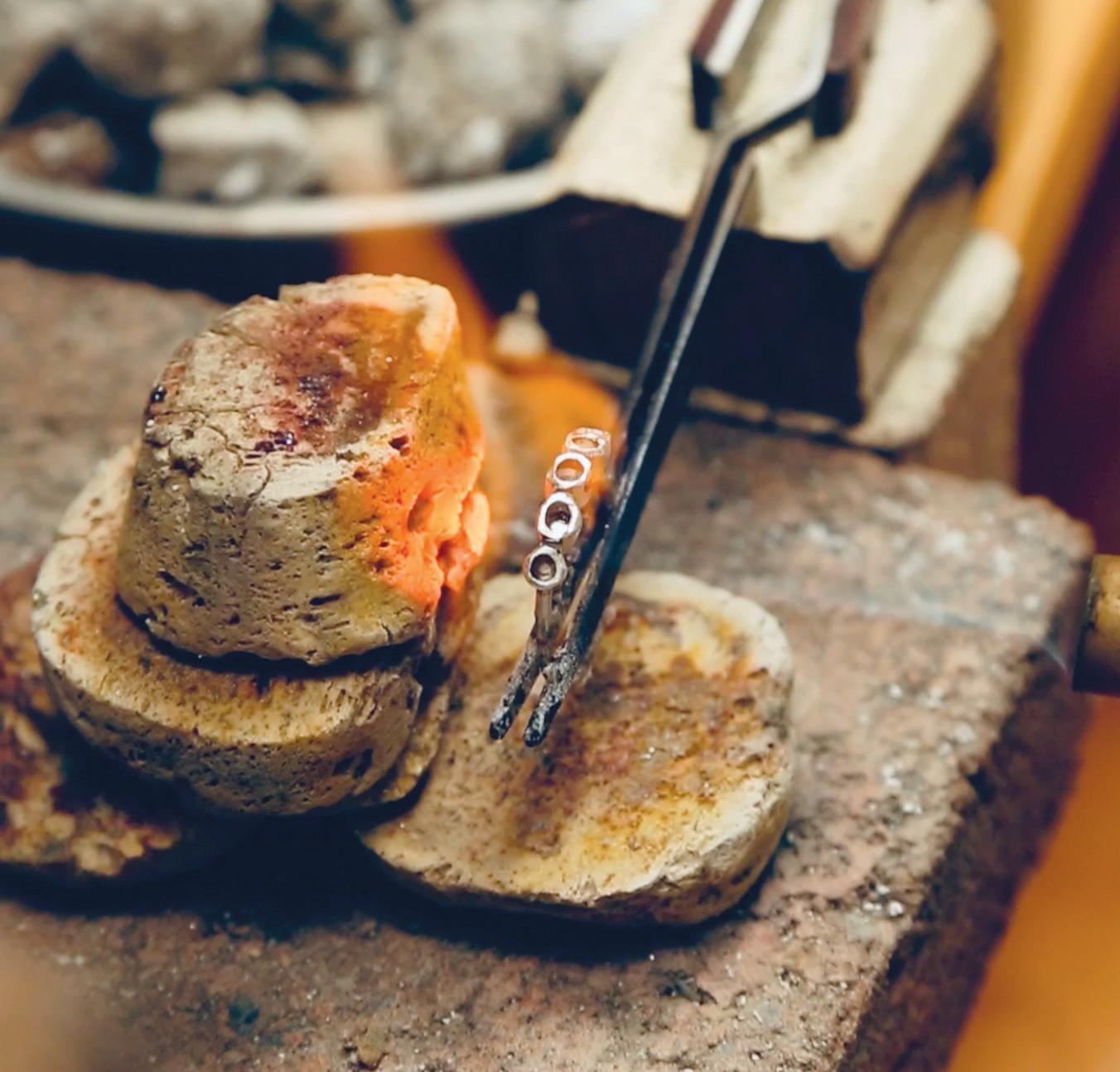

Ashleigh Kennedy meets her gems in the raw – drawing them from the earth before carefully cutting, polishing and designing her one-of-a-kind jewellery pieces for her brand, The Fossick. It takes time, dedication, and a passion for the craft – something Ashleigh has in spades.
WORDS Philipa Tlaskal
PHOTOGRAPHY Supplied by Ashleigh Kennedy
People send Ashleigh Kennedy rocks in the mail.
The delicate, Botticelli beauty smiles enigmatically, “A fossicker from Victoria sent me some peridot recently. People know it’s my thing,” she says. “Or they will send me stones they’ve found themselves for me to craft into jewellery.”
Ashleigh was the kid who would sell rocks she found outside her house. “A nice lady who lived down the street would buy them from me sometimes.”
As a jeweller and lapidary, that is, someone who cuts and polishes rocks, Ashleigh conceived The Fossick Jewellery brand when she moved from Brisbane to Sicily in 2014.
An 1850s gold rush word, a fossick is someone who turned over old gold diggings, but now refers to anyone who goes in search of both gemstones and gold, or even seashells on a beach. In Ashleigh’s own words; “You can fossick literally
anywhere – there are minerals under our feet wherever we go, in towns, backyards, manmade waterways and out bush”.
Ashleigh has now settled on the coastal side of Ballina. She works full-time on her business but unlike most jewellers, she spends weeks a year fossicking her own local stones.
“I was so excited to return to Australia to work with stunning Australian gems again in all their rich colours,” she says. “The volcanic stones I learnt to cut, shape and polish in Italy were all beautiful black obsidian and creamy marble – they are still close to my heart, as is Sicily.”
She continues, “These last two years back in Australia, I have been cutting and polishing some beautiful Queensland boulder opal from Yowah. Opal is challenging to work with and this difficulty is something I enjoy. It has such an array of colours and patterns in pastel tones that I love, especially for engagement rings.” ››
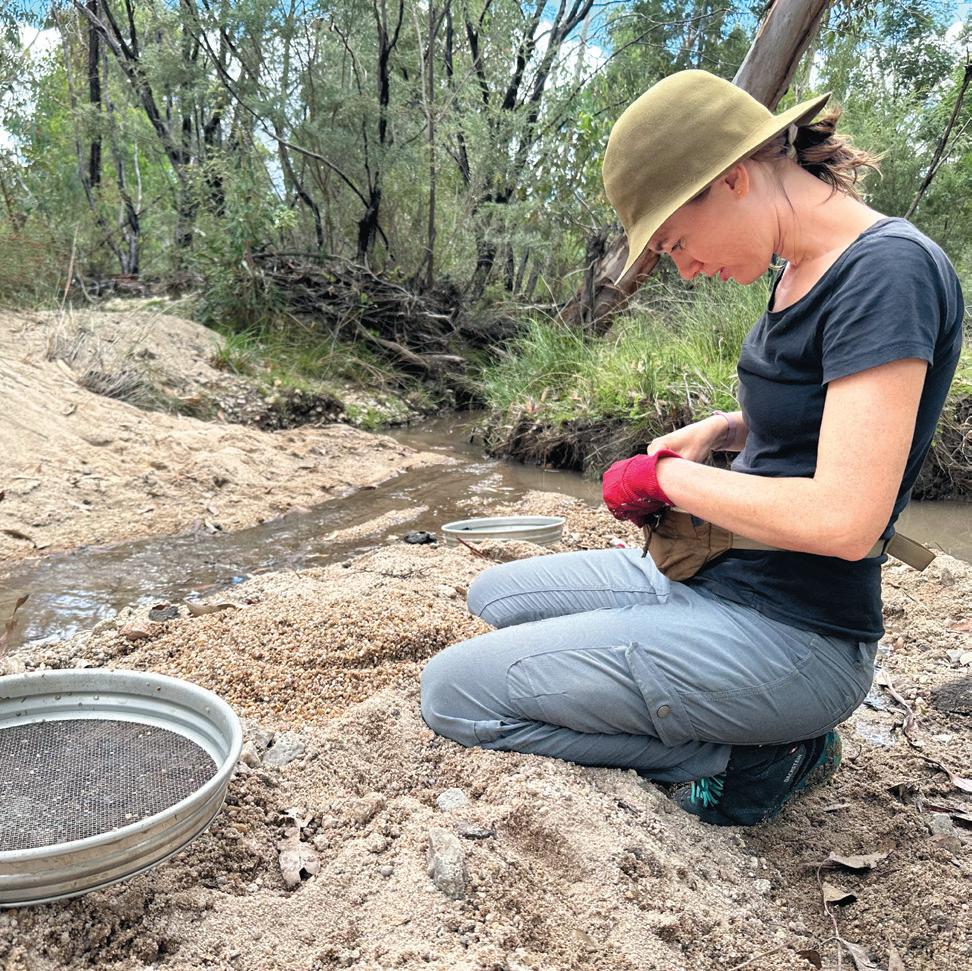

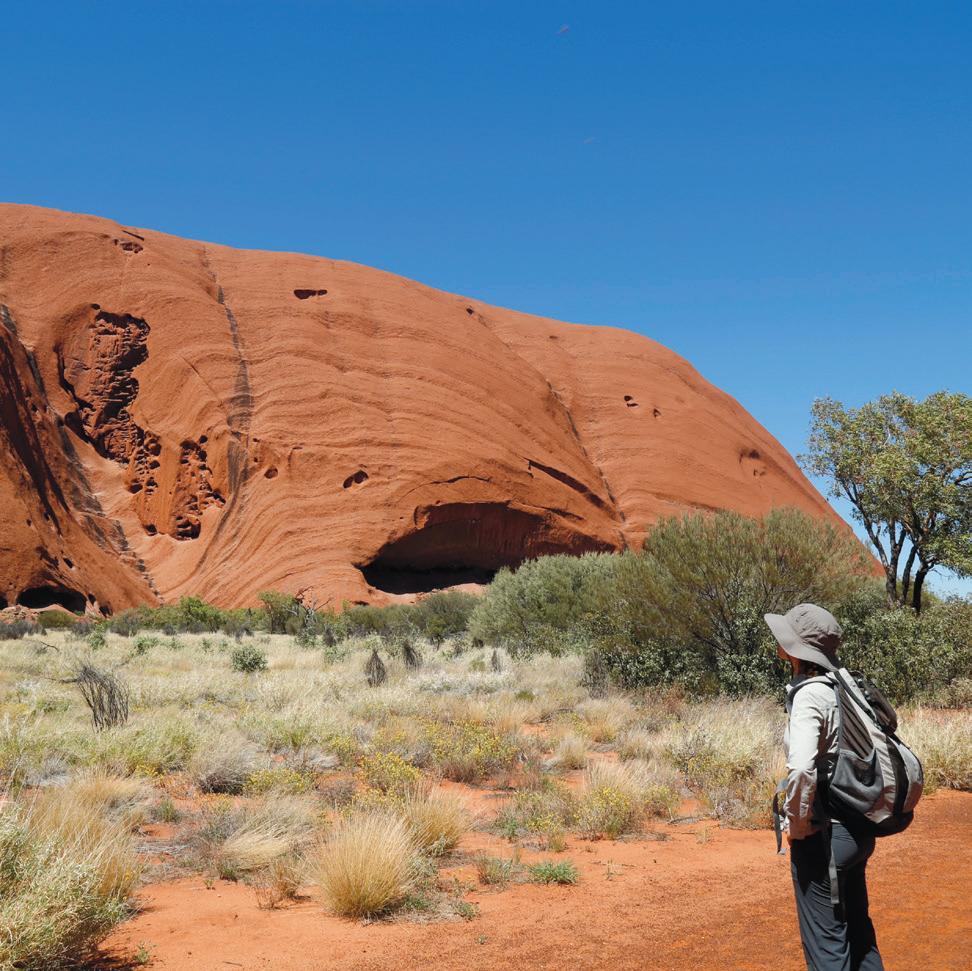
The Fossick Jewellery is now stocked in a range of high-end boutiques in resorts such as Voyages Ayers Rock Resort, Yulara in Uluru and in regional art galleries in the New England (NERAM), Maitland, Hervey Bay and the Lennox Arts Collective.
What makes Ashleigh’s work so special is her passion for finding the perfect stone in the wild. “The possibility of finding one just a little bigger, a little clearer, a little more colourful is exciting. It’s a balance of luck, patience, research and skill,” she says about her fossicking adventures.
Last year, she went on an 11-day solo trip in April to Torrington, near Tenterfield, NSW.
“I was on the hunt for emeralds and topaz and despite the drive to go deeper and deeper into the bush, I made sure I didn’t fossick too far from the track. You don’t want to get lost in the bush.” Ashleigh usually goes with her partner Josh, who also films and edits their popular ‘Fossicking Adventures’ YouTube videos as they slosh through creeks in the stunning wilderness.
“It is so empowering to go on a solo trip into the wilderness and come out with treasure,” she adds with a smile.
Ashleigh and Josh look forward to undertaking a major fossicking trip two or three times a year to a new location. They prefer heading out west to the Granite Belt in the New England region, where volcanic activity makes for a great variety of stones waiting to be found.
“Before we even pack our fossicking tools – picks, shovels and sieves – we do lots of different research. It’s a combination of searching online forums and fossicking groups, referring to old fossicking books and geological maps and sometimes friends give us hints before trying a new spot. When you don’t know your way around a new site, it can be unfruitful, so we still make day trips to our local agate fossicking creeks a little further north in the hinterland where the creeks are full of basalt boulders. We almost always find something to bring home.”
Ashleigh is also studying the art of faceting to build on her skill set as a gem cutter. While many gems are sent overseas to be cut, Ashleigh believes it’s still so important to make work by hand as an individual, even if it is time-consuming and requires a great deal of skill. ››

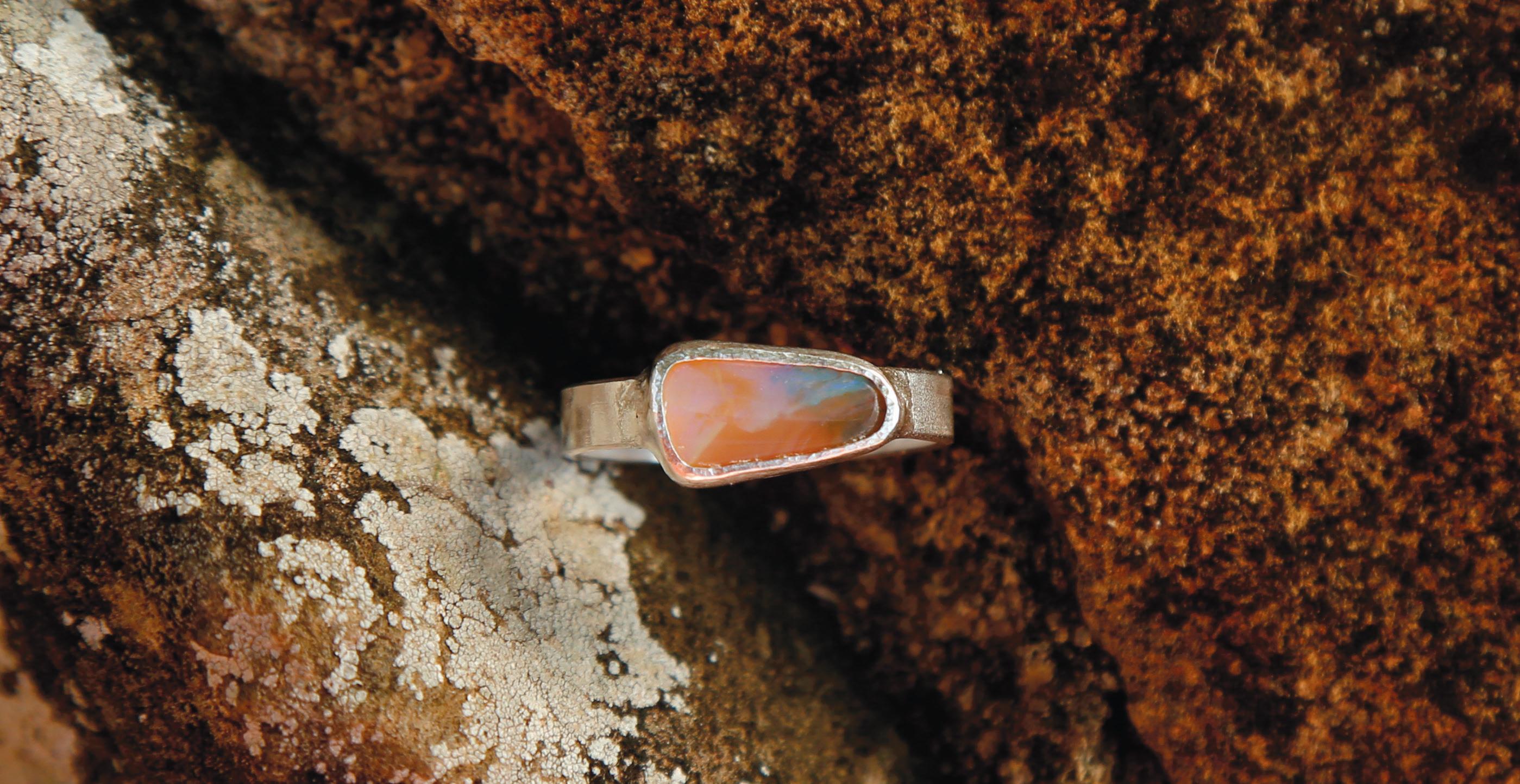
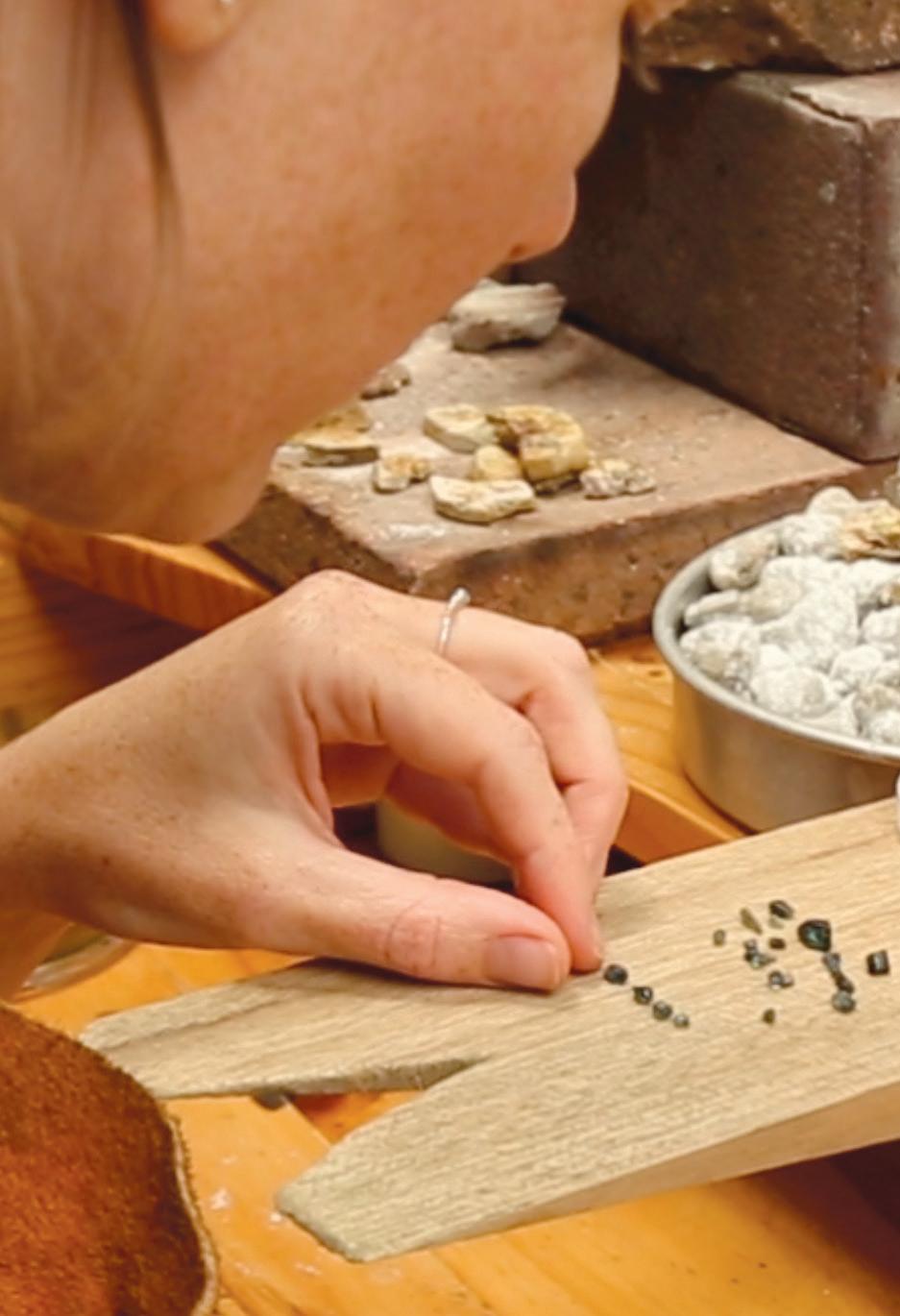
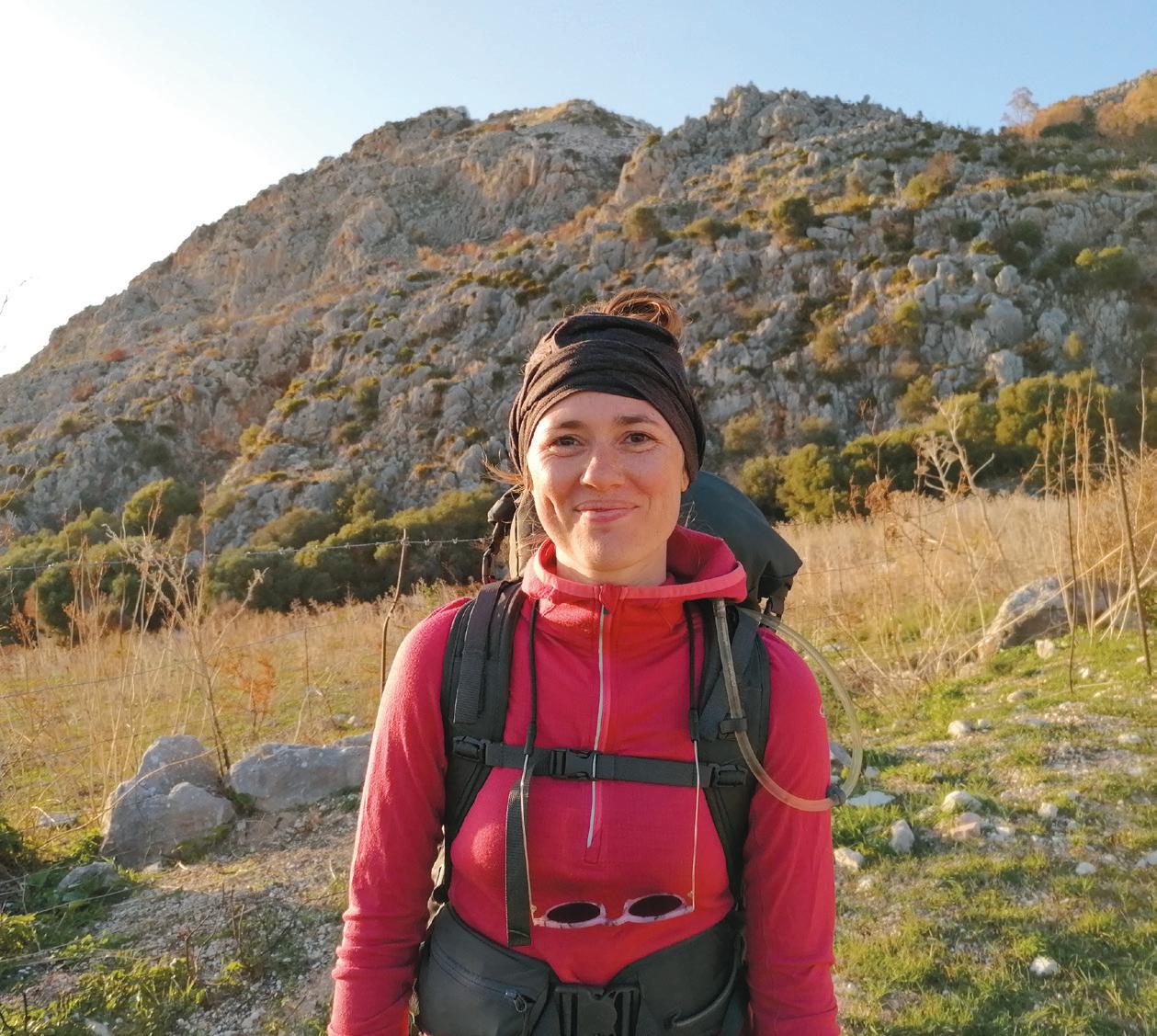
Ever since she was a child, Ashleigh had a sense of knowing that she would be an artist. She fulfilled her destiny by studying photographic art at the Queensland College of Art in Brisbane and at NIDA in Sydney where she learnt prop making for film and theatre. Her bold, silver-set jewellery has the sturdy resilience of items crafted for actors’ hands.
“I had two inspirational teachers and mentors – prop maker Todd Arthur and trained industrial designer and jeweller Marcelo Zavala-Baeza, who is still the head of props at NIDA,” she says.
“At NIDA we learnt how to work with every material, except rock. It is heavy and takes a long time to work, and I said to myself, ‘I want to know how to do that!’”
Ashleigh even makes her own tools in order to master the material. She recently made a silversmithing tool to help push the silver over the stone when setting it in a finished piece of jewellery. She plans to start teaching silversmithing and stone-setting workshops to share her love of stones at the workbench on an even deeper level with her customers.
During her nine years in Italy, Ashleigh lived the artist’s dream, spending her days in the mountains near a local marble quarry behind Scopello, a rough-hewn Mediterranean tuna fishing town in Sicily, population 100, swelling to 2000 in summer.
“While there, I would work on the jewellery for four to five hours in the morning, sleep in the middle of day, then go to sell at the art markets for five hours in the evening. I was there every single day for eight months a year, seven days a week. It was so crazy busy in summer with all the tourists who
came to see the ancient Tonnara di Scopello, Lo Zingaro Natural Reserve, the Torre di Scopello, and the town itself is an ancient historical icon which made it popular for weddings. But it would die right down in winter when the tourists left.”
Ashleigh enjoyed the Italian markets so much that she continues to get to know her customers in relaxed market settings in Mullumbimby, The Channon and Bangalow’s monthly markets. She finds the few markets she has done in Australia different in every possible way to the markets in Italy.
“In contrast, it is very interesting getting to know these more laidback communities from Kyogle to Yamba. Coming from Brisbane, I’ve never lived in the Northern Rivers and so appreciate their diversity.
“But ultimately, I’m an artist not a salesperson and I won’t try and make you want my work if you don’t connect with it.”
Staying true to the unique nature of each stone she shapes, Ashleigh intends to continue to develop artistic collections inspired creatively by the features of different stones. Her recent Reef collection reveals a delicate coral-like texture in the silver work to complement the reef scenes she sees in these stones.
Apart from designing jewellery fit for bush queens and their city cousins, she also plans to extend her own fossicking trips to Western Australia, the Northern Territory, and to the fabled town of Coober Pedy in South Australia for the renowned white opals.
But what will she do the rest of today?
Ashleigh answers with a happy shrug, “Polish rocks!” *
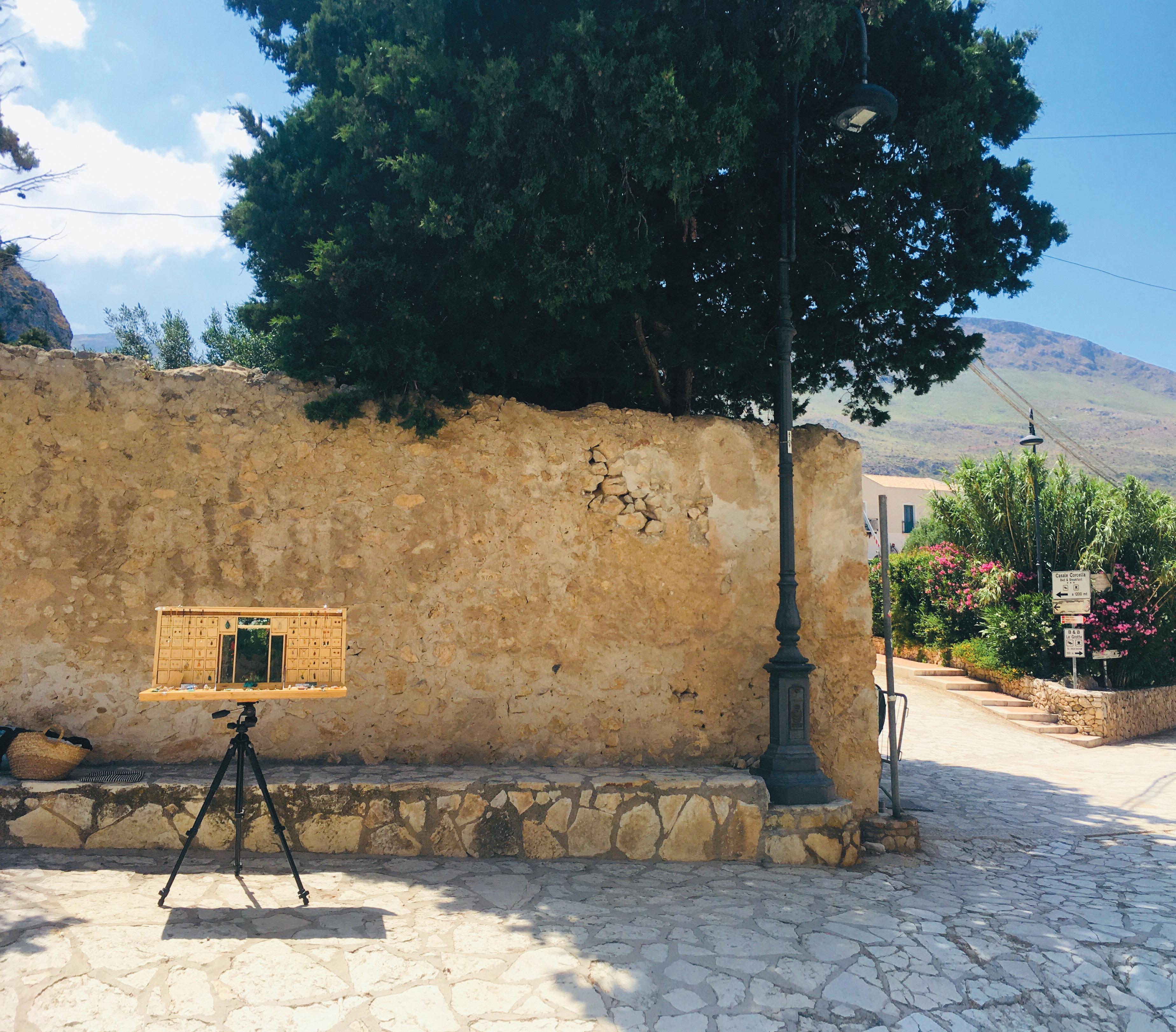
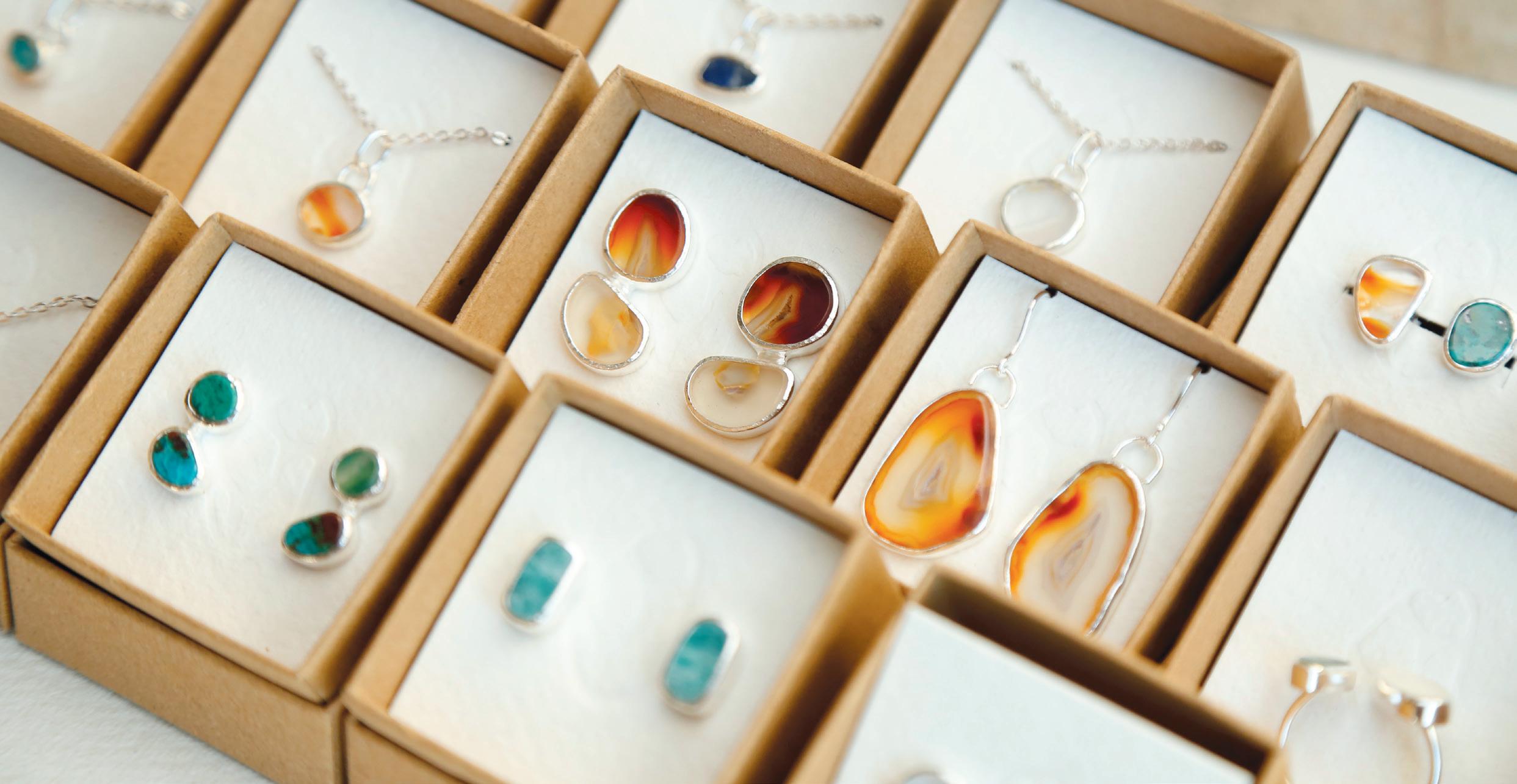
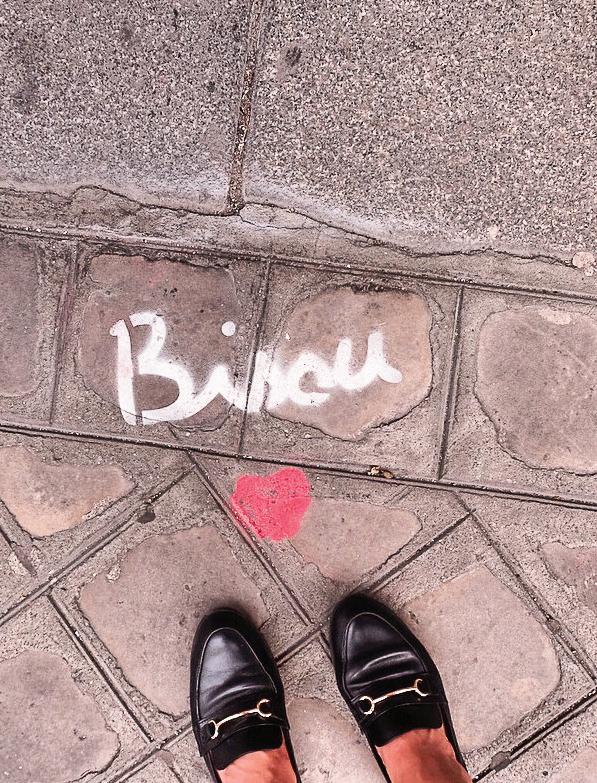
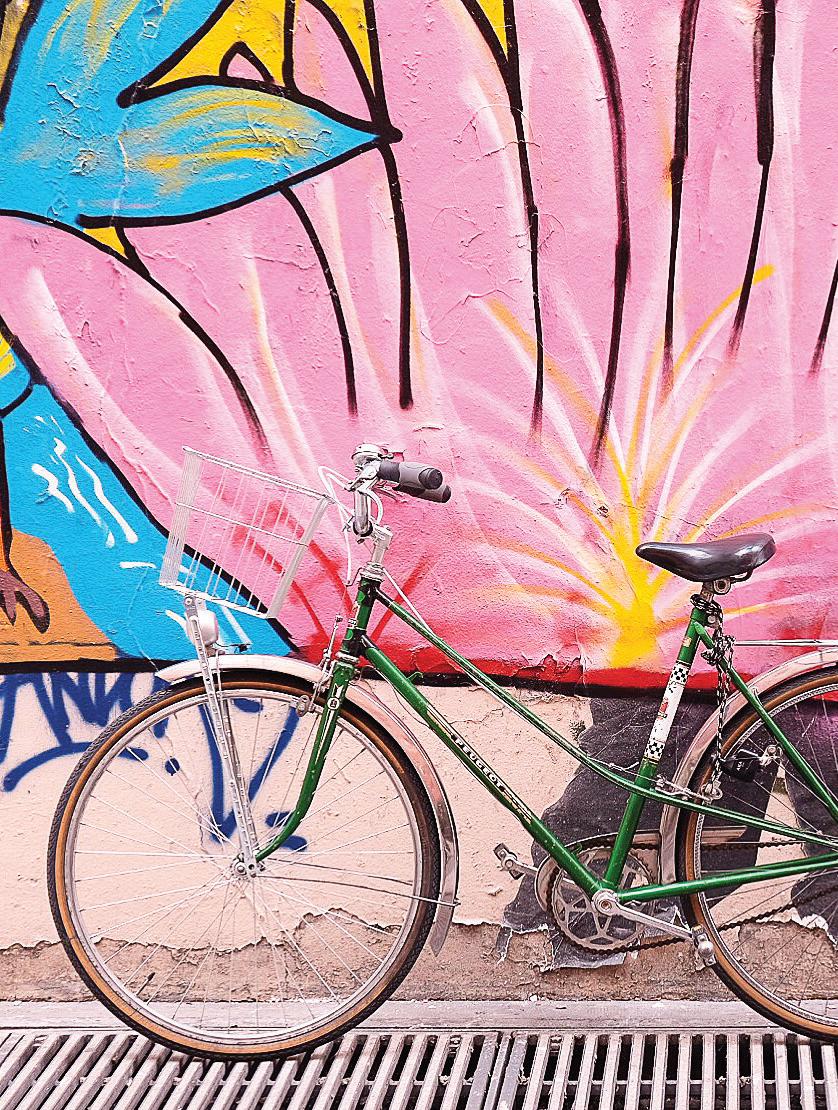
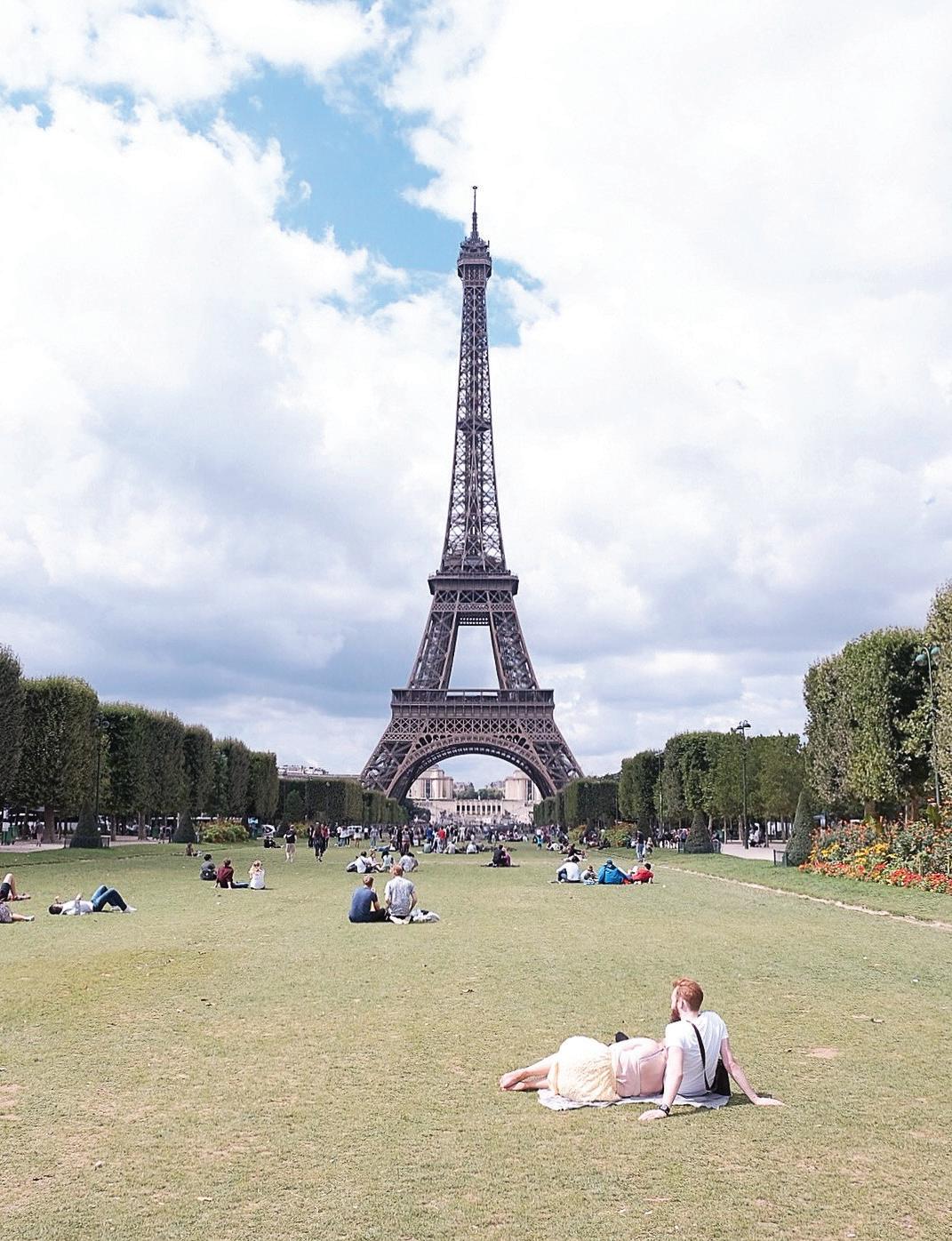
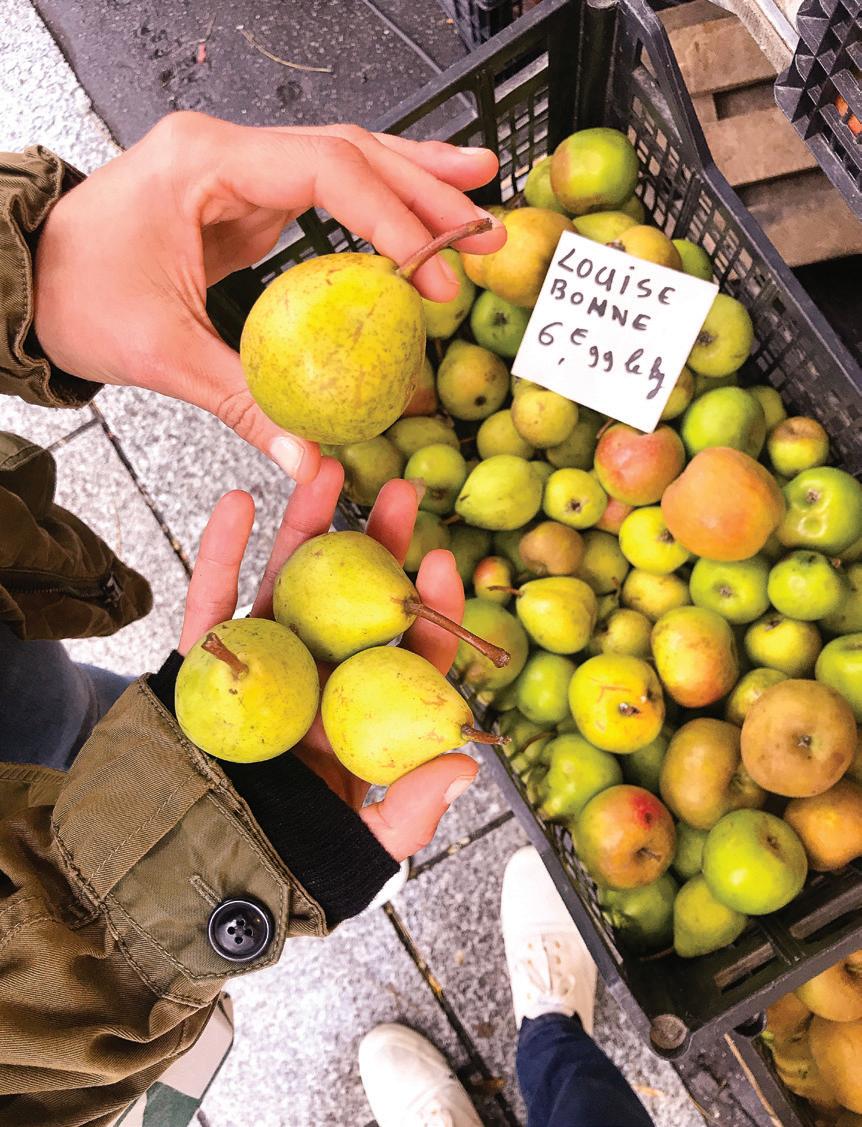
A CELEBRATION OF FOOD AS A STORYTELLER, CULTURAL PECULIARITIES, NOTICING THE UNNOTICED, NOSTALGIA AND LOVE.
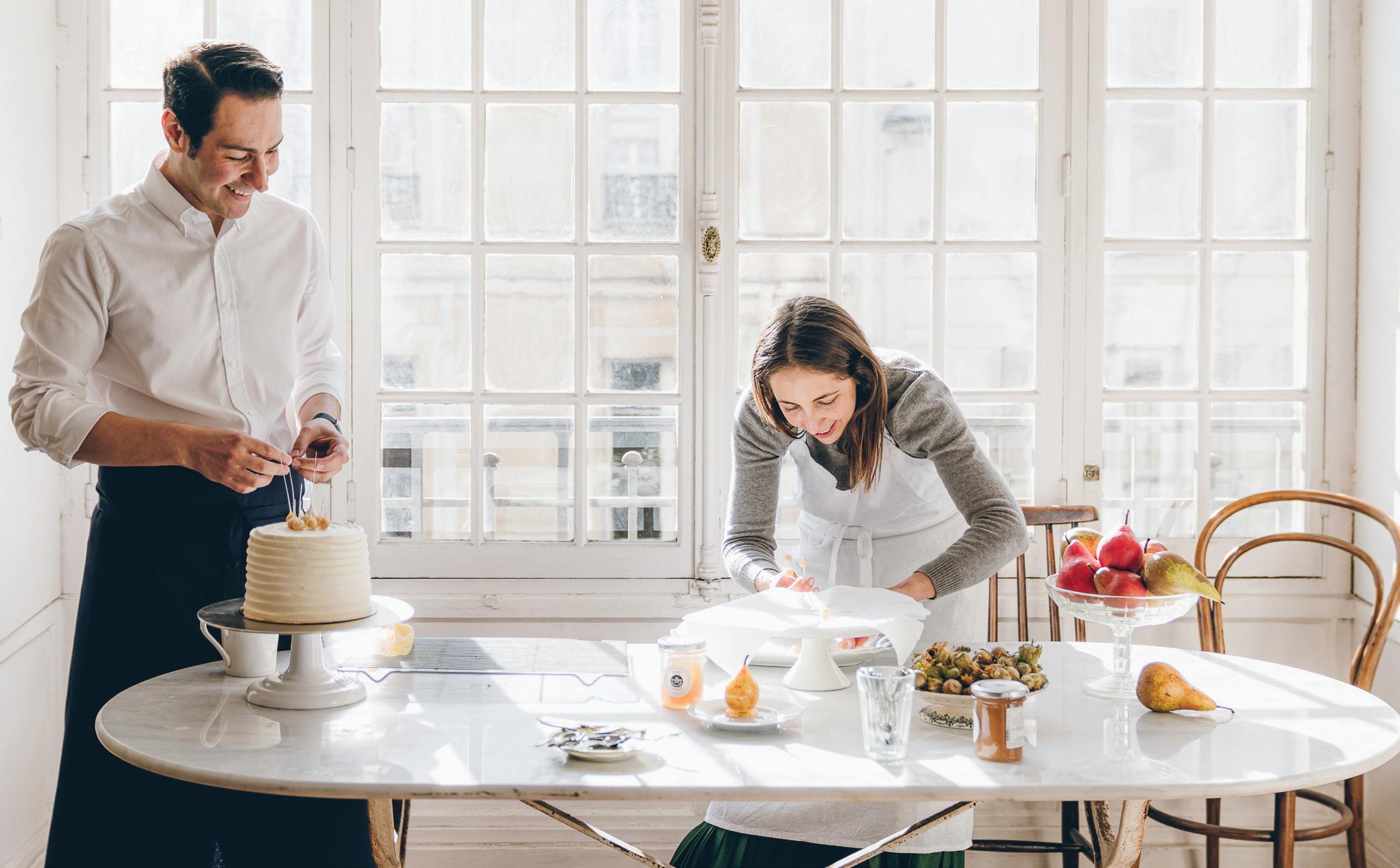
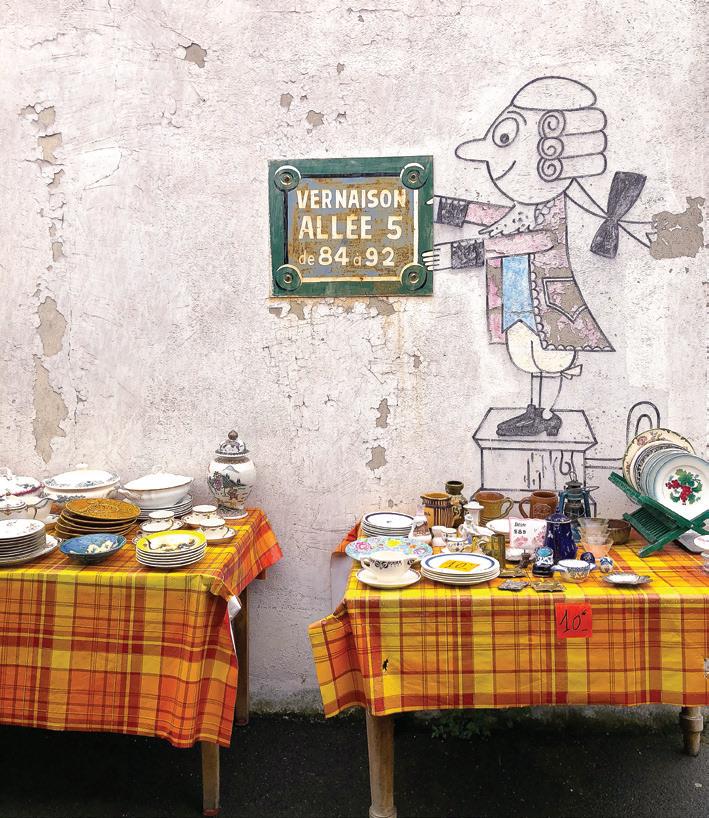

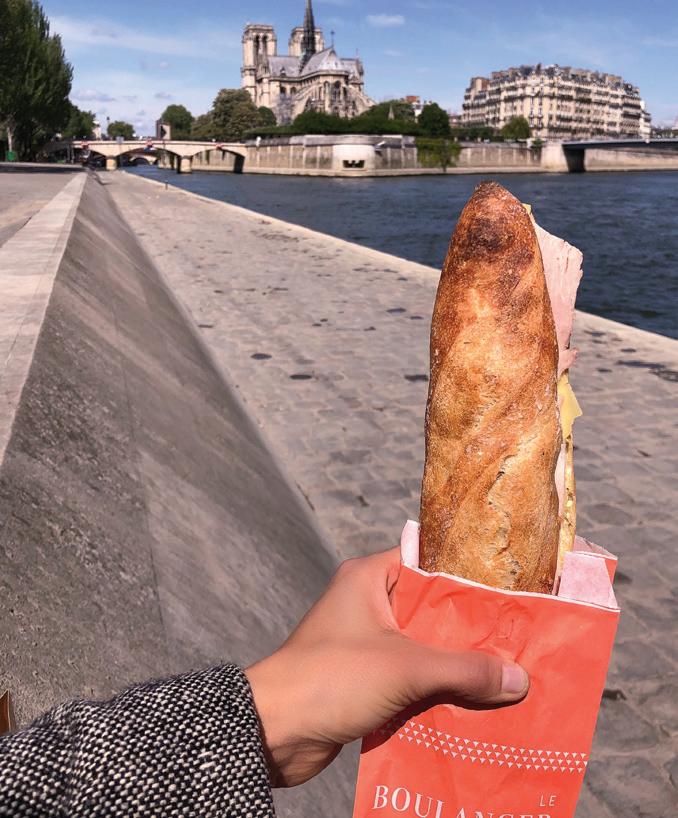
@adventuresofjen
You might have picked up by now that I’m all about aesthetics and telling stories through a visual medium. If it’s beautiful, challenging or amusing, I’m there. As for the story behind this column? It all began back in 2013, I was in Paris, spending my days working at a cafe, cake baking and styling, riding my bike and going to markets, eating all kinds of pastry – all the while capturing moments of nostalgia and urban landscapes, exploring cultural peculiarities and the unnoticed with my camera lens.
Along the way, I assigned myself a quest – to track down the best sandwich in all the land. After months walking the streets, I found it – fresh, white baguette, shaved ham, and slices of cheese perfectly layered on top of the other. It was everything I’d ever hoped it would be and more. The epitome of good between two layers of bread.
I hope you enjoy these snaps from my journey to celebrate the one, the only, Dream Sandwich *

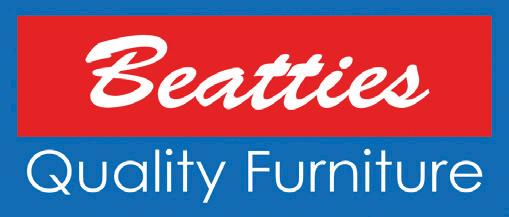
Armidale Regional Council armidaleregional.nsw.gov.au @armidaleregionalcouncil
Beatties Quality Furniture beattiesfurniture.com.au @beattiesqualityfurniture
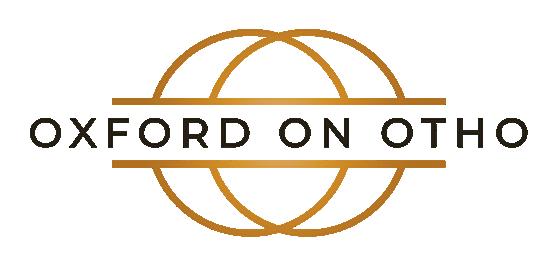
Oxford on Otho oxfordonotho.com.au @oxfordonotho
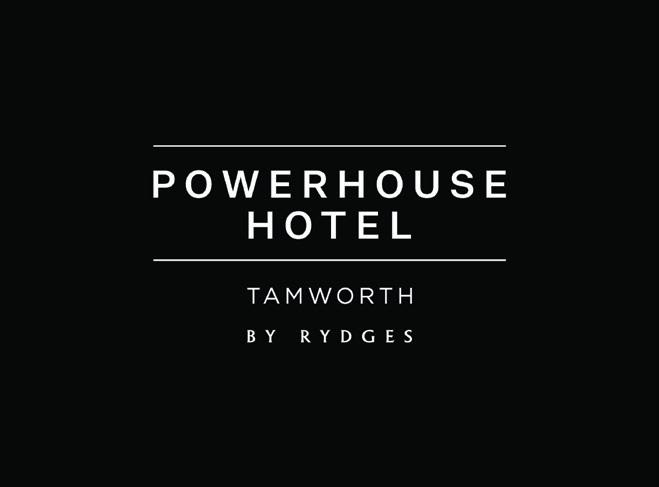
Powerhouse Hotel Tamworth by Rydges powerhousetamworth.com.au @powerhousetamworth


Walcha Council walchansw.com.au @walchansw @visitwalcha
Welcome Hospitality welcomehospitality.com.au
Central Hospitality Group thechgroup.com.au
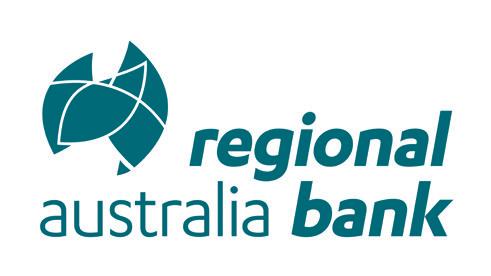
Regional Australia Bank regionalaustraliabank.com.au @regionalaustraliabank
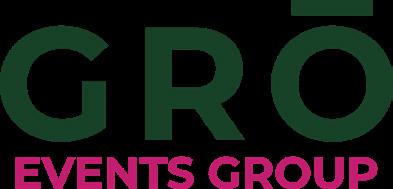
Gro Events Group groevents.com.au @groeventsgroup New

neram.com.au @neramuseum
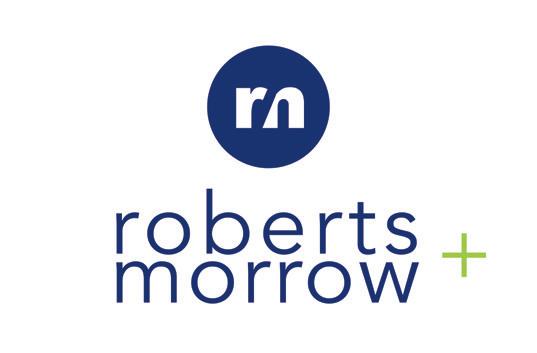
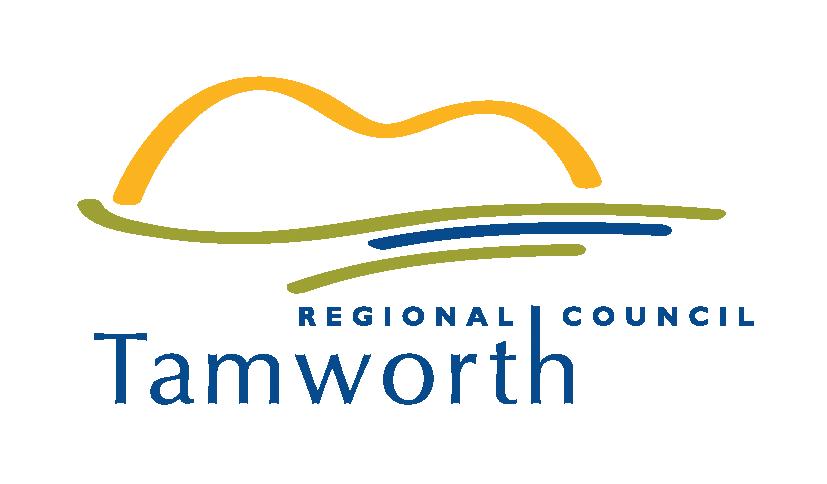
Roberts + Morrow rm.net.au @roberts_and_morrow Tamworth Regional Council tamworth.nsw.gov.au @tamworthregionalcouncil
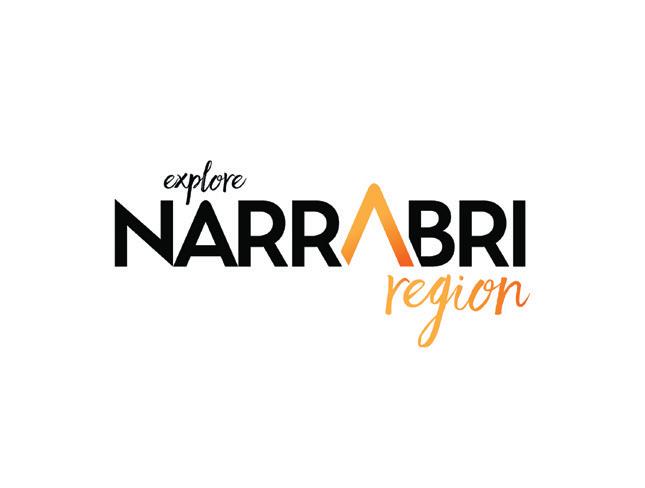
narrabri.nsw.gov.au
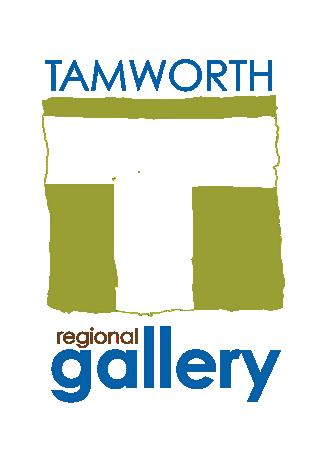
@tamworthregionalgallery
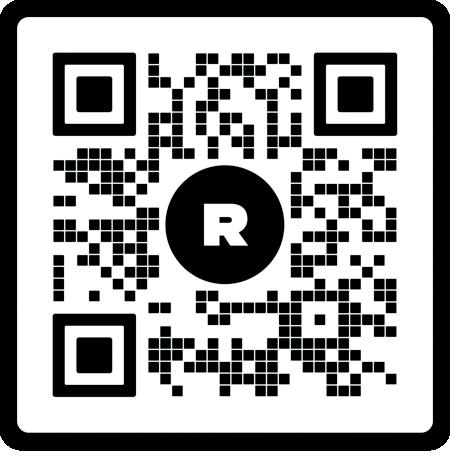

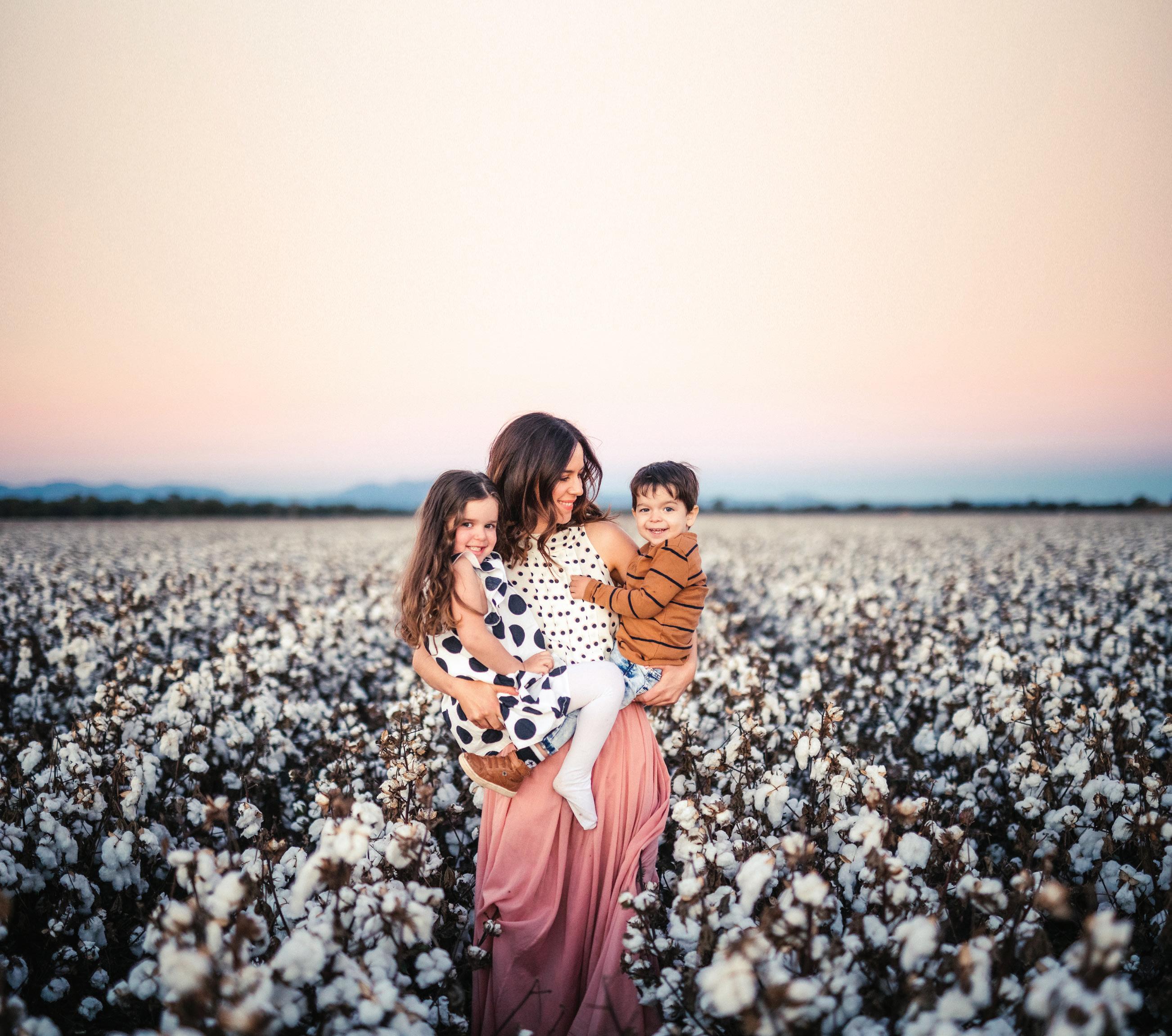
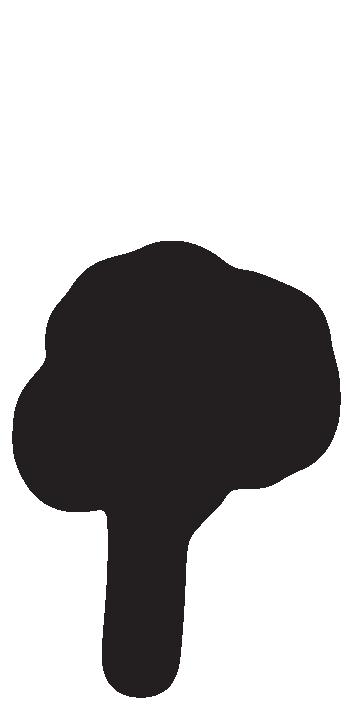

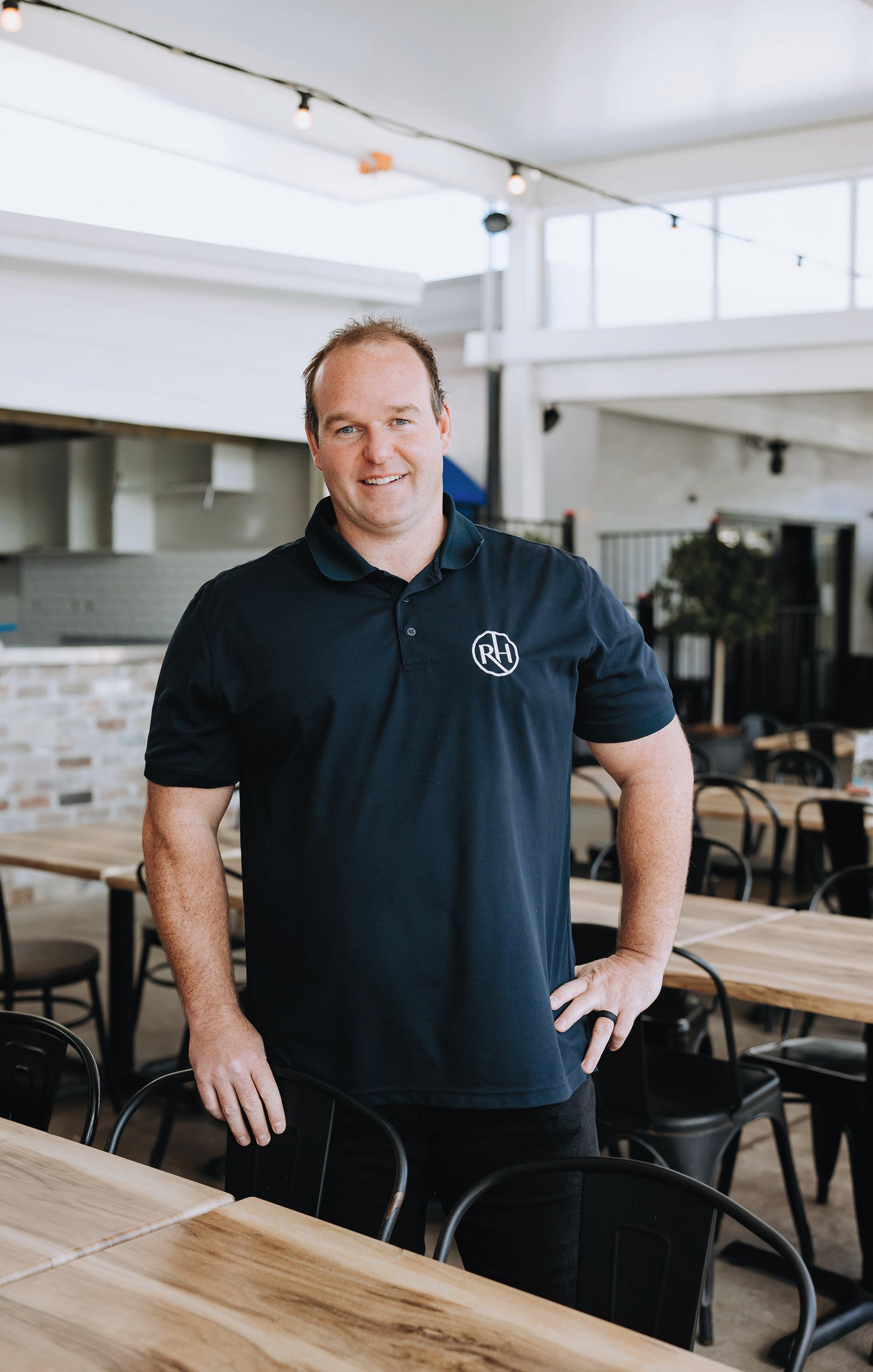
WITH JOSHUA LAUNDERS
@therailwayhotelgunnedah
PHOTOGRAPHY James Russell
Early in my career as a publican, I was confronted late one Friday night by two young blokes, all fired up and ready to roll onto the late-night venue. They were desperate for shots, begging me like I was the gatekeeper to the best night of their lives.
“Come on, mate, be cool, be cool –give us a shot.”
Now, I didn’t want to disappoint them, and obviously, my reputation for being “cool” was on the line. But house policy was house policy – no shots. So, being the accommodating type, I ducked around the back of the bar and grabbed a bottle of Claytons. If you’ve never had the pleasure, Claytons is a non-alcoholic cordial that tastes like booze but has the alcohol content of tap water.
I poured two generous shots into 7oz glasses, keeping the theatrics up. Then, to really sell it, I led them around the back in secrecy – because, you know, rules. They knocked them back, slammed their glasses down like seasoned pros, wiped their lips, and hit me with the classic, “Ooooh, that was rough.”
High fives were exchanged and then, in a moment of pure, undisputed brilliance, I slid my hand forward, palm up. Without hesitation, they slapped down a crisp $10 per shot, convinced they were getting top-shelf rocket fuel. I nodded solemnly, pocketed the cash, and watched them swagger out the door, absolutely certain they were ready to take on the night.
The next night, they strutted in, looking a little worse for wear. I smirked and asked, “How was your night, boys?”
“Oh, geez,” one groaned. “You did a number on us.”
I bet I did. *


